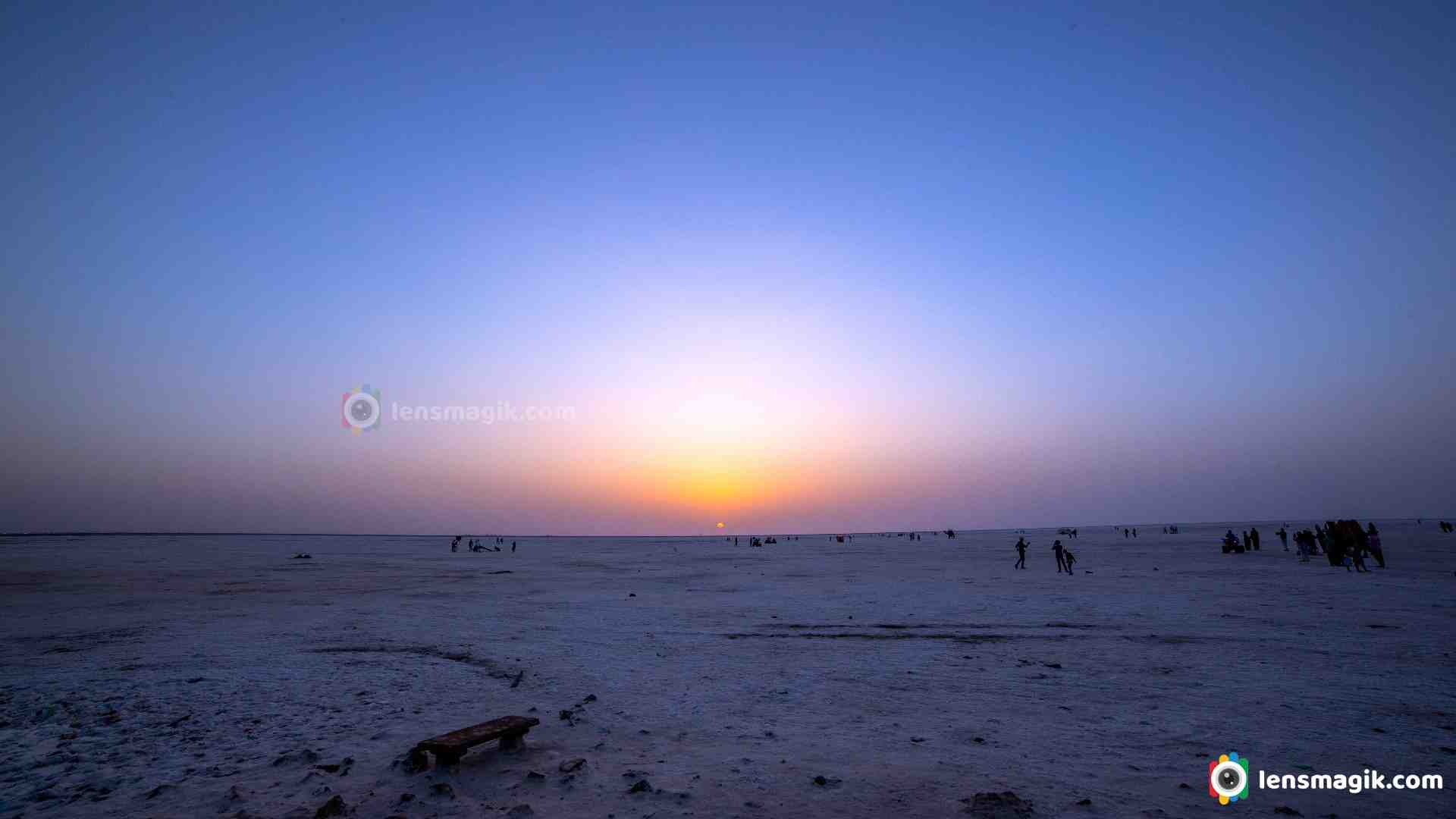
The White Desert of Kutch is also known as Great Rann of Kutch. It is a natural wonder that transforms into vast expanse of glistening white during dry season or winter season. Great Rann of Kutch is located in Gujarat near Dhordo in Kutch District. Kutch is the largest salt production area in India. Also a largest evaporation rate per year in India. In Monsoon the Arabian Sea flood rann with sea water. Area is full of water during monsoon season so you can only visit during winter season from December to February.
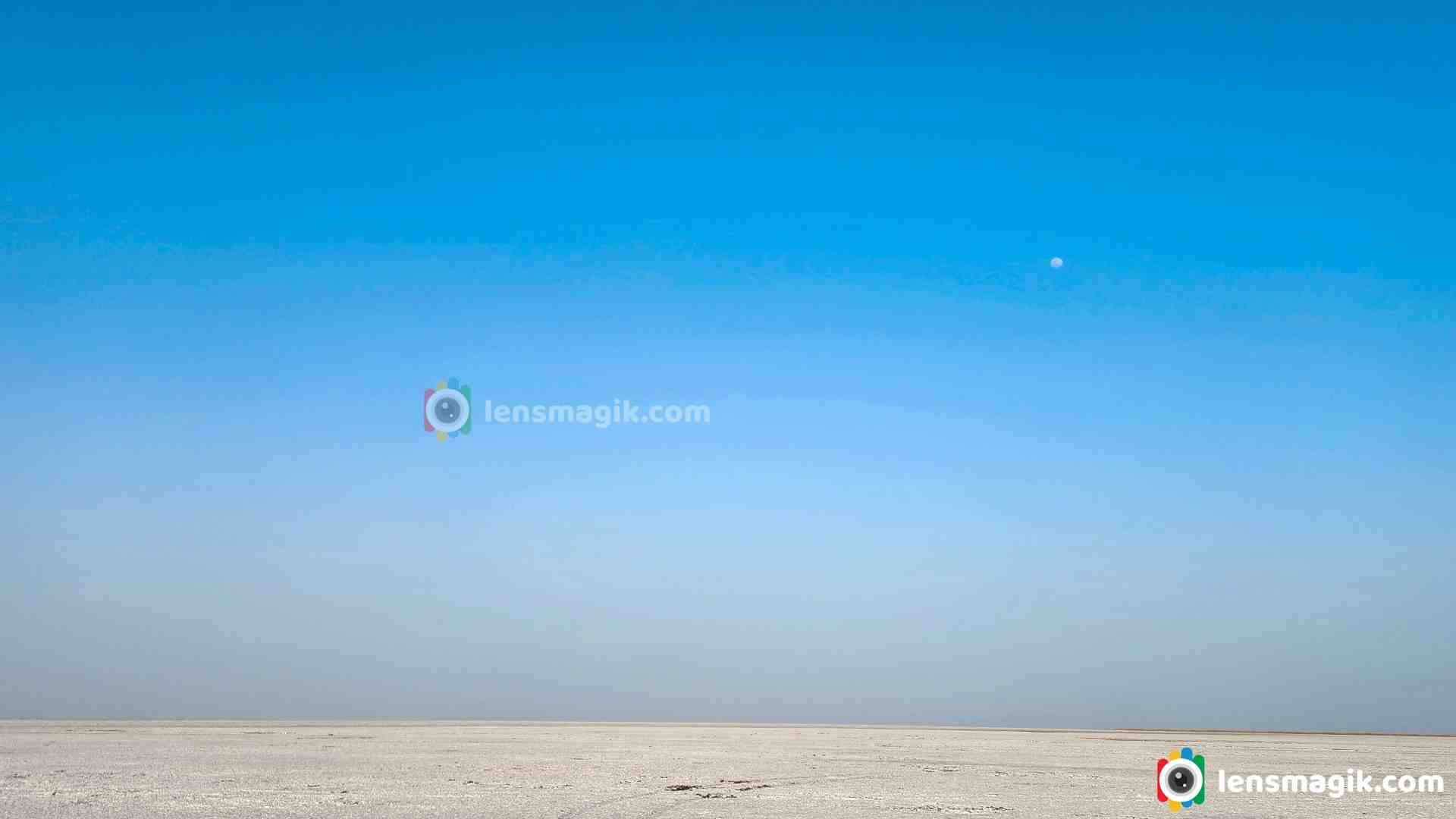
About White Desert Of Kutch :
Vibrant Life : White desert of kutch becomes alive with diverse ecosystem, migratory birds, flora and wild Ass.
Infinite White landscape : The most amazing features is infinite expanse of pure white salt. The layer of white salt create magnificent contrast against amazing blue sky .
Cultural Richness : At White Desert Of Kutch surrounded areas are rich cultural heritage , with colorful tribes, crafts and cuisine.
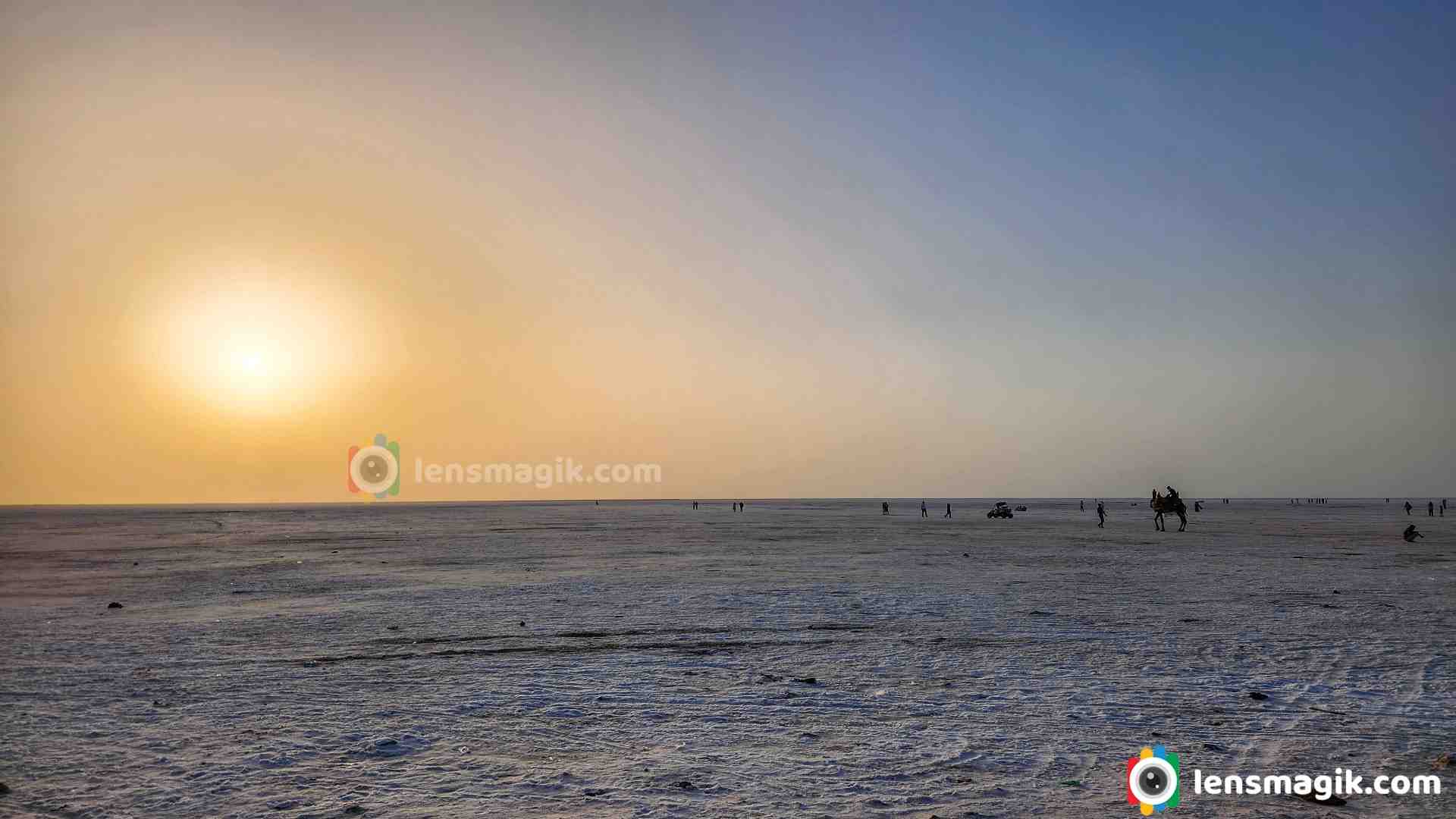
Things To Do at White Desert of Kutch :
- You can get a Camel safari or jeep safari for exploring a white desert and enjoy the beauty of it.
- Suggest you to see Sunrise or Sunset of Rann. At sunset or sunrise time you can see magical glow over salt flats. So sunrise and sunset are stunning experience at Rann of Kutch.
- Immerse yourself in the culture of Kutch. You can visit local villages, attending traditional dance and also you can enjoy local food.
- You can also see wildlife in Rann of Kutch. You can see Indian Wildass or Onager which is found only in Kutch in India. Also a migratory birds like Greater Flamingo, Pelican and many more raptors found here. The endangered spices like Great Indian Bustard also found here.
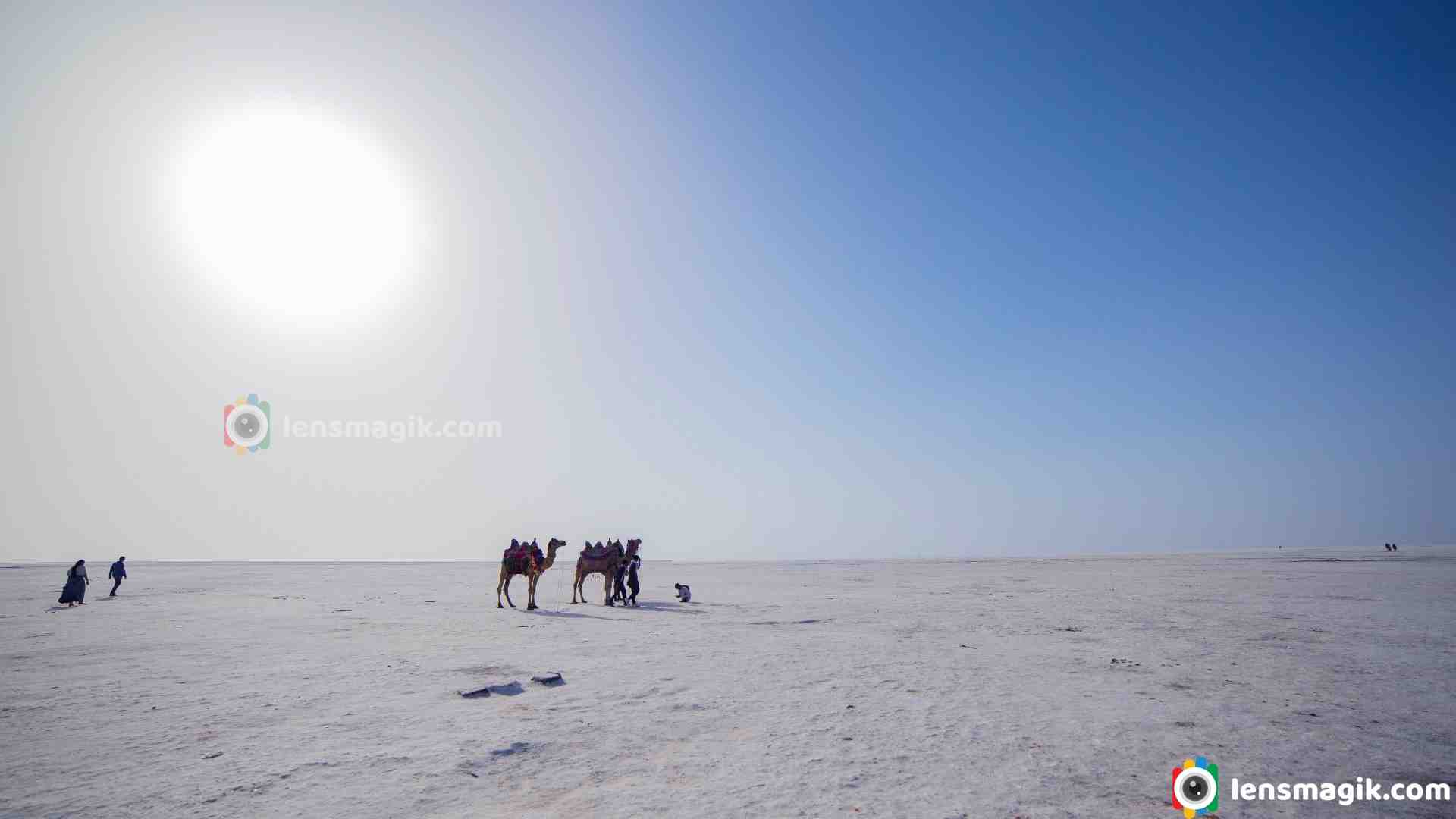
Best Time To Visit White Desert of Kutch :
The Best time for experience white desert of kutch is November to February during winter season. During winter salt march completely dry . Also during this period Rann Utsav managed by Gujarat Tourism. In Rann Utsav you can see colorful festival showcasing the region's culture and traditions. Also i suggest to plan in November or December because in February salt march are destroyed due to public foot fall and also a dirty too.
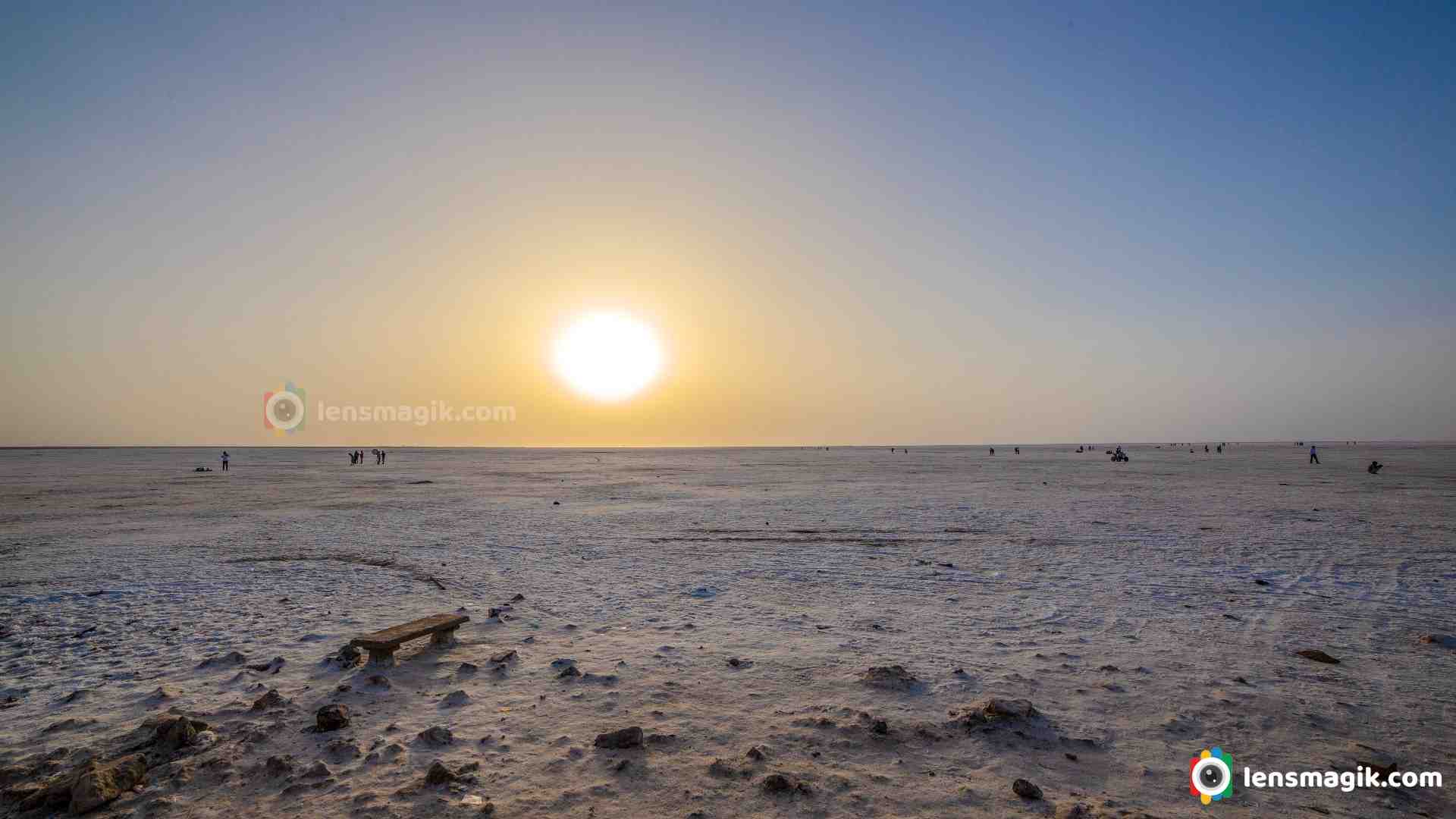
Some Tips while visit White Desert of Kutch :
- You can choose luxury Tent of Rann Utsav or also some affordable tents available near white desert.
- Comfortable cloths and lose fit cloths are suitable for desert.
- You can capture stunning landscape with vibrant colors during sunrise and sunset with white desert salt marsh. So bring good quality camera to capture stunning images of White Desert of Kutch.

Best Experience of White Desert : On Full moon day you can experience the best of white desert of Kutch.
White Desert of kutch is truly unforgettable destination of Gujarat. It offers unique blend of natural beauty , cultural richness and also adventure and wildlife. So i must suggest whenever you plan to visit Gujarat you must visit Rann of Kutch during Rann Utsav in November to February.
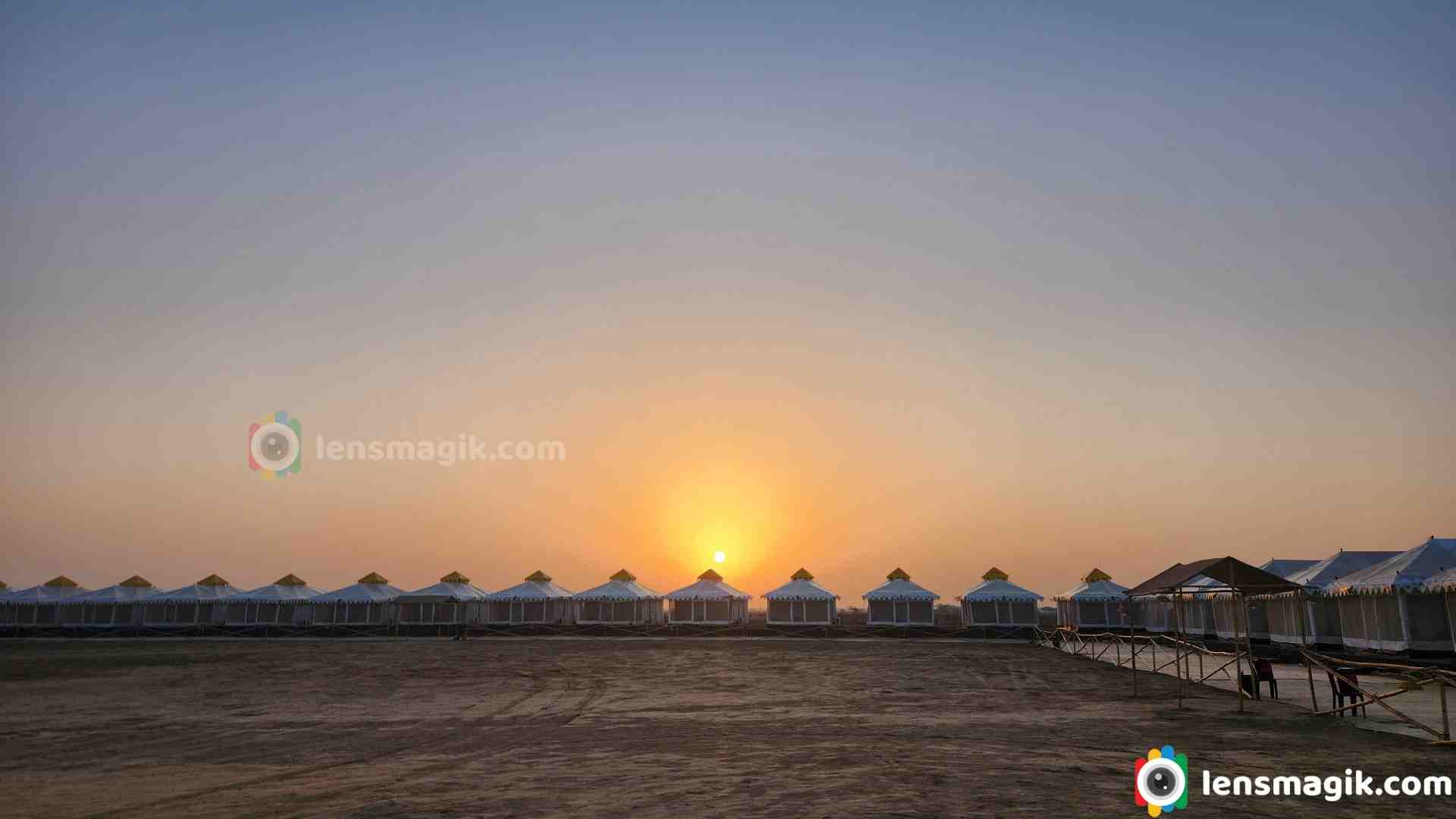
Nearest places to visit : Road To Heaven, Dholavira, Kadiya Dhro, Mandvi Beach, Vijay Vilas Palace, Kalo Dungar, Dholavira, Bhuj city, Bujyo Dungar, Smritivan memorial.
Famous dishes of Kutch : Kutchi Dabeli is one of the most famous fast food of Kutch. Also Khichadi - Kadhi, Kachhi Thali , Odho, Mesukh and Pakwan are famous and must try it.
Famous Cloths of Kutch : Bandhani ( used in sari ,dress material and dupatta), Ajrak ( used in cloths, home decor and accessories) , Rogan Art ( Used in saree and dress materials), Kutch Embroidery, Kala cotton ( used in home decor and clothing )
Photos Taken from : Samsung S22 mobile, Canon 6D, Canon 80D
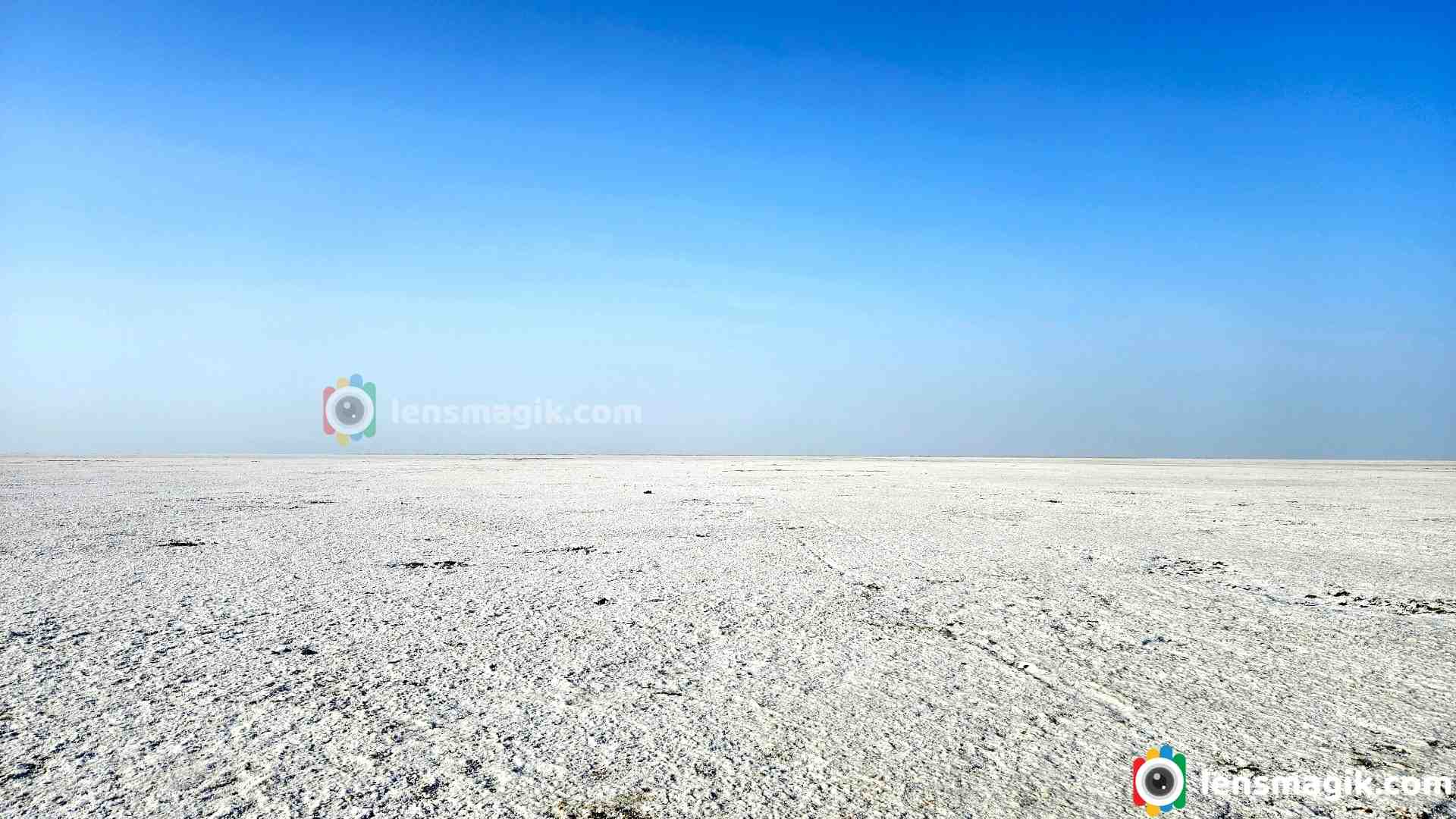
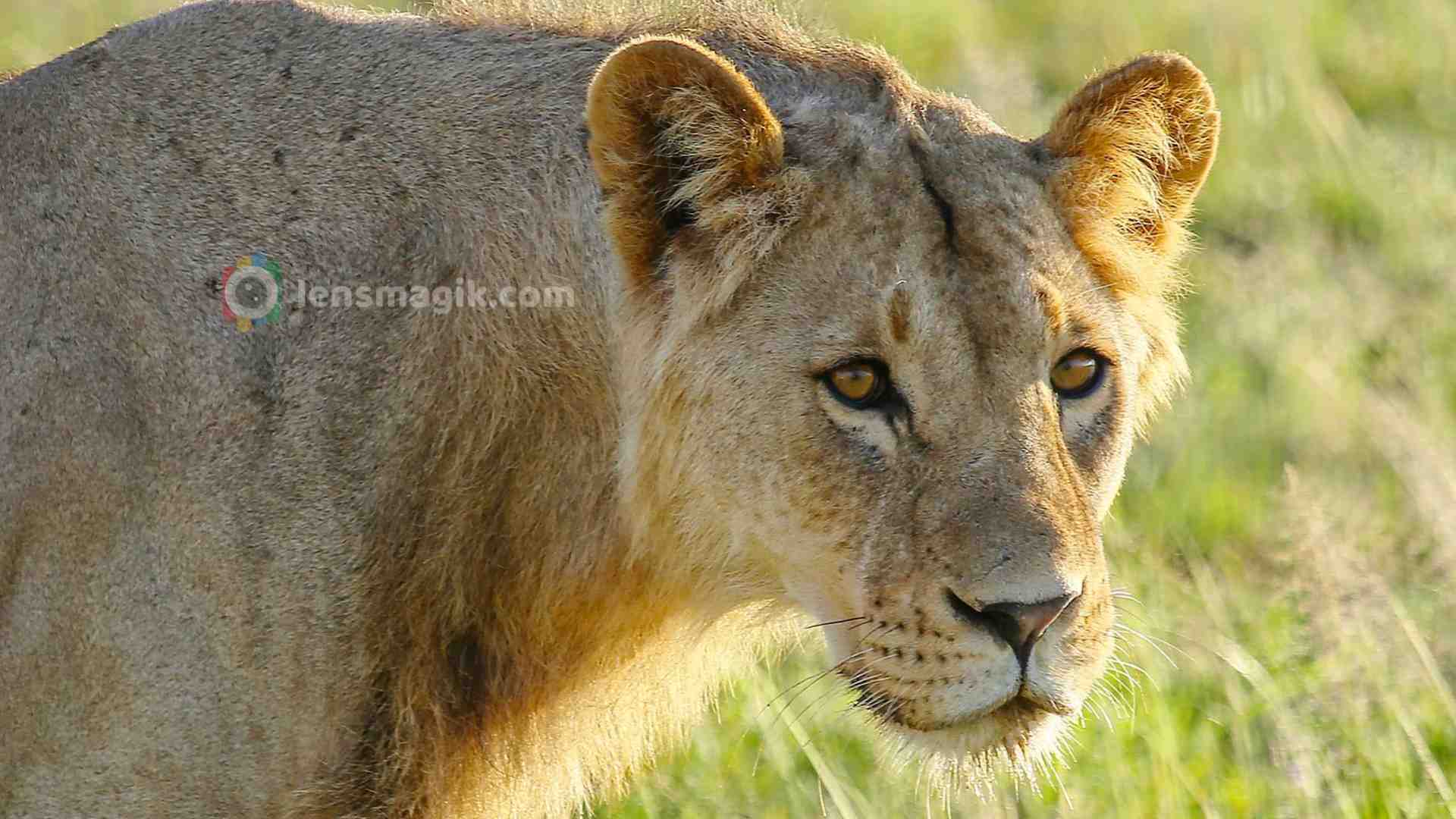
African Lions are keystone spices in African Savanna and also playing a vital role for eco-system. Africa is a dream of every wildlife Photographer to visit. In Africa you can find mammals, serpents, birds, miniatures, macros, water animals and many more. In Africa most people in the world visit Masai Mara National Park. Masai mara is the biggest wildlife National park in Kenya to visit. During June to August month the National park is full of tourist to see the migration of wild beasts. Also you heard about Big Five Africa that includes the major 5 animals of Africa. In Big 5 African Animal includes Lion, Leopard, Buffalo, Rhino and Elephant. Africa is very famous for Lions and Elephants too. In Masai Mara Safari timing is early morning and evening can do also you can go for full day safari about 6 hours with packed lunch. I found lions and also pride of lions in early morning safari.
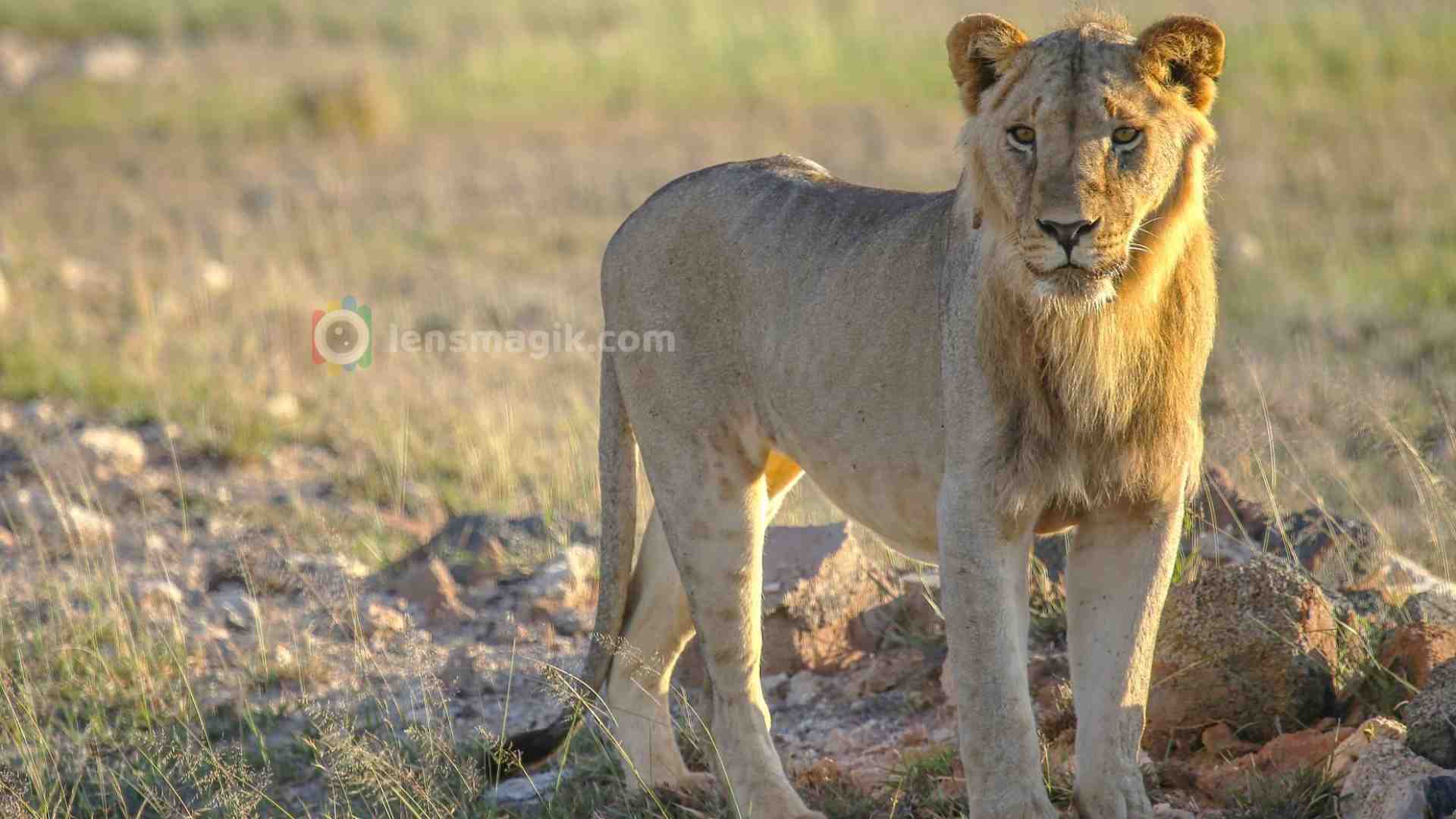
Facts About African Lions :
- African lion is a spices of Pantherian Cat.
- It has deep chested body and round head and ears.
- African Lion total length is about 208 cm from head to tail.
- Group of femali Lions hunts together.
- Adult male Lion have prominent mane.
- Lions found in grassland and savannas.
- Population of Lions in African countries decline about 43% since 1996 so they put Vulnerable on IUCN red list.
- In zoos lions breed with tigers for hybrid spices. Hybrid spices called Liger. It is bigger than Lion and Tiger.
- Lions are only cats that lives in Group.
- A lion's roar may heard around 8 km away.
- Lions mark their territory with their wee and create a border.
- African lions bite force is around 600-1000 PSI.
- Lions are most intelligent cats.
- Lions gestation period around 3-4 months. They deliver 2-6 cubs generally. Cubs stay with mother around 18 months.
- African lions lifespan is around 15-18 years.
- As per African wildlife report lions can sleep 20 hours in a day.
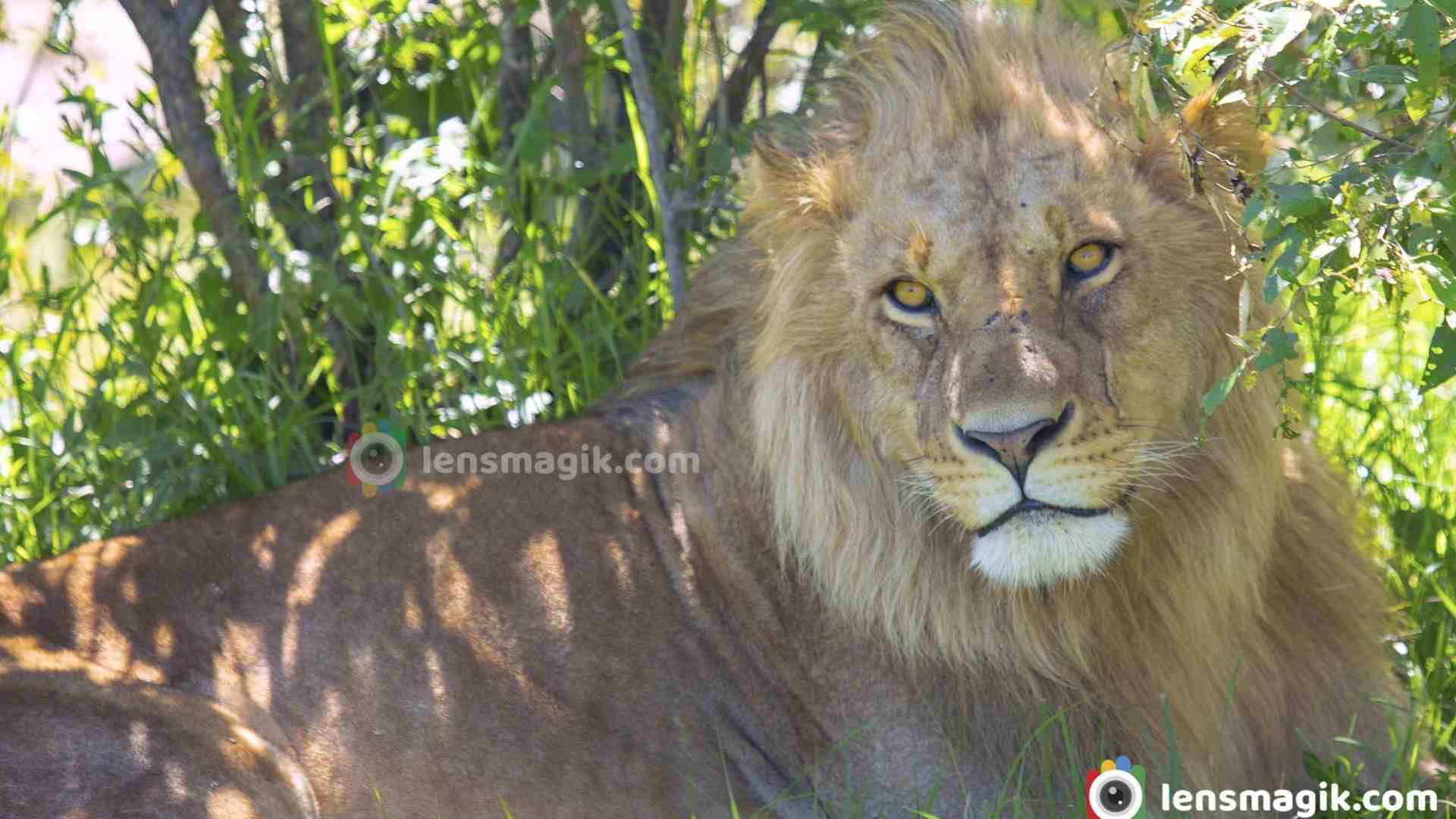
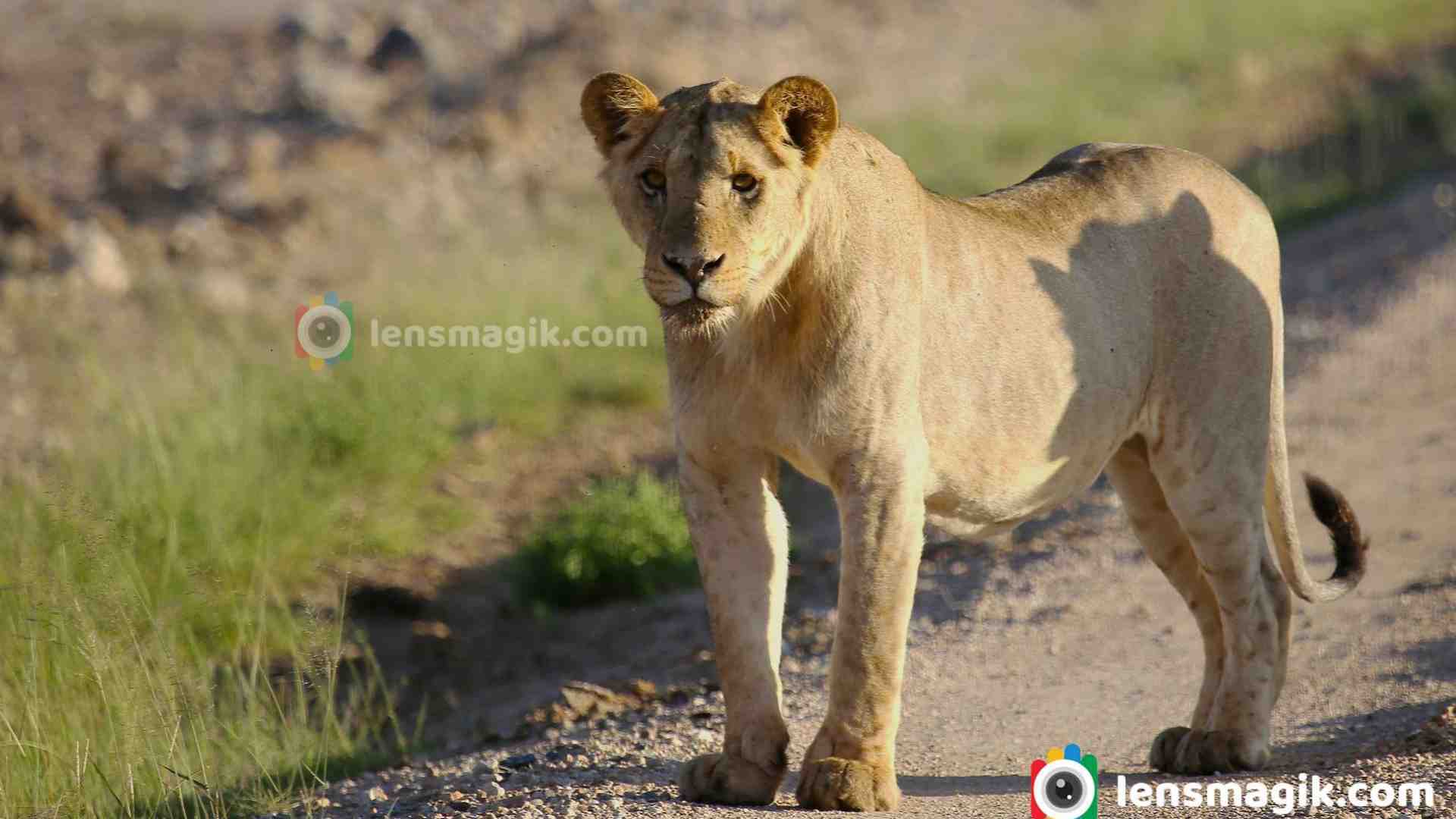
In Kenya there are lots of wildlife Sanctuaries to visit like Masai Mara National park, Amboseli National Park, Tsavo National park, Lake Nakuru, Lake Naivasa etc. Among them Masai Mara National Park and Amboseli National Park are most favorite for Lions and Elephants. In Masai mara national park you can see all major animals at one place so it is most favorite place for wildlife photographer. During migration time the Masai Mara National Park is full of tourist. There are many resorts inside of Masai Mara National Park so it is better to do best experience in the wild. During migration time resorts and hotel prices are too high.
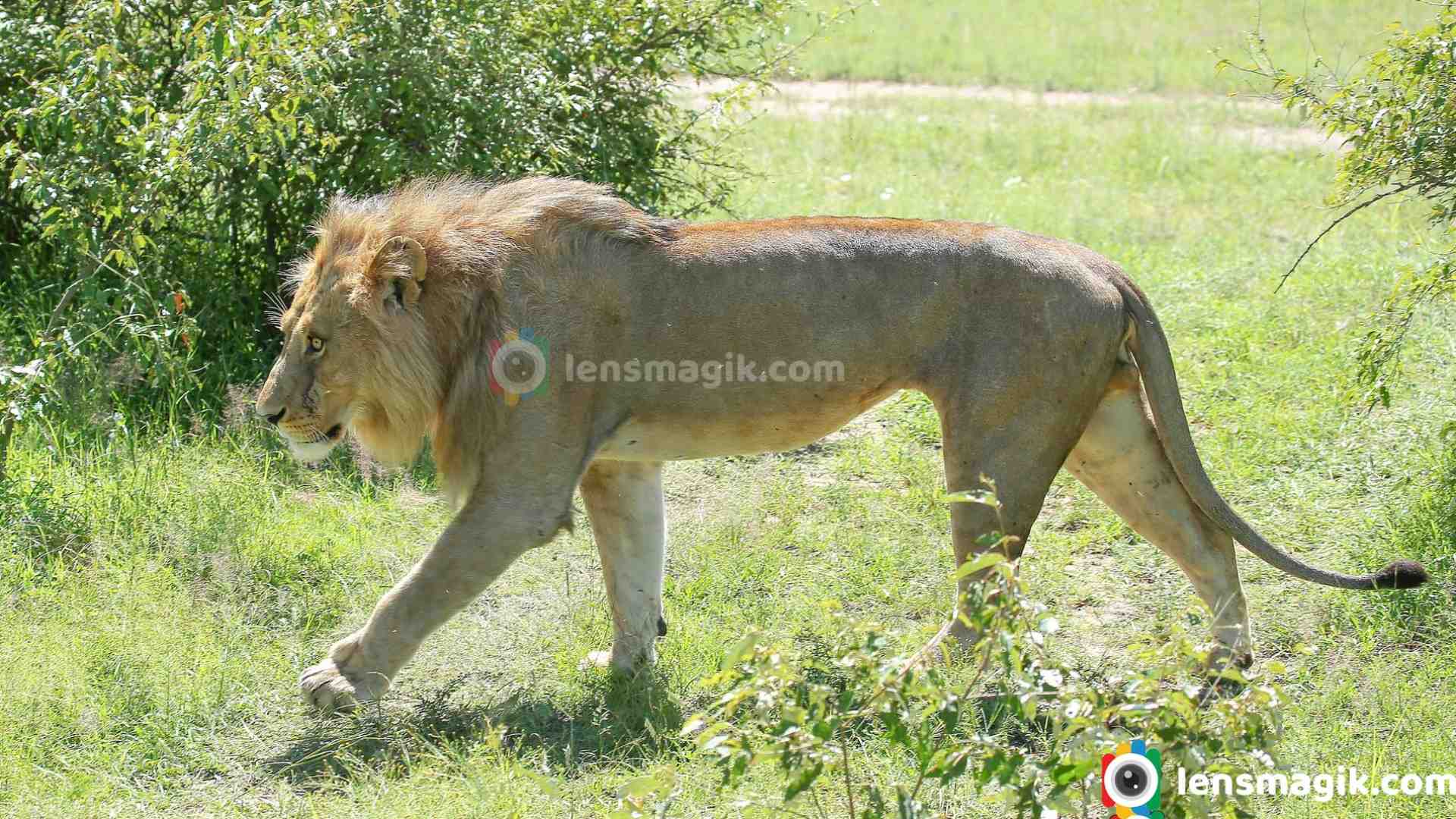
Park fees For Masai Mara National Park :
From 1st Jan 2024 park fees for Masai mara national park is revised and increased too.
For Non resident adult fees is 100 $ per person per day. Child from 9-17 years fees 50$ per person per day. These fees are applicable from 1st January to 30 th June.
From 1 st July onwards fees for Masai Mara National Park is 200 $ for non resident adult per person per day. For child fees remains same.
Lions are most social big cats. They living in pride which include females, cubs and one or two males. Lions are predators and they hunt together with teamwork to take down prey. Population of African Lions are significantly decline due to habitat loss, poaching , conflict with humans etc.
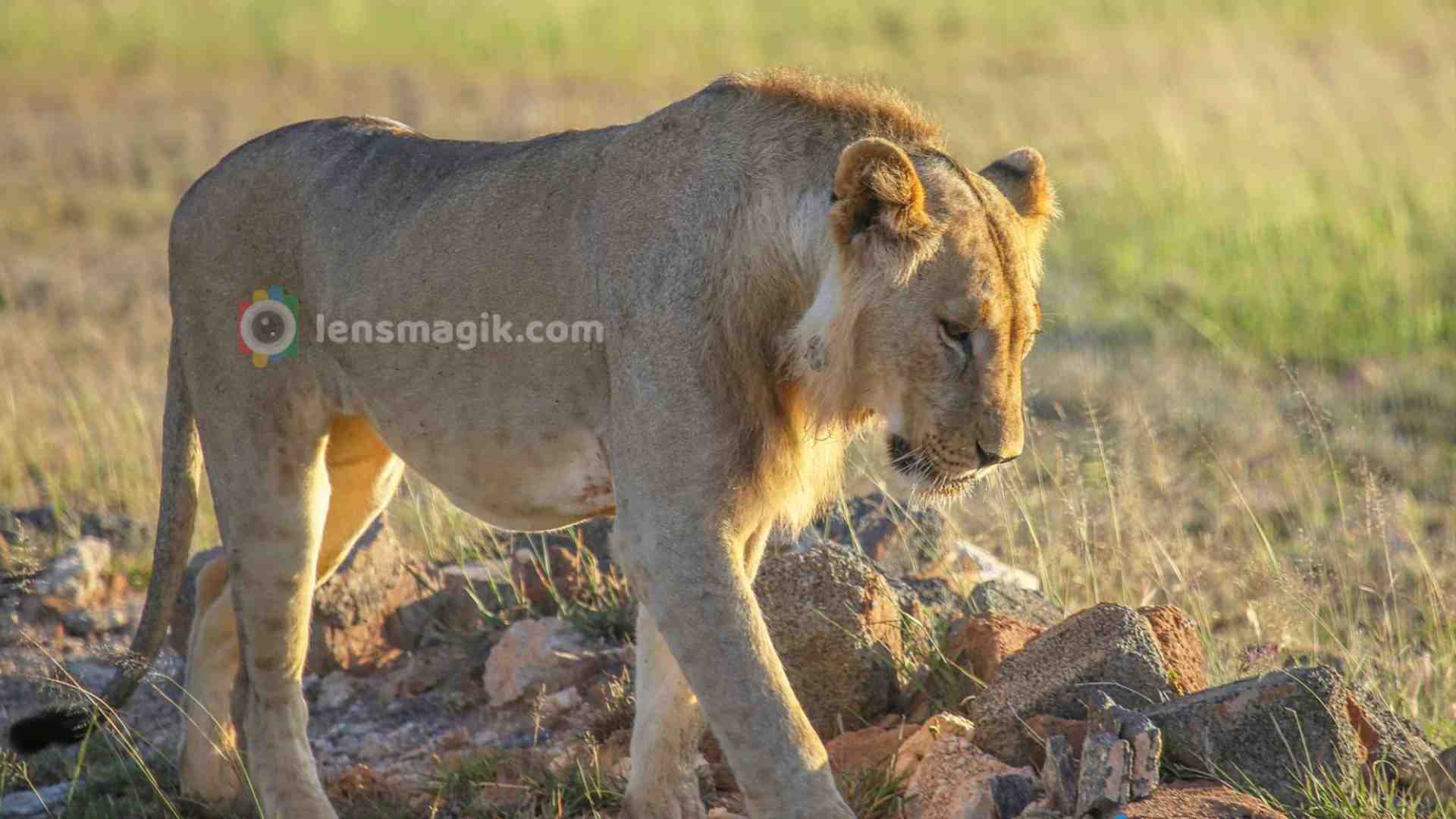
African Lions Vs Asiatic Lions :
- African lions are bigger than Asiatic Lions. African Lion weight around 500 pounds of male and 350 pounds of female. Asiatic Lion weight 450 pound of male and 350 pound of female.
- Male African lion have thick and full mane while Asiatic lions have shorter and sparser mane.
- Both lions live in pride but African Lion pride have one or two males while Asiatic lions have only one male.
- African lions live in various savannas and grasslands in Africa while Asiatic lions have only one forest Gir National Park.
- African Lions hunts large prey like wildebeest, zebra etc while Asiatic lions hunts small prey like Antelope and deer.
- Both Lions spices are Endangered. African Lions face habitat loss and conflict with humans while Asiatic lions face restricted habitat in Gir National Park.
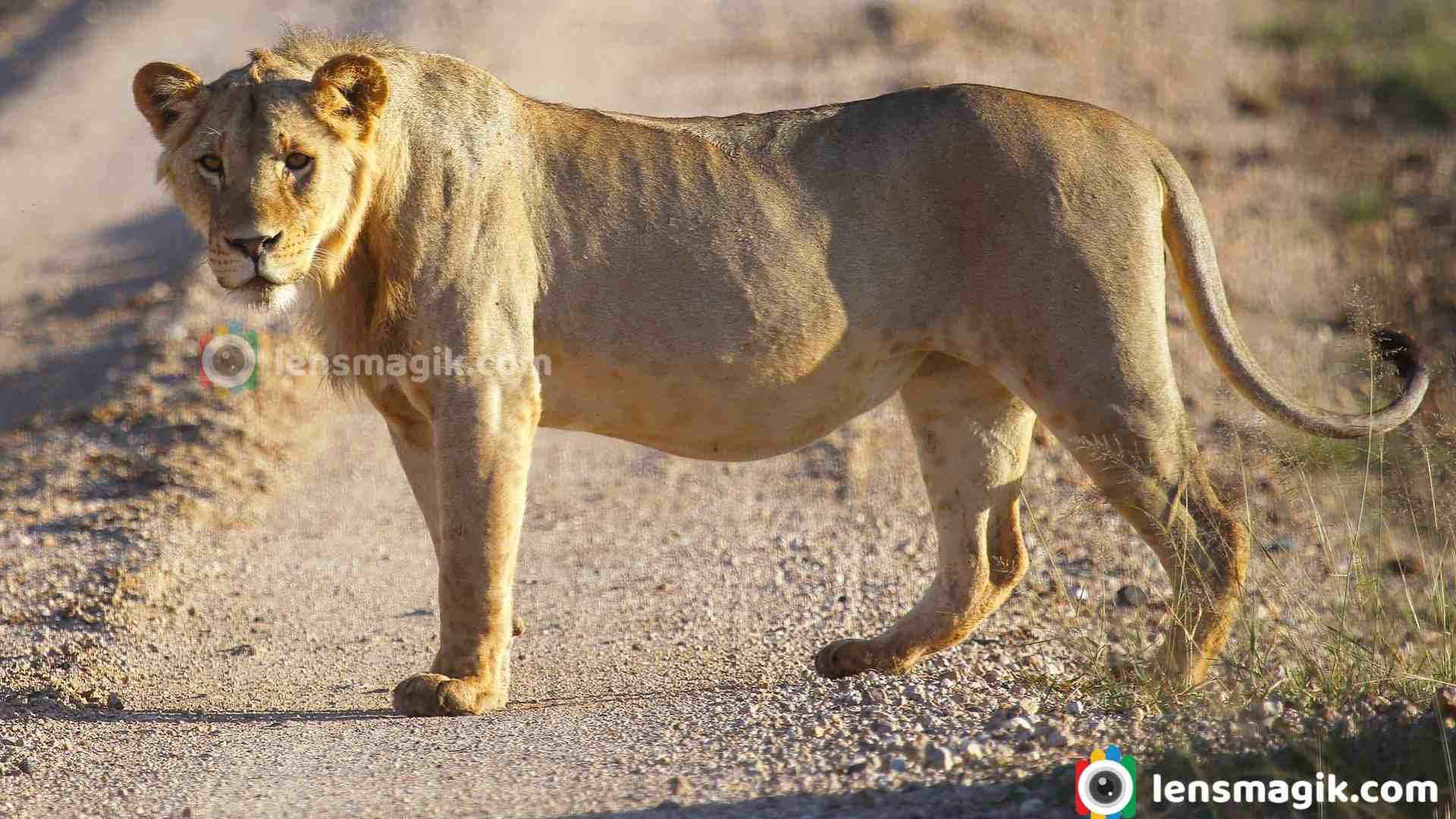
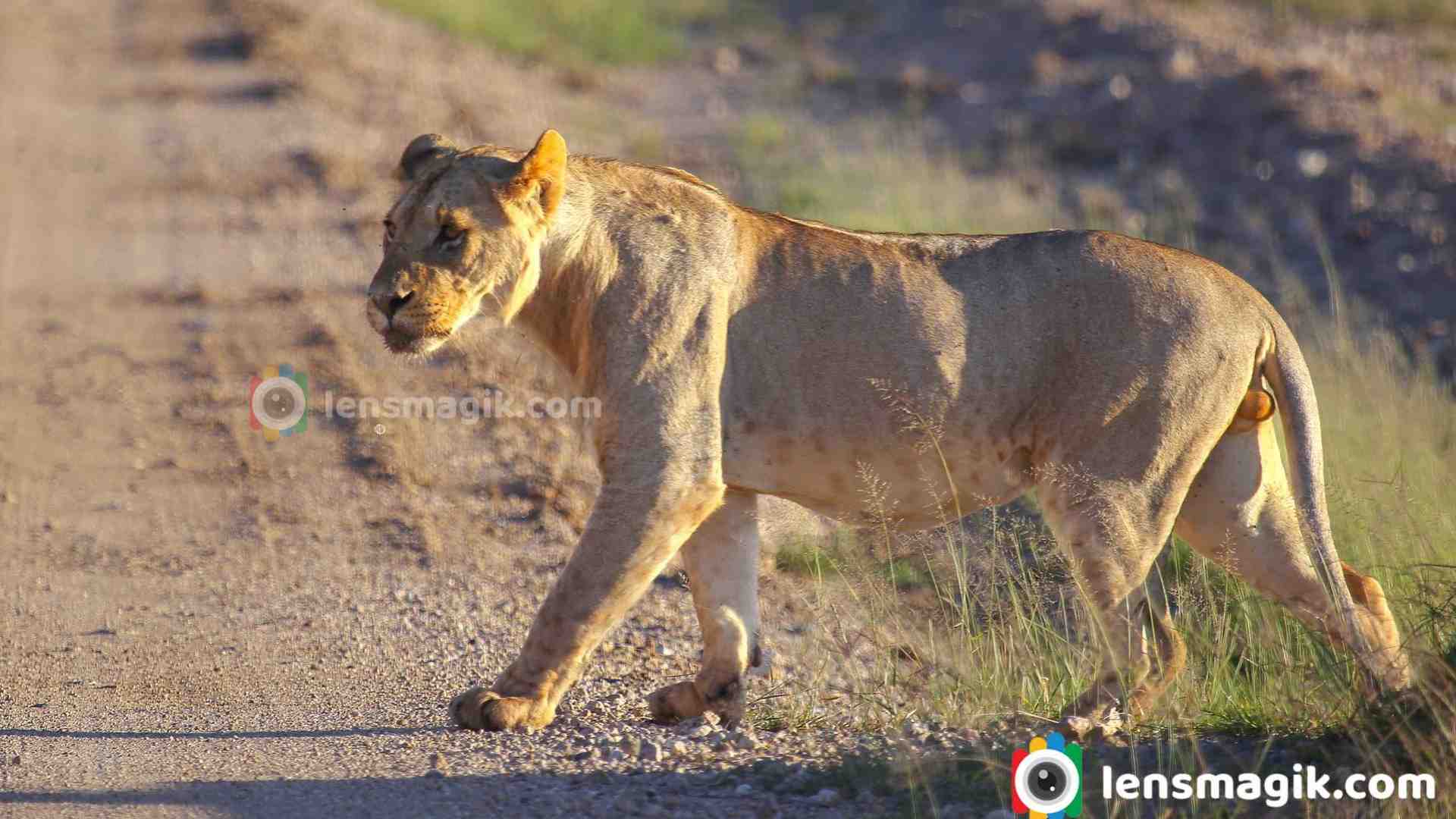
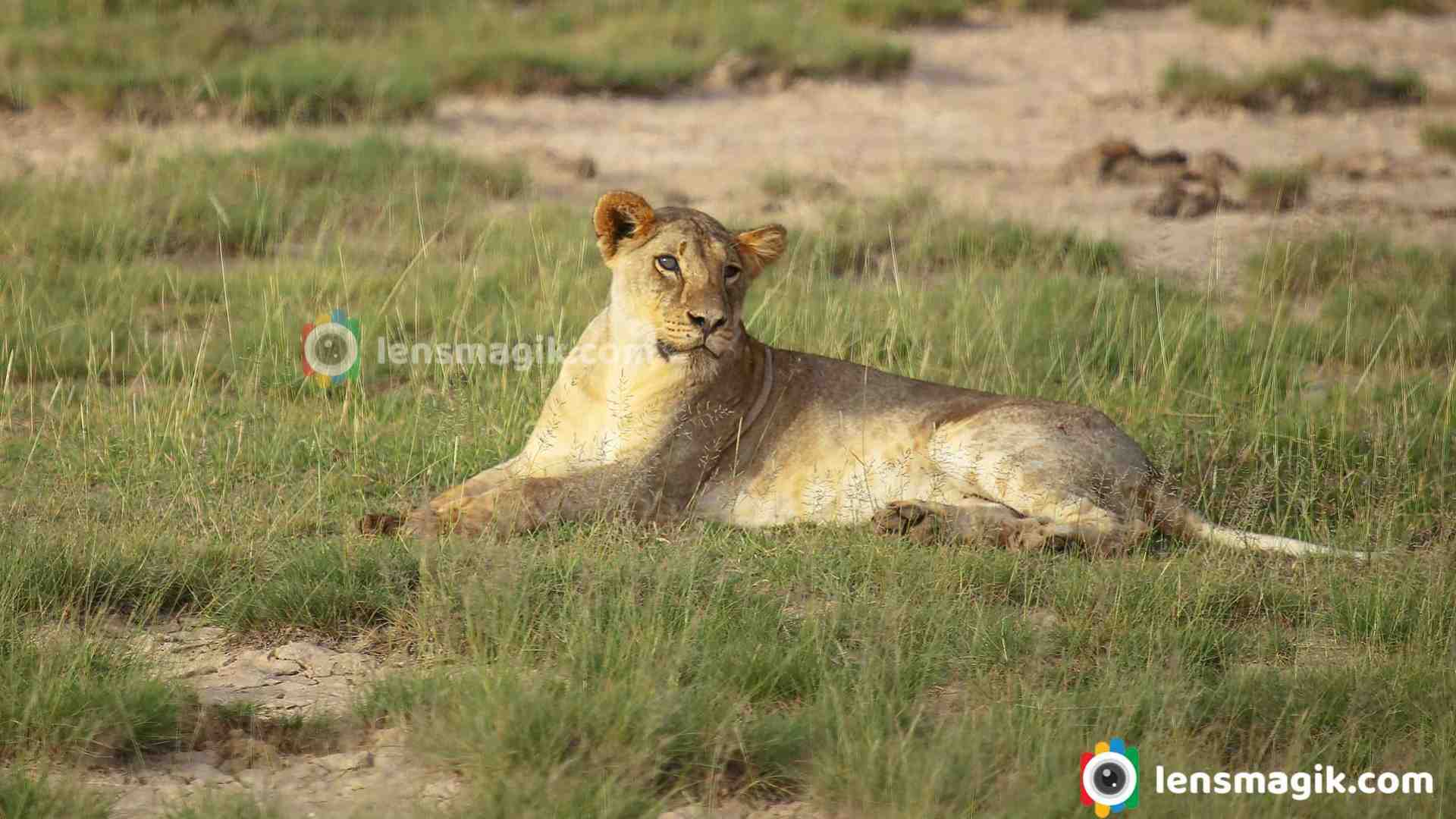
Lions are big mammals and while in safari if you see them you definitely scared. It is really a great experience to see African Lion too close and contact eye to eye. My hands are shacked while clicking photos because if Lion jump on my van then i would be his breakfast definitely. Overall great experience in Masai Mara and also at Amboseli National park in Kenya to watch lions with their cubs and family.
Photos Taken at Masai mara National Park and Amboseli National Park in Kenya
Gear Used : Canon 6 D with Canon 100-400 mm lens.
Read more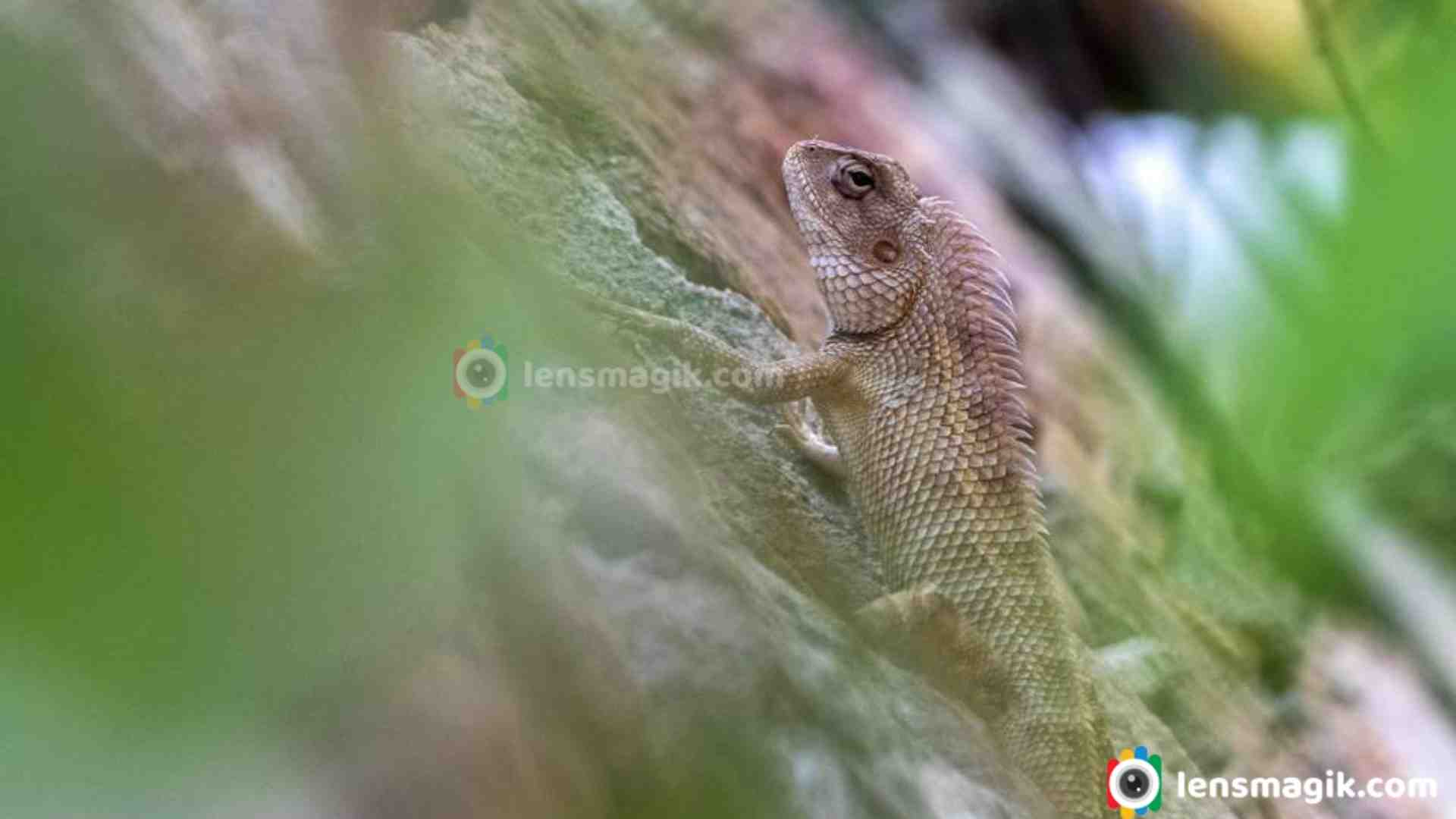
The Oriental Garden lizard is also known as common garden lizard, Indian Garden Lizard, Eastern garden lizard, changeable or blockbuster lizard. It is widely distributed in Indo -Malaya. It is also found in many other part of the world and also in USA. Oriental Garden Lizard is a resident in gardens. It helps in control insect populations. They are insectivorous and their main diet is insects. Binominal name of Oriental Garden lizard is Calotes versicolor. They also change their body color according to weather.
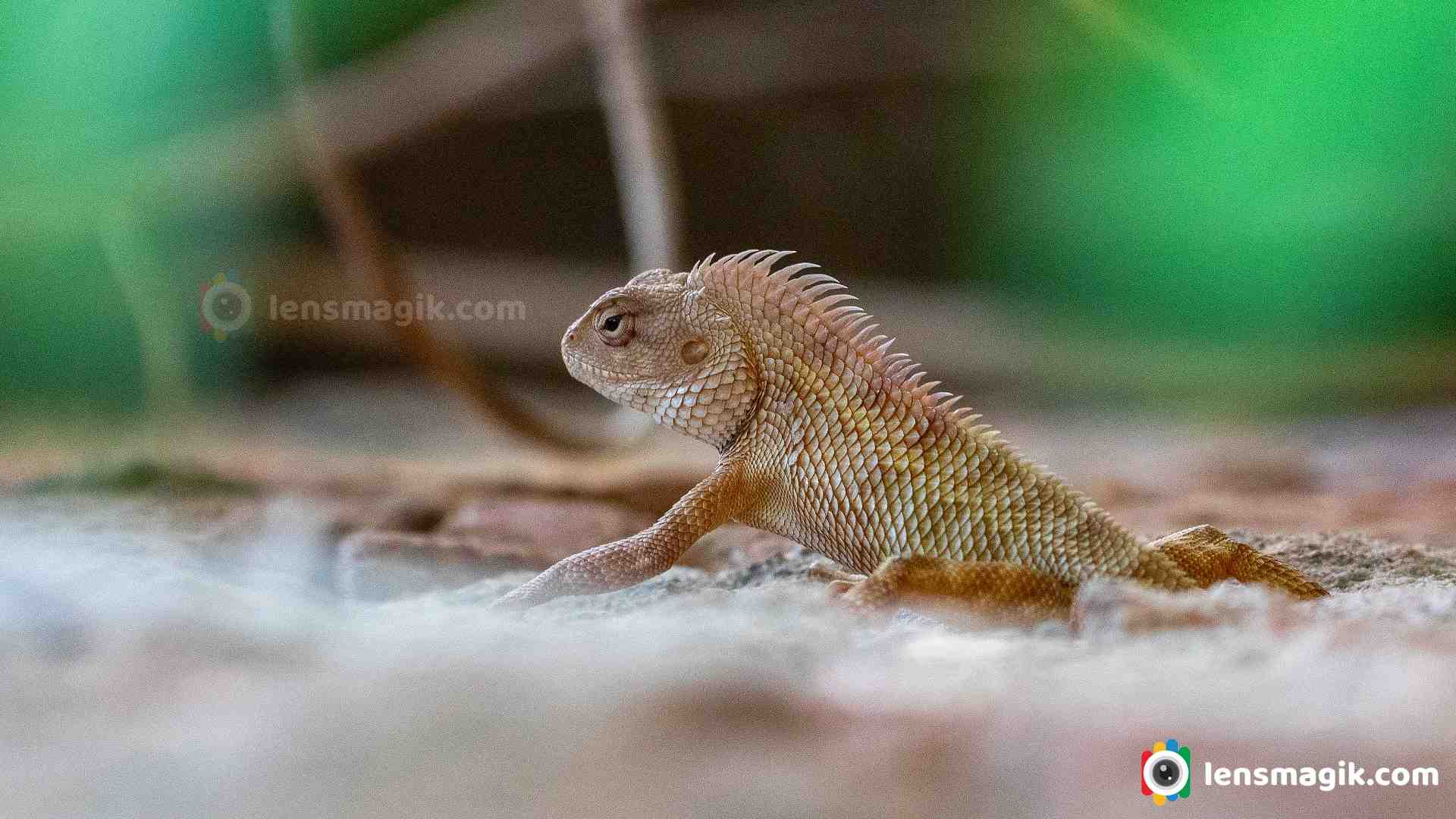
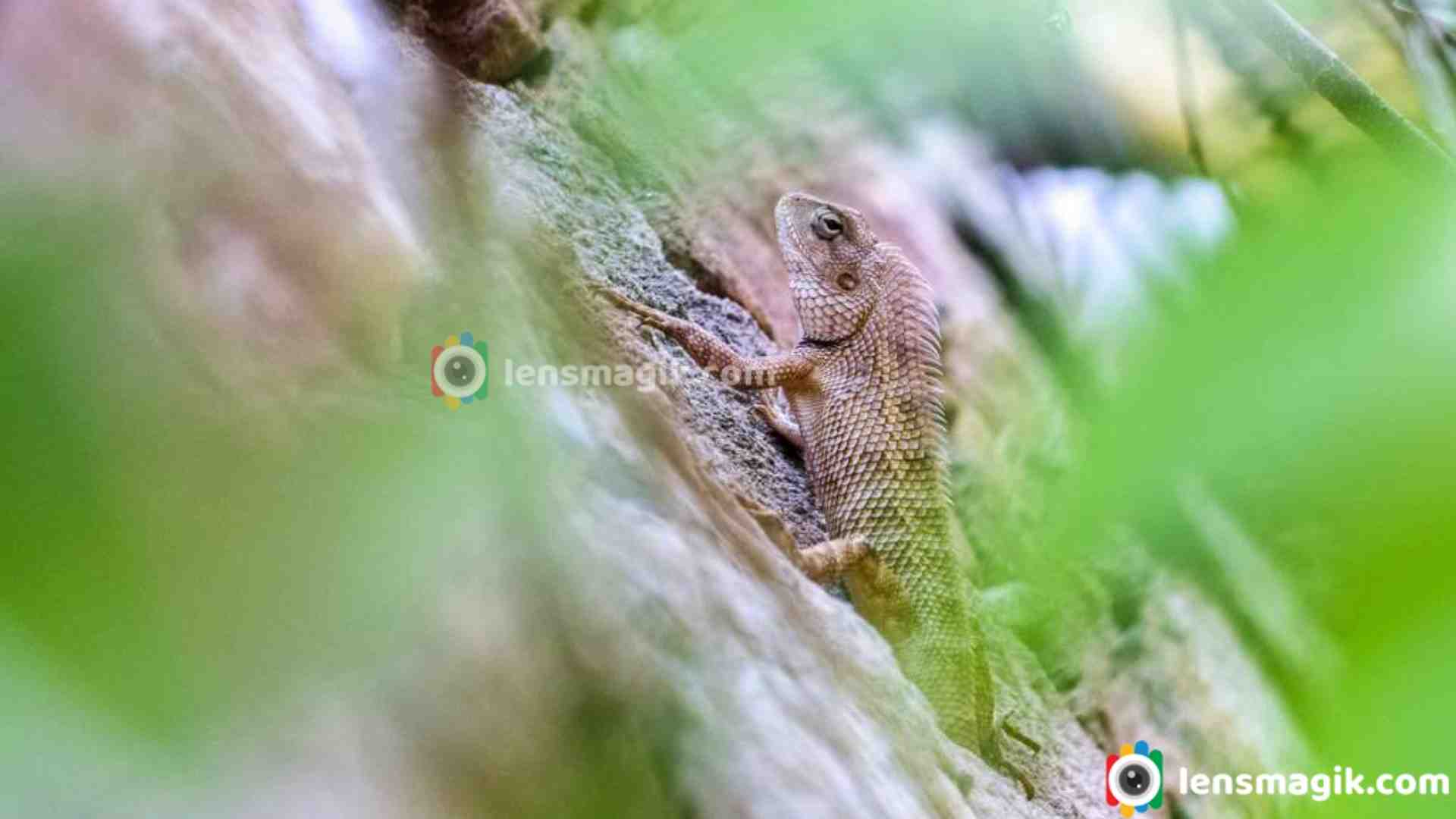
Description and facts about Oriental Garden Lizard :
- Male oriental garden lizard has bright red throat in breeding season .
- Length of Oriental garden lizard is around 10 cm. Total length with tail is around 37 cm.
- Dorsal crest elevated on neck and anterior part of trunk.
- Ground color is light brownish. It can be change into red, black or mixture of both.
- During breeding season male change its color to orange in head and shoulders. Male change head color to red after successful battle with rival.
- Lizards don't drop their tail and also tail is very long, pointy and stiff.
- They eat mainly insects like grasshopper, crickets , ants and rodents like geckos .
- Female lay 10-20 eggs which are long spindle shape and covered with leathery skin. They hatch in 6-7 weeks and they also able to breed in 1 year.
- They are diurnal means they are active during a day.
- They are excellent climber, thanks to their sharp claws and moving eyes.
- Some spices of lizard will go their entire life without drinking water
- Average lifespan of lizard is around 3-5 years.
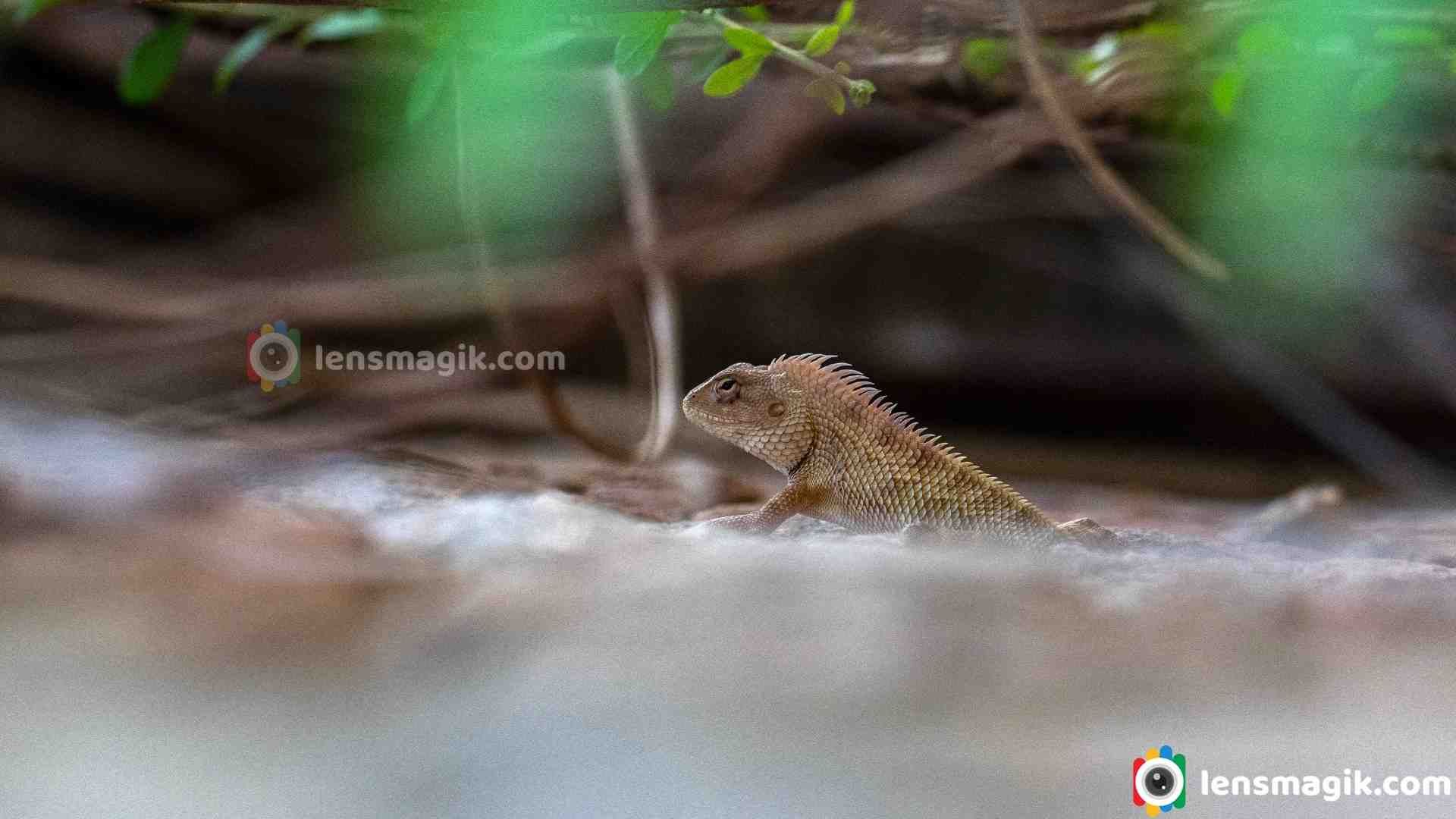
Oriental Garden Lizard can move each of their eyes in different direction. Oriental garden lizard do not attack on humans and don't suck blood. Lizards are live everywhere even in the houses also. In India housewives are scared of lizards. There are various spices of lizards found in home and garden also. Lizards are in Reptilia class and they are in least concern in IUCN list. I found many lizards in farm areas and agriculture areas near to my home.
Gear Used : Canon 6D, Canon 80D, Canon 100 mm macro lens
Exif Data : F-stop = f/5 , Exposure : 1/100 sec, ISO : 640, Focal length : 100 mm , No flash
Read more
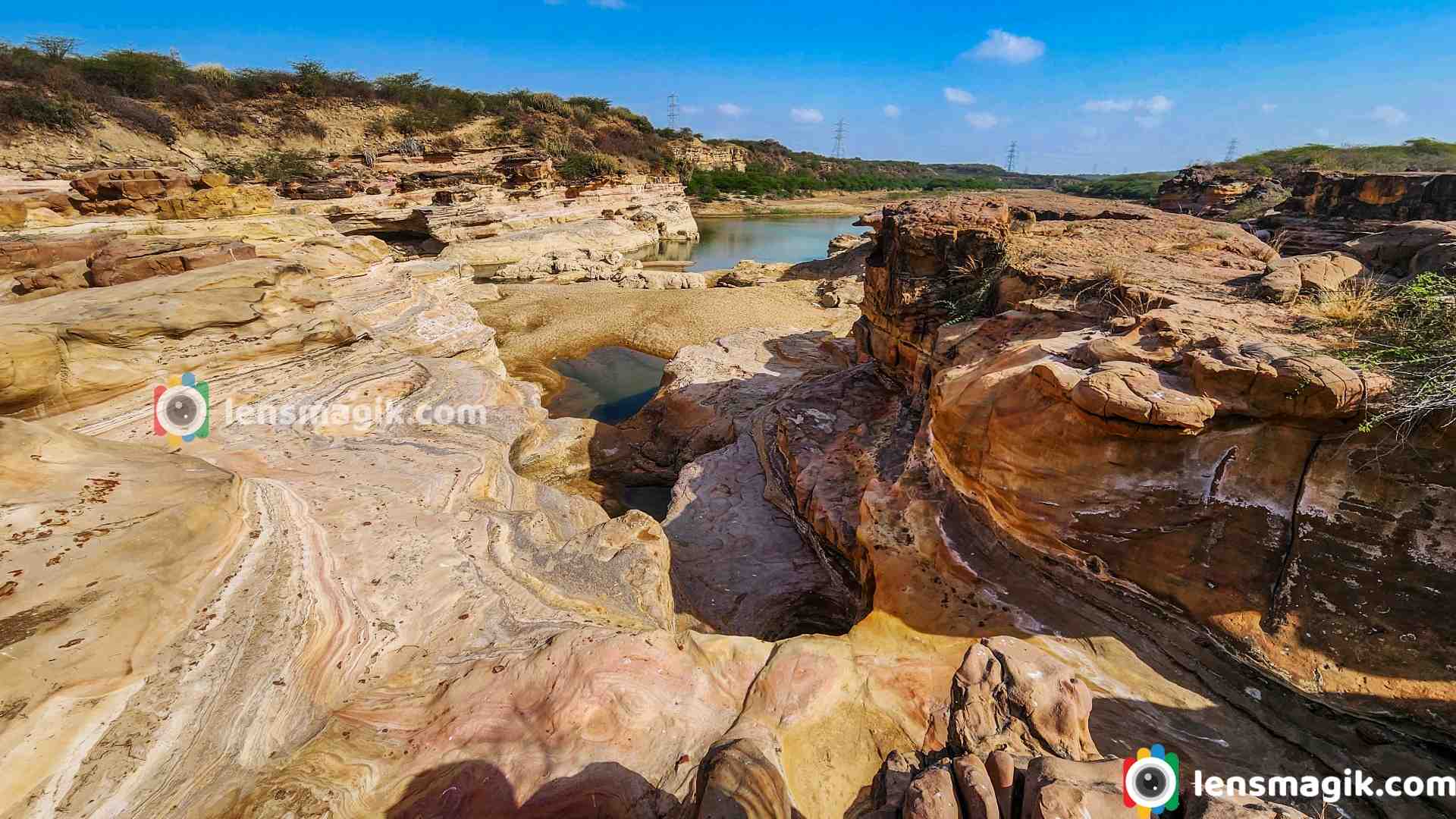
Kadiya Dhro is a fascinating natural wonder located in the Kutch district of Gujarat, India. It is looks like a grand canyon site and similar to it. Site is not much big but it is far from main road of Ulat in Kutch. You have to drive around 5 km from main road. There is a local transport of Jeep get to the Kadiya Dhro site and come back in 1 hour . They charge 100-200 INR per person or hire a jeep around 1000-2000 INR depend on season. Most people not visited Kadiya Dhro site because it is not in the main route of Kutch , Bhuj and Rann of Kutch. But i think it worth to visit it. Kadiya Dhro site was discovered by traveller Varun Suchday in 2020. Kadiya Dhro is located in between White Desert of Kutch ( Rann of Kutch ) and Bhuj City.
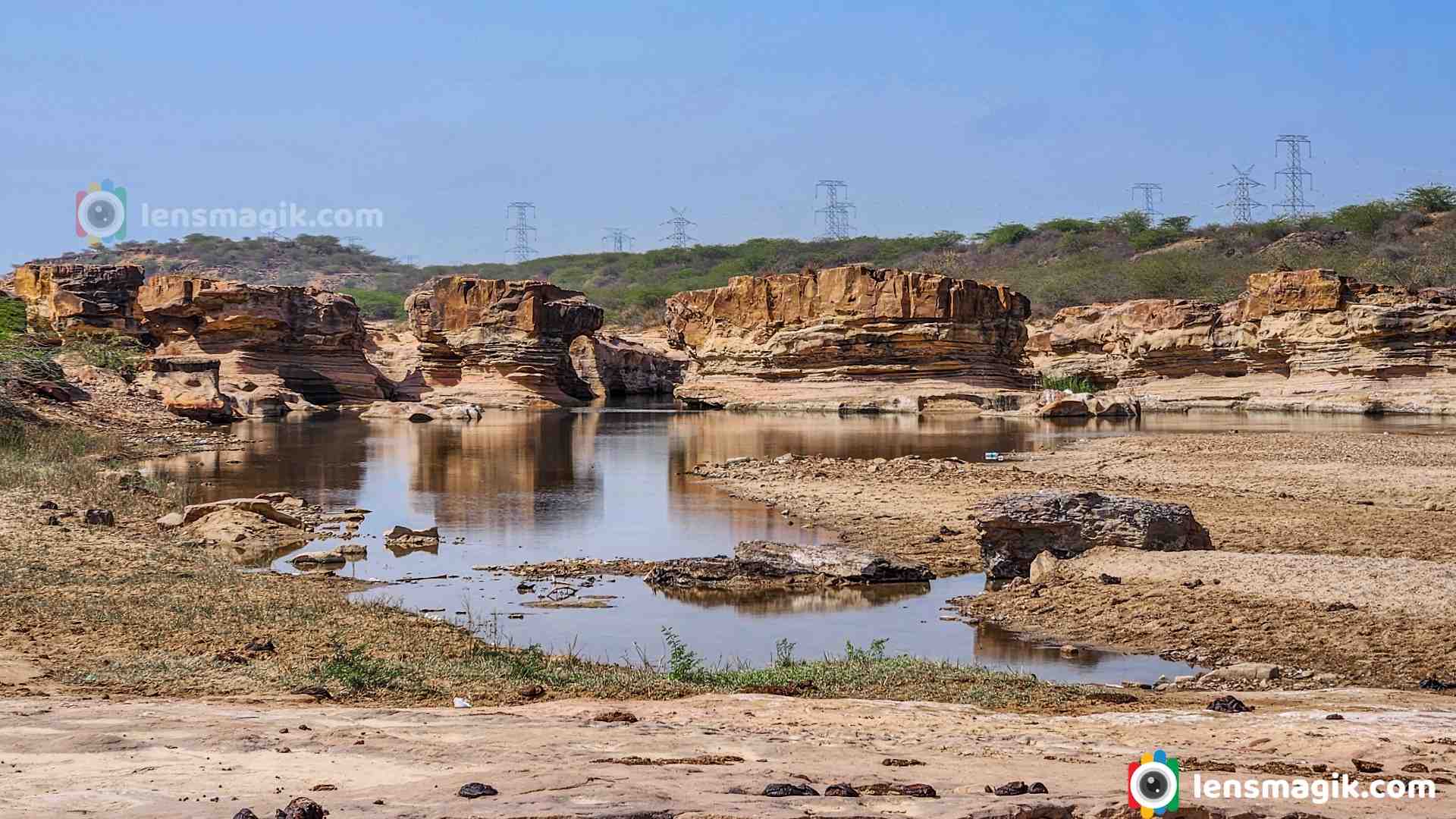
- Grand Canyon of India: Kadiya Dhro is nicknamed the "Grand Canyon of India" due to its resemblance to the famous landmark in the United States. Layers of colorful sandstone have been carved by the wind and river over thousands of years, creating a visually striking landscape.
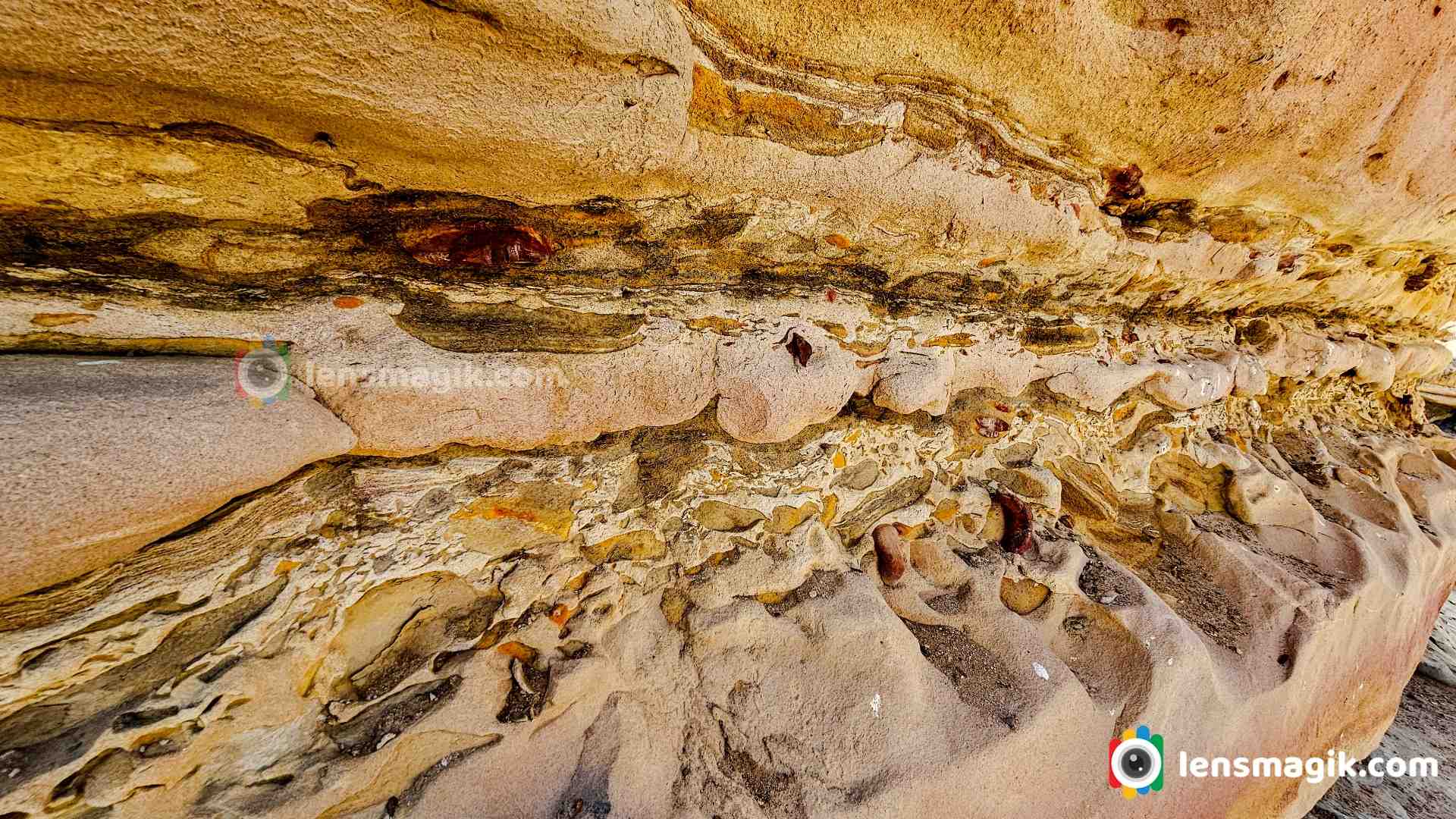
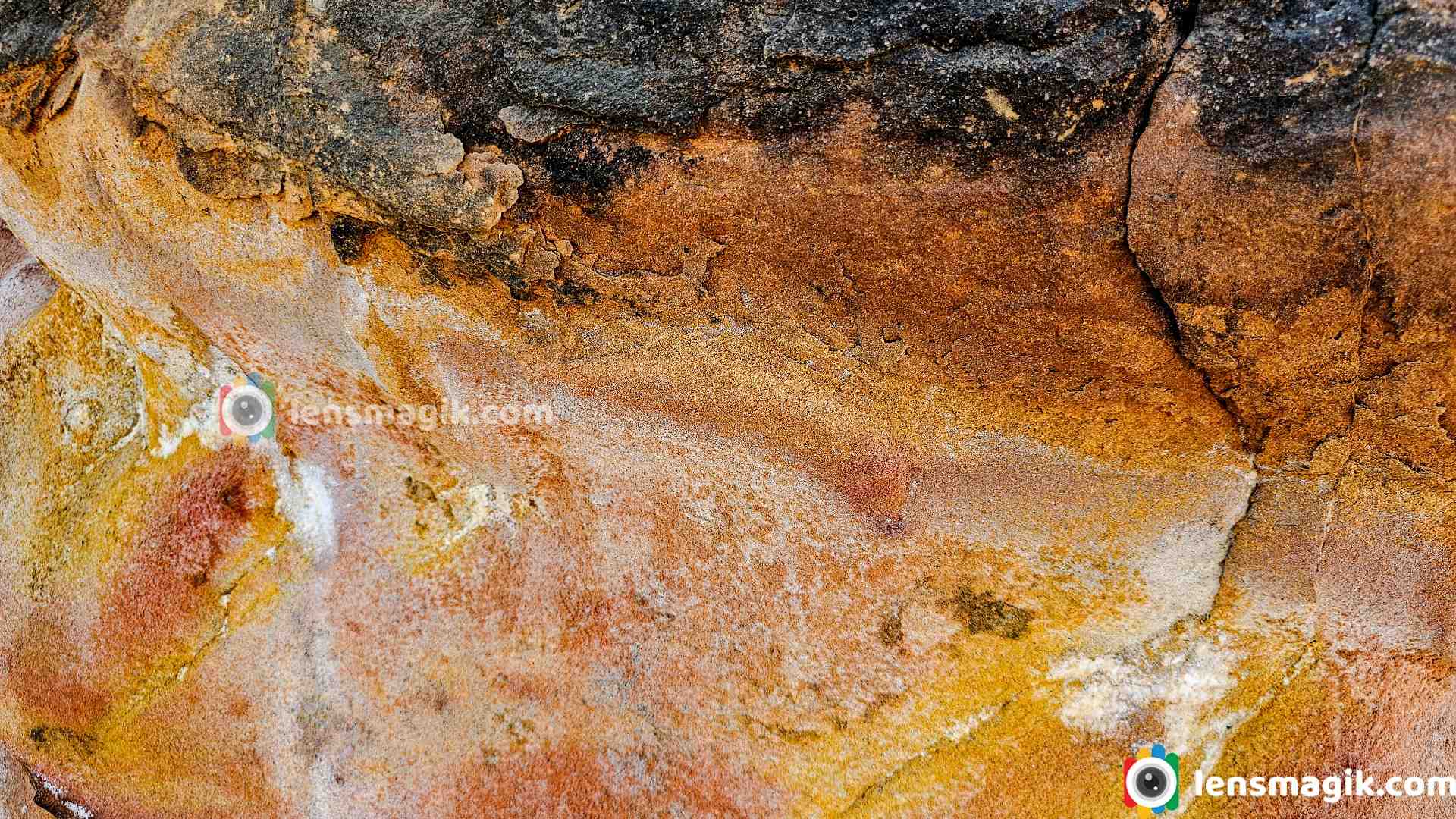
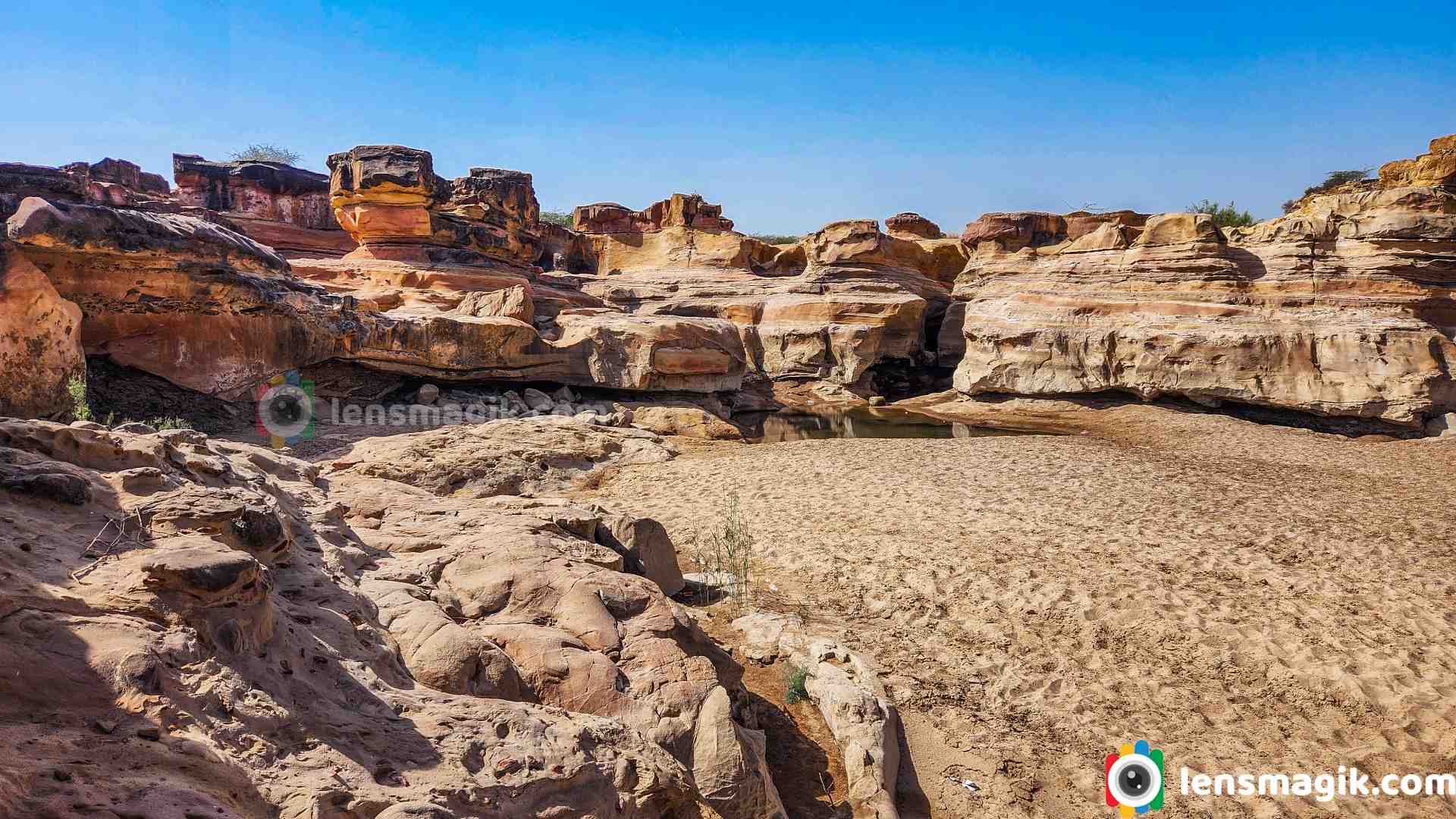
Location: It's situated about 32 kilometers from Bhuj, near a small village in the Kutch district.
Getting There: Reaching Kadiya Dhro requires an off-road drive of around 4-5 kilometers, so a jeep with good ground clearance is recommended. You can find jeeps available for hire locally
Best Time to Visit: The ideal time to visit is between November and February, when the weather is pleasant and sunny
Things to Do: Enjoy the scenic beauty of the rock formations, explore the surrounding area, and be on the lookout for the diverse birdlife. Keep in mind that crocodiles have been spotted here, so avoid swimming in the water .
Hidden Gem: Kadiya Dhro was recently included in The New York Times' list of "52 Places to Visit in the World" in 2021, bringing it more recognition .
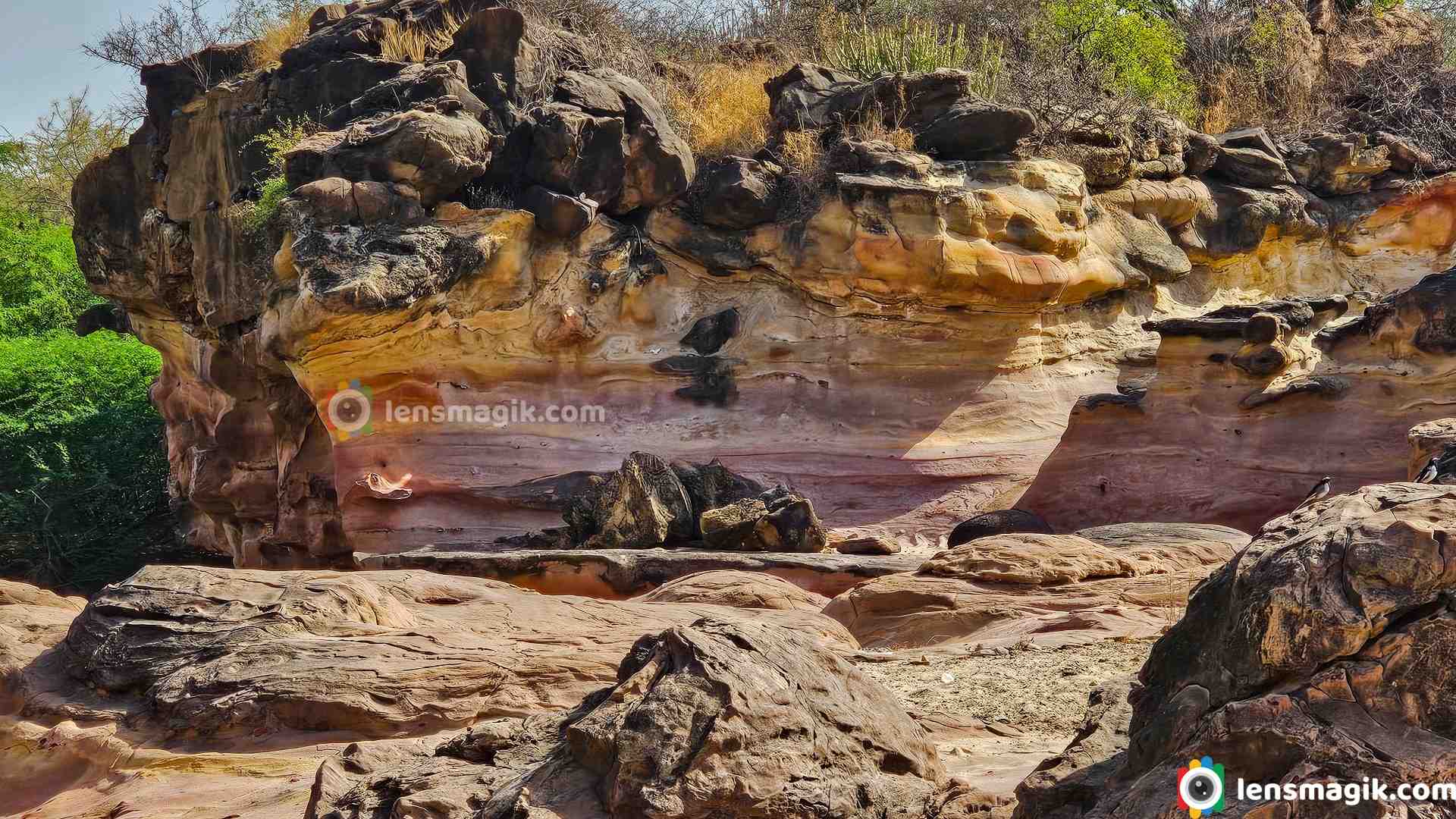
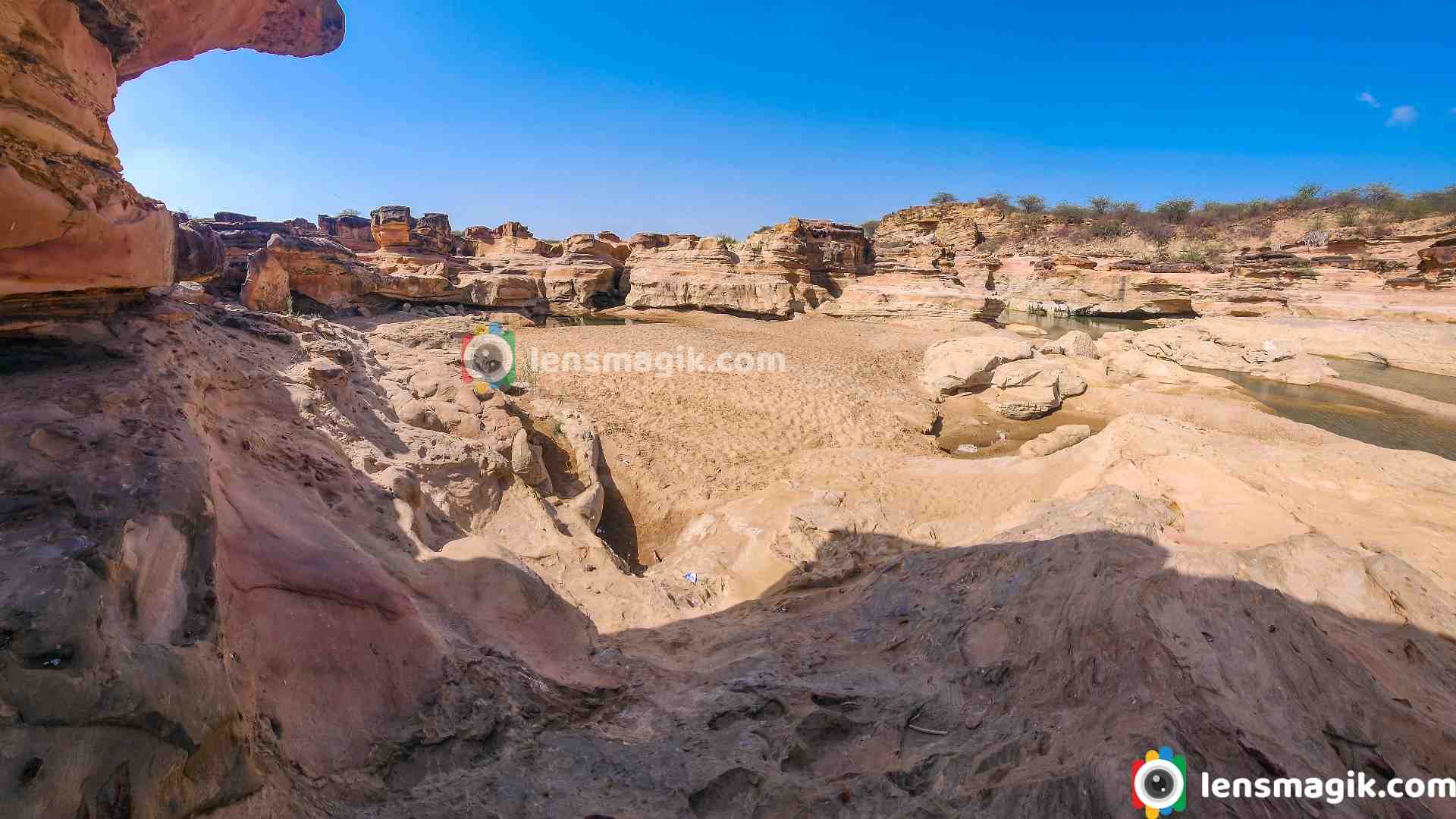
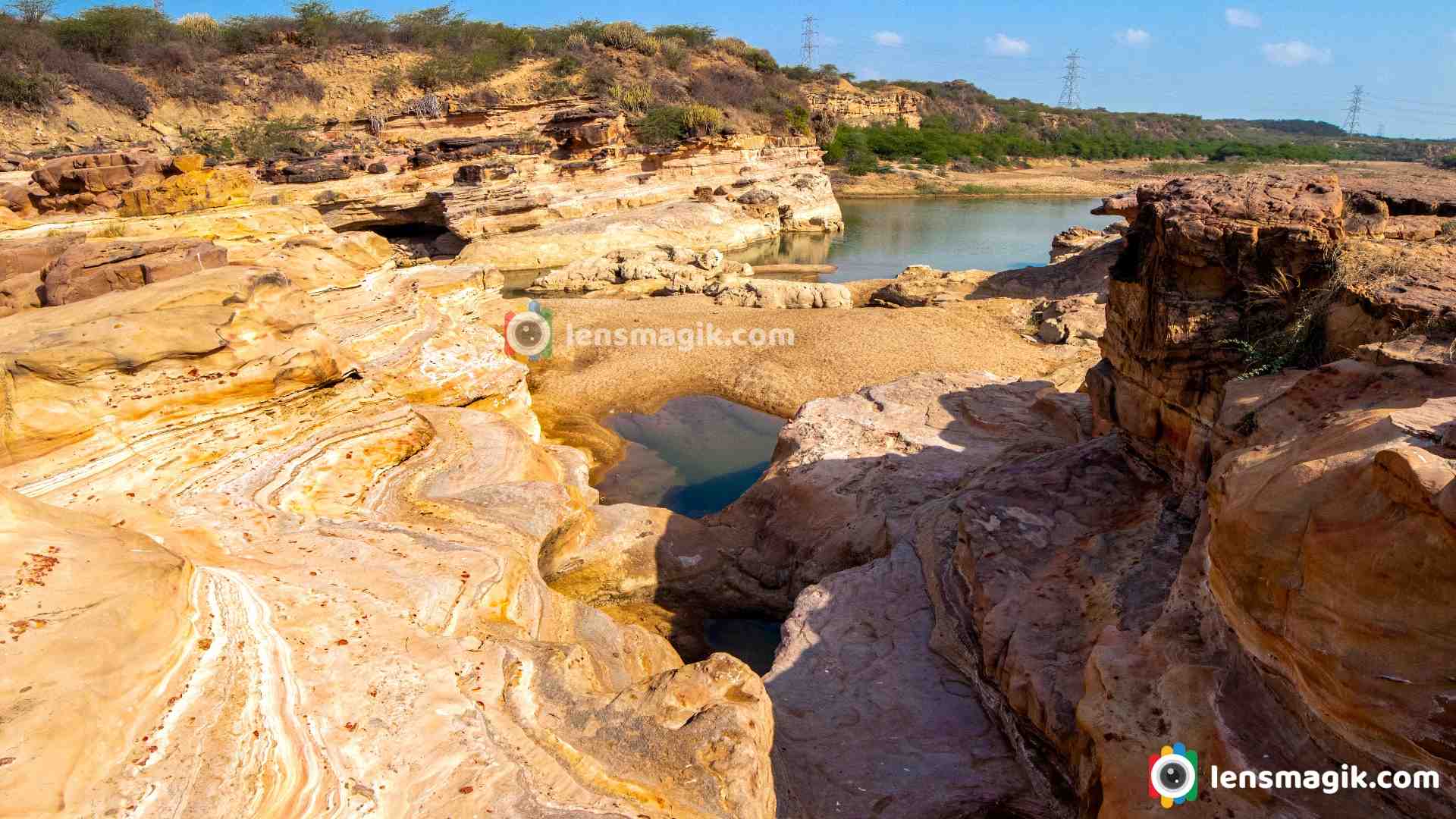
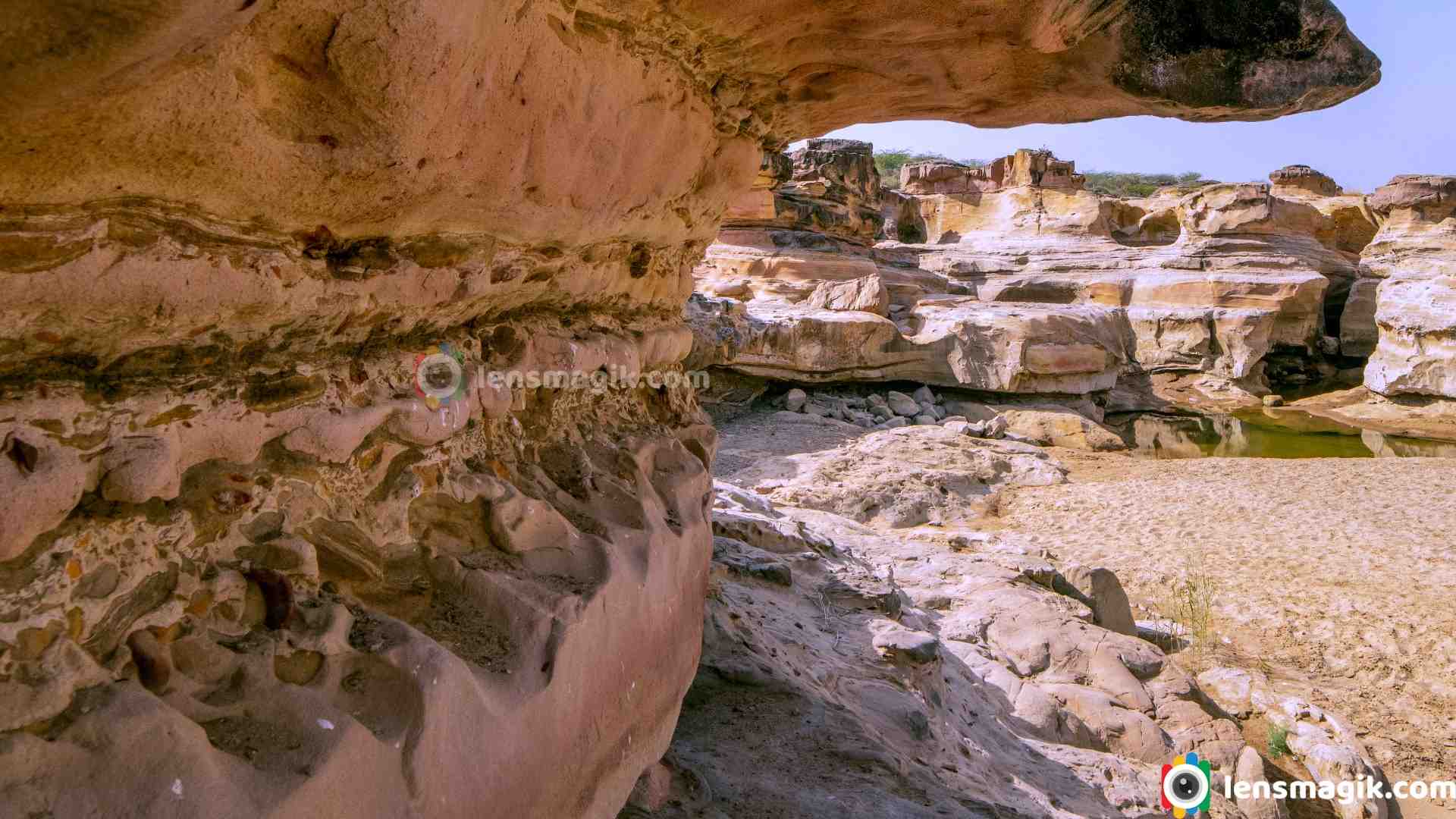
If you're looking for a unique and off-the-beaten-path destination in Gujarat, Kadiya Dhro is definitely worth considering. Also Kadiya Dhro is less crowded site so you can enjoy a lot without any disturbance. The local jeep allow you for 1 hour visit site but i suggest that reach early morning or late evening to watch sunrise or sunset and hire jeep for atleast 2-3 hours for better visit site. Also some places have good photographs to take with sunset and sunrise. We had a limited time for visit Kadiya Dhro so we reach in the afternoon in very sunny but still is good site to capture in your camera.
Photos Taken with : Canon 6D, Canon 80D, Samsund S22 mobile, DJI Mavic Air 2
Places to visit in Kutch : White Desert , Dholavira, Road To Heaven, Bhuj , Smritivan, Mandvi Beach, Vijay Vilas Palace
Read more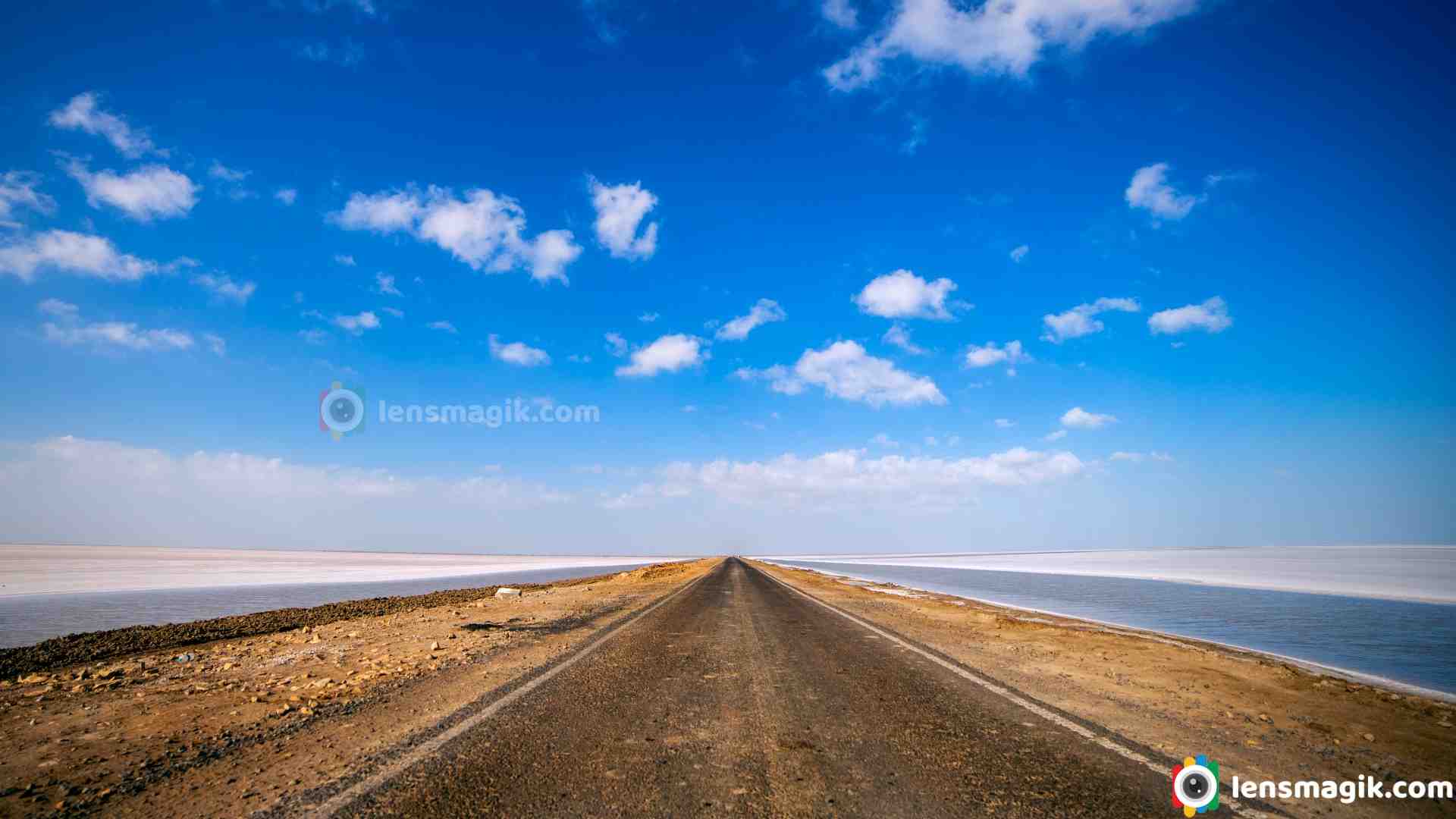
Road To Heaven is named to the road from Khavda to Dholavira in Kutch Gujarat. The road is so wonderful and scenery so it known as Road to Heaven . Khavda to Dholavira distance is around 58km but from Khavda there is a single line narrow road passes through small villages around 15-20 km approx. The main road starts after it and it is around 30-35 km approx. strait to Dholavira. Road is under constriction but almost 70-80% work done. The road heading to the city of Harappan Civilization Dholavira which is one of the largest site of Harappan Civilization and Indus valley Civilization.
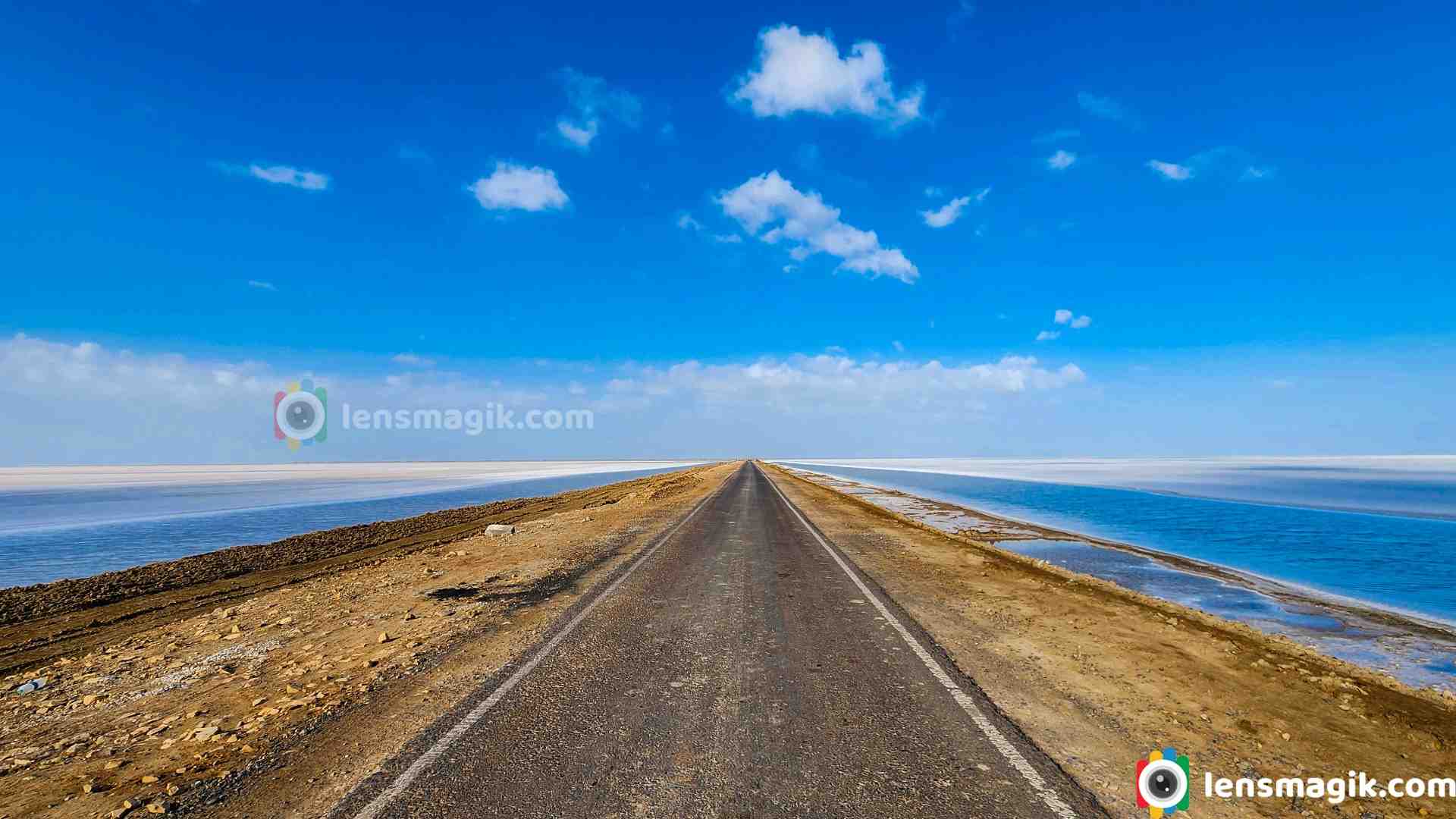
Kutch is a largest district of Gujarat and also of India. Main City or Headquarter of Kutch District is Bhuj. Kutch is famous for White Desert or White Rann. In Every winter season from December to February celebrate “ Rann Utsav “ to attract foreigners and also locals. Tent City made in white desert to stay and also cultural programs arranged in it. The main Rann Utsav held in Dhordo of Kutch.
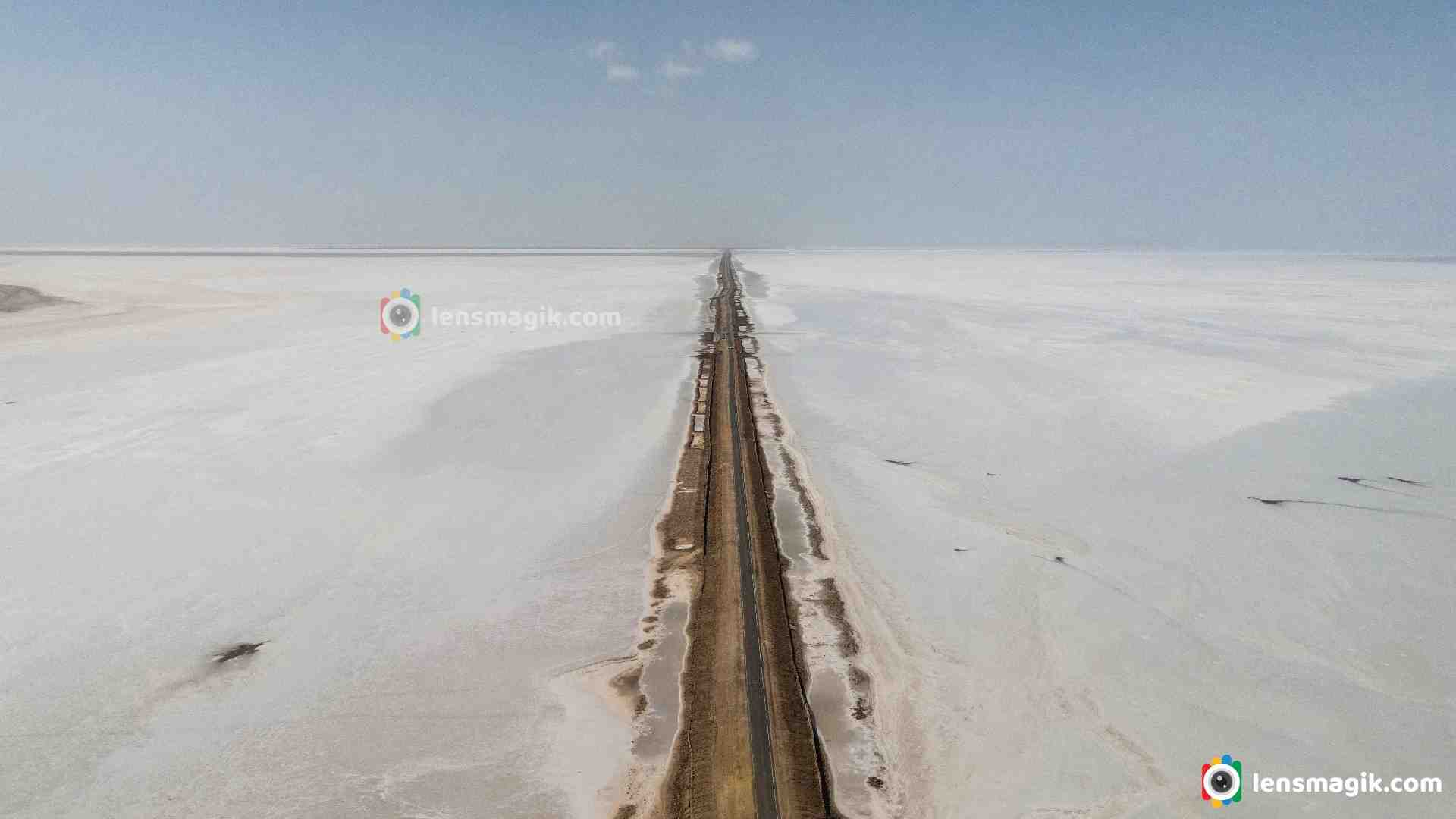
After visit White desert people also visit Dholavira which is nearest destination from Dhordo and also Kalo Dungar in between. From Dhordo you will have to go Khavda first and then from Khavda to Dholavira which is connected through “ Road To Heaven “. Dholavira is located at Khadir Bet. Khadir bet is separated because after monsoon the water filled outer side of bet. So the Road To Heaven is the way to connect Khadir bet to main city Bhuj.
About Road To Heaven Dholavira / Road to Heaven in Kutch :
- · It connected from Khavda to Dholavira.
- · Road to heaven distance around 30-35 km.
- · After monsoon the rain water on the both side of the road. You can see beautiful Greater Flamingo birds in between. Water level is low but muddy.
- · After winter in January –February the water on both side of the road is evaporated and turn into salt. Not all water but some areas during the road.
- · Water on the both side of the road or Salt/ white layer on both side of the road make the beauty of the road and that’s why it name as “ Road To Heaven “
- · When you are on the road there is hardly some traffic you face the open road with both side water or salt at morning or evening make the scenery like a Heaven.
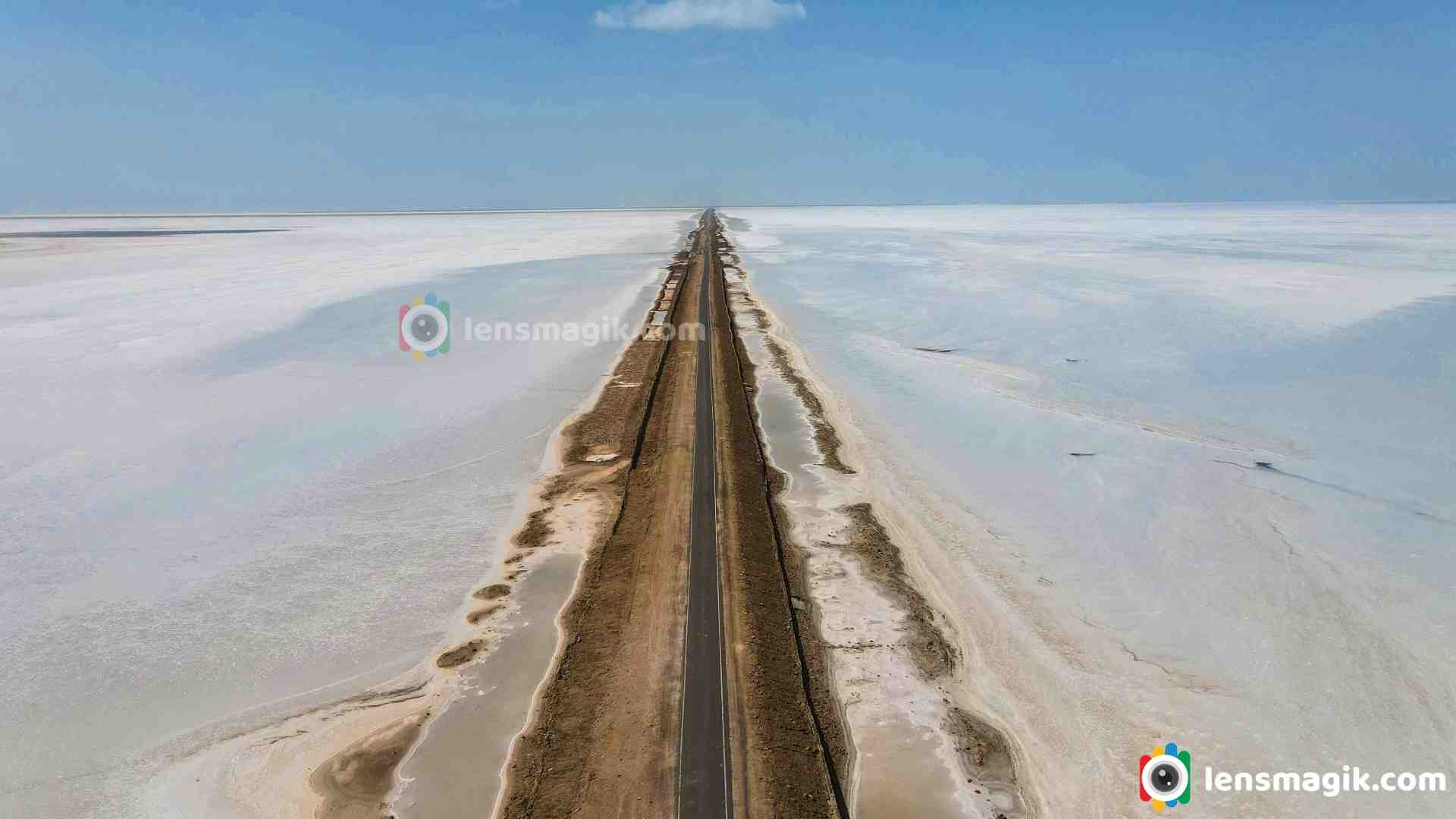
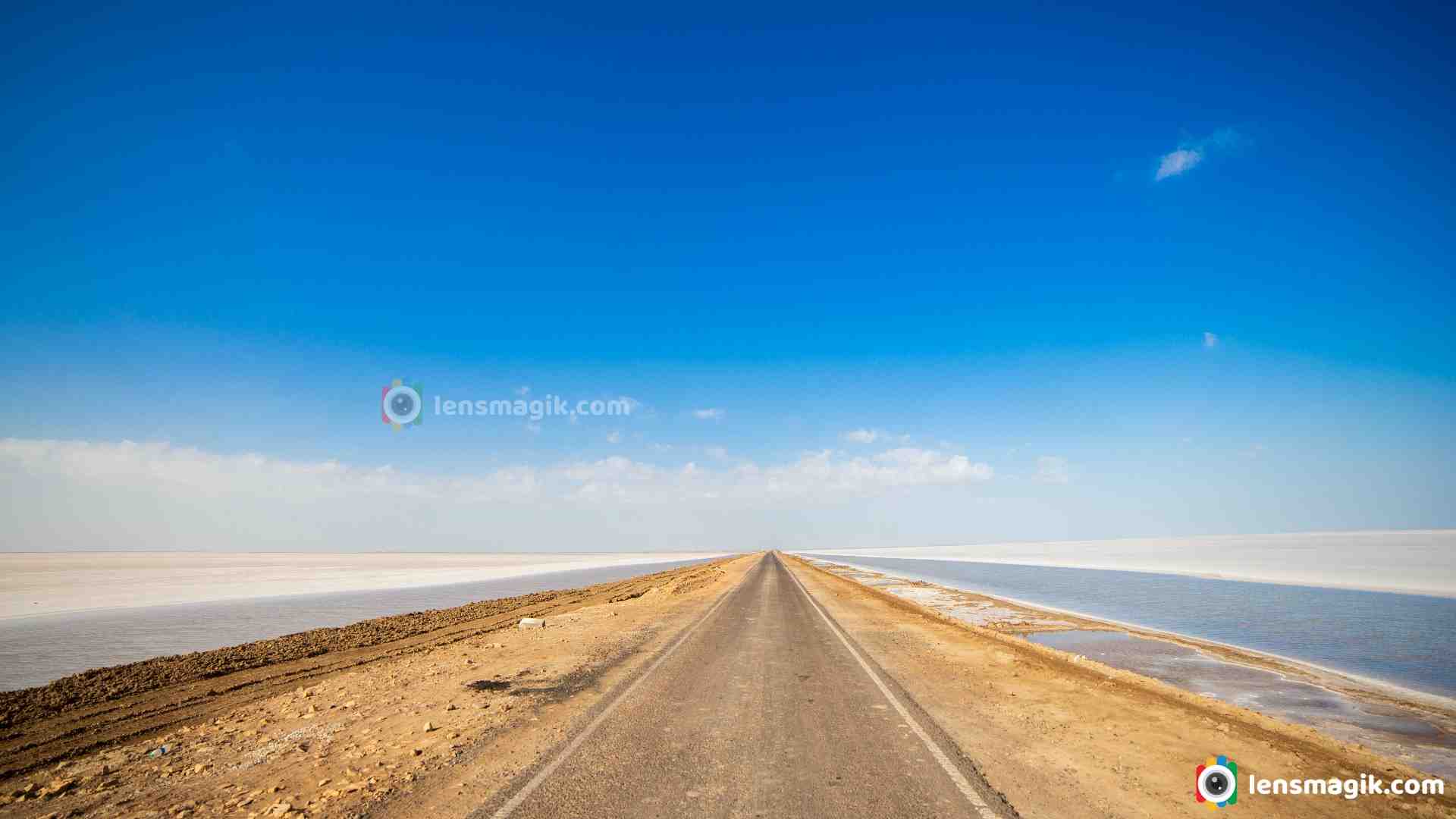
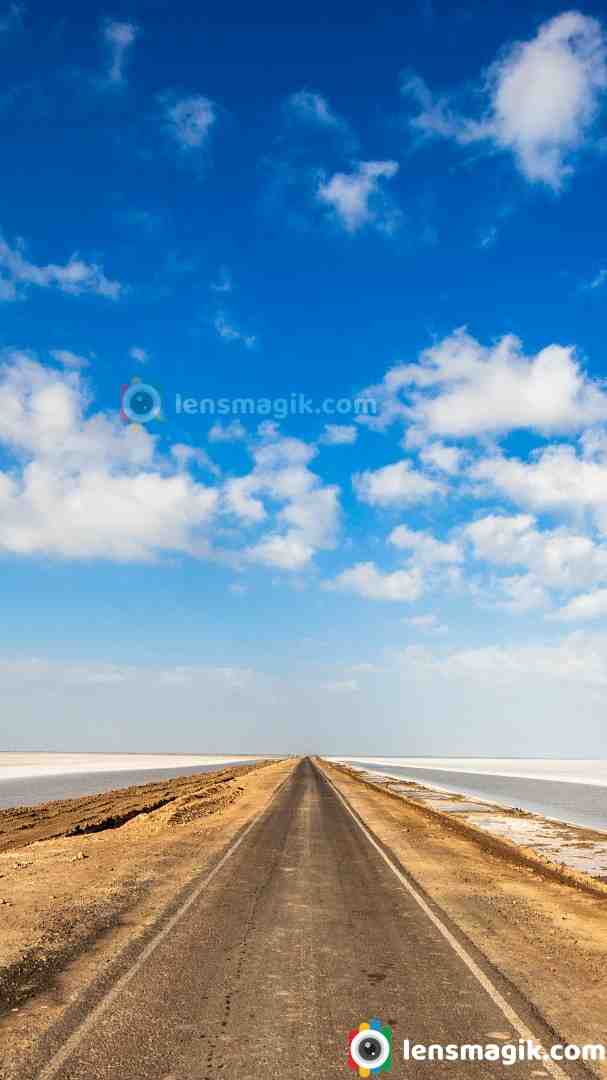
I must suggest to visit Road To Heaven in Kutch while you visit Kutch. Also Visit Dholavira which is one of the largest Harappan Civilization site.
Places to visit near Road To Heaven :
Dholavira, Kalo Dungar, Dhordo, White Desert
Places to Visit near Bhuj : White Desert , Kadiya dhro, Chhatardi, Mandvi beach, Vijay vilas palace, Bhujyo Dungar, Smriti Van, Vande matram memorial
Camera Used : Canon 80D, Canon 6D, DJI Mavic Air2
Read more
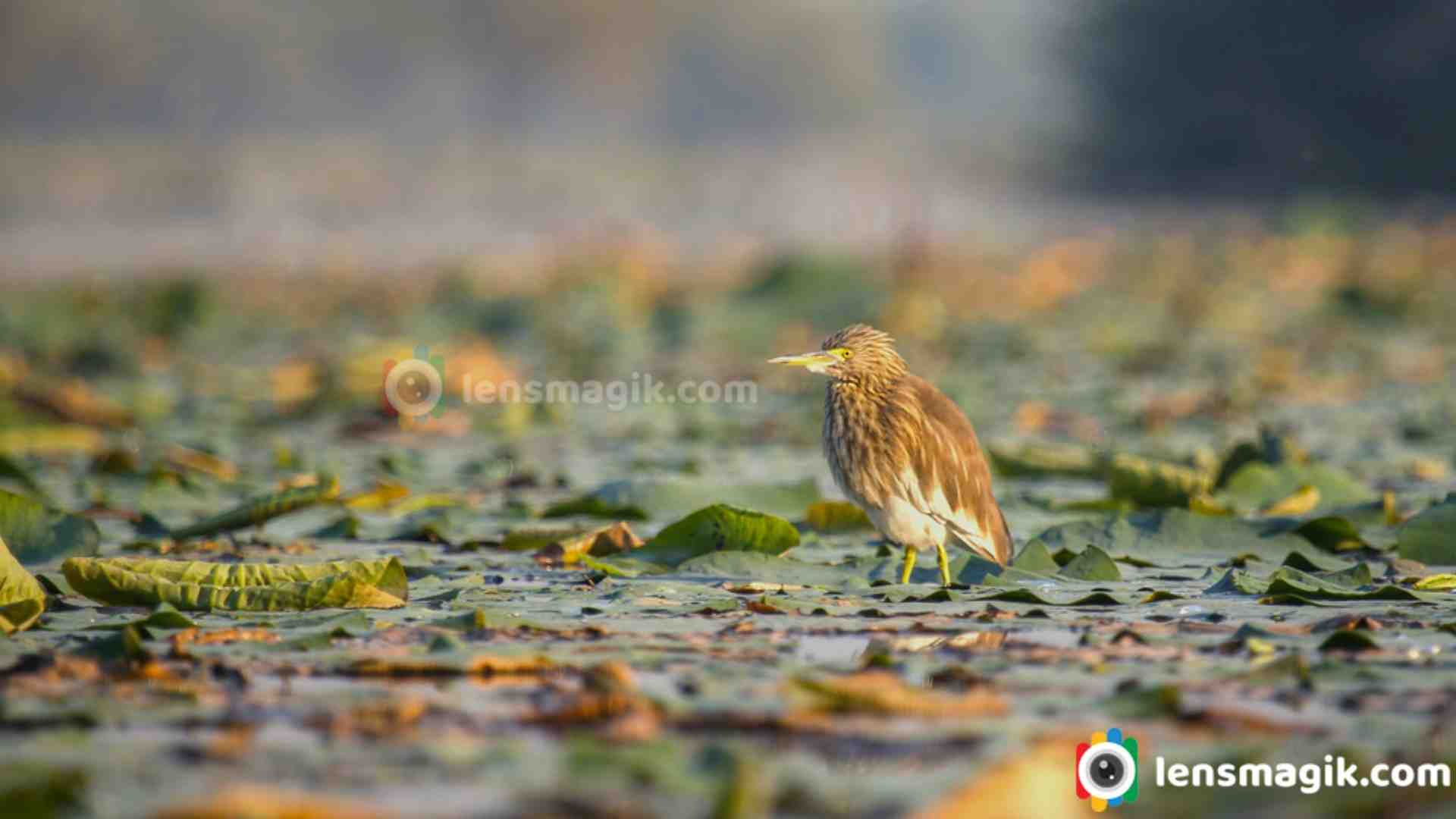
The Indian pond heron is also known as the paddybird. It is a small heron bird which found in southern Iran and east to the Indian subcontinent, Burma, and Sri Lanka. It's a widespread and common bird, but you might easily miss it while it's stalking prey at the edge of small bodies of water. I found it at Thol Bird Sanctuary in Gujarat. Also found in agriculture areas, canals, farms and many more sanctuary like Nal Sarovar, Velavadar sanctuary, Pariej Wetland etc.

Some
interesting facts about the Indian pond heron:
- They are stocky birds with short necks, short thick
bills, and buff-brown backs.
- In summer, adults can grow long neck feathers.
- Their dull colors transform when they take flight, and
the white of their wings makes them very prominent.
- Indian pond Heron are similar to the squacco herons,
but back is darker.
- During the breeding season, some individuals may
have red legs.
- They are solitary foragers, but a large number of
them may feed together during dry seasons when small wetlands have a high
concentration of prey.
- Indian pond herons are semi-colonial breeders. They
nest in small colonies, often with other wading birds, usually on
platforms of sticks in trees or shrubs.
- Their diet mainly consists of insects, fish, and
amphibians.
During
breeding season, the Indian pond heron sheds its drab disguise for a more
vibrant look. Males develop a reddish-brown back that pops against their
yellowish head, neck, and breast. This colorful plumage is a sure sign that the
heron is ready to find a mate and raise a family.
The Indian
pond heron is a bird of freshwater wetlands. It is found at rice paddies,
marshes, ponds, and canals, patiently stalking its prey in shallow water. Fish,
frogs, insects, and even small reptiles are all on the menu for this
opportunistic eater. Indian pond herons can sometimes be seen feeding in close
proximity during dry seasons when prey concentrates in shrinking water bodies.
While typically solitary feeders, Indian pond herons come together for breeding. They form semi-colonial nesting sites, often in trees or shrubs near water. These colonies can sometimes house other wading bird species, creating a bustling neighborhood of feathered friends.
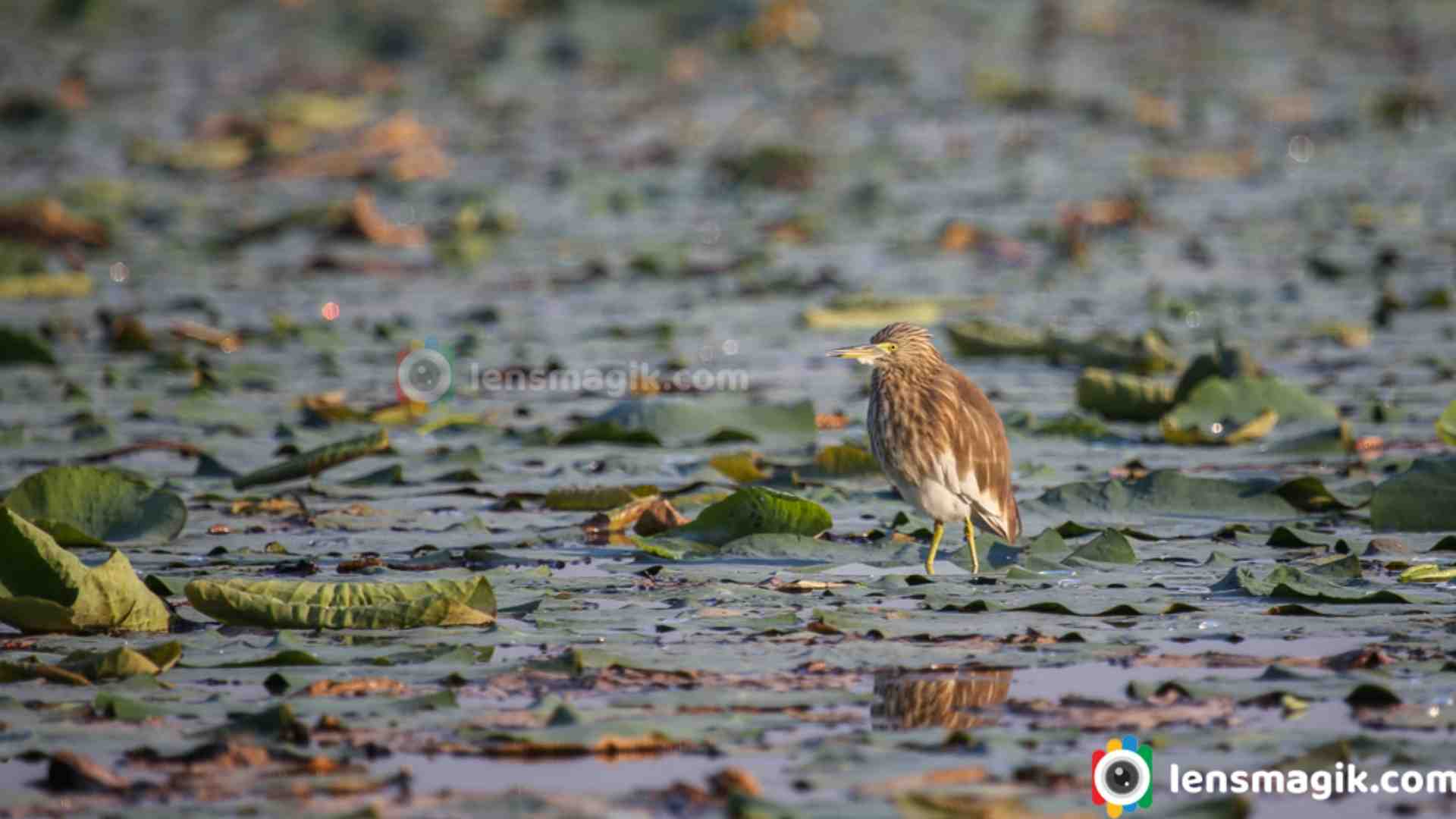
A
Bird of Least Concern
Thankfully,
the Indian pond heron is classified as a species of Least Concern by the IUCN.
Its widespread range contribute to its healthy population. However, threats
like habitat loss due to pollution and development remain a concern.
Have
you ever spotted an Indian pond heron? These remarkable birds are a testament to nature's
wonders, showcasing both the art of camouflage and the beauty of
transformation. Keep your eyes peeled next time you visit a wetland – you might
just be lucky enough to witness this little wonder in action.
Location
in Gujarat : It is
widely spread bird in Gujarat also.Indian pond heron found in many bird
sanctuaries in Gujarat like Nal Sarovar Bird sanctuary, Thol Bird sanctuary,
Pariej Wetland, and many more wetlands, farms, agriculture areas and canals
too.
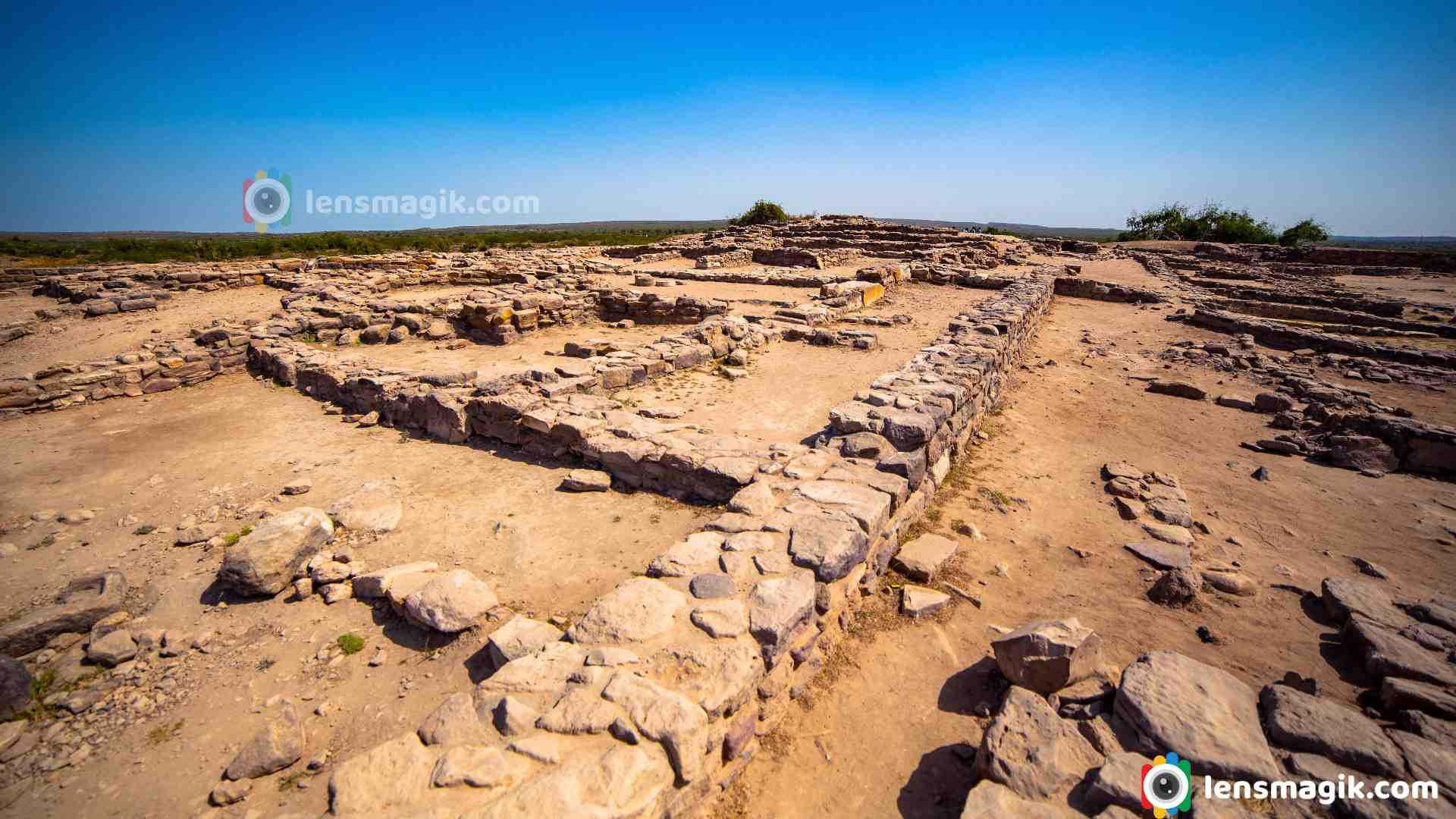
Dholavira is located in Bhachau taluka in Kutch District of Gujarat. Dholavira is archeological site and it is one of the largest Harappan site among 5 sites. You can go to Dholavira by passing Road to Heaven which is finest route both side salt water. It is also a world heritagesite of UNESCO. Dholavira is located on Tropic of Cancer. It is located on Khadir bet island in the Kutch Desert wildlife Sanctuary. It is in the Greate Rann of Kutch belonging to Indus River. The site was discovered by Shambhudan Gadhvi in 1960. After his effort site was officially discovered in 1967-1968 by archeological survey of India. Total 8 Harappan site and Dholavira is one of the largest site among them. Other major Harappan site discovered are Harappa, Ganeriwala, Mohenjo-Daro, Kalibangan, Rupnagar, Rakhigarhi and Lothal. Dholavira was important center for trade between central Asia, south Gujarat, Punjab and Sindh. The excavation was started by ASI in 1989. There were 13 field excavation between 1990 to 2005.
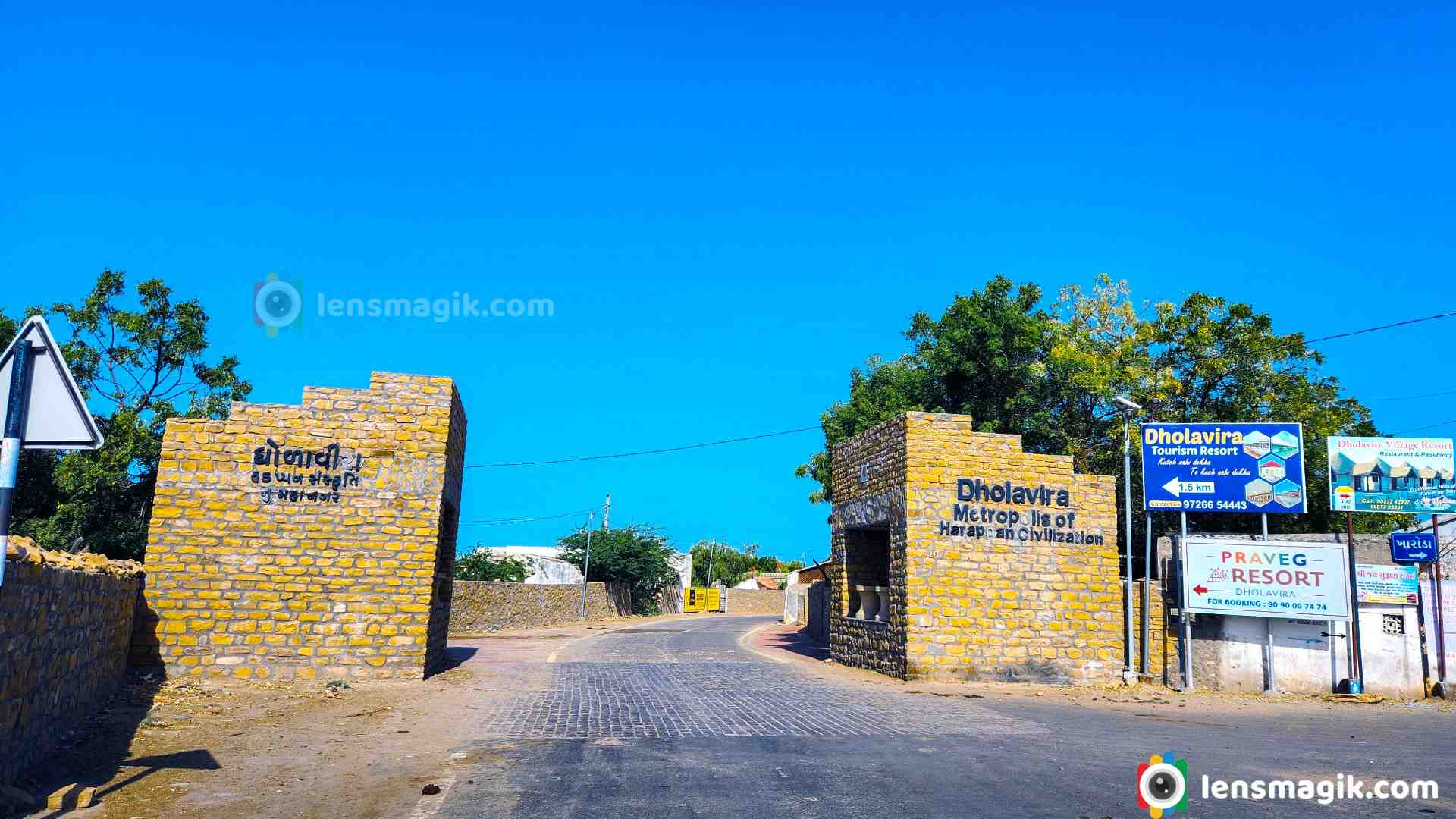
City Plan of Dholavira :
Dholavira city is in rectangular shape. It spread over 54 acers and total area measures length around 2530 ft and width around 2023.8 ft. City Dholavira is divided in 3 parts as The Citadel, The Middle Town and The Lower Town. The Castel is double in height and bailey area near the castle is where important officials were lived. Middle town has own defense, gates, streets , well systems and large open spaces. Lower town for lower workers which has no boundary walls. In Dholavira there are 2 rivers flown one is Manhar in the south and Mansar in the North side.
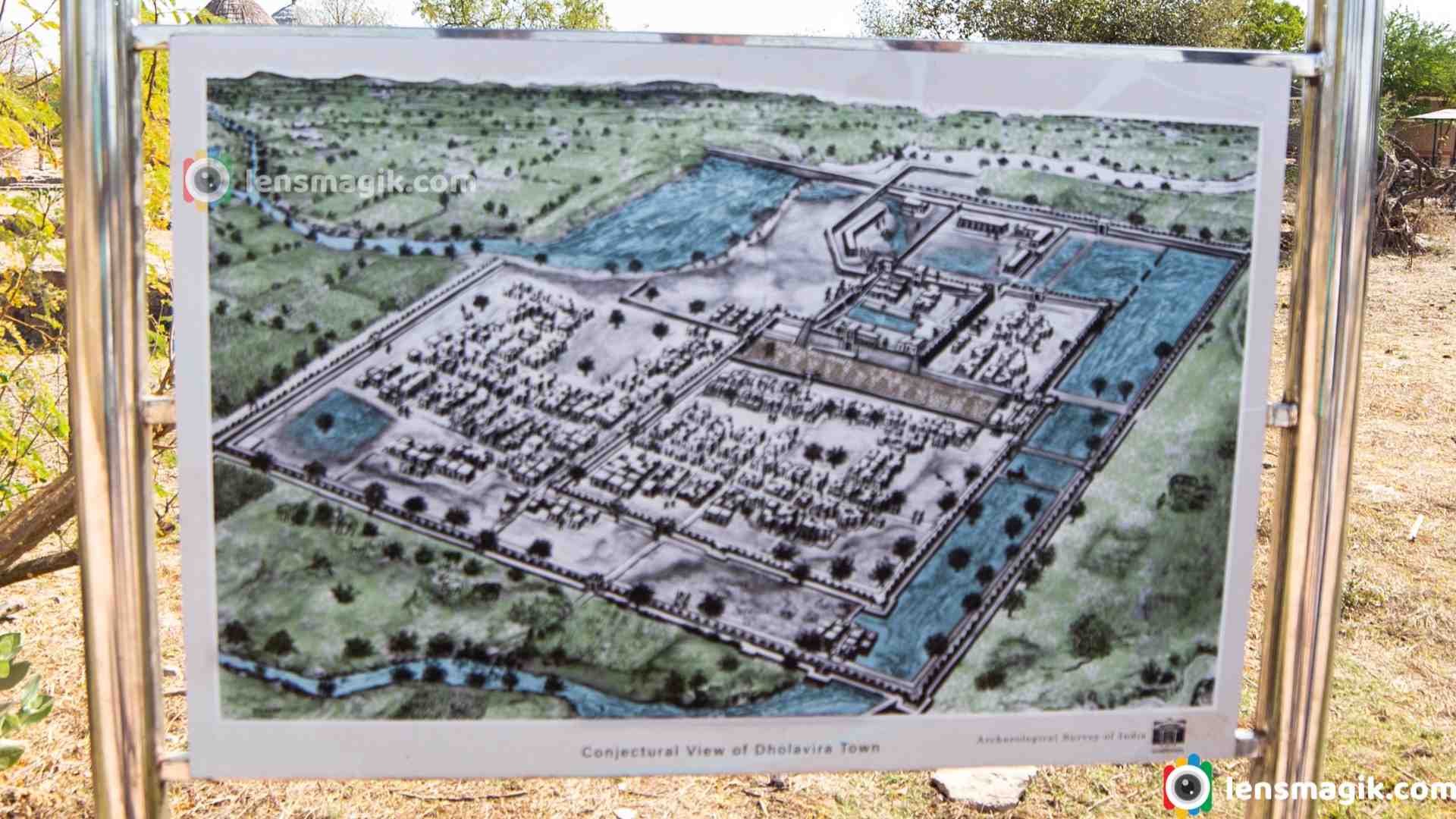
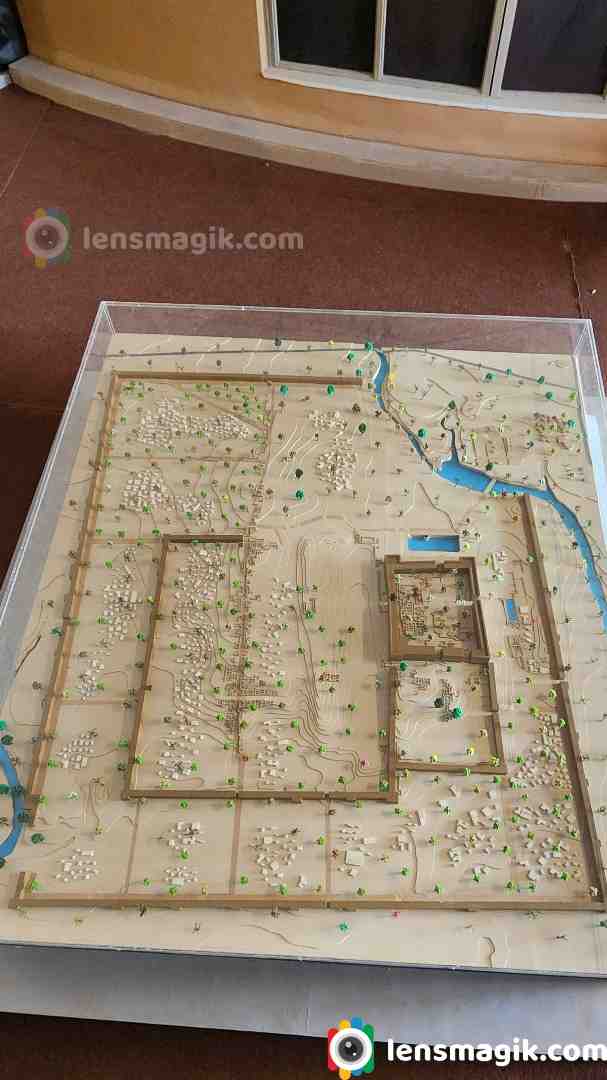
Water storage system/
Reservoirs :
Water harvesting and storage system of Dholavira says about advance hydraulic engineering in third millennium BCE. The unique features of Dholavira is water conservation system of reservoirs and channel systems which was never found anywhere in the world before. They store rain water which diverted into rivulets. The system for water harvesting is for long time preserve fresh water in Kutch climate where sometimes rain may not fall for years. Reservoir are cut through stone about 23 ft deep and 259 ft long. Total 16 or more reservoir created of different size.
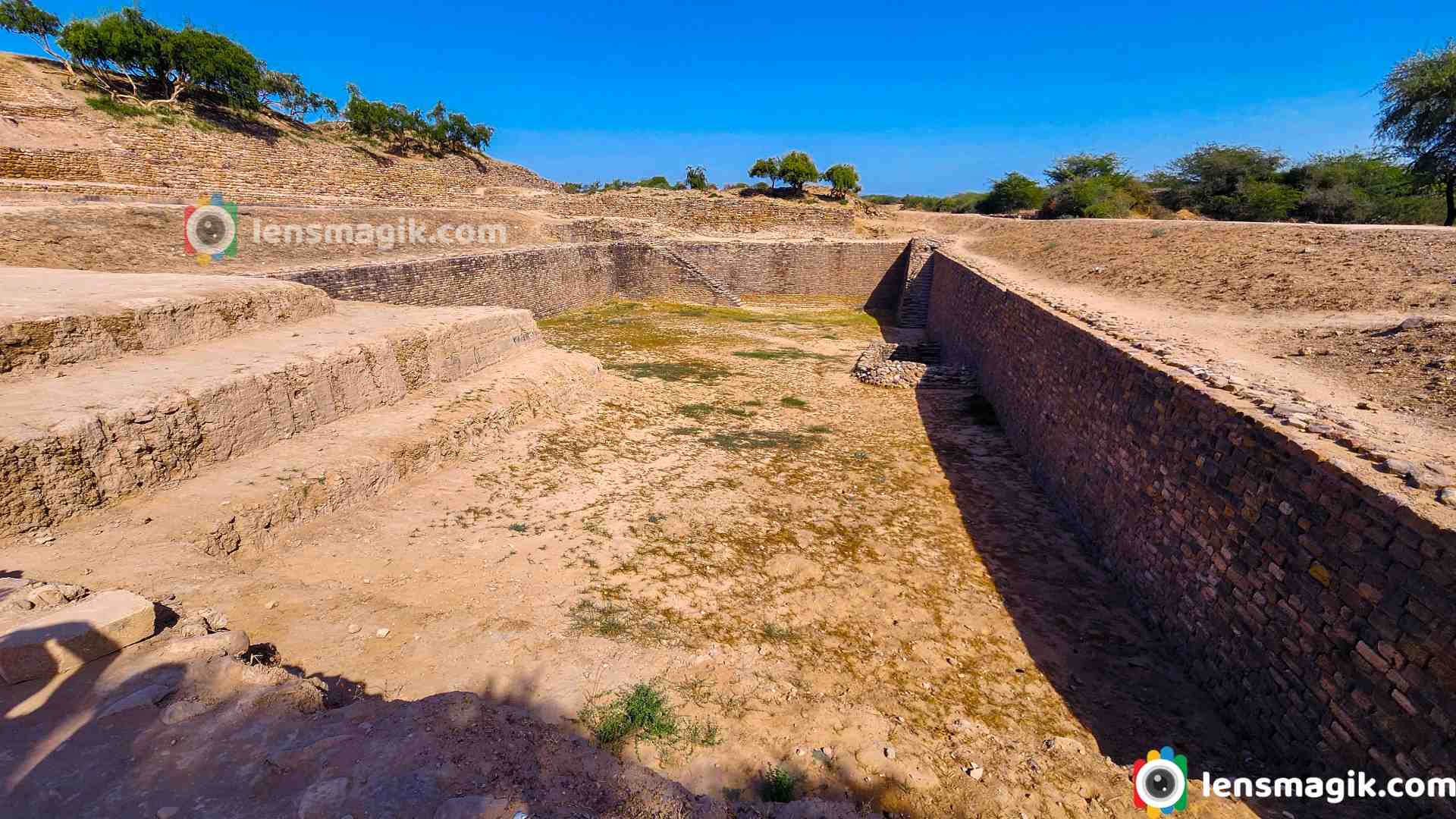
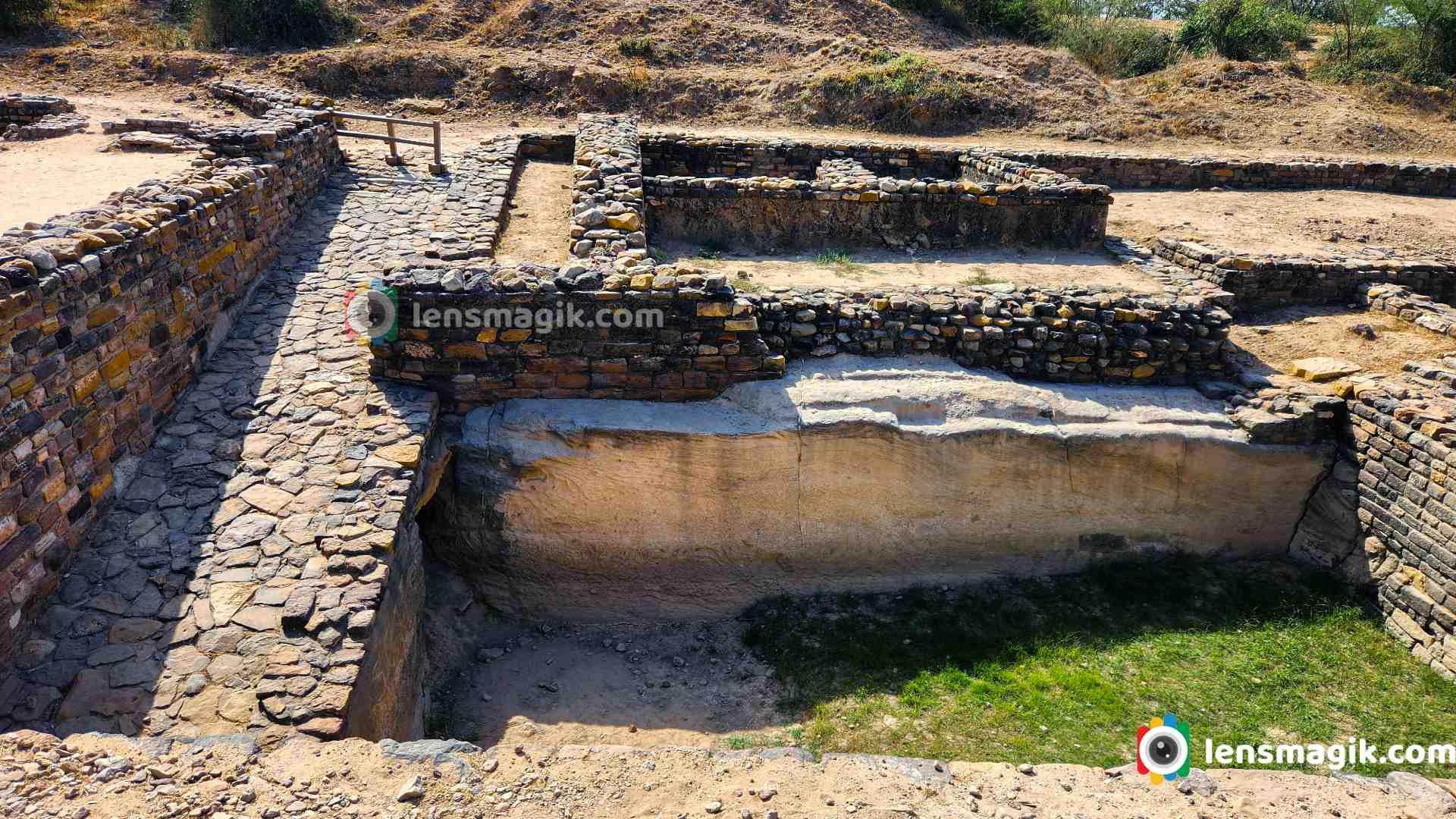
A huge sign board found around 9.8 ft long on which 10 letters of Indus script. The costal route existed linking Lothal and Dholavira to Sutkagan Dor on the Makran coast.
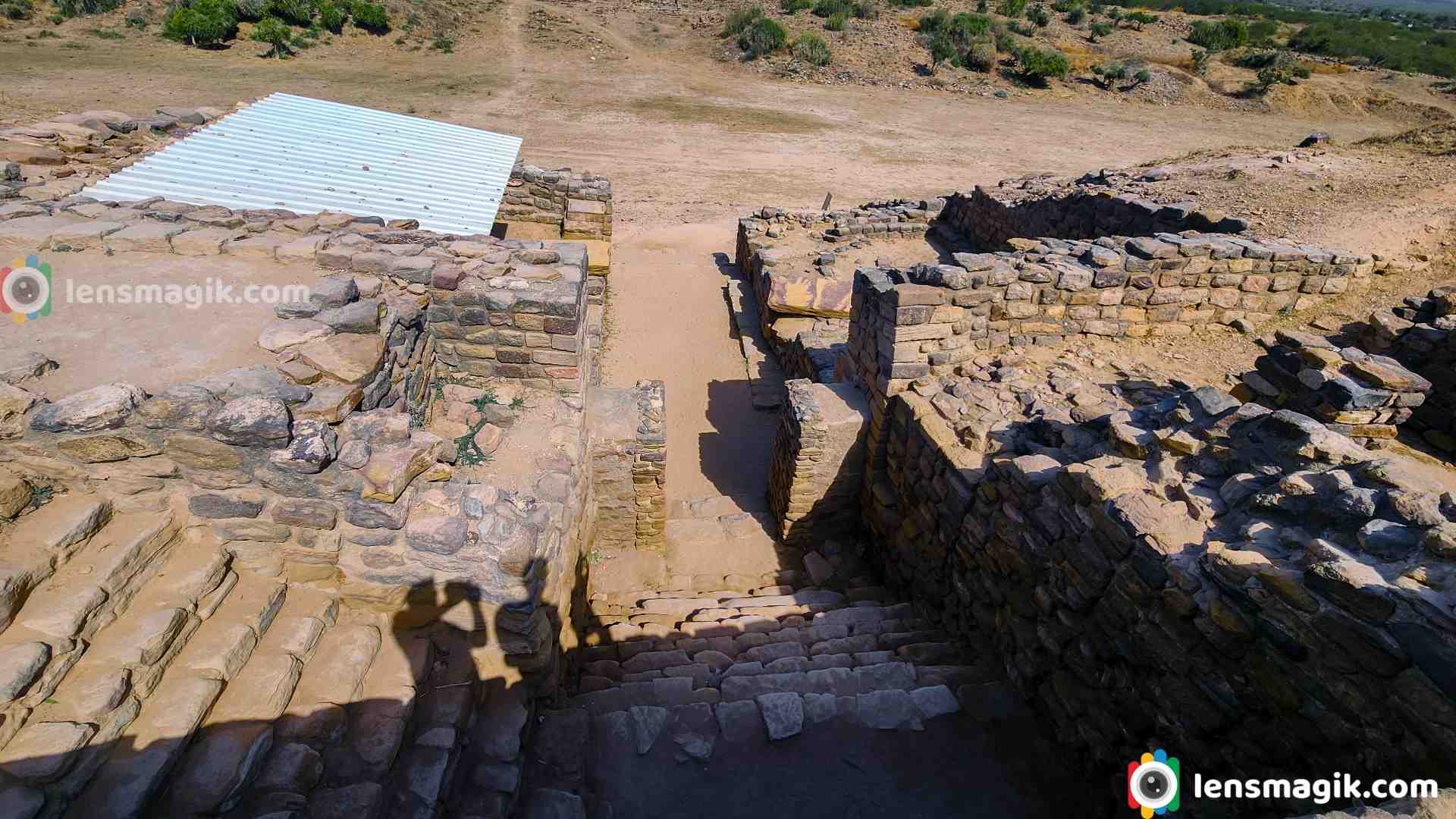
Language :
The Harappan spoke an unknown language. The Script which was found on large sign board not yet deciphered.
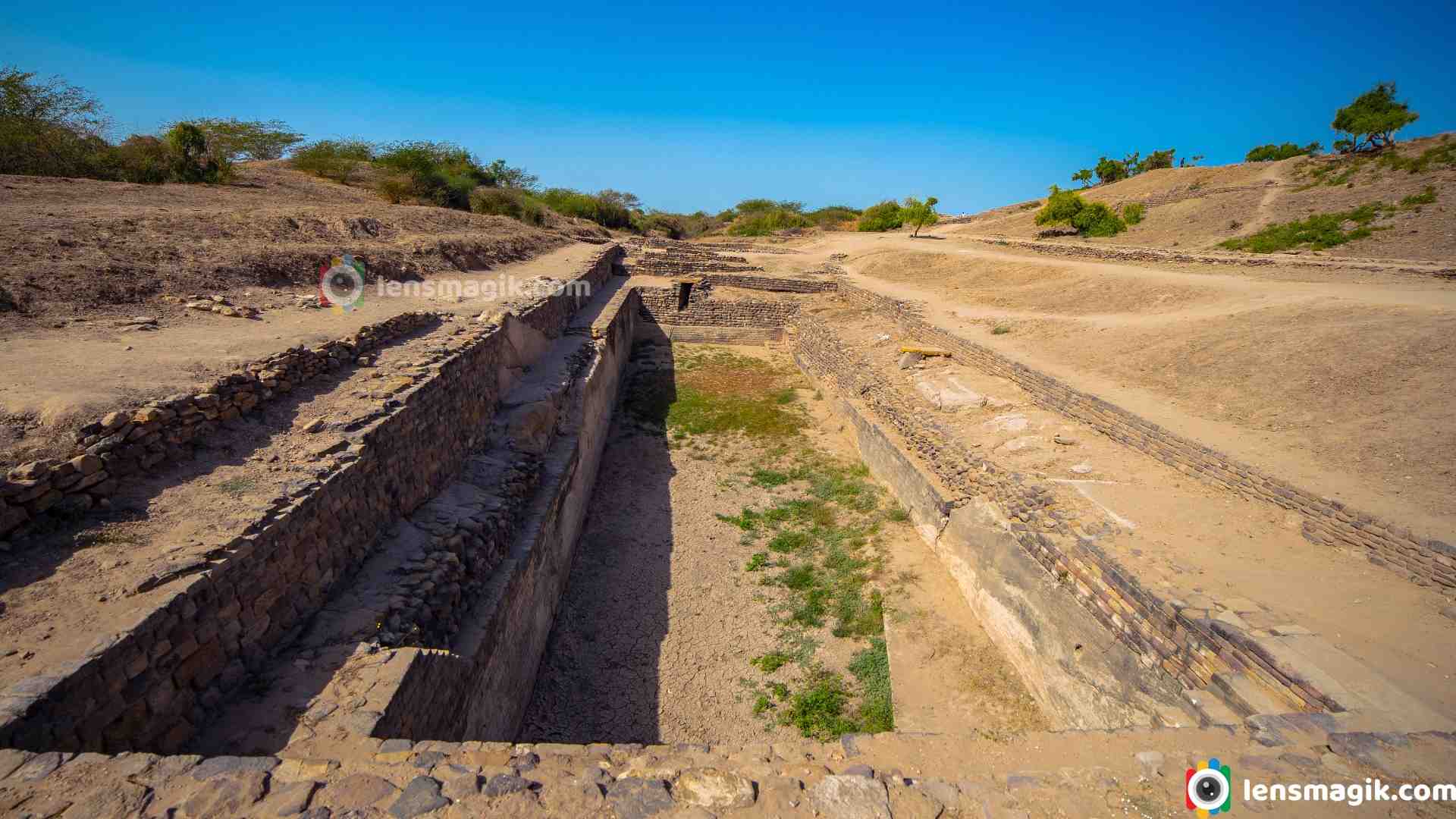
Chronology of Dholavira :
|
Cultural
Stages |
Chronology |
Cultural
Affiliation |
Culture |
Period |
|
Stage
VII |
c.
1500-1450 BCE |
Post
Harappan |
Late
Harappan |
Period 5 |
|
Stage VI |
c.
1950-1800 BCE |
Late
Harappan |
Late
Harappan |
Period 4 |
|
Stage V |
c.
2100-2000 BCE |
Harappan |
Harappan |
Period 3 |
|
Stage IV |
c.
2500-2100 BCE |
Harappan |
Harappan |
Period 3 |
|
Stage
III |
c.
2800-2500 BCE |
Dholavira
Culture |
Kot
Dijian |
Period 2 |
|
Stage II |
c.
2900-2800 BCE |
Dholavira
Culture |
Ravi/
Hakra |
Period
IA & 1B ( starting before 3700 BCE ) |
|
Stage I |
c.
3000-2900 BCE |
Dholavira
Culture |
Ravi/
Hakra |
Period
IA & 1B (starting before 3700 BCE ) |

While visit Kutch Dholavira is must visit site in your itinerary. You can visit Dholavira with family to know about old architecture, business coastal area via sea, living things and utensils and most important is water harvesting system. While visit Dholavira must take a guide to know every structure in detail it will cost around 500 INR per group but worth it.
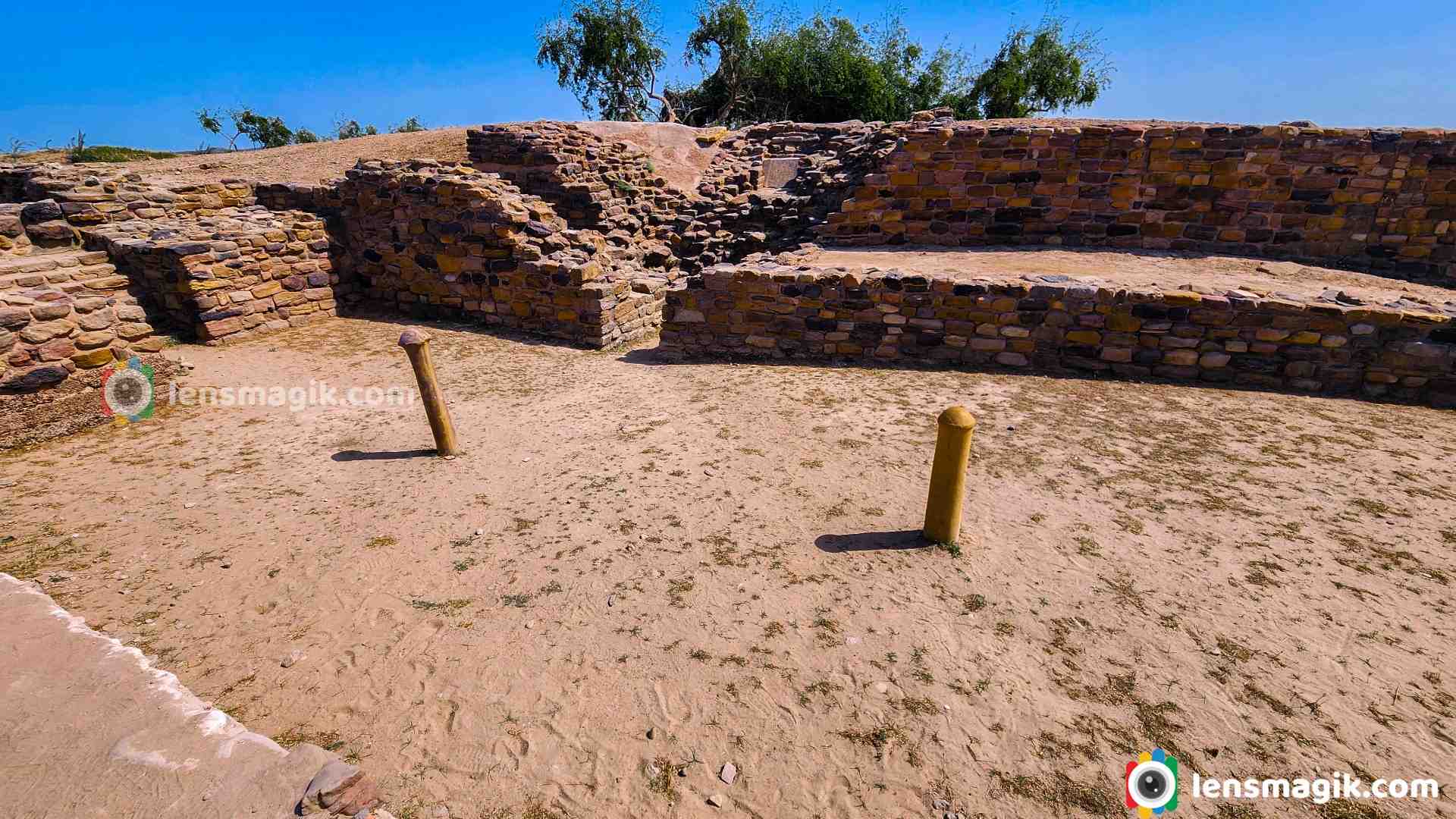
How To reach Dholavira :
Dholavira is 130 km from Bhuj. Bhuj is main city in Kutch where you find airport , railway stations and bus transports. From Bhuj Dholavira around 2 hr 40 min distance. Road is very good just from Khavda road is single line and narrow for half an hour. After it the Road To Heaven started around 30-40 km long and the road is fantastic both side water after monsoon and after evaporate water you can see salt a white desert both side of road.
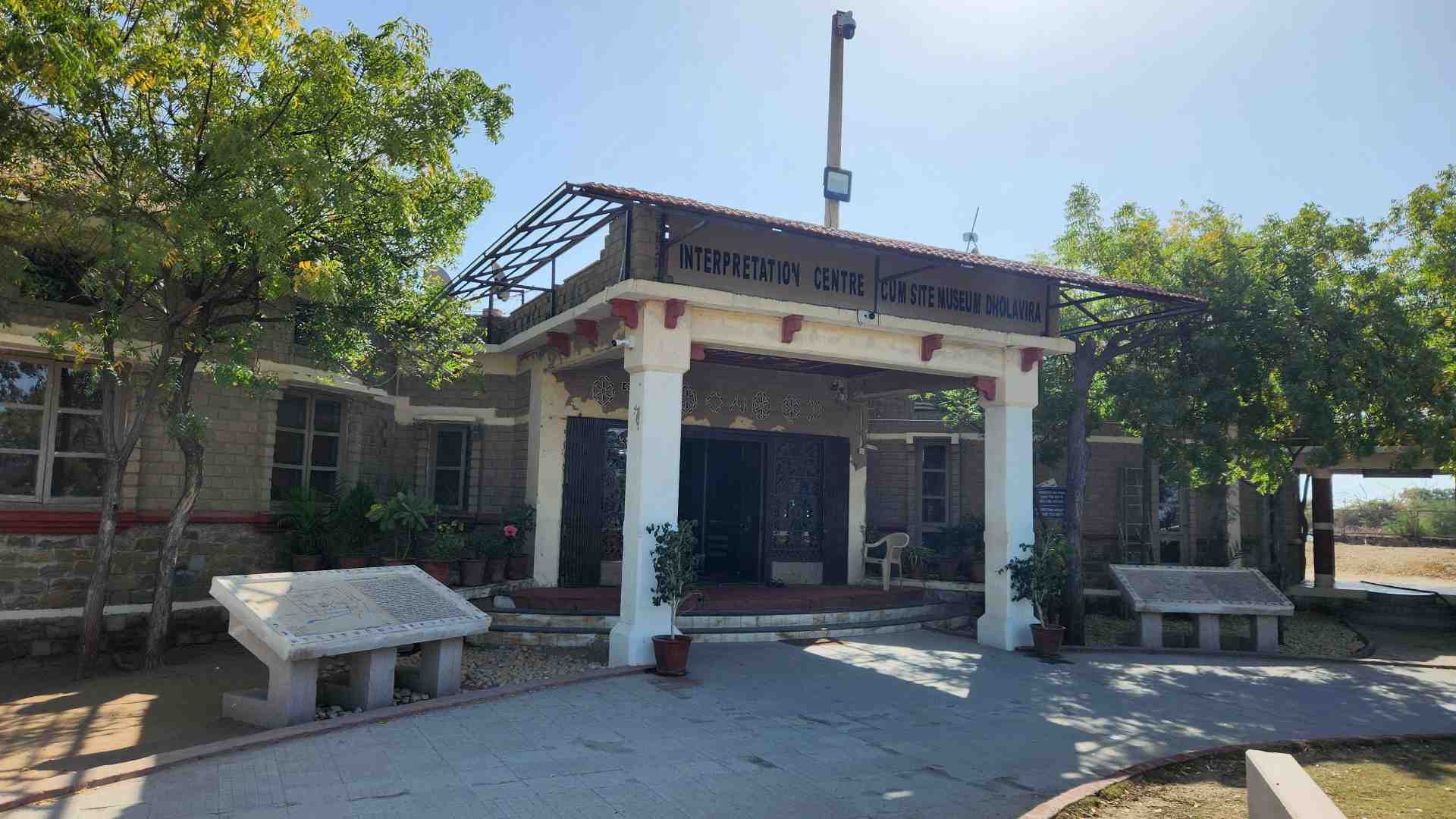
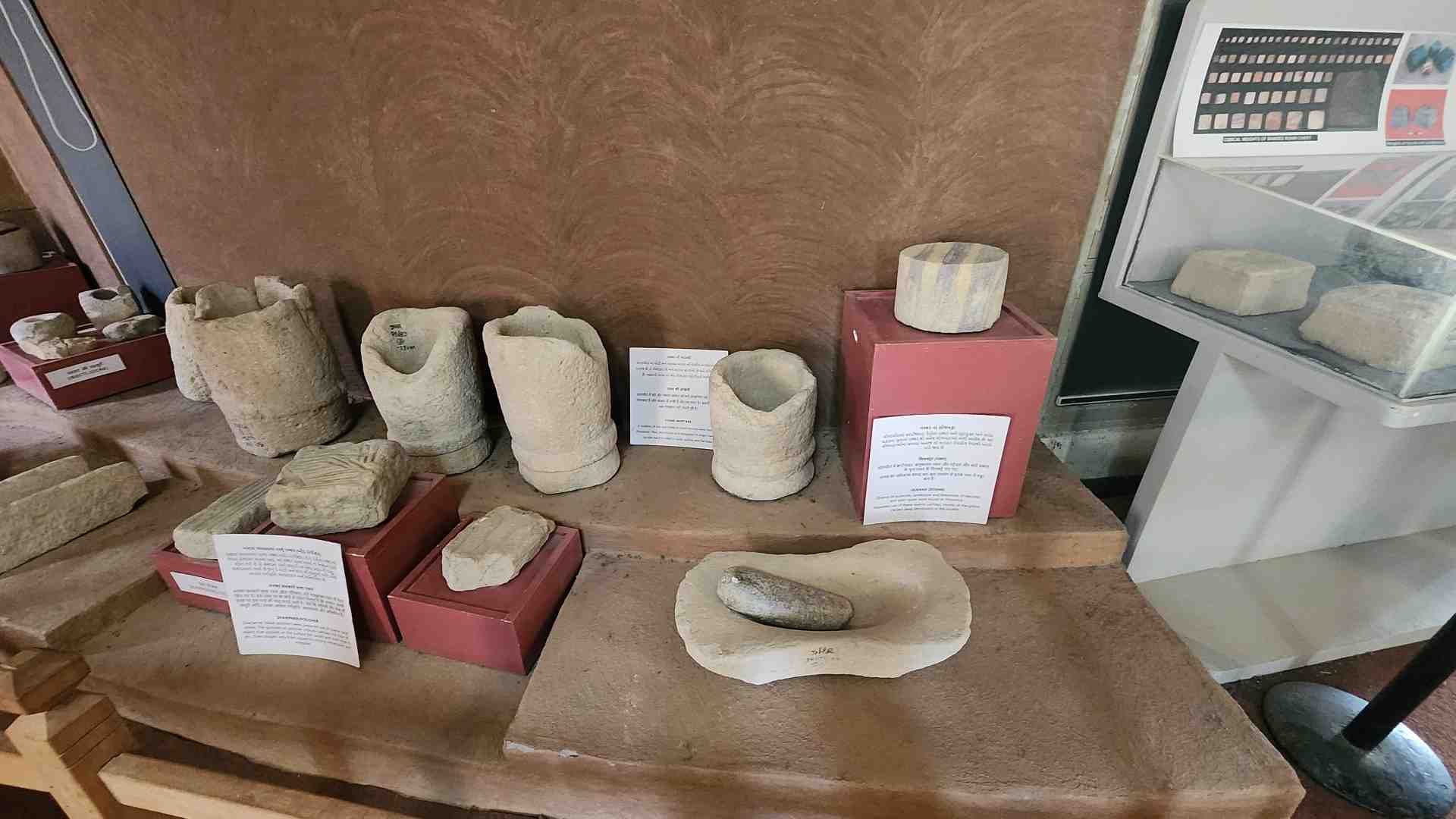
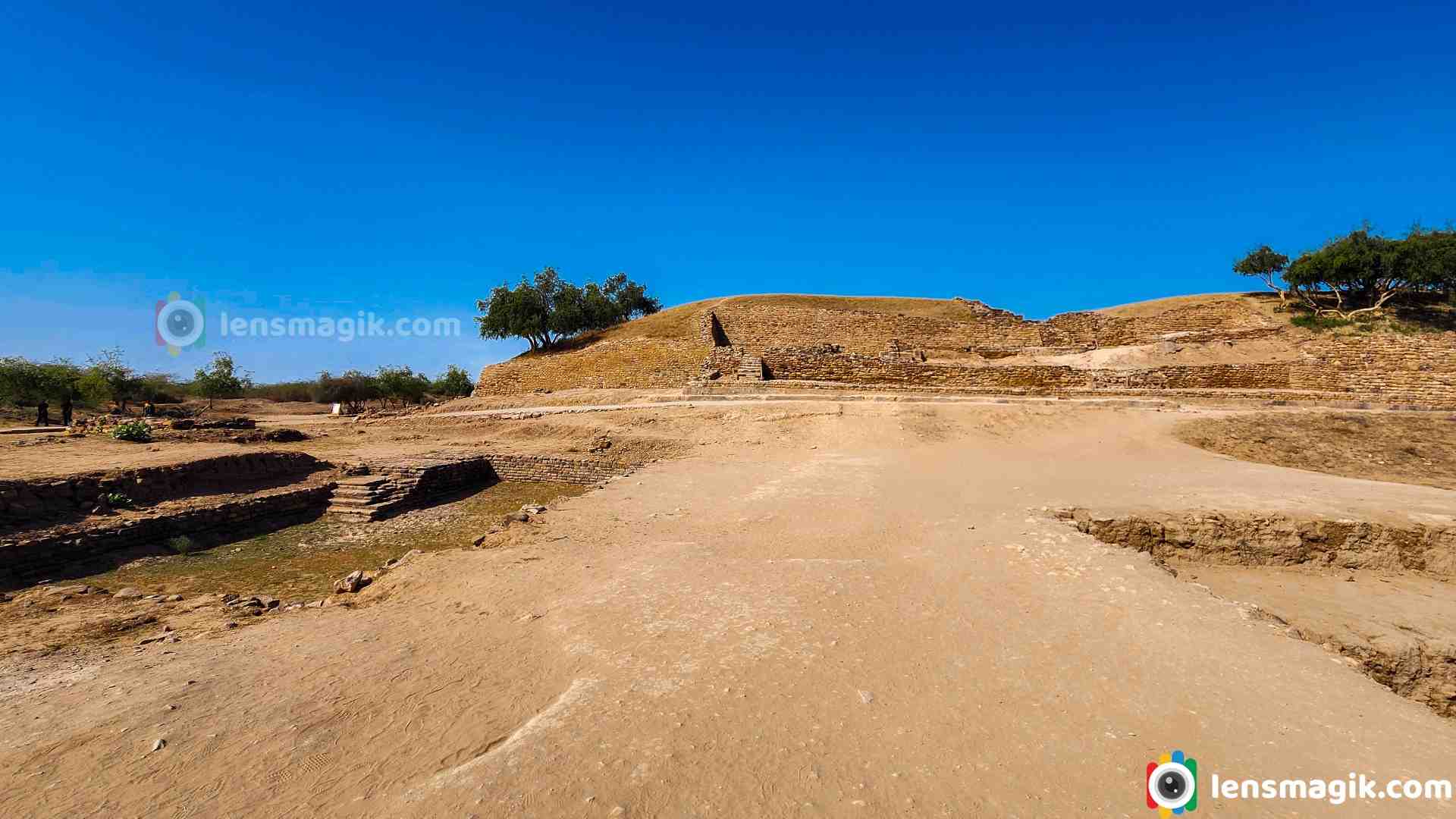

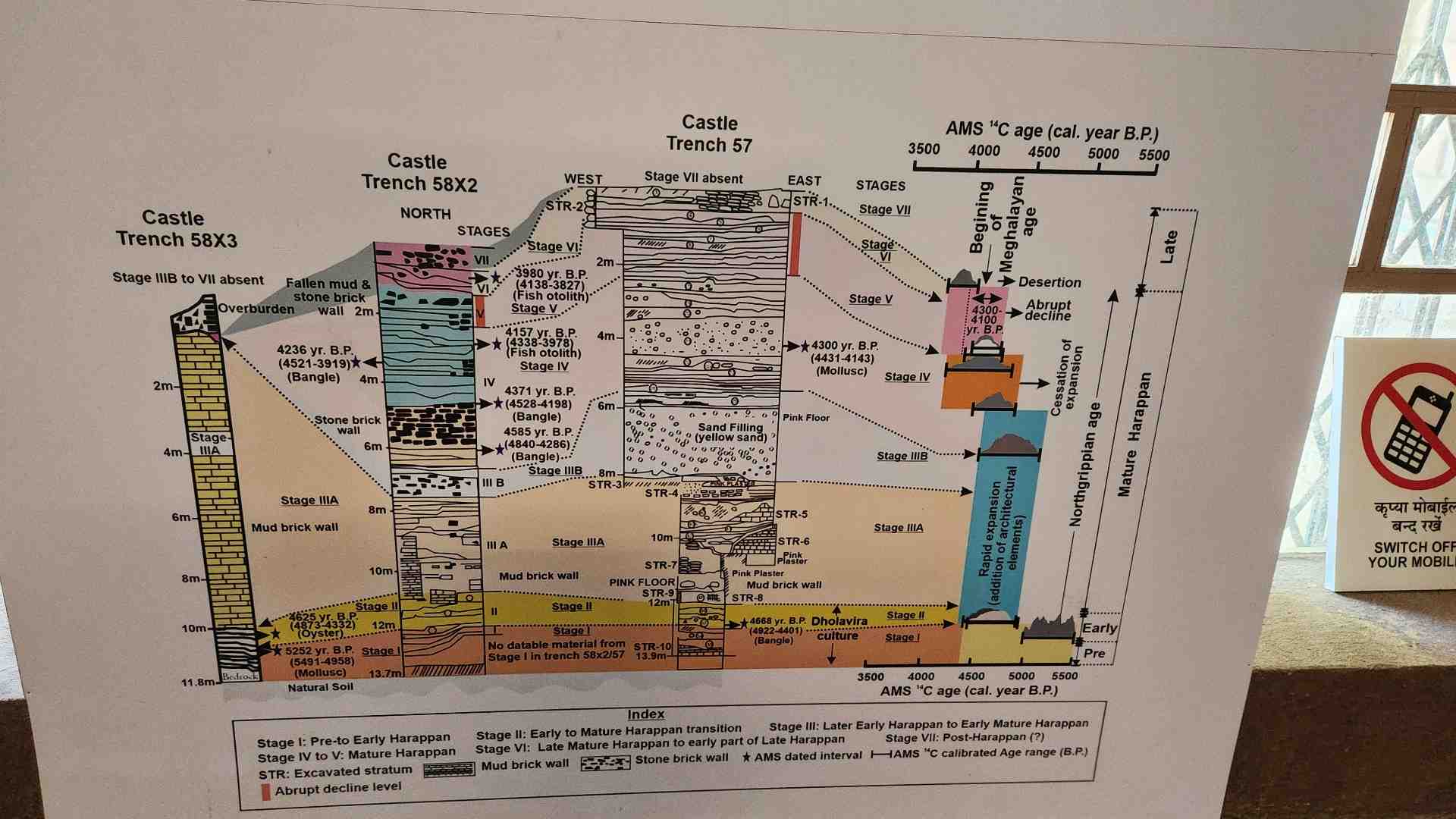
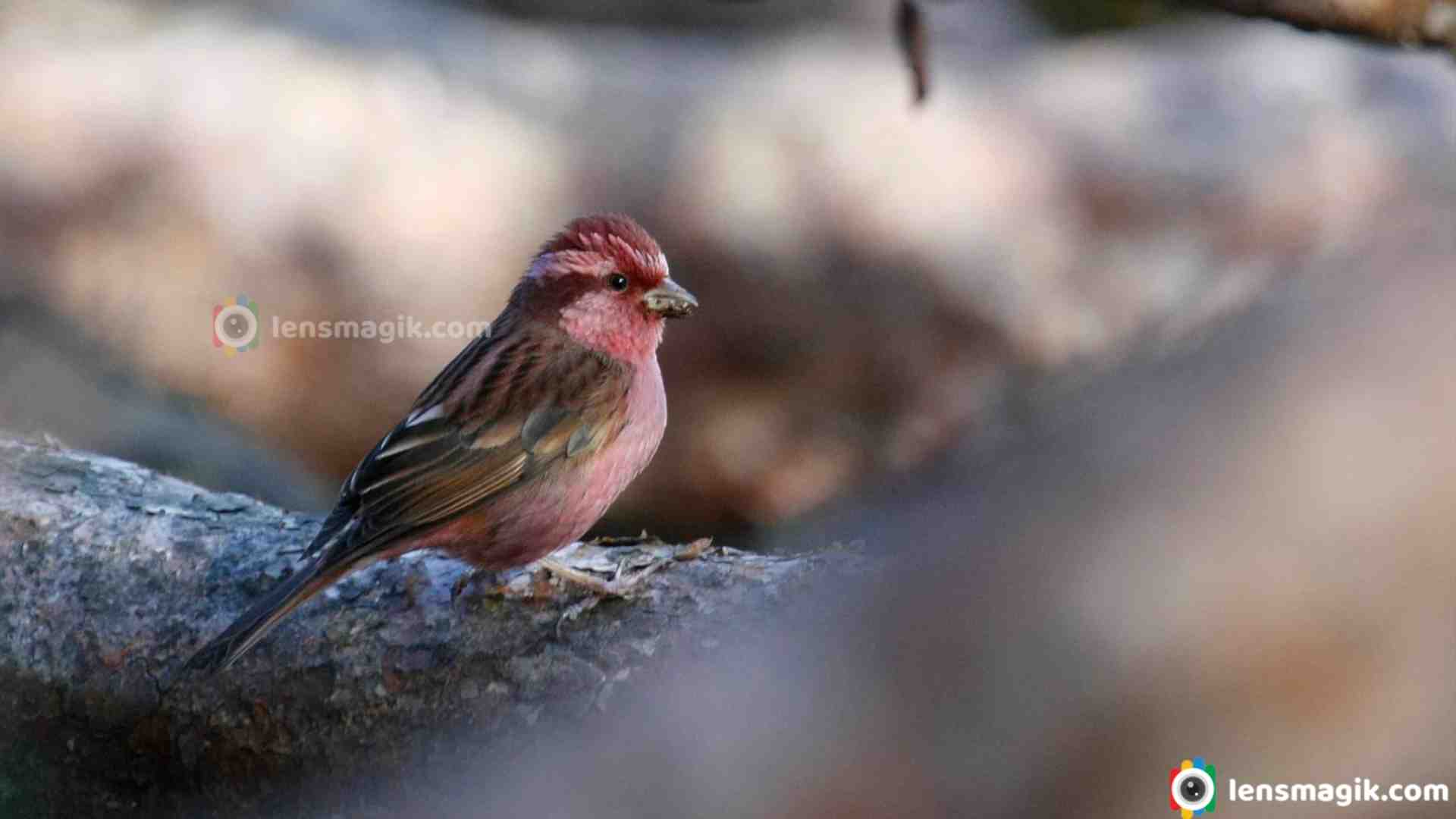
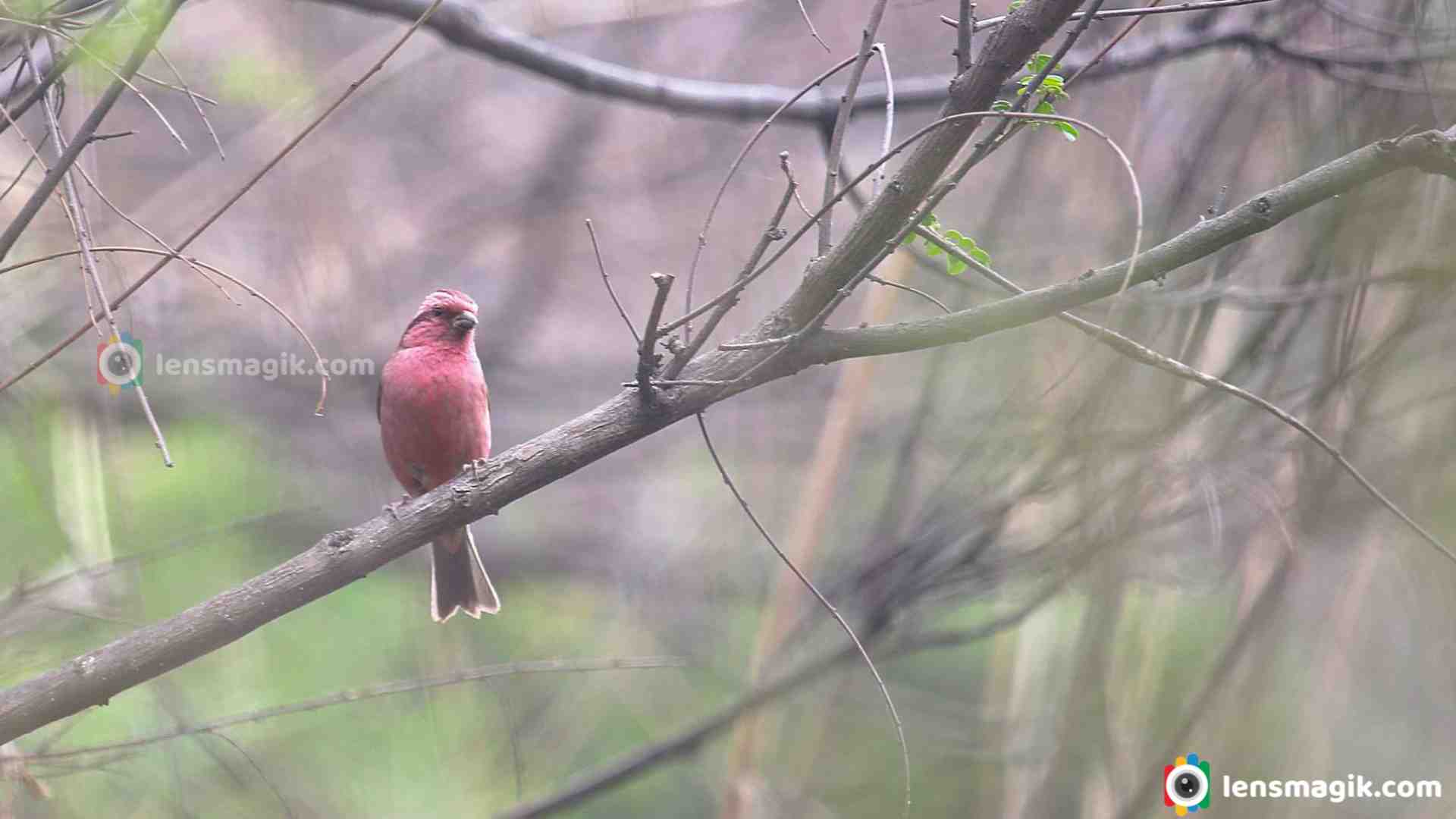
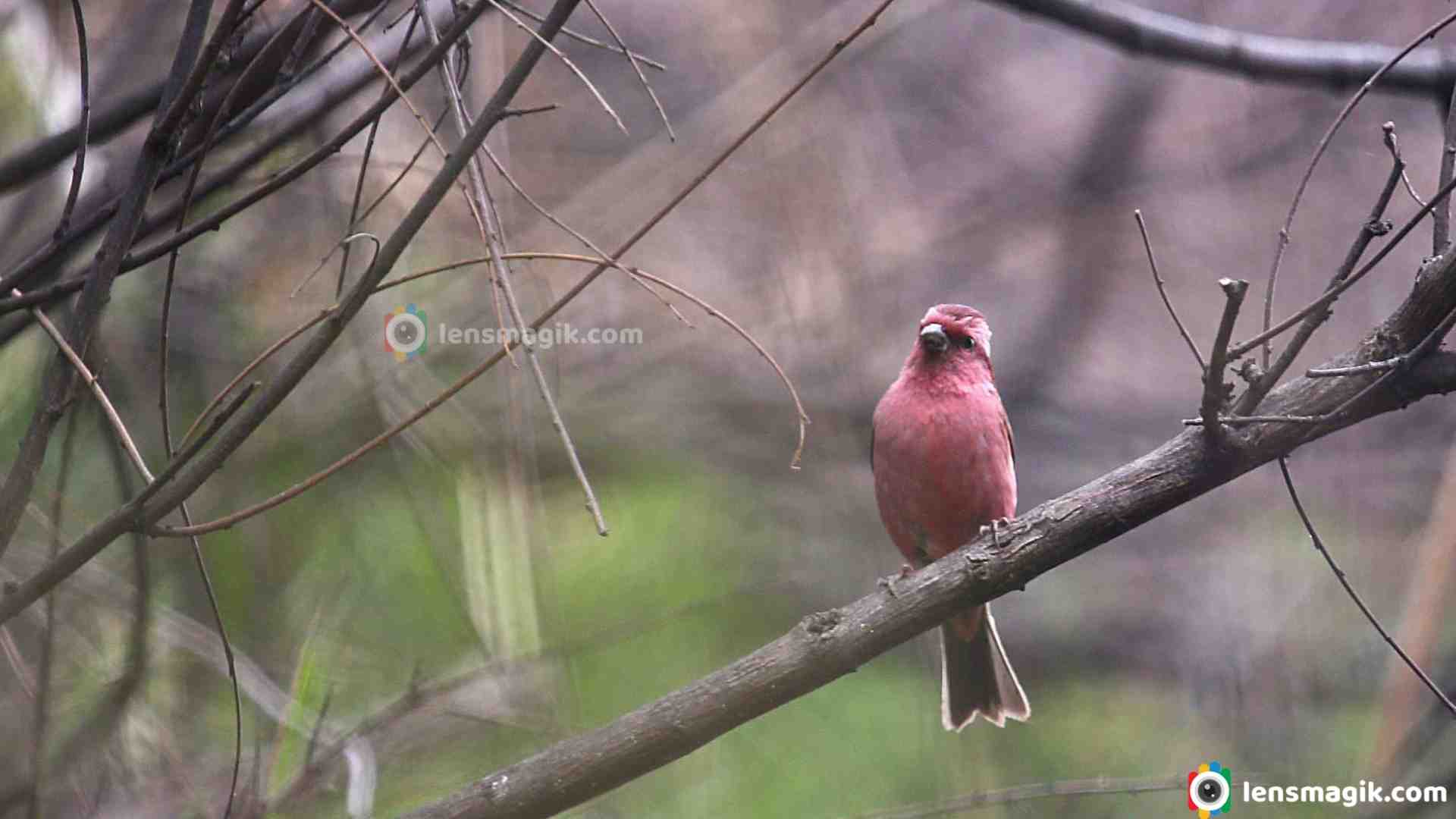
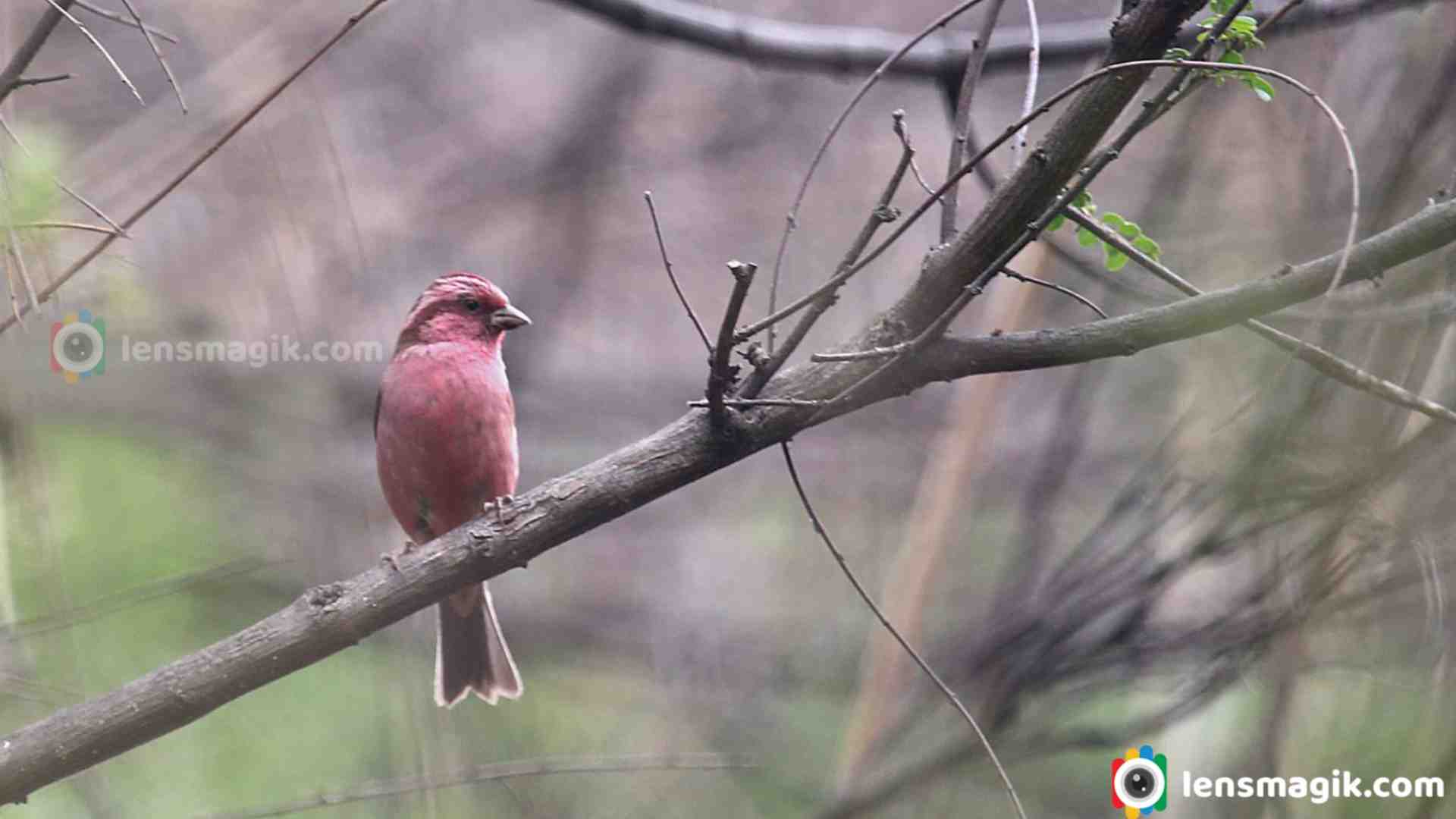
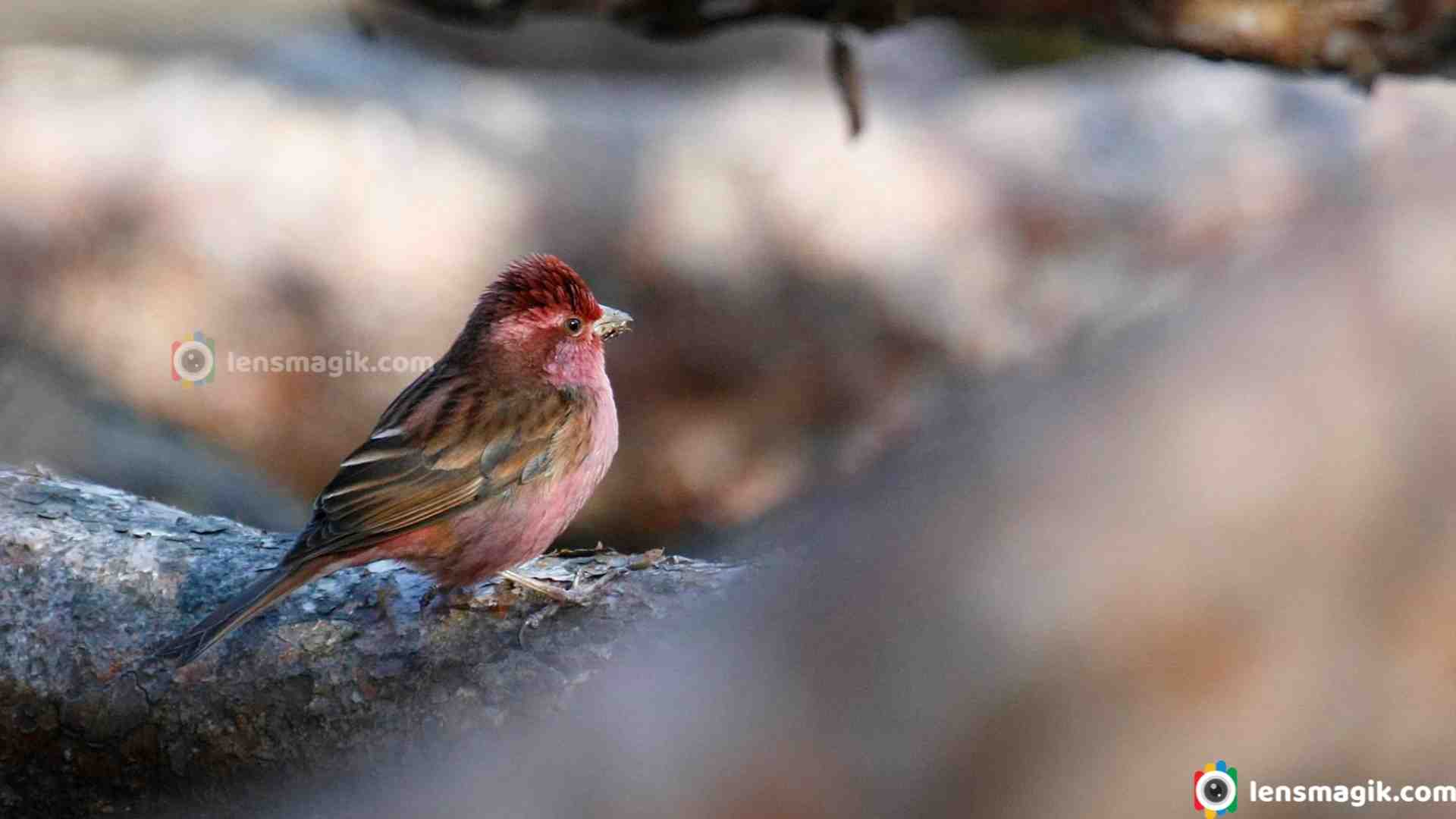
There are lots of spices of Finch bird. Pink browed rose finch family name carpodacus rodochroa. Very small in size like a sparrow. The male is bright raspberry pink color and female is brown with streaked Buffy underparts and broad white eyebrows. This spices generally found in Himalayan range about 8000-12000 ft heights. I found both Male and female during my different trek. The male i found on my Har Ki Dun trek, Chandrakhani Pass Trek in manali and female i found at Singalila National Park. Images are taken at with my canon 6D and 100-400 mm lens.
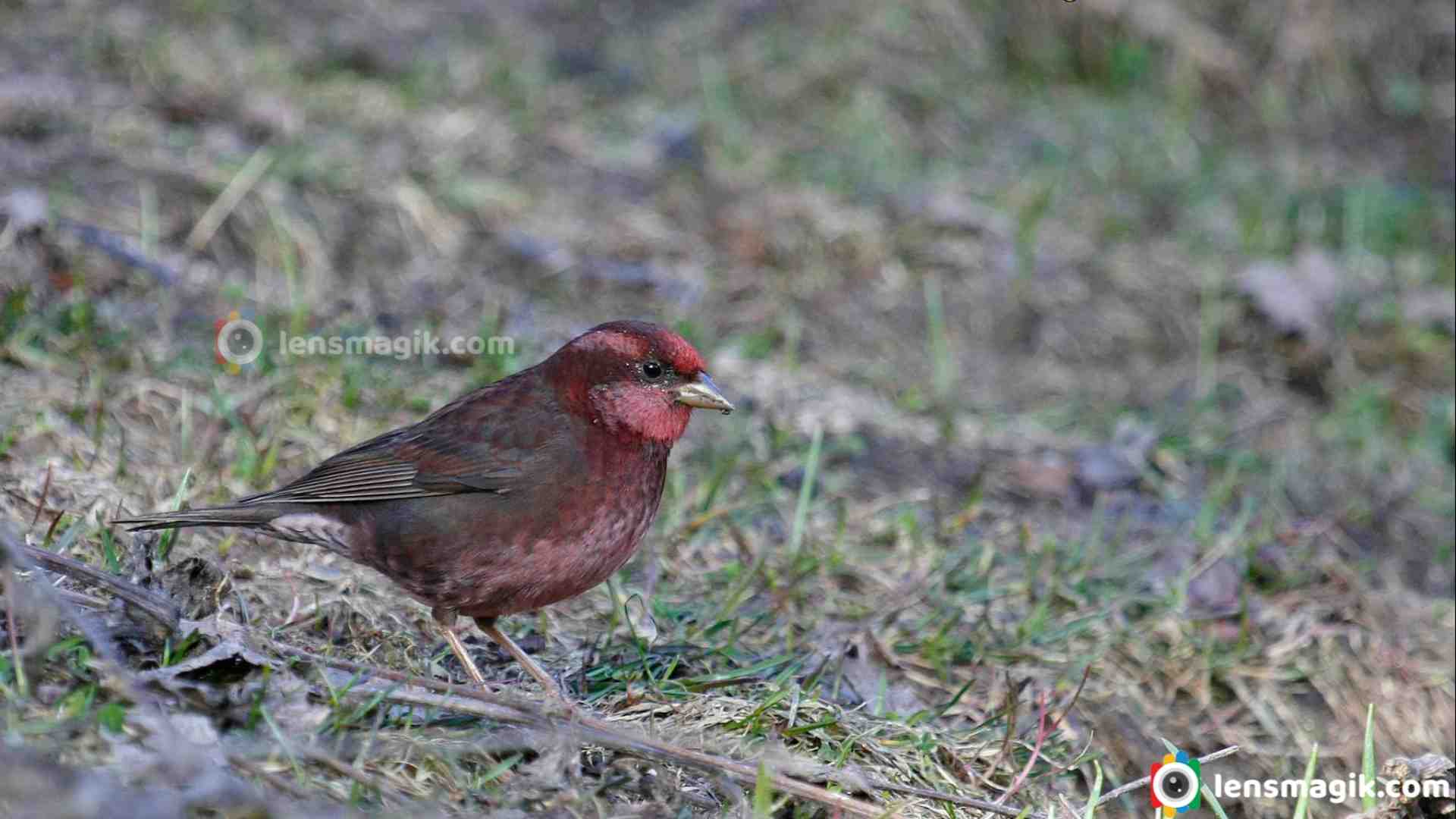
Pink Browed Rose finch generally found in heights above 7000ft . During my trek to Har Ki Dun and Manali (Chandrakhani pass ) i found Lost of birds among them one is Rose finch. It is really beautiful to see this bird . Its color is very beautiful and looks like raspberry pink. It was difficult to shoot with distance and got sharp image. Well i had a good camera and lens so that i capture this sharp image.
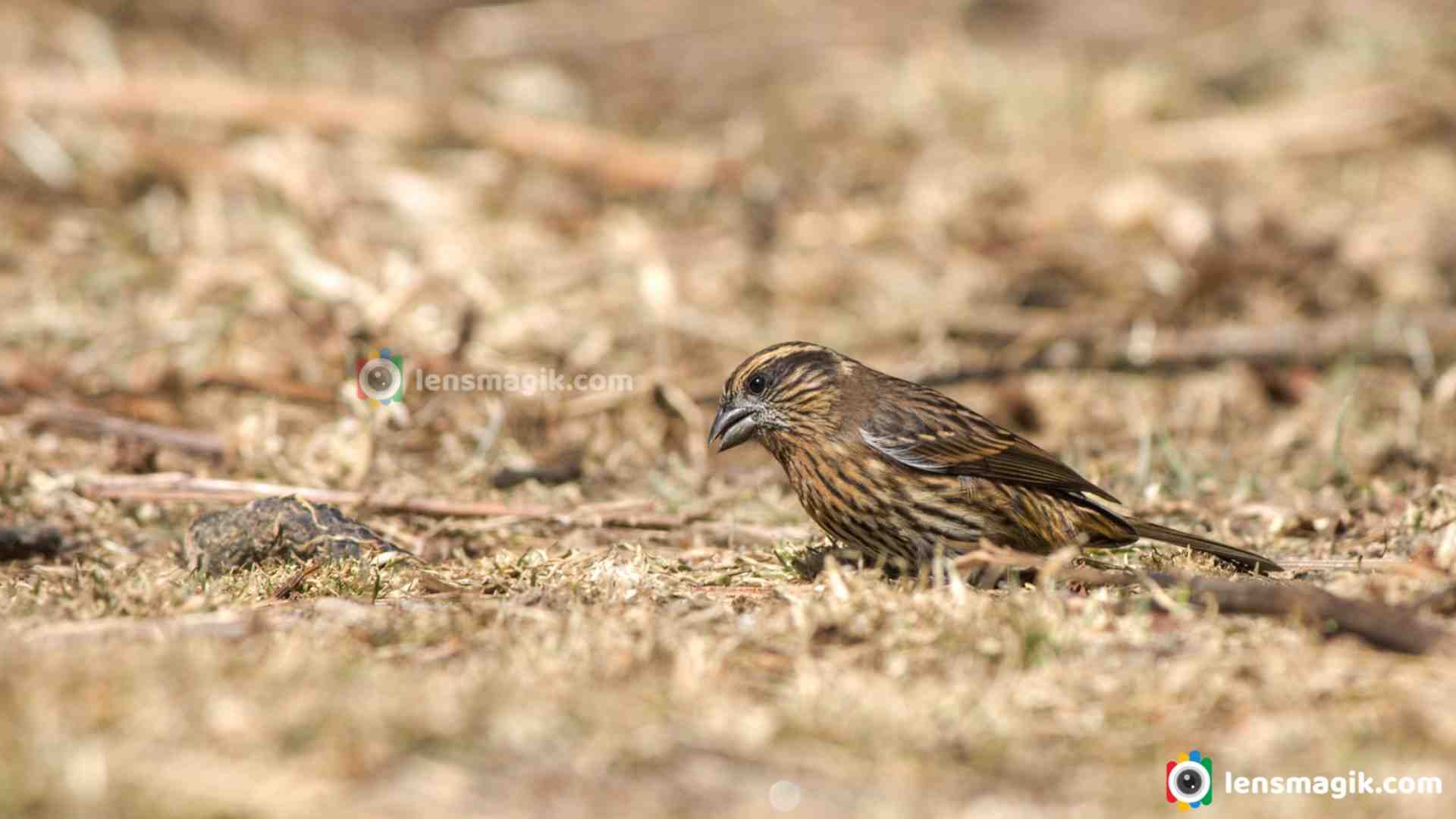
- It is resident bird of Himalayas.
- Pink Browed Rosefinch is small and compact rosefinch.
- Male has pink supercilium rump and underparts.
- Maroon pink crown and ear-coverts.
- Pinkish brown coloration to mantle.
- First year male and Female of Pink browed rosefinch have prominent buff supercilium contrasting with dark ear-coverts, brownish buff coloration to mantle.
- It has tawny to rump and strong tawny wash from breast to undertail-coverts.
- Pink browed rosefinch breeds high altitude shrub in winters and in oak forest.
- Pink Browed Rosefinch bird call is Loud .....Per- Lee....
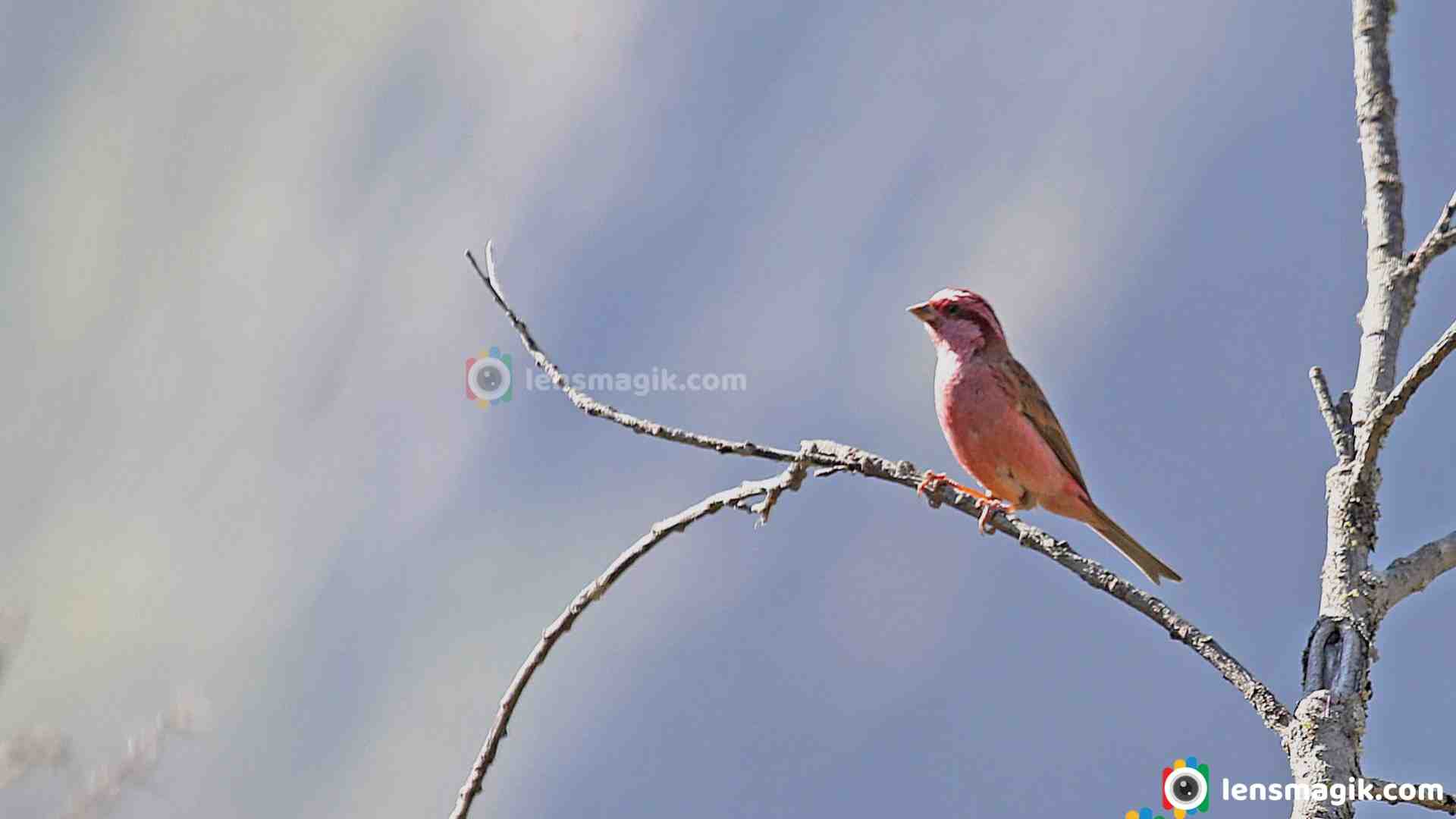
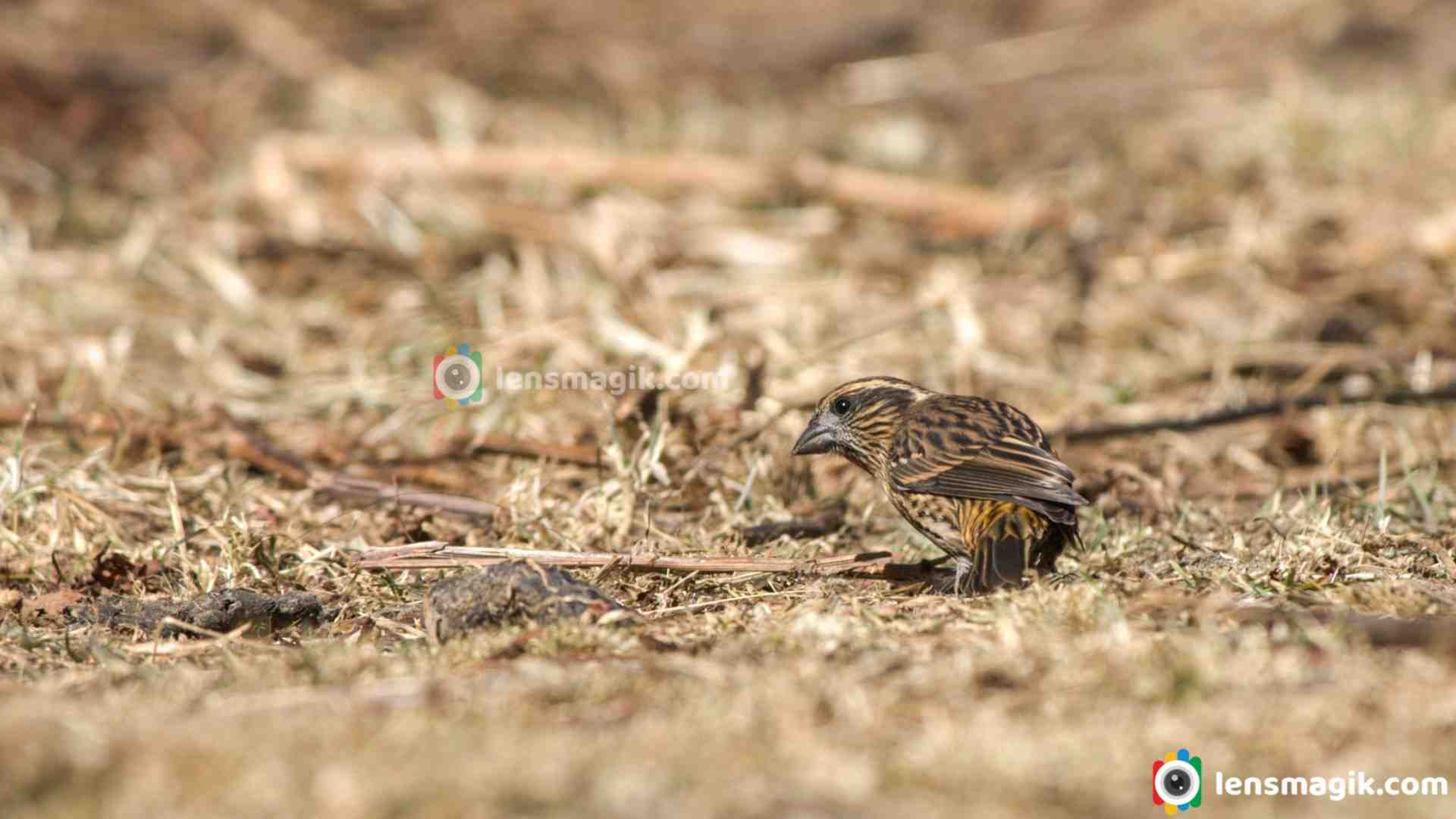
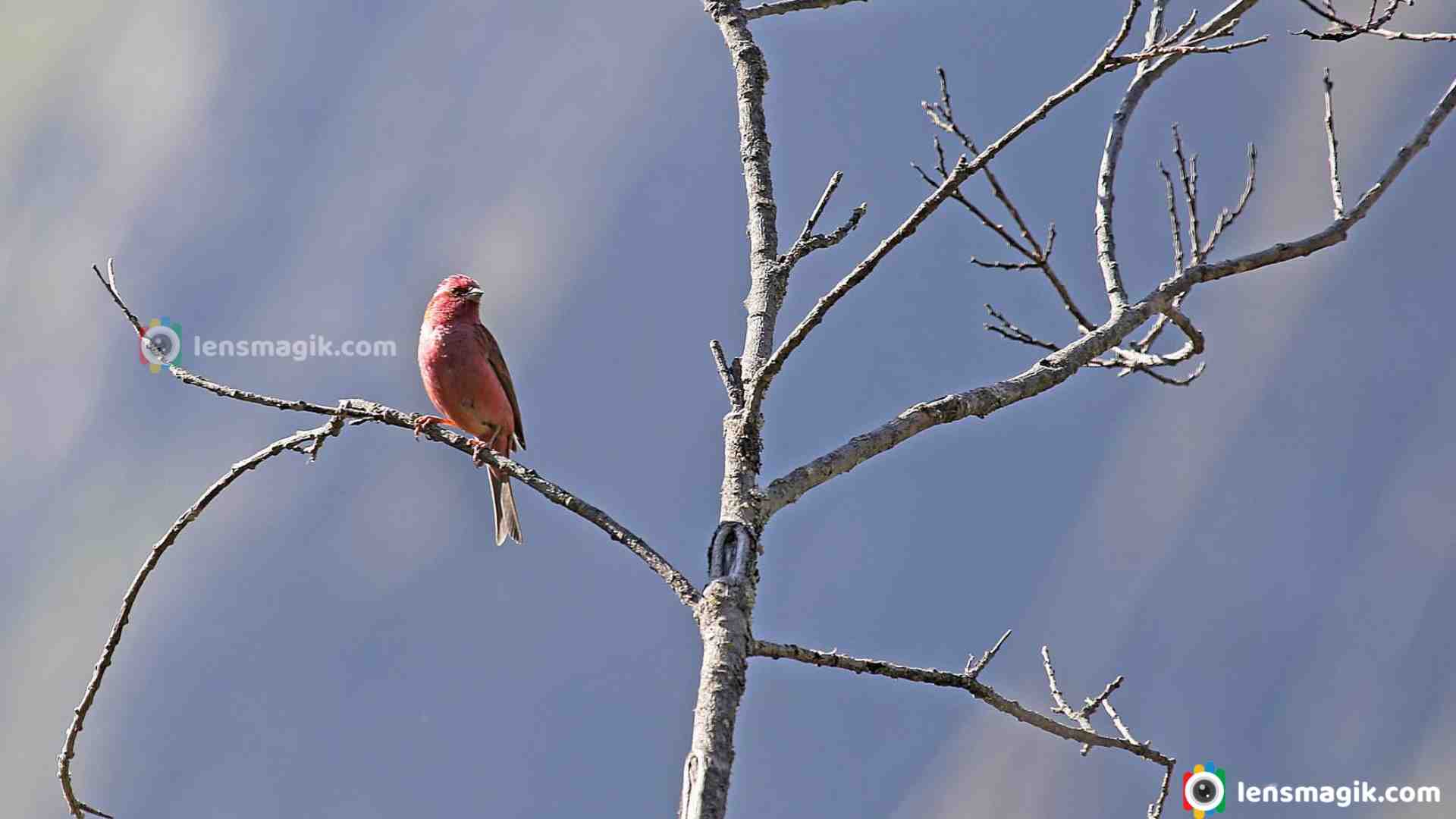
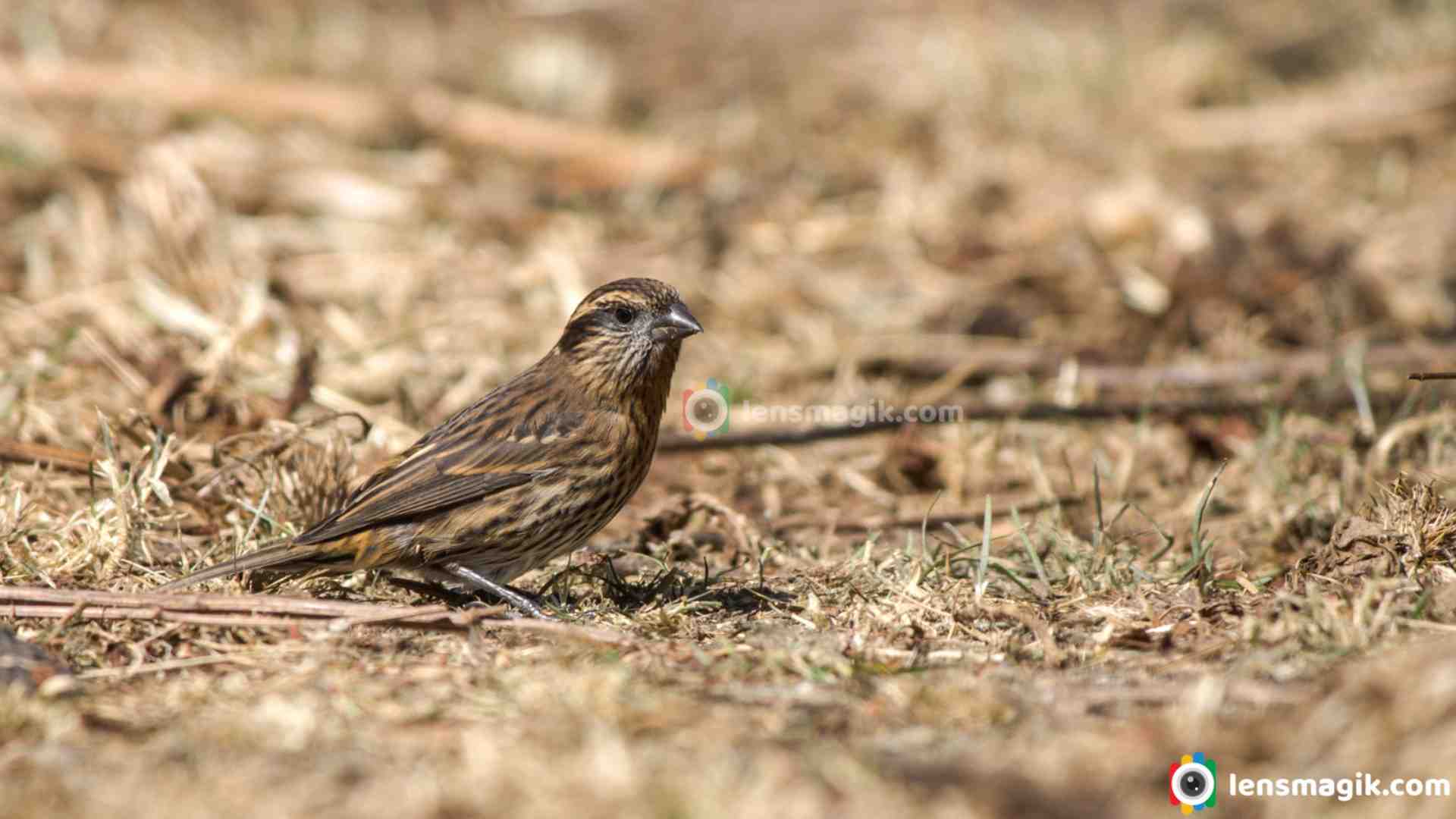

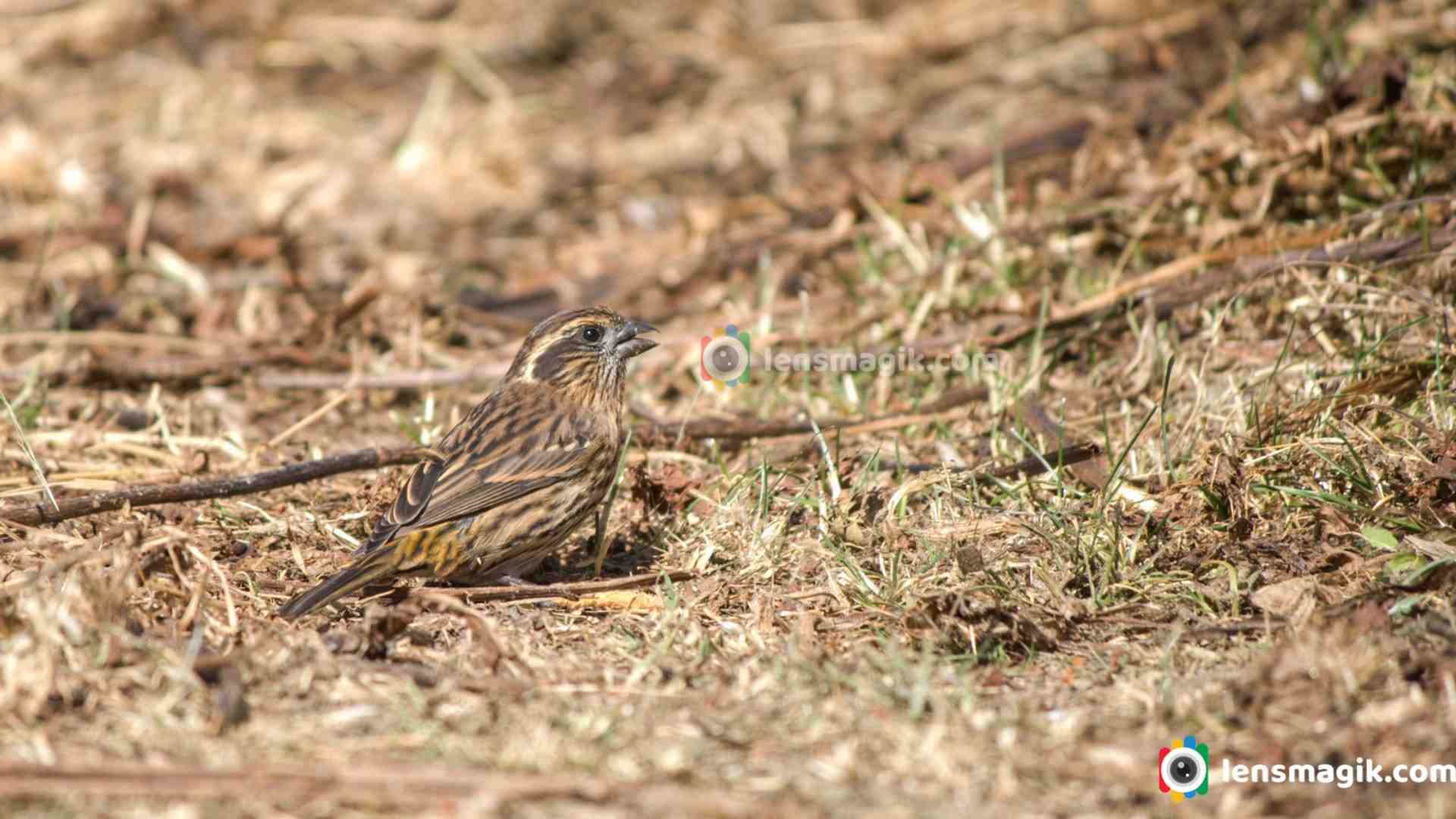
Pink Browed Rosefinch is generally found at Himalayas. I found it at Har Ki Dun trek and also at Chandrakhani pass trek to Manali. Bird is so beautiful in color you can not resist to capture image of it. There are also different types of finch bird available in manali and also at Uttarakhand. They generally found in pair of male and female.
Gear Used : Canon 6D, Canon 1000 D, Canon 100-400 mm lens, Canon 80 D
Read more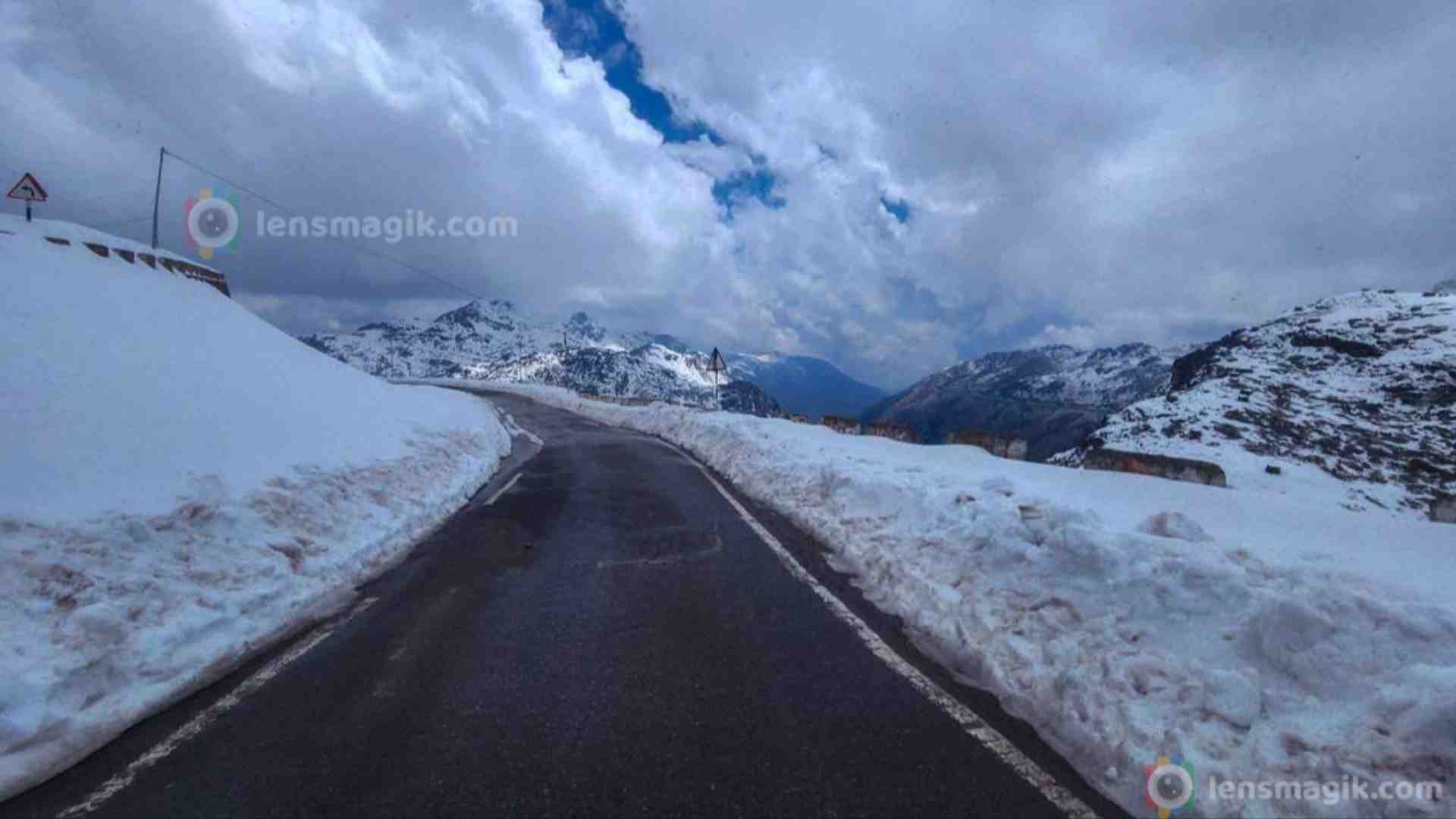
Sikkim is the state in northeastern side of India. In northeast side of Sikkim is Tibet , east side is Bhutan, in the west is Nepal and in south its border touches to West Bengal. Capital of Sikkim is Gangtok. Total area of Sikkim is 7096 sqkm. Highest elevation of Sikkim is Mt Kanchenjunga 8586 m. Population of Sikkim around 6 lakhs. Languages spoken here is Nepali, Sikkimese, Lepcha, English.
Sikkim has four districts known as East Sikkim capital Gangtok , North Sikkim capital Mangan, South Sikkim capital Namchi and west Sikkim capital Gyalshing . Major city and biggest of state is Gangtok .
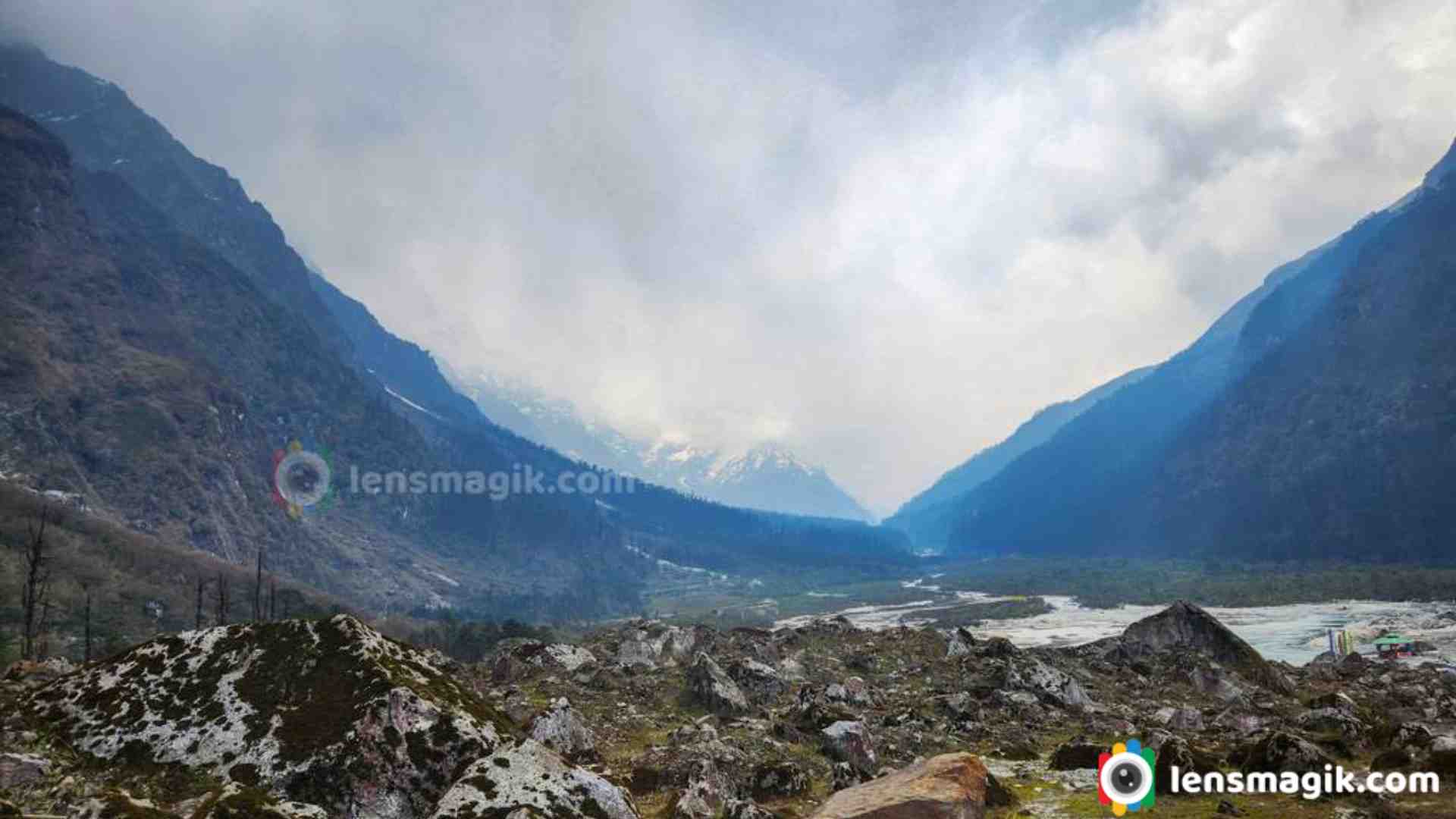
Flora And Fauna of Sikkim :
- Sikkim is home of more than 5000 spices of flower plants. Among them 515 are rare orchids,36 spices of rhododendron, 11 spices of Oak, 60 spices of Primula, 23 spices of Bamboo, 362 varieties of Ferns and over 900 medicinal plants.
- Official flower of Sikkim is Noble Dendrobium.
- State tree of Sikkim is Rhododendron.
- On other side of Sikkim fauna there is a lots of wildlife found here.
- Major Attractions in wildlife in Sikkim is Red Panda, Snow leopard, Himalayan Marmot, Himalayan Tahr, Asian Black Bear , Leopard Cat, Tibetan Wolf, Comon Langur, Himalayan Jungle Cat, Dhole, Himalayan Serow, Himalayan Goral and Yaks.
- Also Sikkim is heaven for Birds too like Crimson horned Pheasant , Impeyan Pheasant, Tibetan Snowcock, Griffon Vulture, Golden Eagles, Quails, Plovers, Pigeons, Flycatchers and many more. Total more than 550 spices of birds found here.
- In Sikkim also butterflies found more than 1400 spices.
- Red Panda is the State animal of Sikkim.
- Singalila National Park is most favorite place for trekker and wildlife photographers.
The earliest inhabitants of Sikkim are Lepchas. Sikkim is almost in a hilly area. State elevation from 280m to 8586m. Lowest elevation at West side at west Bengal border and highest is Mt. Kanchenjunga summit. Kanchenjunga Mountain is the 3rd highest mountain in the World. It is Situated on the border of Sikkim and Nepal. Mt. Kanchenjunga can be seen from Darjeeling early in the morning also if you want to see Kanchenjunga very closely then visit Sandakphu at Singalila National park where you can see a clear Mount Kanchenjunga and also Mt Everest if weather is clear.
In Sikkim Tour we planned for North Sikkim, East Sikkim and South Sikkim places. Most tour visit Gangtok – Darjeeling – Pelling or Gangtok – Lachen- Lachung – Darjeeling- Namchi . If you want to go pelling then Lachen and Lachung you have to skip or you have to add more 3-4 days in your tour to complete all of these. We done in our tour Gangtok-Lachen-Lachung-Gangtok-Darjeeling . Our tour Itinerary as below.
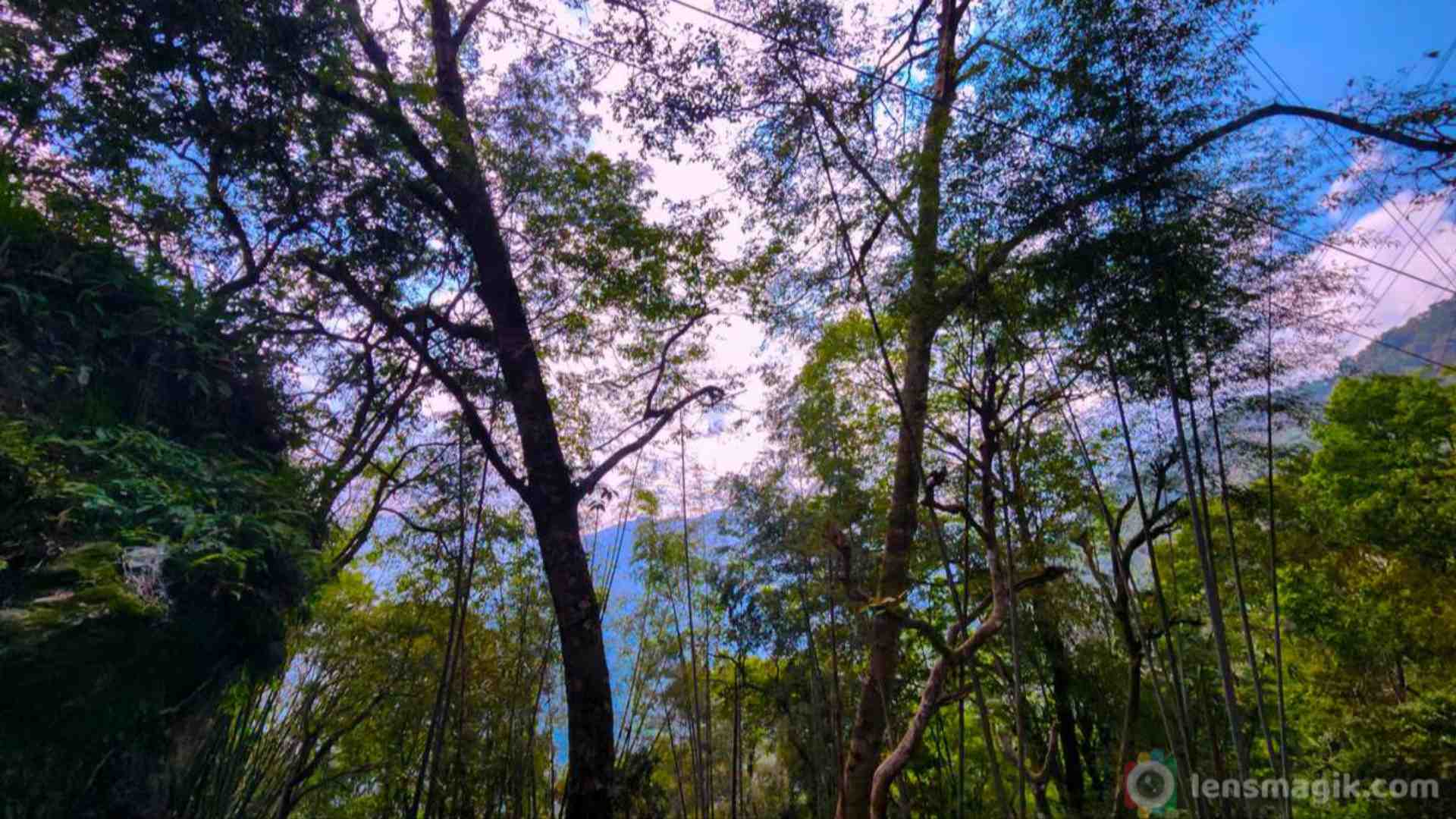
Best Time for Visit Sikkim :
The best season for traveling to North Sikkim is Mid February to Mid-June & Mid-September to Mid December.
Sikkim Tour Itinerary :
For Sikkim you can go via flight to Bagdogra then from Bagdogra (IXB) to Gangtok via road. Also a New Jalpaiguri Railway Station ( NJP ) overnight train from Kolkata reach in the morning and then via road to Gangtok.
Day 1
IXB Airport / NJP Railway Station to Gangtok 125kms in 4hrs and drive to Gangtok (Capital of Sikkim). Gangtok is also a resting ground for people traveling to North Sikkim. Check in at Hotel. Evening we go for Gangtok city tour and shopping. We stay at Lemon Tree hotel Gangtok. A very nice property and good Hospitality.
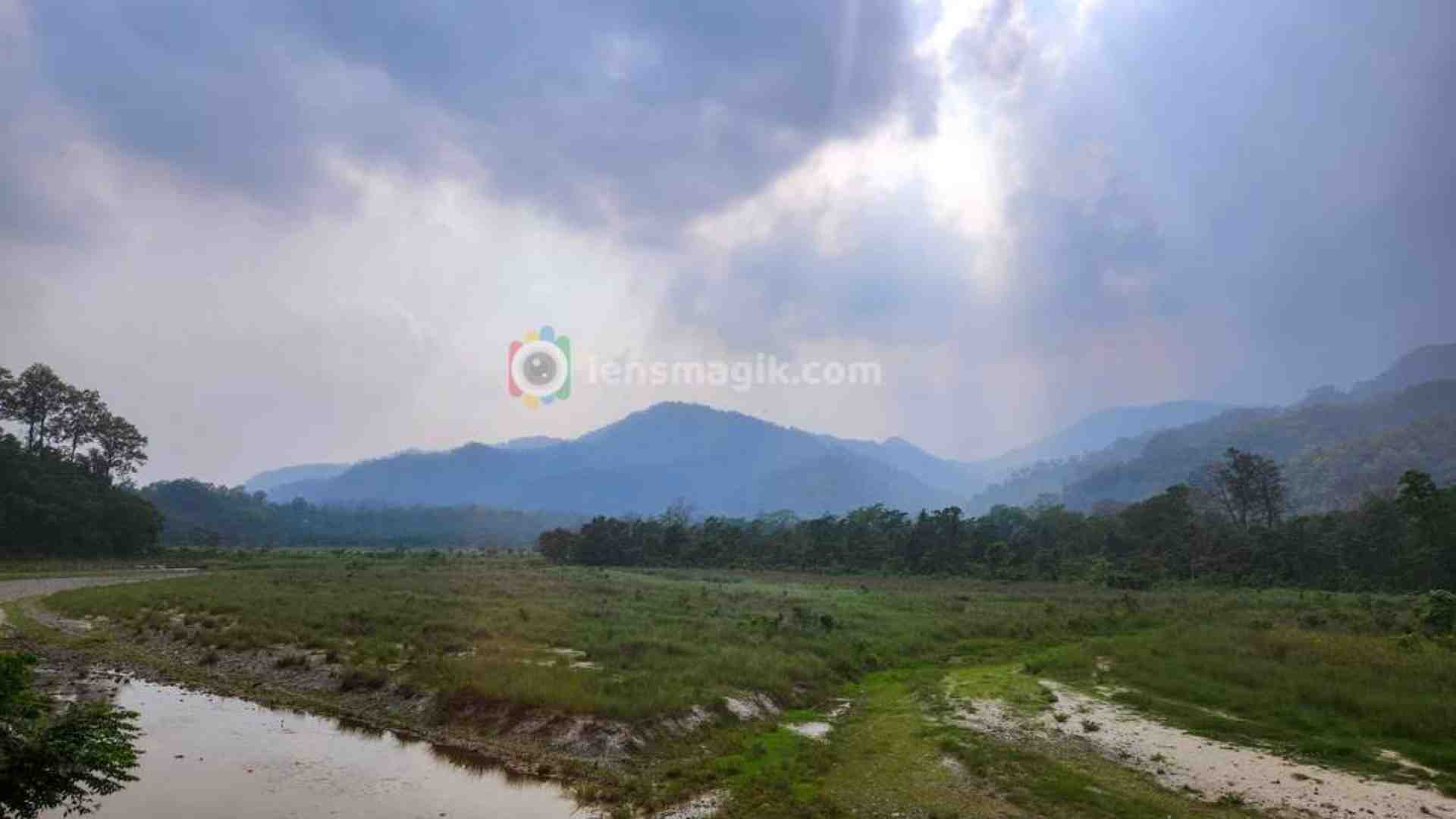
Day 2
Early Morning leave to Tsongmo Lake (12,400 ft.) & Baba Harbhajan Singh Memorial (13200 ft) 52 kms from Gangtok city. Tsongmo Lake freezes completely during the winter and is much revered by the locals.
Optional tour to Nathula Pass (Alt 14000Ft / 4200M) on China Border can also be arranged (Except Mon, Tue) for Indian Nationals on advance request at an additional cost. I must say to visit Nathula Pass cost around 3000-4000 INR per car. At Nthula pass you must go early in the morning otherwise traffic jam on afternoon. Also weather changes after 12 pm so reach early. At Nathula Pass if you stuck in traffic and if heavy snow fall then you will stuck for overnight and after BRO clear the roads you can not go back. So plan early morning if possible and listen to your driver and follow their guidance.
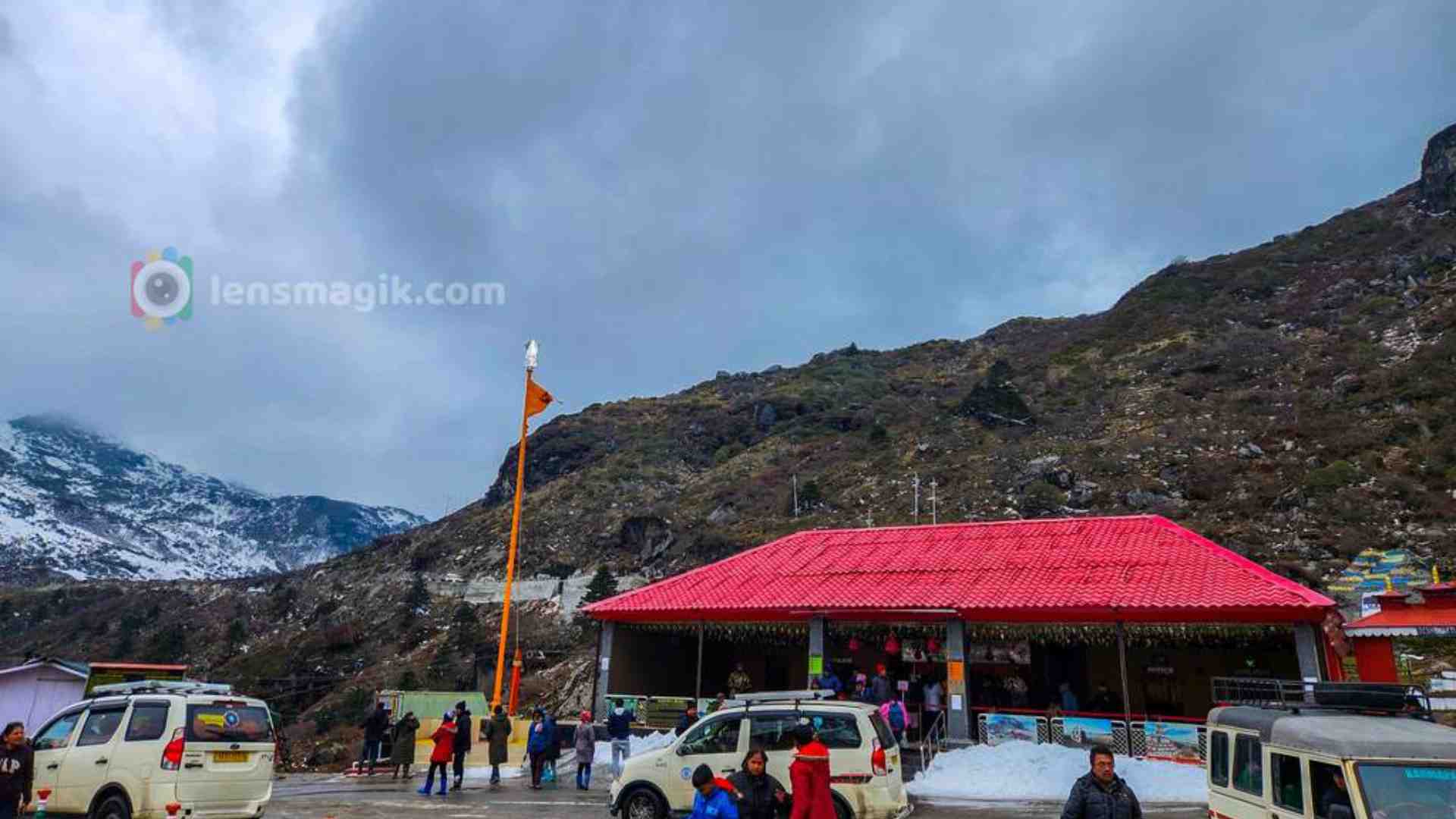

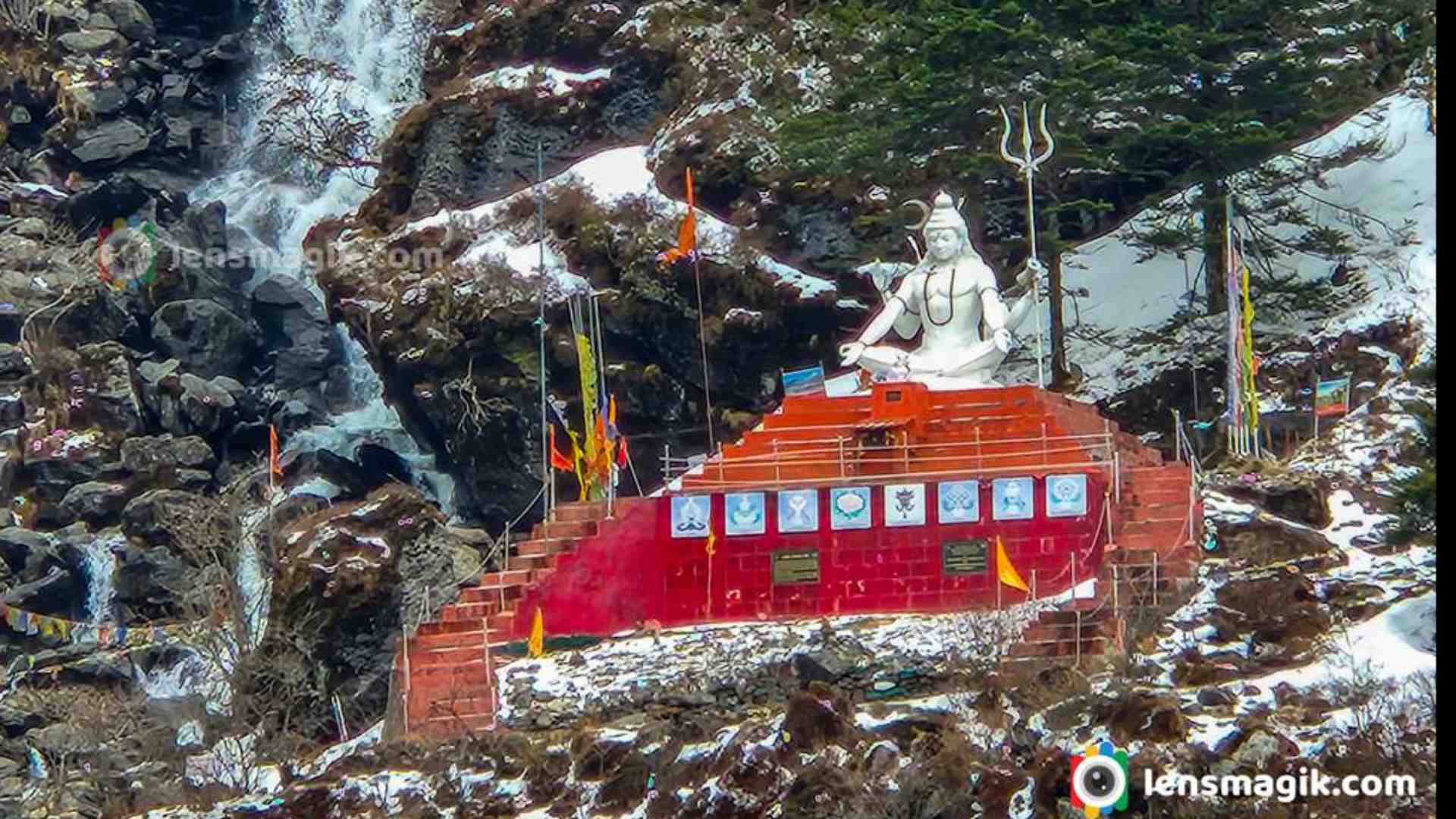
Day 3
Gangtok to Lachen (125 Kms / 6 hrs) Morning drive to Lachen in North Sikkim (8660 ft). In between visit Singhik View point, Seven Sisters Water Fall, Naga Water Falls, and Chungthang Confluence. Arrive at Lachen in the evening. We stay at Khenkhim Hotel in Lachen.
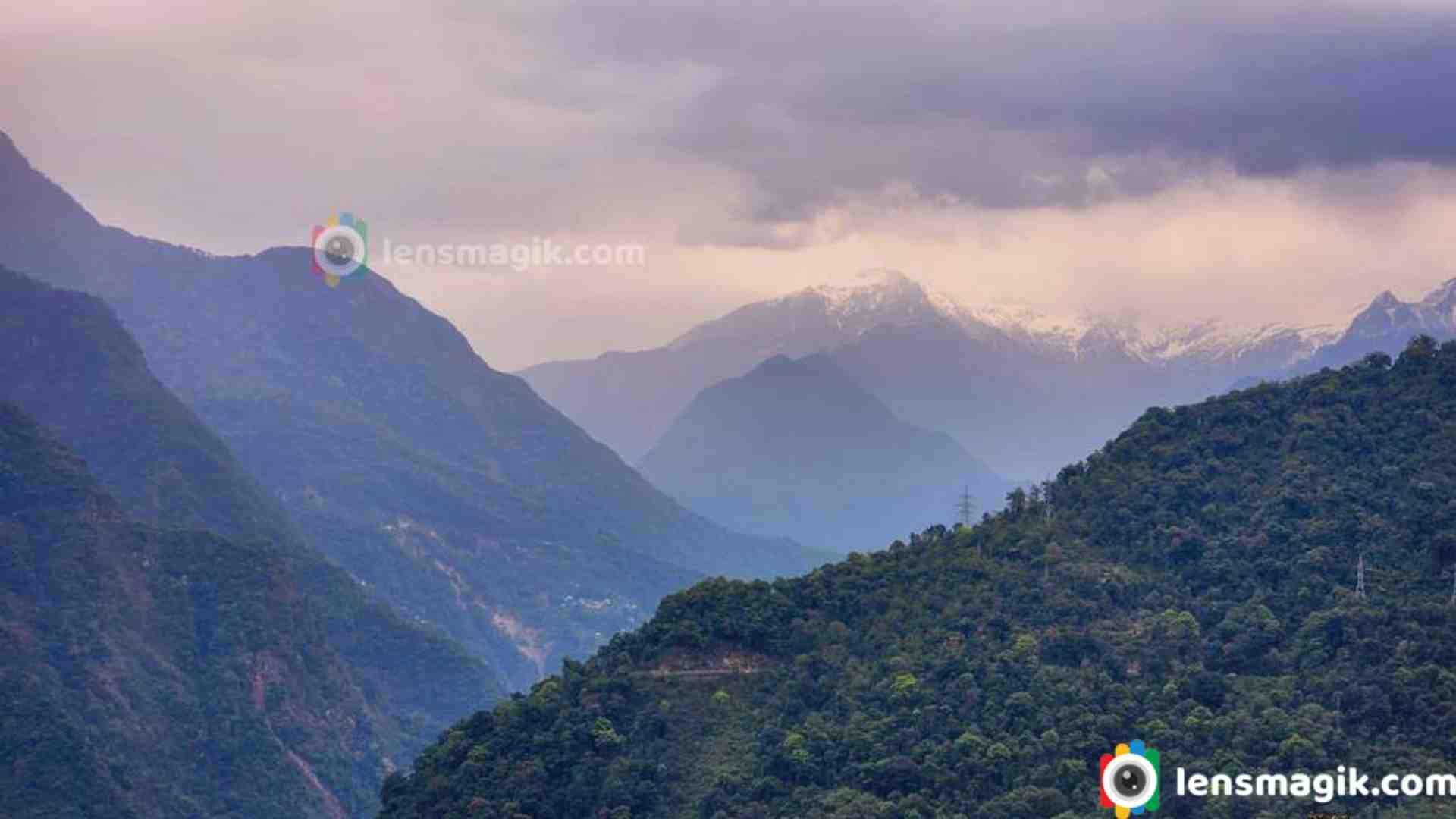
Day 4
Lachen – Chopta Valley (13,200 ft.) – Gurudongmar Lake (17,100 ft.) – Lachung Early Morning drive to Chopta Valley to get some breathtaking view of alpine valley of frozen rives. Then procede further 30 Kms in 1.5 hrs to Gurudongmar Lake. The Highest and the biggest fresh water lakes in Sikkim, and it is very close to Tibet Border. After Lunch drive to Lachung. We Stay at Etho Metho hotel in Lachung. Also a good and finest property.
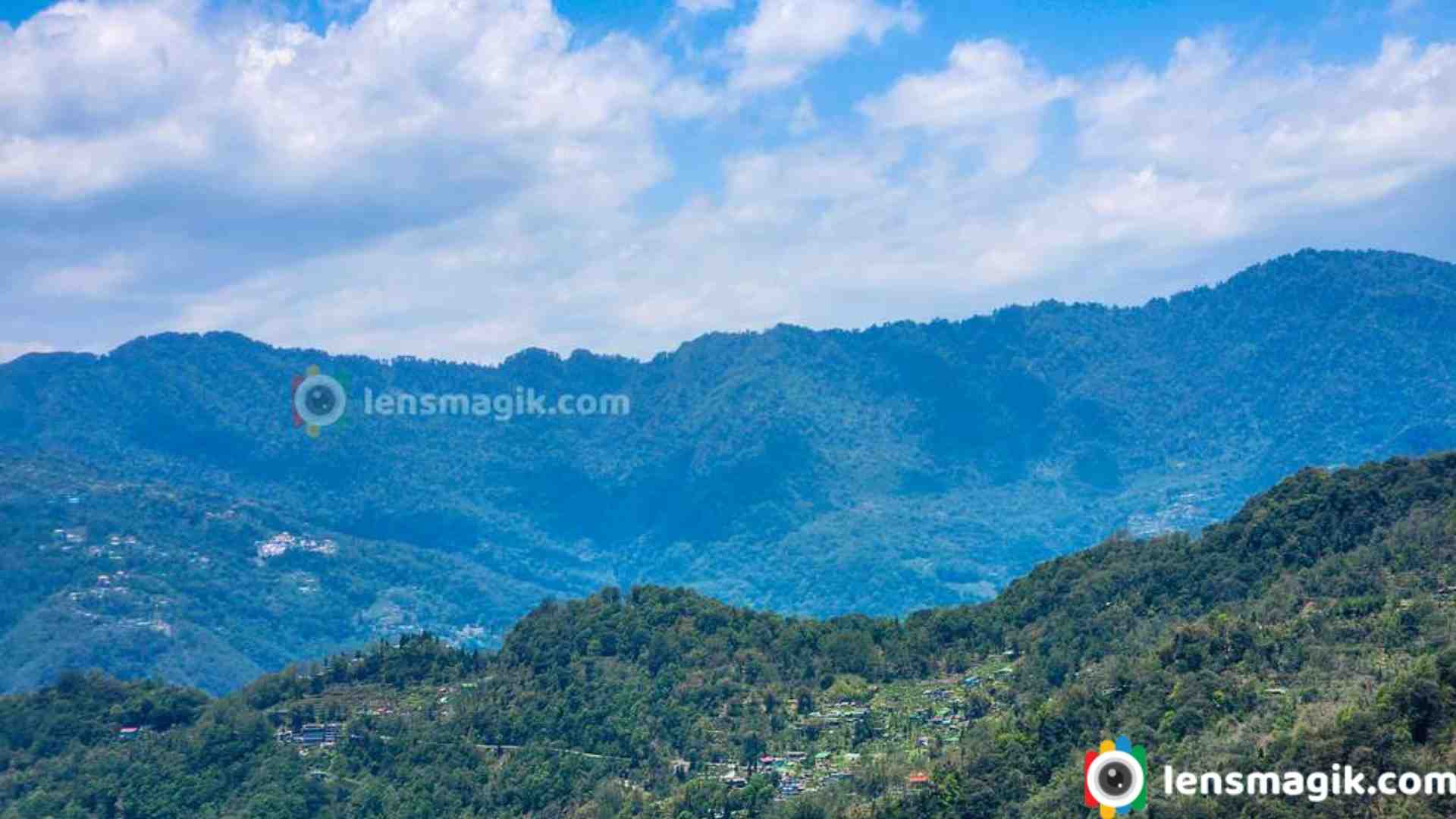
Day 5
Early Morning Leave to Yumthang (Valley of Flowers) at 1200ft. It is a summer grazing ground of Yaks and winter playgrounds of Yetis. Back to Lachung. After lunch drive back to Gangtok. Kala Patthar or Zero Point is optional for visit around 3000-4000 per car. At Zero point or kala patthar you can see lots of snow and beautiful snow mountain view of Himalayas. Also on the way to kala patthar you can visit valley of flowers. In April to May month you can see beautiful rhododendrons are in full bloom and the entire route that leads to Zero Point looks almost like a painting. But when we were visit lots of snow fall during those days so flowers was not so many on that day but its worth to visit. You never disappoint with the entire route scenery.
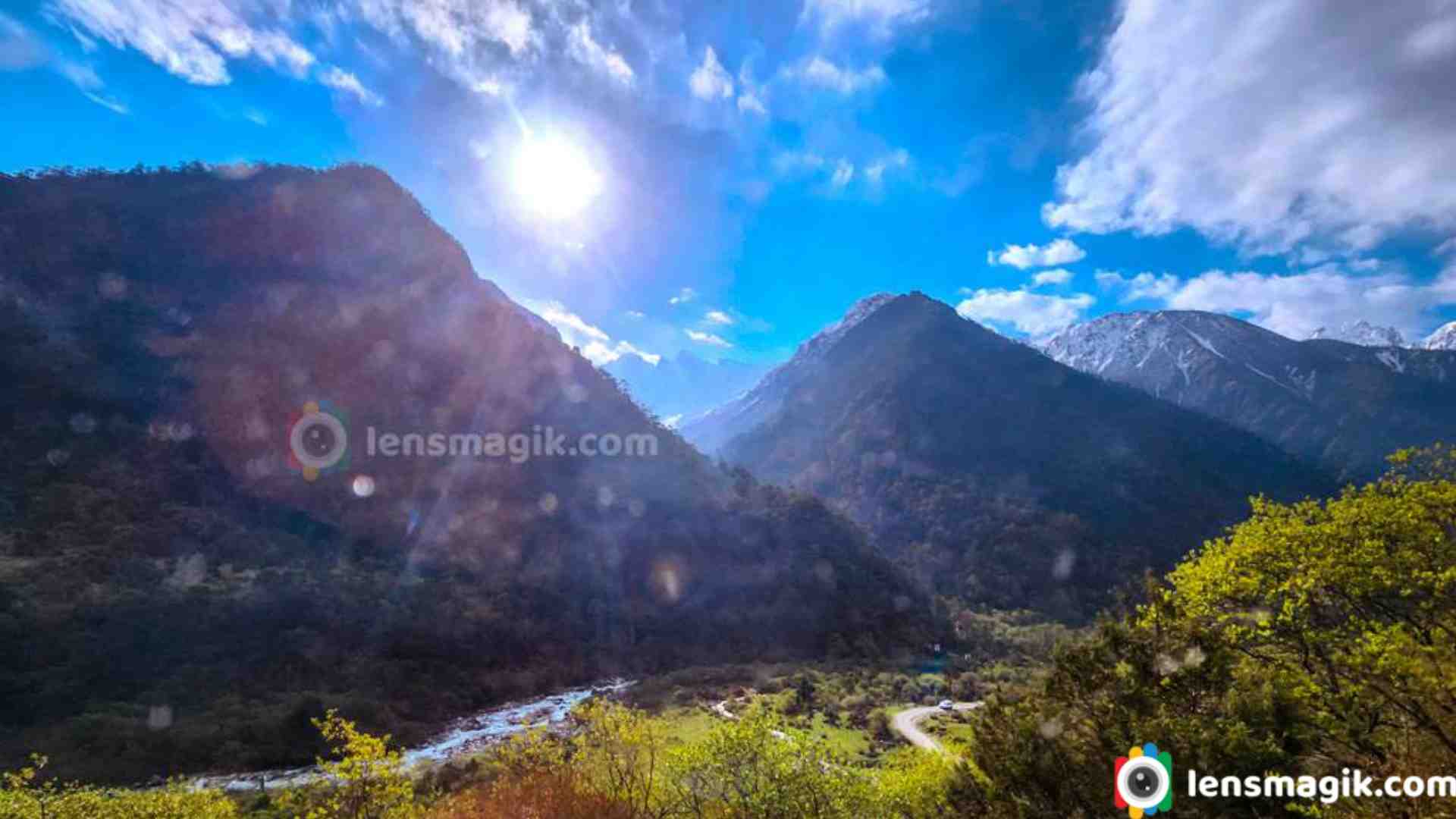
Day 6
Gangtok Half day sight-seeing- to Darjeeling (Alt 7100Ft/2100M), 95km in 3 hrs. Breakfast at the hotel, check out & visit Bakthang Falls, Enchey Monastery, Flower Show, Sikkim Research Institute of Tibetology, Dodurl Chorten and Handicraft Centre and drive to Darjeeling. We stay at Sterling Holiday Resort at Darjeeling. Resort is very good.
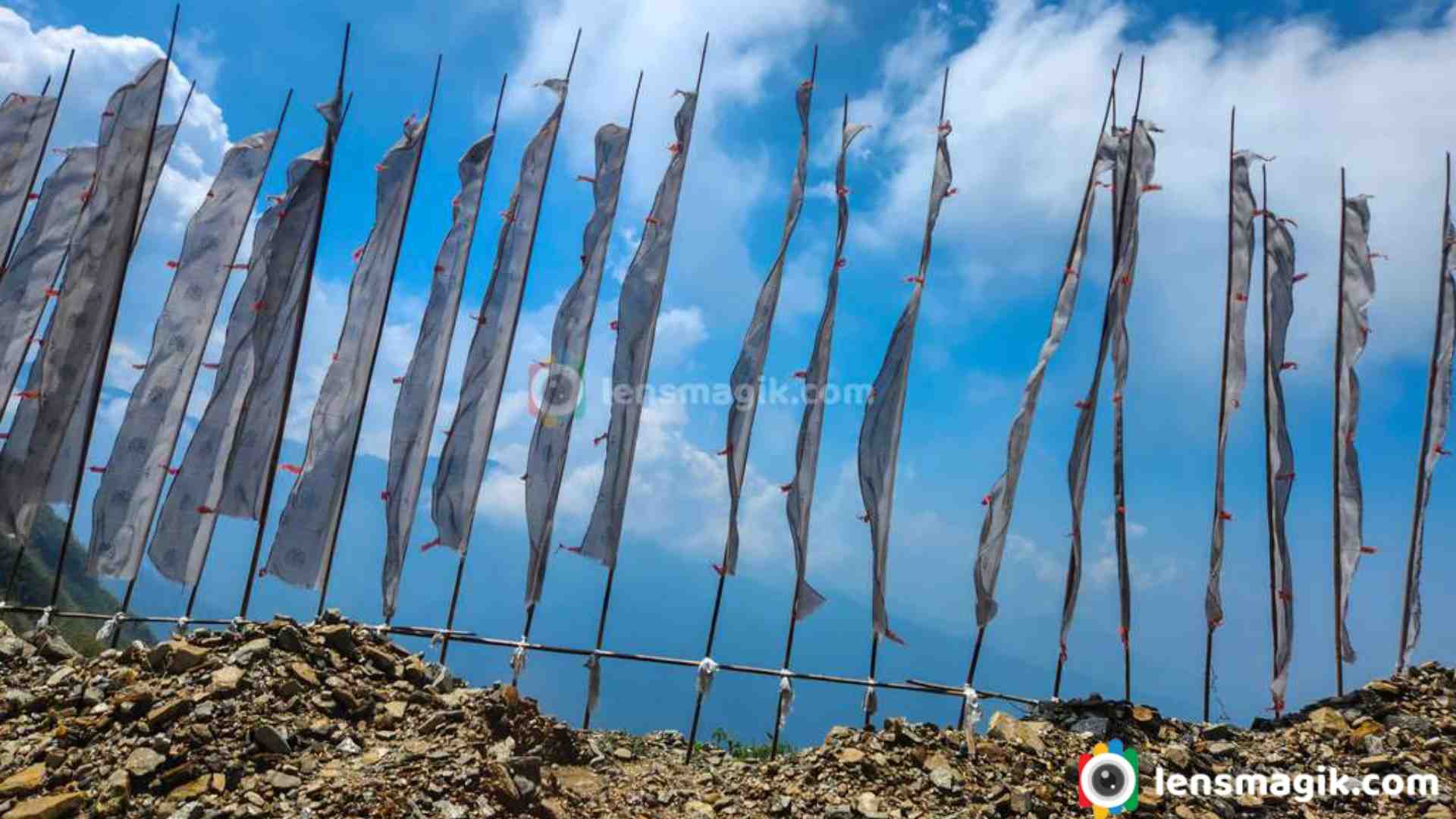
Day 7
Darjeeling local sightseeing Visit Himalayan Mountaineering Institute, Padmaja Naidu Zoological Park (Thursday closed), Tenzing Rock, Ropeway, Tibetan Refugee self-help Centre (Sunday closed), Tea Garden (outer view), Japanese Temple, Ghoom Monastery, Batasia loop, Tiger hill (8,400 ft.). Evening free at leisure. you can go for shopping at Darjeeling market .
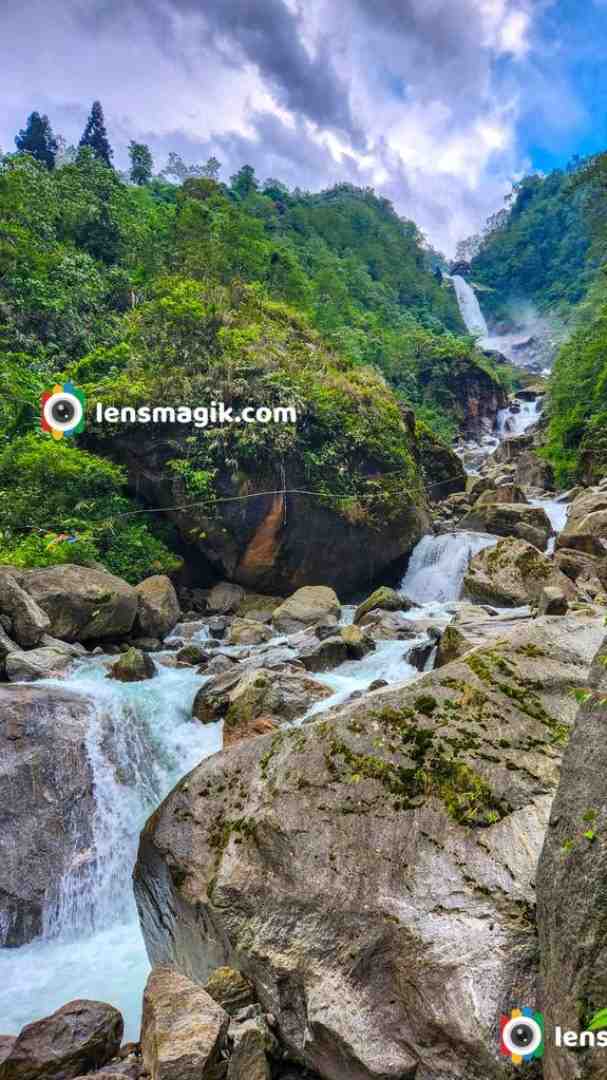
Day 8
Darjeeling to IXB Airport / NJP Railway Station – 90kms in 3hrs. In morning drive to NJP/Bagdogra.
Casinos In Gangtok :
There are many casinos in Gangtok if you are interested like Deltin Denzong, Ramada Casino, Big Bull Casino etc. We went to Ramada casino and had a great fun. Entry Ticket for Ramada Casino is 2000 per person ( rates may change ) which includes 2 drinks, 2 starters, buffet dinner and 1000 INR token chip. Also they have more package for entry for unlimited drinks and food may be.
IMPORTANT THINGS TO KNOW ABOUT DARJEELING:
Due to the recent changes in the Traffic Management System in Darjeeling there would be a lot of restrictions for visiting the Sight Seeing Points mentioned in the itinerary. 300 vehicles would be allowed to visit Tiger hill in a day with Coupon, which would be issued the previous day by the Authorities.
Batasia Loop, which was a part of the early morning sightseeing, would now open from 10 am instead of 06:00am. You will have to walk minimum 500 mtrs from the gate (Depending upon the rush)and the place where the car is parked. No car would be allowed to pick-up or drop passengers in from of HMI ZOO and the same can only be done at a designated area 100 mtrs away from the gate. The cars would be allowed to pick-up or drop passengers only from the designated areas and not as per the convenience or wish of the guests
North Sikkim travel Guide (Lachung - Lachen): Must Know Things while visit North Sikkim
- Guest Traveling to North Sikkim (Lachung / Lachen) requires 02-04 copies of passport size photograph, original photo ID proof with photo copy (identity card – Voter ID card / Pass-port / Driving License) for processing the permit. Aadhar Card / PAN Card - not acceptable for issuance of the Permit In Lachen and Lachung . But when we go some places may accept Adhar Card too. Most of the hotels are offering Vegetarian food . Food quality is very good.
- All guests are requested to carry minimum luggage when travelling to North Sikkim and keep the extra luggage at the hotel in Gangtok because of bad road conditions of North Sikkim especially during transshipment due to landslides and road blockages. We carry only 1 bag for 1 family.
- Child below 10 yrs. and Senior Citizen is not suggestible to visit Gurudongmar Lake (17,100 Ft.) in Lachen due to high Altitude and low Oxygen Level
- Hotels of Lachen and Lachung have only with basic amenities & simple food cooked by the locals and not by hotel Chef. In maximum hotels there is no geyser in the bathroom – hot water is supplied by buckets by the hotelier. Also during Gangtok to Lachung there is a very few vegetarian food restaurant and you must take a lunch at their. Other wise there is no restaurant after that. Same at return to Gangtok. So plan some snakes and packed food from Gangtok.
- Lachen and Lachung hotels rooms are also small so you must adjust in it.
- No room heating systems are provided in the room in maximum hotels due to shortage of power, instead the hotelier provides hot water bags. At some hotels they provide heaters too depend on your hotel.
- Airtel, Vodafone & BSNL operates better in Lachen and Lachung. After leaving hotels and city you can not get signal during sight scenes. So if you are travelling in group with 2-3 cars then plan close all cars or make a point where you can all meet if someone left alone. Best way to keep walkie talkie for minimum 2-5 km range to contact each other.
- Due to shortage of power the guest sometimes may have to bear with candle light.
- Due to winter season (heavy snow) vehicle will be able to drive till Snow point on the way to Yumthang Valley.
- Zero point(must visit place ) (Yumesamdong) is kept optional which the guest can avail with an extra cost. Approx. cost is Rs. 3500 per vehicle.
- Mineral Water bottles are not available in North Sikkim. You need to carry a bottle at all times. They can be refilled at hotels. Littering will attract fine. Cigarette smoking or tobacco / tobacco product consumption is banned in public places.
After all sikkim is must visit place where you can find a high himalayan range mountains with greenery. Here you can find greenery , snow, high altitude lakes and enjoy beautiful weather with nature. Also in Darjeeling zoo we can see rarest and endangered Red Panda and many more birds and animals.
Read more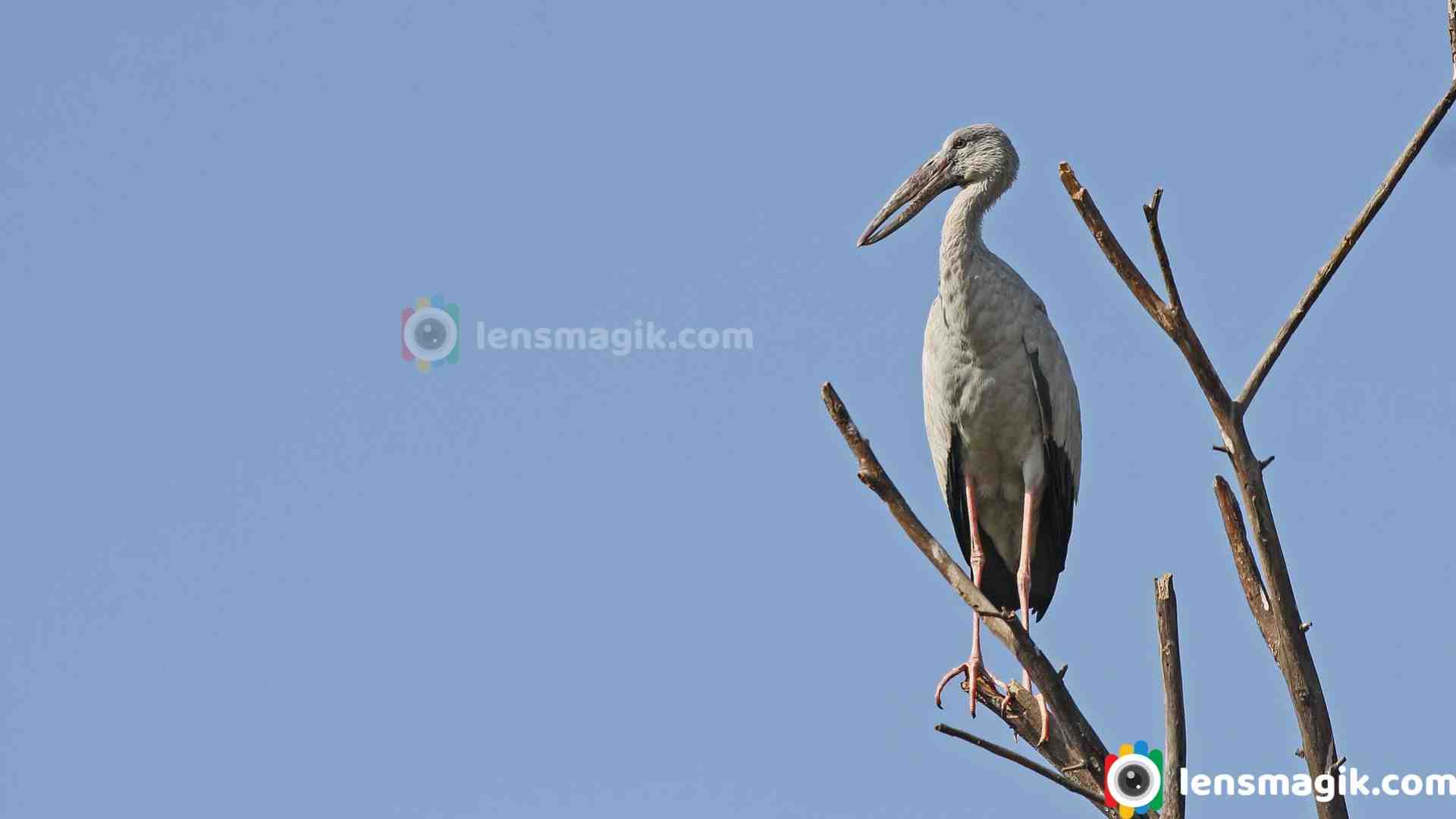
Asian openbill is also known as Asian openbill stork. It is a large wader bird in stork family. Binominal name of it is Anastomus Oscitans and its family is Ciconiidae. It is generally found in South-east Asia region. Like other stork it size mostly similar to them. Only difference in color as openbill stork is greyish or white in color and glossy black wings. In Gujarat it is found in Thol bird Sanctuary , Nalsarovar Bird sanctuary, Pariej Wetland and agriculture areas at many places. It found in low level wetlands where it can find food easily. In Gujarat like Asian openbill stork other stork bird found like Painted Stork, Wooley Necked Stork etc.
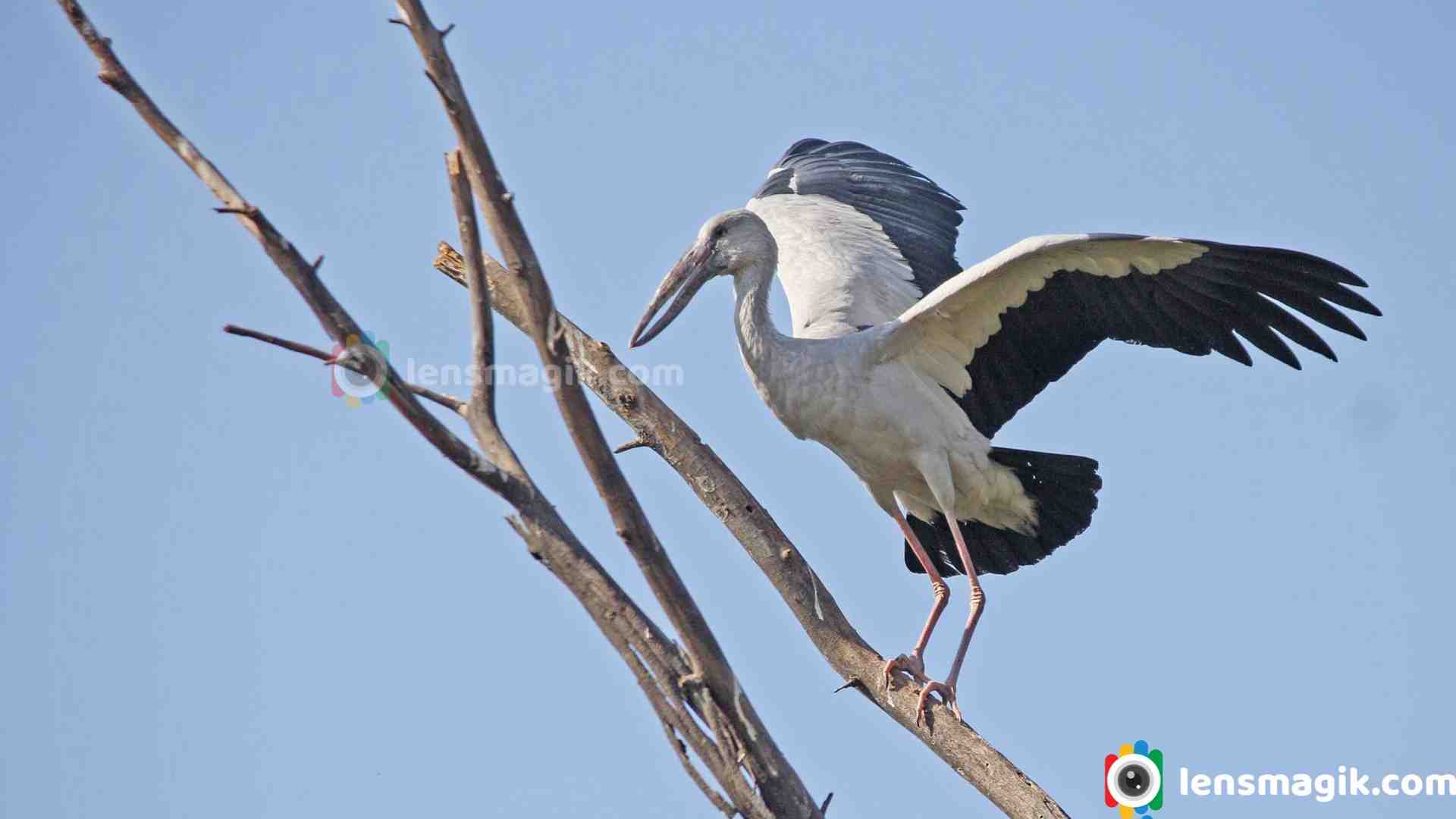
Description and Facts about Asian openbill stork :
- Asian openbill stork is greyish or white in color. Its wings and tail are glossy black in color.
- As it name openbill the gap between lower and upper mandible of the beak. The gap between beak is not seen in young bird. The gap is very useful for gripping snails and shells .
- They are generally found in flocks.
- Asian openbill generally found near river bank, wetlands, Irrigation canal and agriculture areas.
- It is very rare spices in Panjab and Sind region of Pakistan But it common in India, Nepal, Bangladesh, Thailand and Cambodia.
- They are mostly seen in Winter from September to February.
- Asian openbill feed snails and they separate shell with its beak. They also feed frogs, water snakes and large insects.
- Asian openbill breeding season is after monsoon in November to March in Southern India and Shri Lanka and in Northern India and Nepal starts from July to September .
- In colonial India a sportsman shot Asian openbill for meat calling it the " beef-steak-bird".

In Gujarat there are lots of bird sanctuary where migratory birds and also resident birds visit through all seasons. Thol Bird sanctuary, Nal sarovar , Little Rann of Kutch, Pariej Wetland, Velavadar National Park, Khijadiya sanctuary etc are famous sanctuaries for bird watching. Thol Sanctuary is famous for Flamingo bird, Pelican, Bar headed Goose and many migratory birds. I found 3 spices of stork bird name Painted Stork, Asian openbill stork and Woolly necked stork in thol bird sanctuary. Thol sanctuary, nalsarovar , Little rann of kutch are very near to my home so i visit all sanctuary often.
Gear Used : Canon 6 D, Canon 1000 D , Canon 100-400 mm lens
Location : Thol bird sanctuary, Sanand, Kadi , Gujarat
Read moreAccentor is a small bird of prunellidae family. In India it is generally found in East Sikkim area. It built its nest low in a bush. When i was on a trip to Singalila National Park. I found at sandakphu area. Sandakphu is high altitude place in Singalila National Park located in West Bengal. From here you can see Mt. Kanchenjunga very clear which is highest peak of West Bengal. Lots of Birds here. To visit Singalila Park November to February you can found lots of snow and good landscapes too with snow on Mt Kanchenjunga. Also if you are going for birding you can visit March to May/June Month is the best . It is very cold weather during winter November to February at Singalila National park.
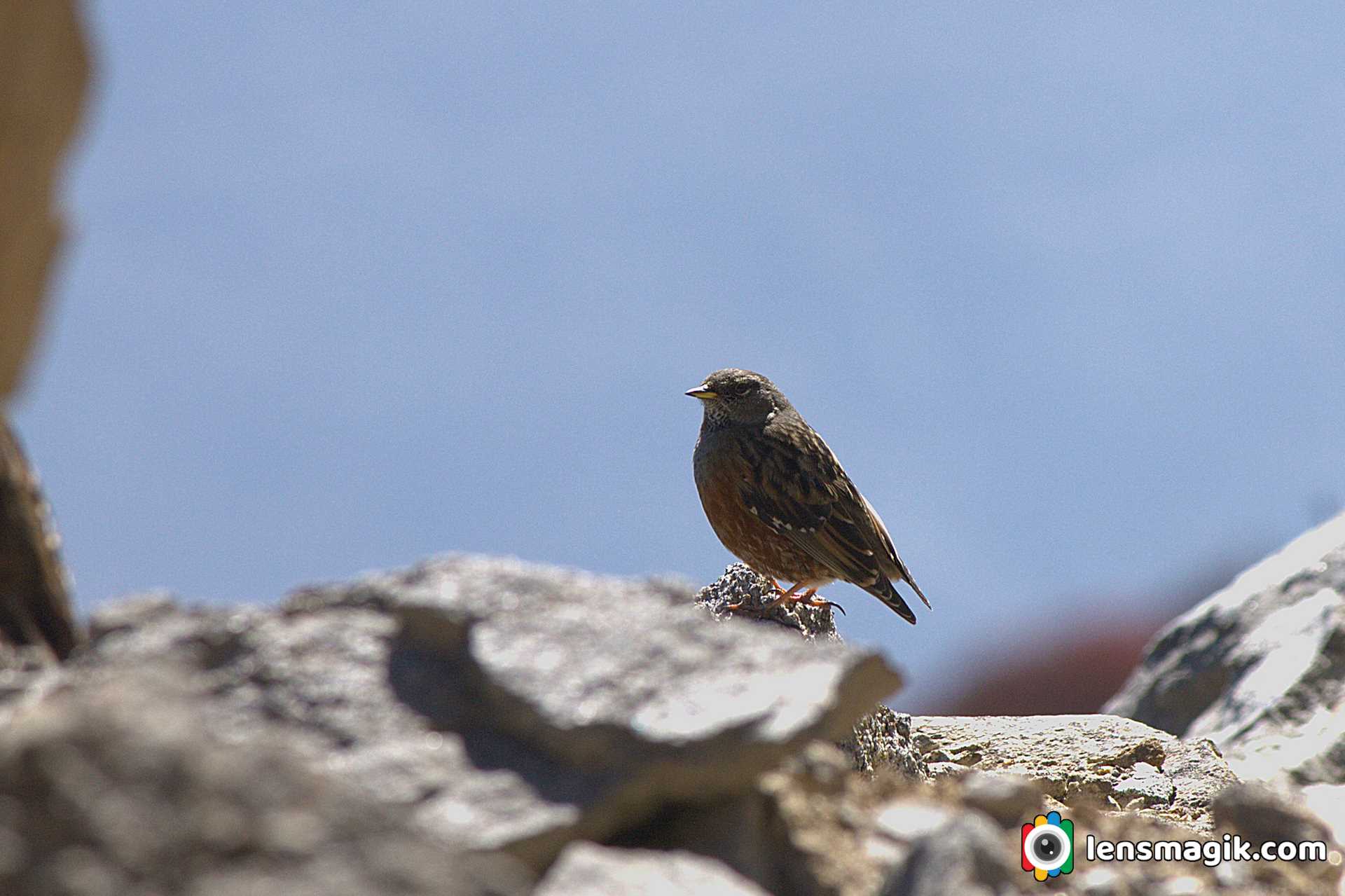
About Alpine Accentor Bird :
- Alpine Accentor bird is robin size bird. Length of bird is around 15 -17 cm.
- Bird just like similar to house sparrow in color with brown back streaked.
- Adult Alpine Accentor have red brown spotting on underparts
- Also adult have grey head too.
- In Asia Accentor found at 2000 m above height. Specially at Himalayas.
- It build nest in bush.
- It laying 3-4 plain (not spotted) eggs of sky blue color.
Singalila National Park :
Singalila national park is located in West Bengal. There are lots of birds in this sanctuary. Also its good for trekking at Sandakphu. From here you can see Mt. Kanchenjunga easily and very closely. Also a beautiful Himalayan Mountain range with snow. Amazing weather very cold in winter and moderate in summer. Summer season is the best for birding at sandakphu.
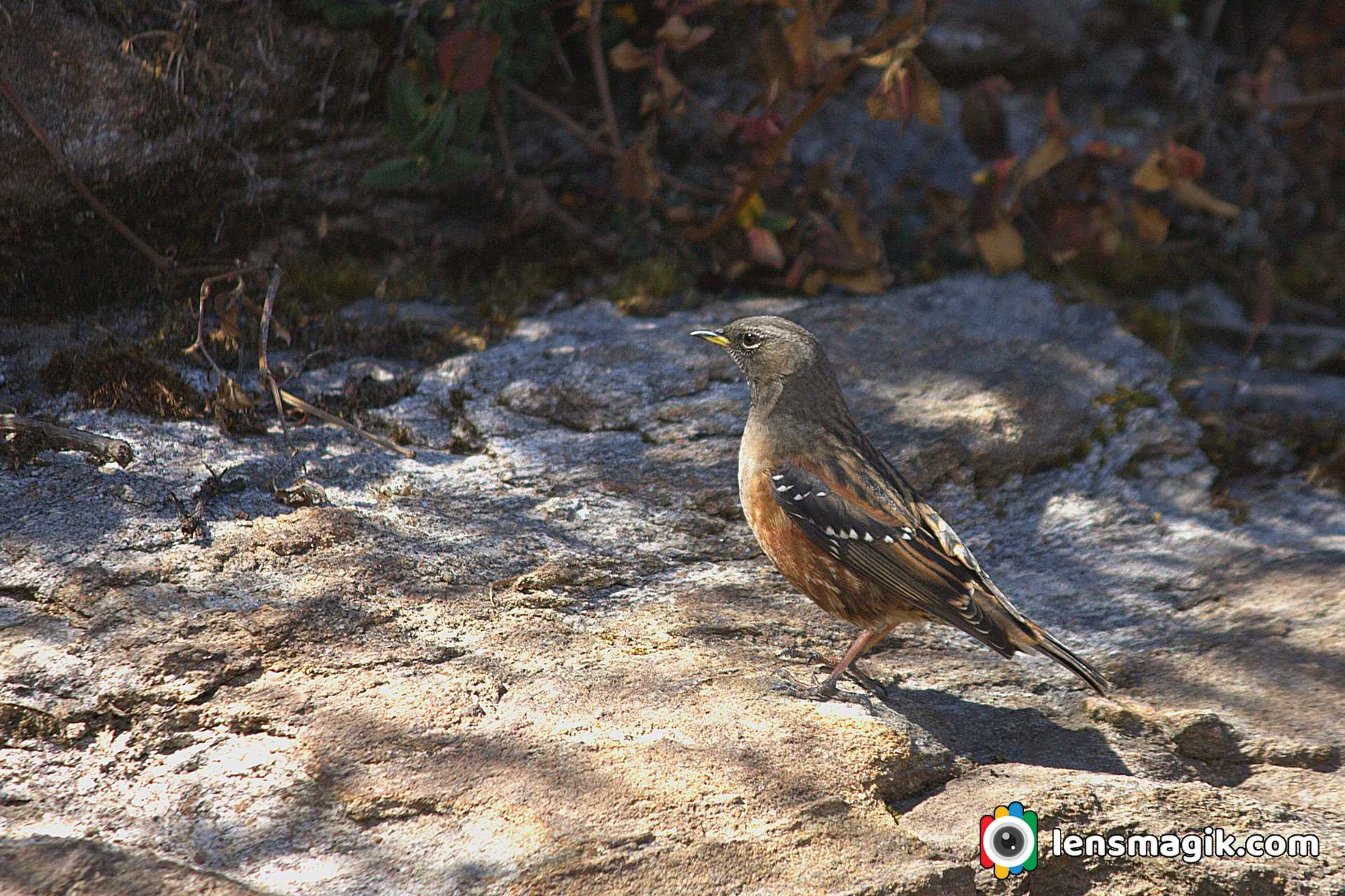
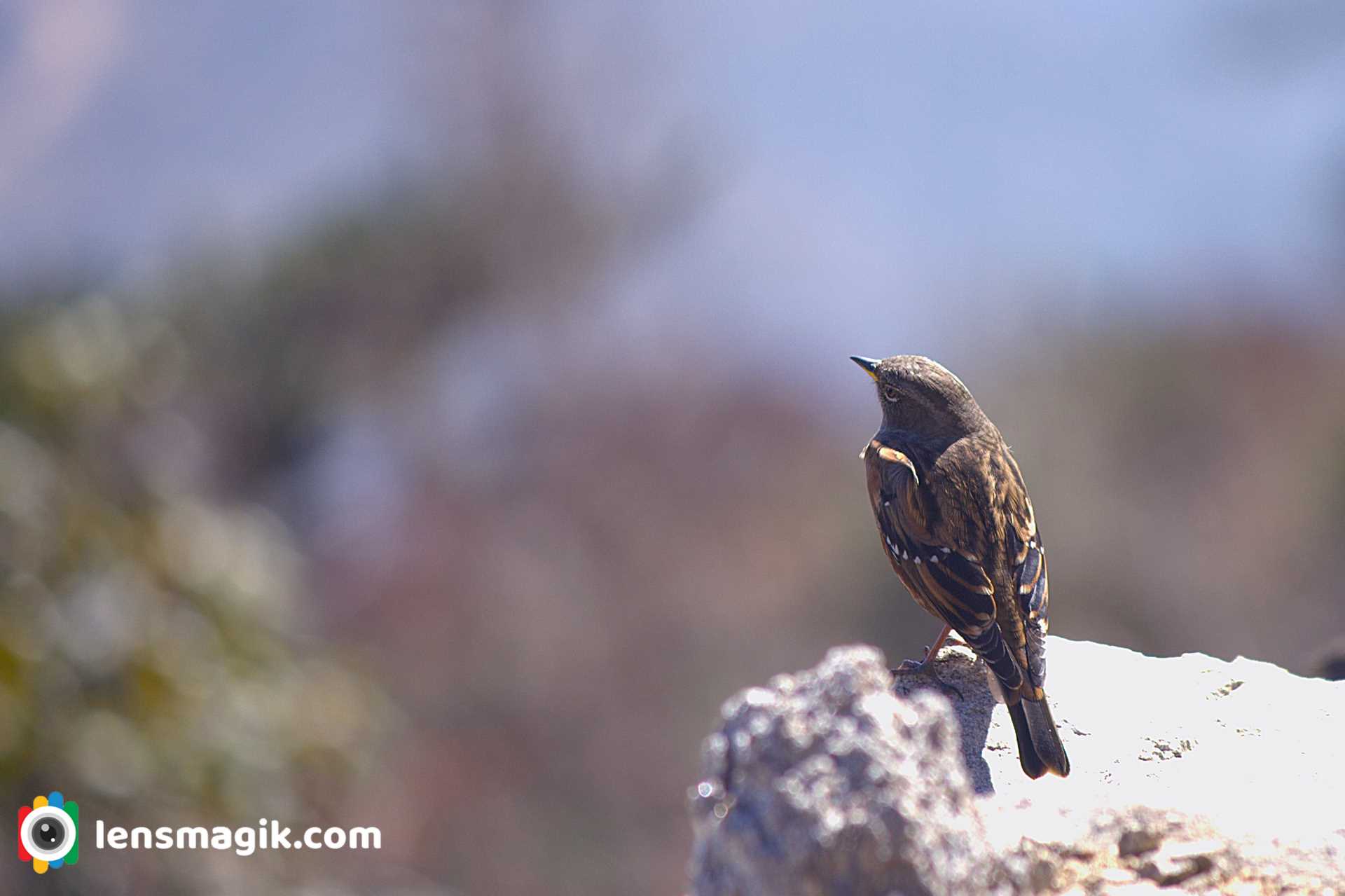

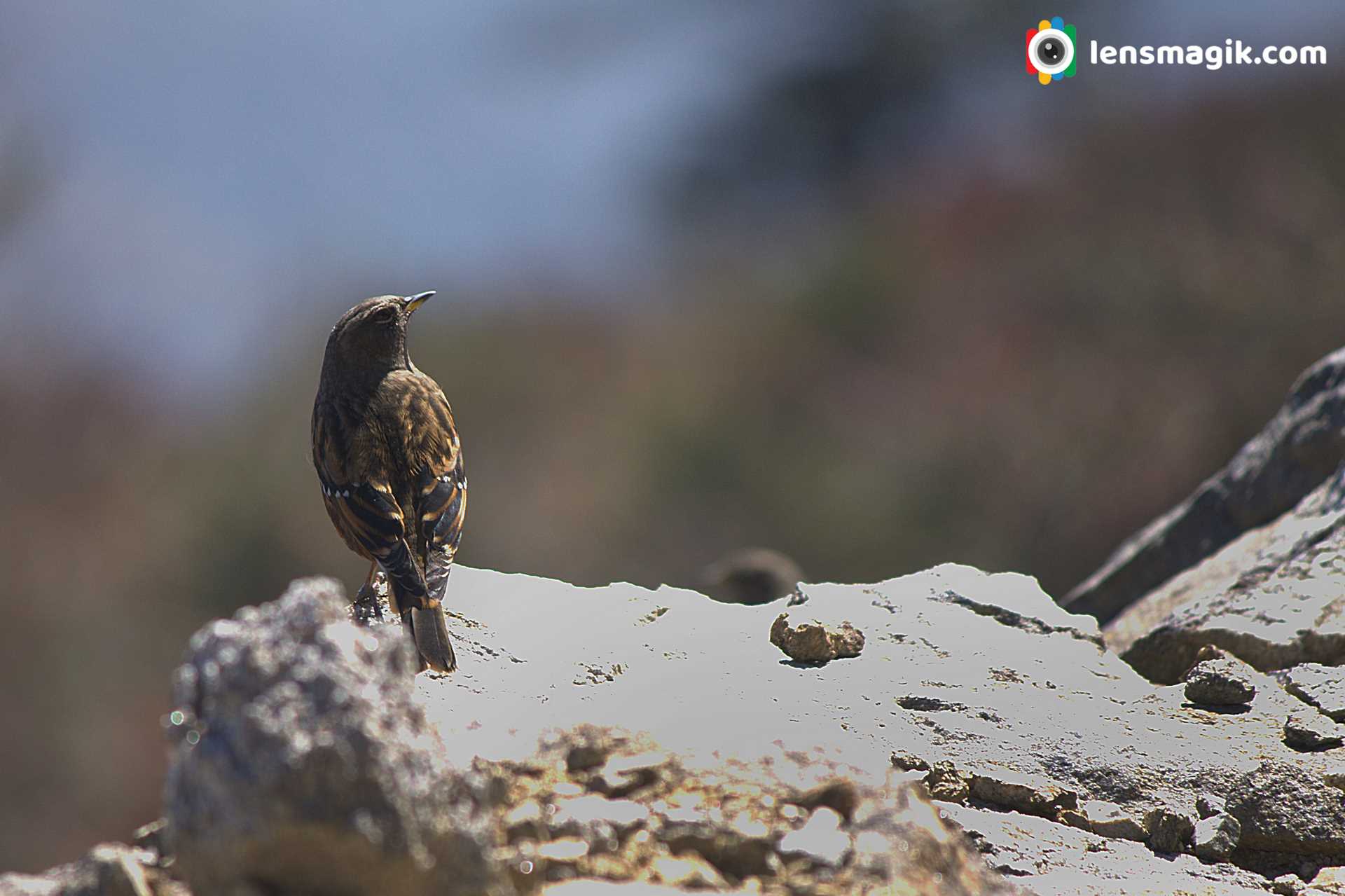
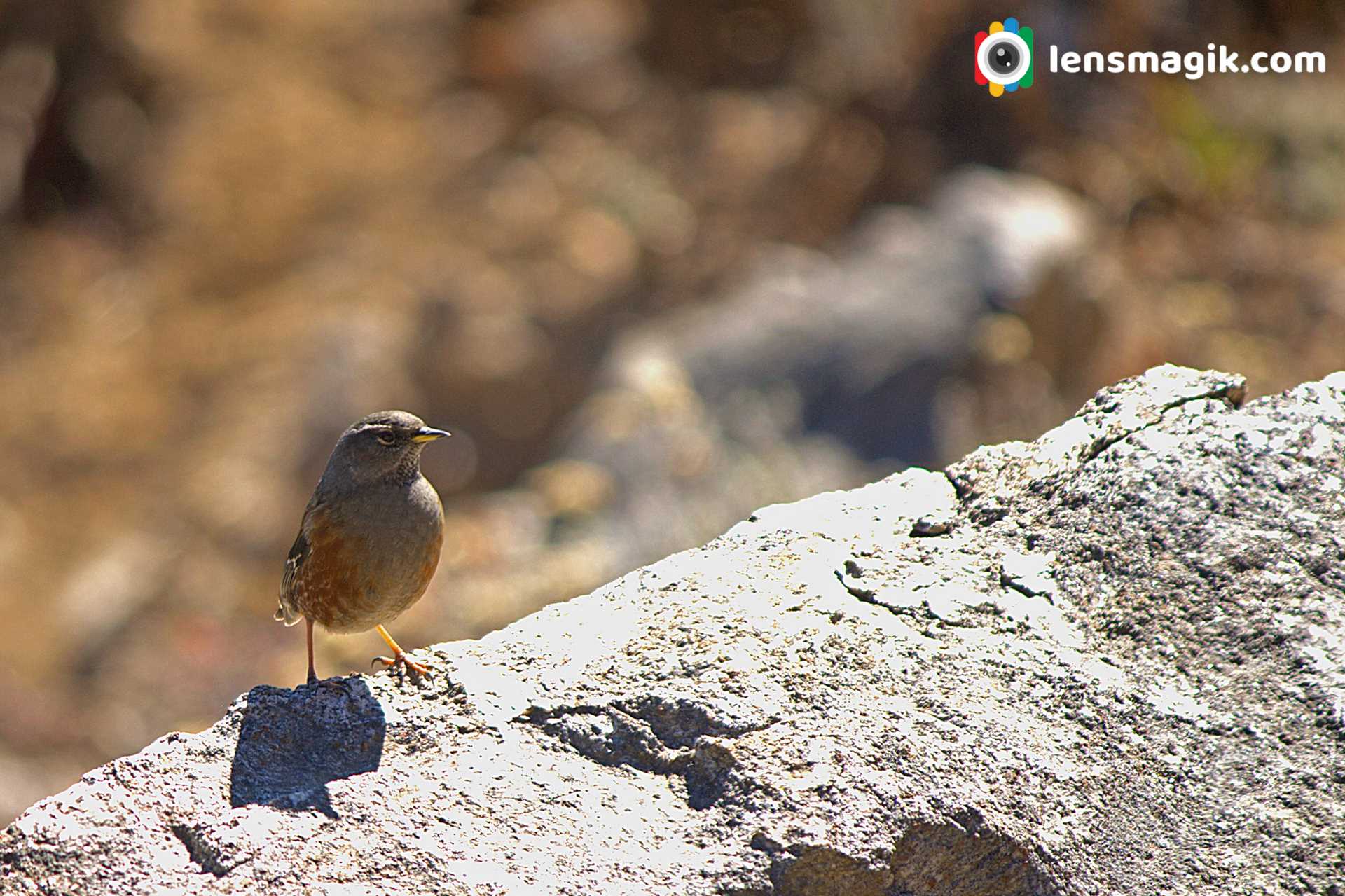
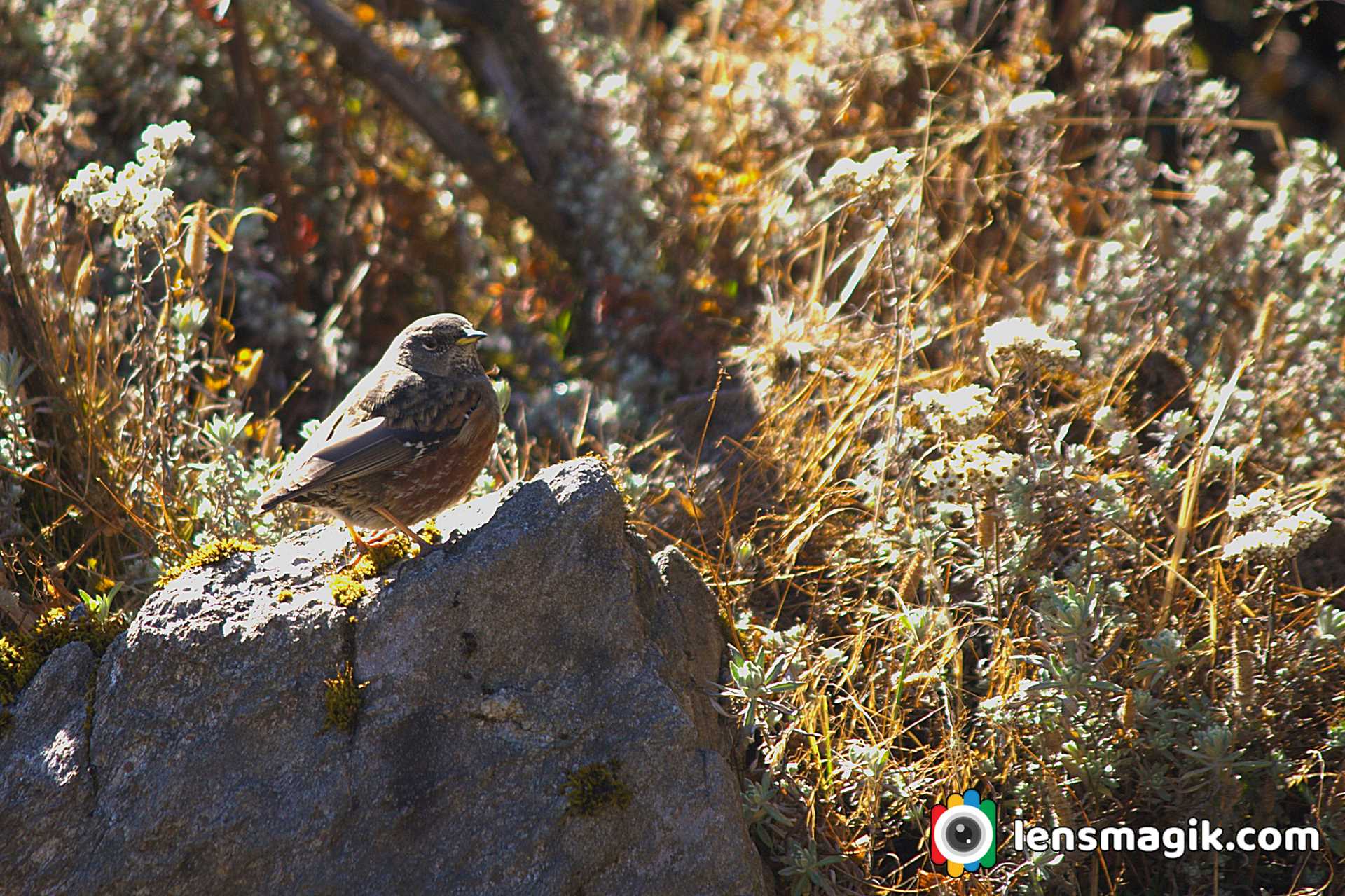
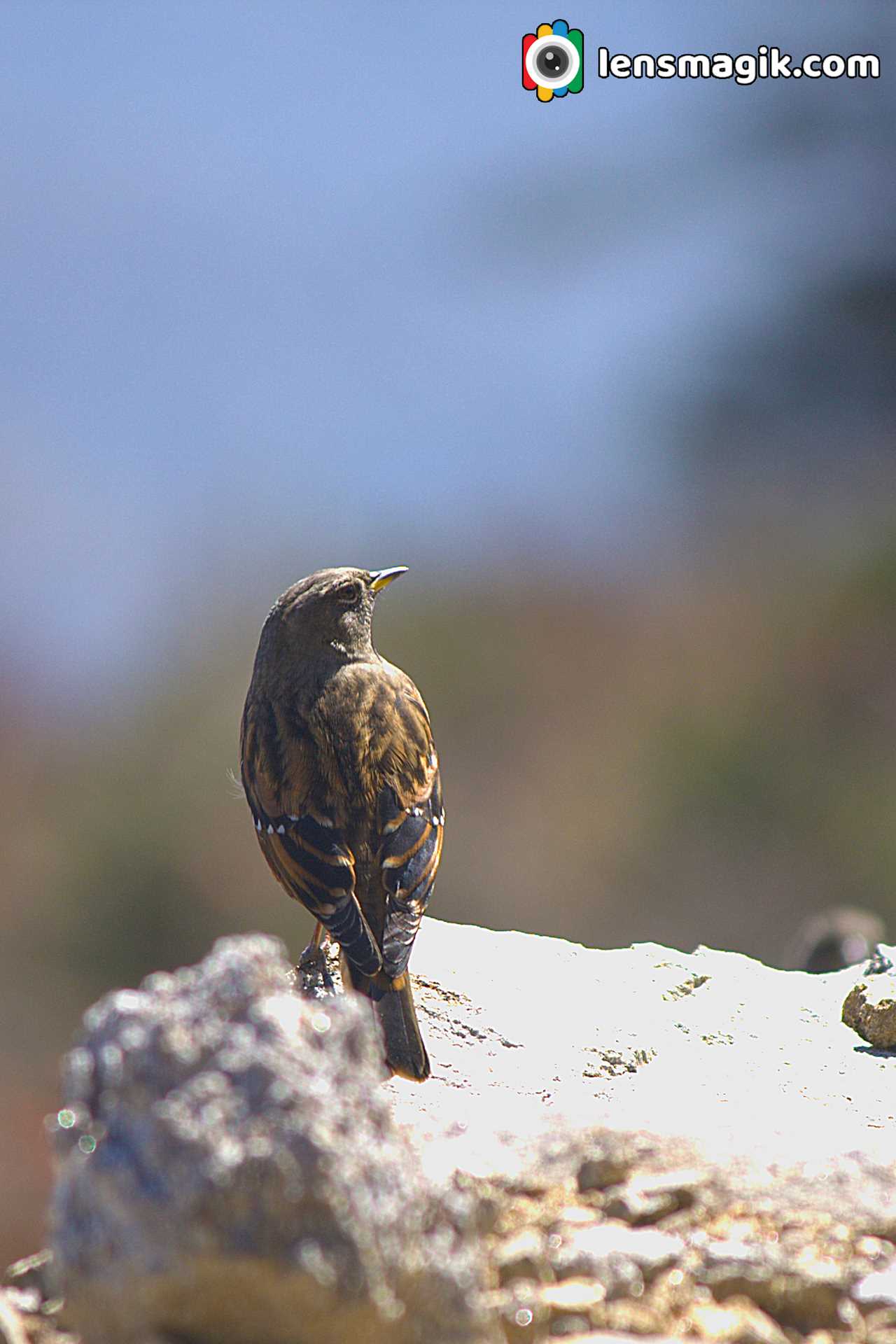
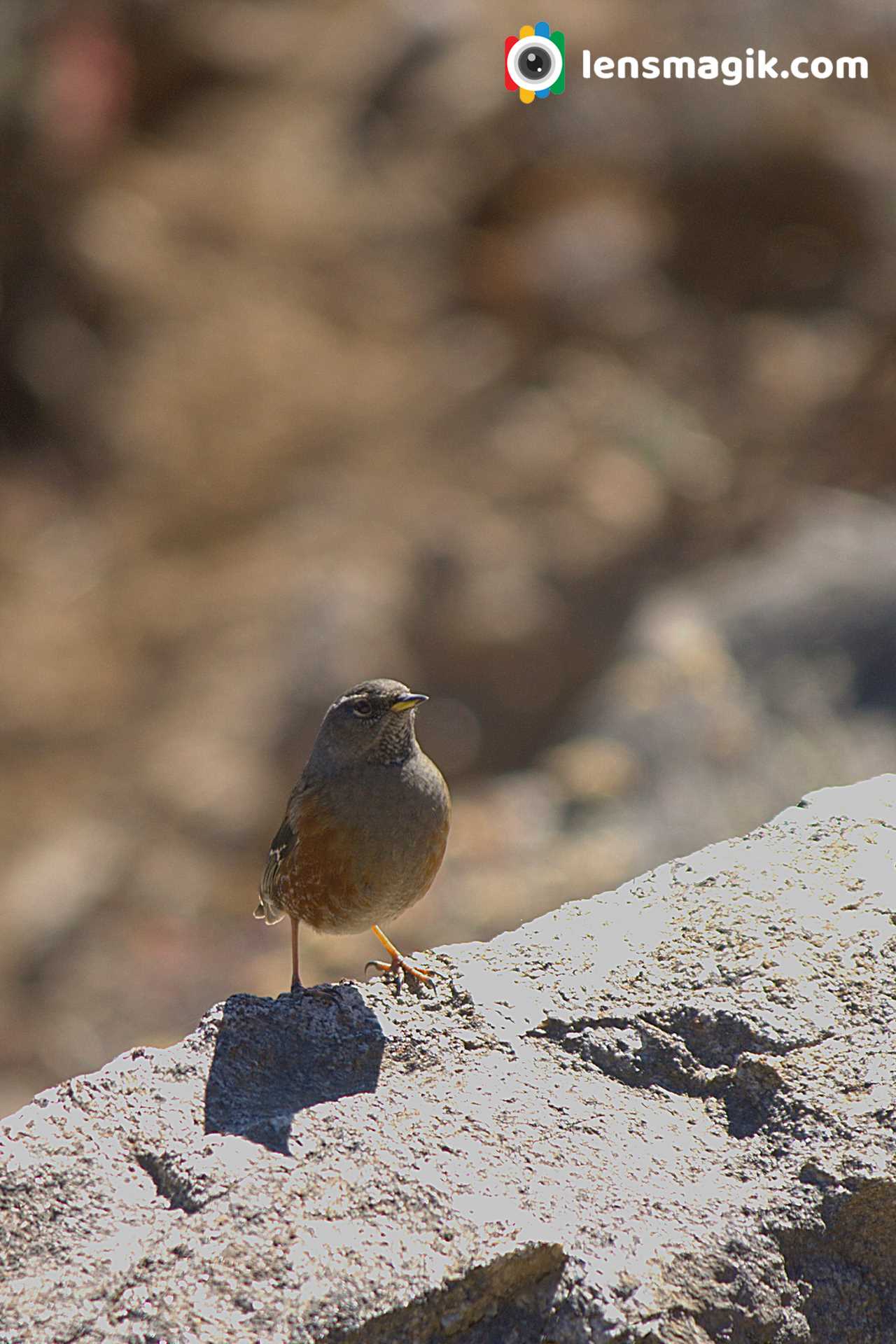
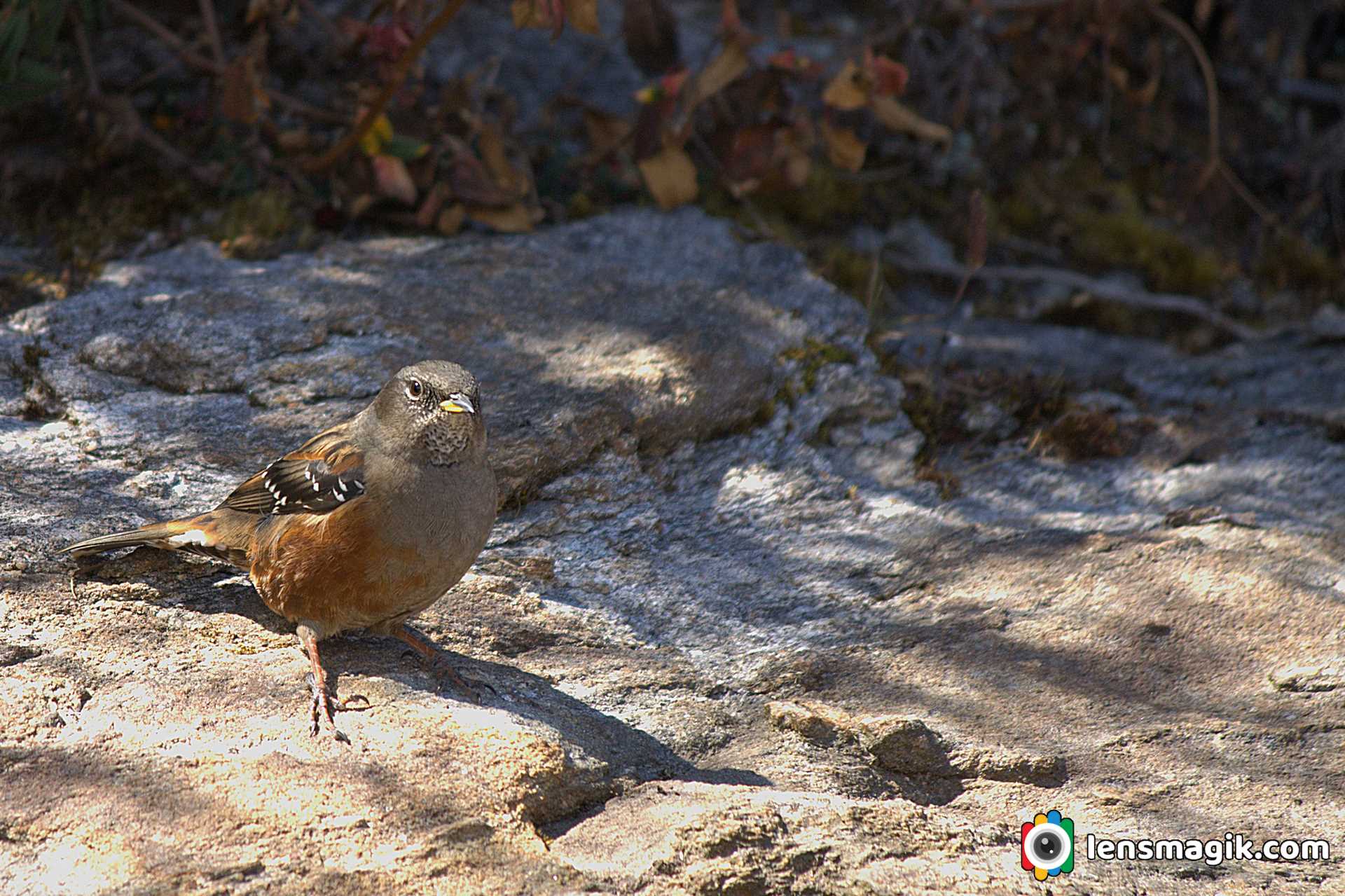
Alpine Accentor bird Binominal Name is Prunella Collaris . Total 9 subspices are recognised of Alpine Accentor bird.
Gear used : Canon 1000 D, Canon 55-250 mm Lens.
Road To Heaven is named to the road from Khavda to Dholavira in Kutch Gujarat. The road is so wonderful and scenery so it known as Road to Heaven . Khavda to Dholavira distance is around 58km but from Khavda there is a single line narrow road passes through small villages around 15-20 km approx. The main road starts after it and it is around 30-35 km approx. strait to Dholavira. Road is under constriction but almost 70-80% work done. The road heading to the city of Harappan Civilization Dholavira which is one of the largest site of Harappan Civilization and Indus valley Civilization.

Kutch is a largest district of Gujarat and also of India. Main City or Headquarter of Kutch District is Bhuj. Kutch is famous for White Desert or White Rann. In Every winter season from December to February celebrate “ Rann Utsav “ to attract foreigners and also locals. Tent City made in white desert to stay and also cultural programs arranged in it. The main Rann Utsav held in Dhordo of Kutch.

After visit White desert people also visit Dholavira which is nearest destination from Dhordo and also Kalo Dungar in between. From Dhordo you will have to go Khavda first and then from Khavda to Dholavira which is connected through “ Road To Heaven “. Dholavira is located at Khadir Bet. Khadir bet is separated because after monsoon the water filled outer side of bet. So the Road To Heaven is the way to connect Khadir bet to main city Bhuj.
About Road To Heaven Dholavira / Road to Heaven in Kutch :
- · It connected from Khavda to Dholavira.
- · Road to heaven distance around 30-35 km.
- · After monsoon the rain water on the both side of the road. You can see beautiful Greater Flamingo birds in between. Water level is low but muddy.
- · After winter in January –February the water on both side of the road is evaporated and turn into salt. Not all water but some areas during the road.
- · Water on the both side of the road or Salt/ white layer on both side of the road make the beauty of the road and that’s why it name as “ Road To Heaven “
- · When you are on the road there is hardly some traffic you face the open road with both side water or salt at morning or evening make the scenery like a Heaven.



I must suggest to visit Road To Heaven in Kutch while you visit Kutch. Also Visit Dholavira which is one of the largest Harappan Civilization site.
Places to visit near Road To Heaven :
Dholavira, Kalo Dungar, Dhordo, White Desert
Places to Visit near Bhuj : White Desert , Kadiya dhro, Chhatardi, Mandvi beach, Vijay vilas palace, Bhujyo Dungar, Smriti Van, Vande matram memorial
Camera Used : Canon 80D, Canon 6D, DJI Mavic Air2
It is the largest species of Flamingo bird family and also a most widespread species of flamingo family.It is found in India ,south east , middle east and Africa. It is migratory bird. They also breed in India. In Gujarat they breed in Rann Of Kutch , Little Rann of Kutch also found in Thol Bird Sanctuary. I often visit Thol sanctuary so got good shots of them. Best time for shoot them is may-Jun at Thol bird sanctuary bcz of water level is too low . It is been recorded that some flamingo birds are resident in Gujarat at many places like LRK, Khijadia sanctuary, Nalsarovar and Thol Sanctuary. They also breed here and stay for all seasons. So you can find greater flamingo birds in all seasons in Gujarat at many places.
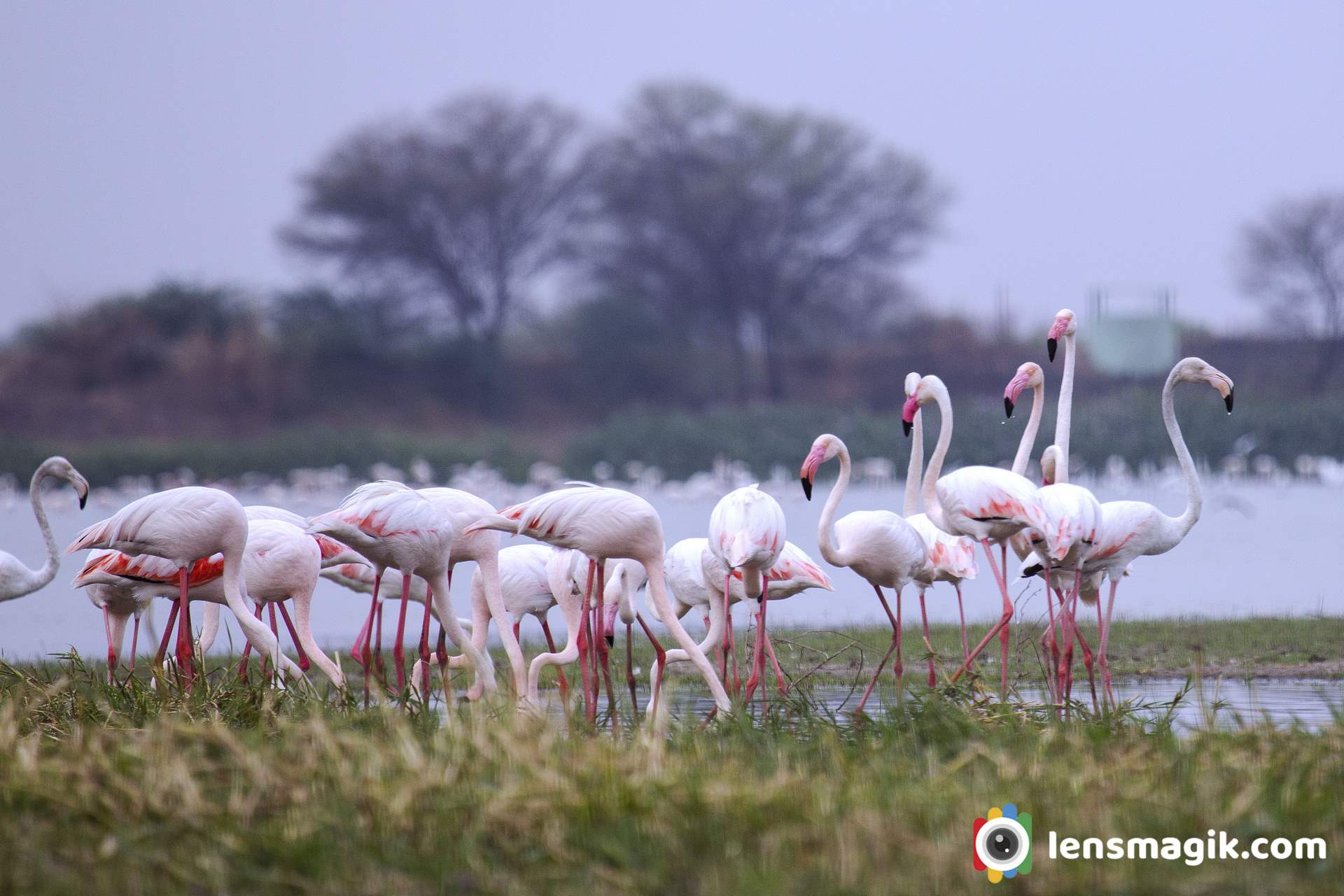
Flamingo bird facts and description :
- Greater flamingo bird is the largest living spices of flamingo.
- Greater flamingo has no subspices.
- Flamingo color most of pinkish white in plumage. Wings are red and feathers are black in end.
- Greater Flamingo bird call is like honking.
- The average lifespan of flamingo bird is 30-40 years.
- Main Difference between Greater flamingo and lesser flamingo is height . Lesser flamingo is shorter than greater flamingo. Also Greater flamingo has pale pink bill and black tip. In other case lesser flamingo has dark crimson bill. Lesser flamingo is also more red in color than greater flamingos.
Greater Flamingo birds In Thol Lake : Thol sanctuary is often i visit. Flamingo birds are stay here all seasons. I got good numbers of Greater flamingo and lesser flamingo bird images in a group when i visit Thol. This is my best time with flamingos. Also i got some beautiful pictures of flamingo birds with group and also in duo with some masti. Flamingos looks very good in frame bcz of their color. Thol lake is good place for birders because more than 150 birds spices found here. Also some mammals like Blue bull and black buck also found here. Lots of water birds and tree birds found here. Also sanctuary is not so big so you can find all birds in around 6 sqkm area. Best time to visit thol lake is November to March. All migratory birds are visit in winter so that is best time. Early morning is best for birders.
Timing And Fees of Thol Sanctuary :
Thol Sanctuary open at 6 AM in morning and close at around 5 PM
Fees of Thol Sanctuary is 50 INR per person and camera fees are 200 INR. Car fees are 500 INR.
Weekend fees may change that actually i don't know about it.
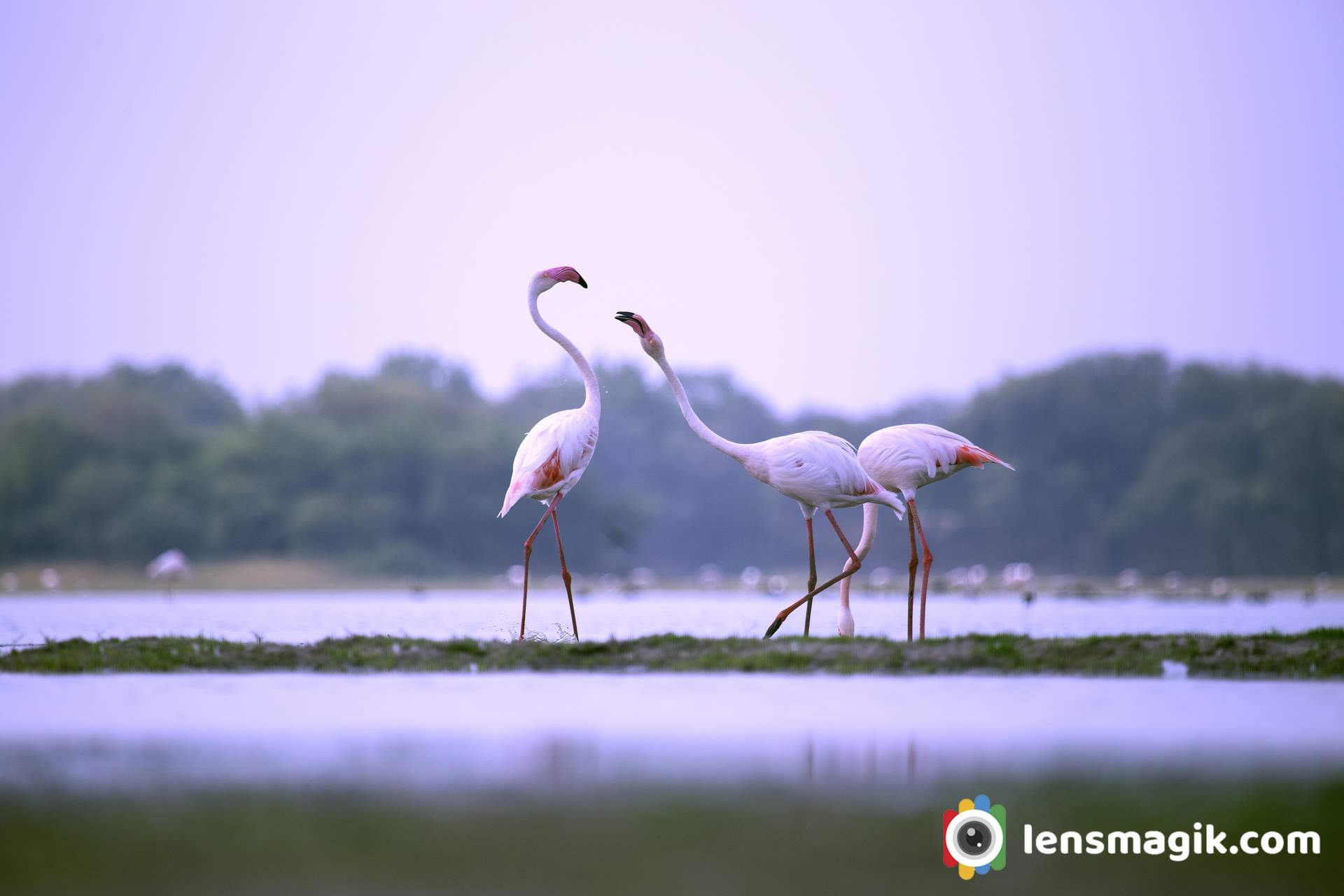
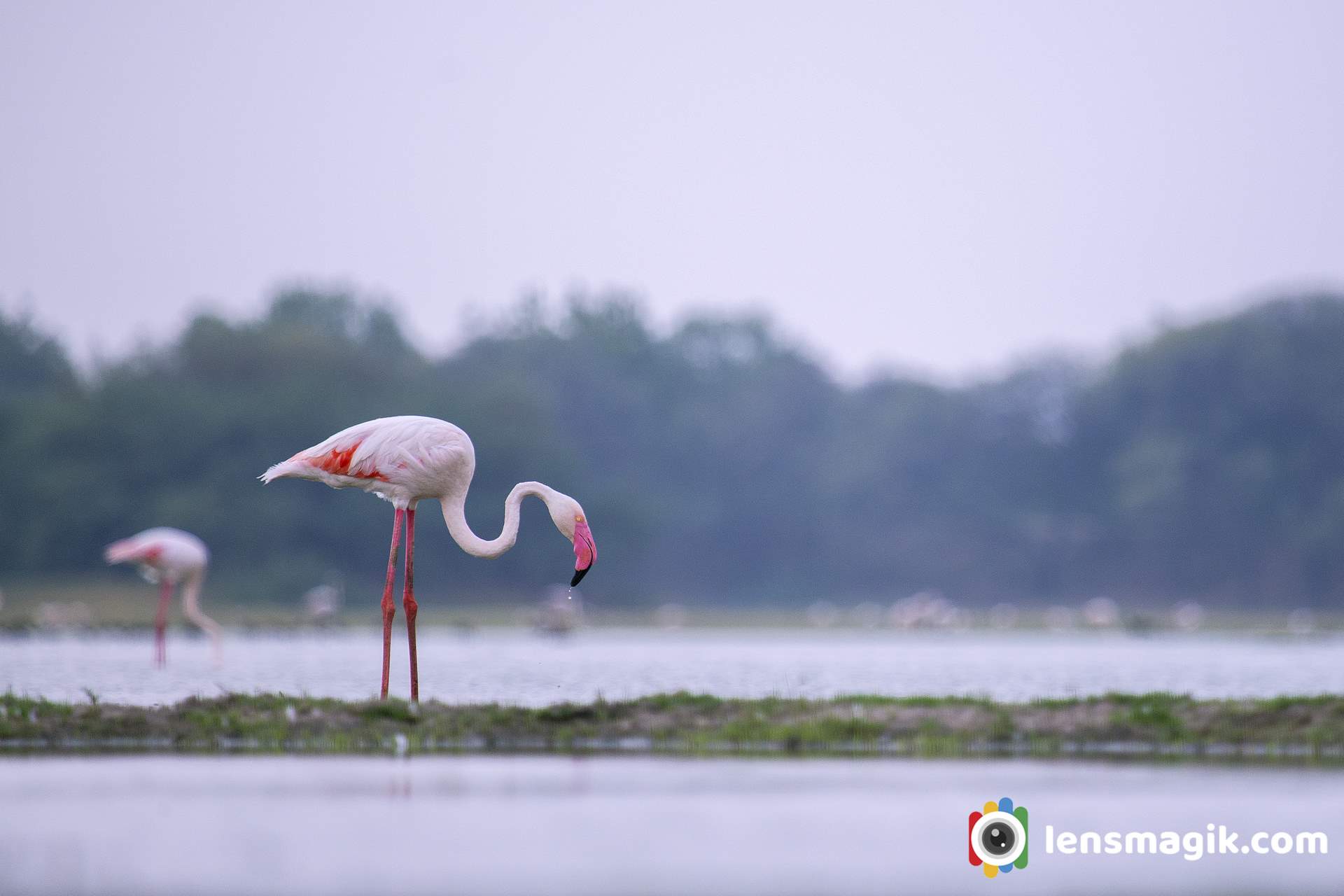
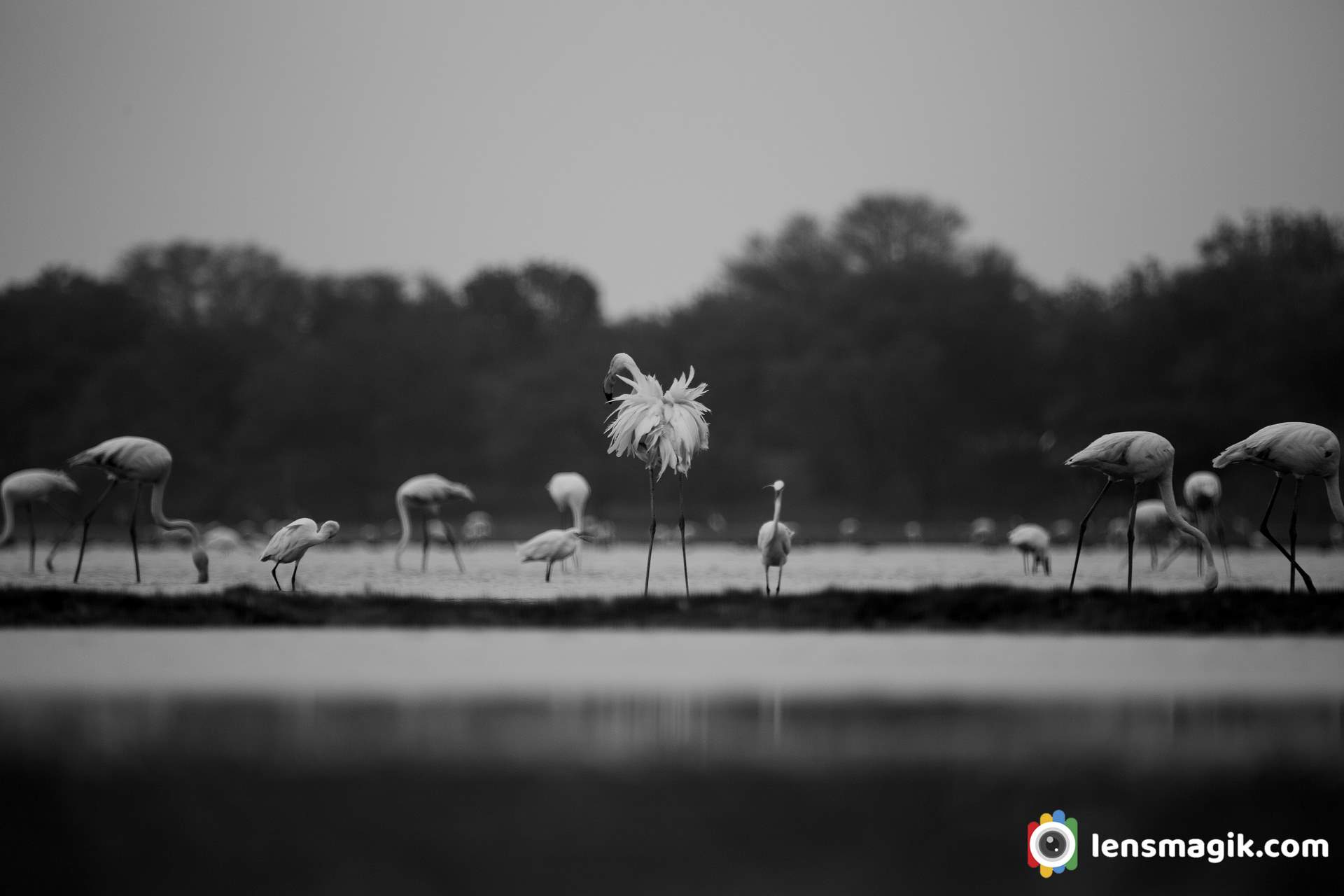
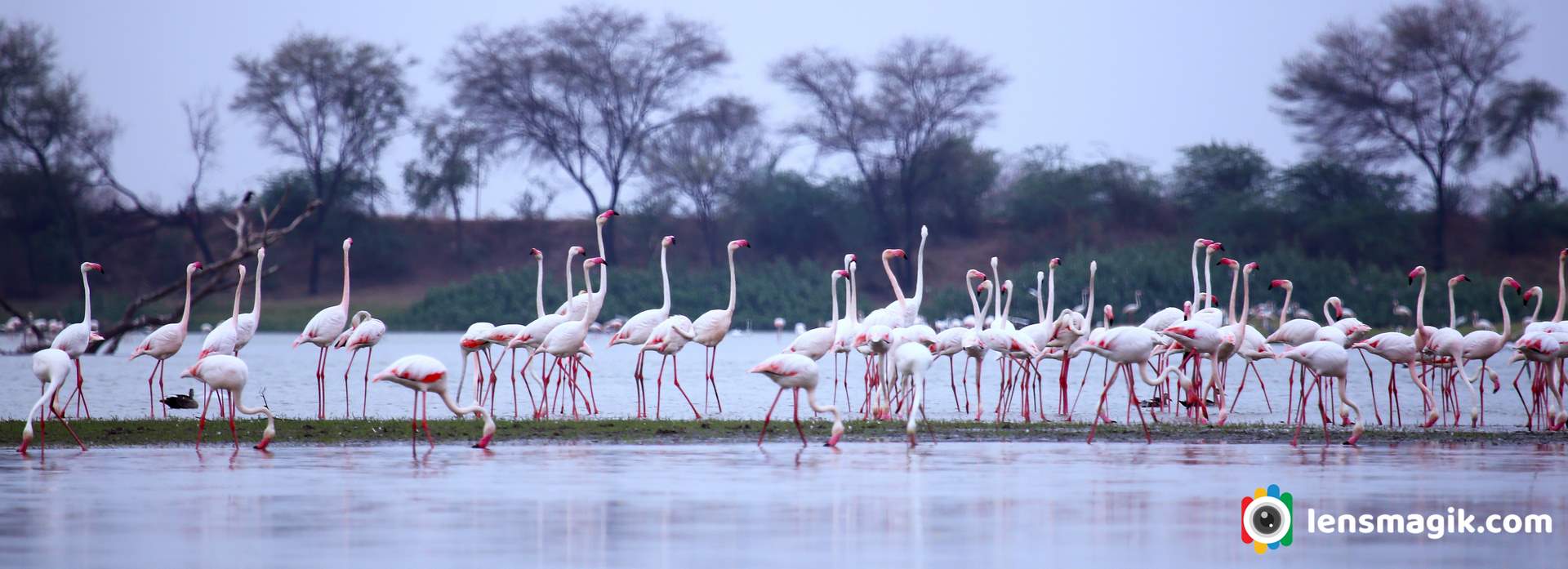
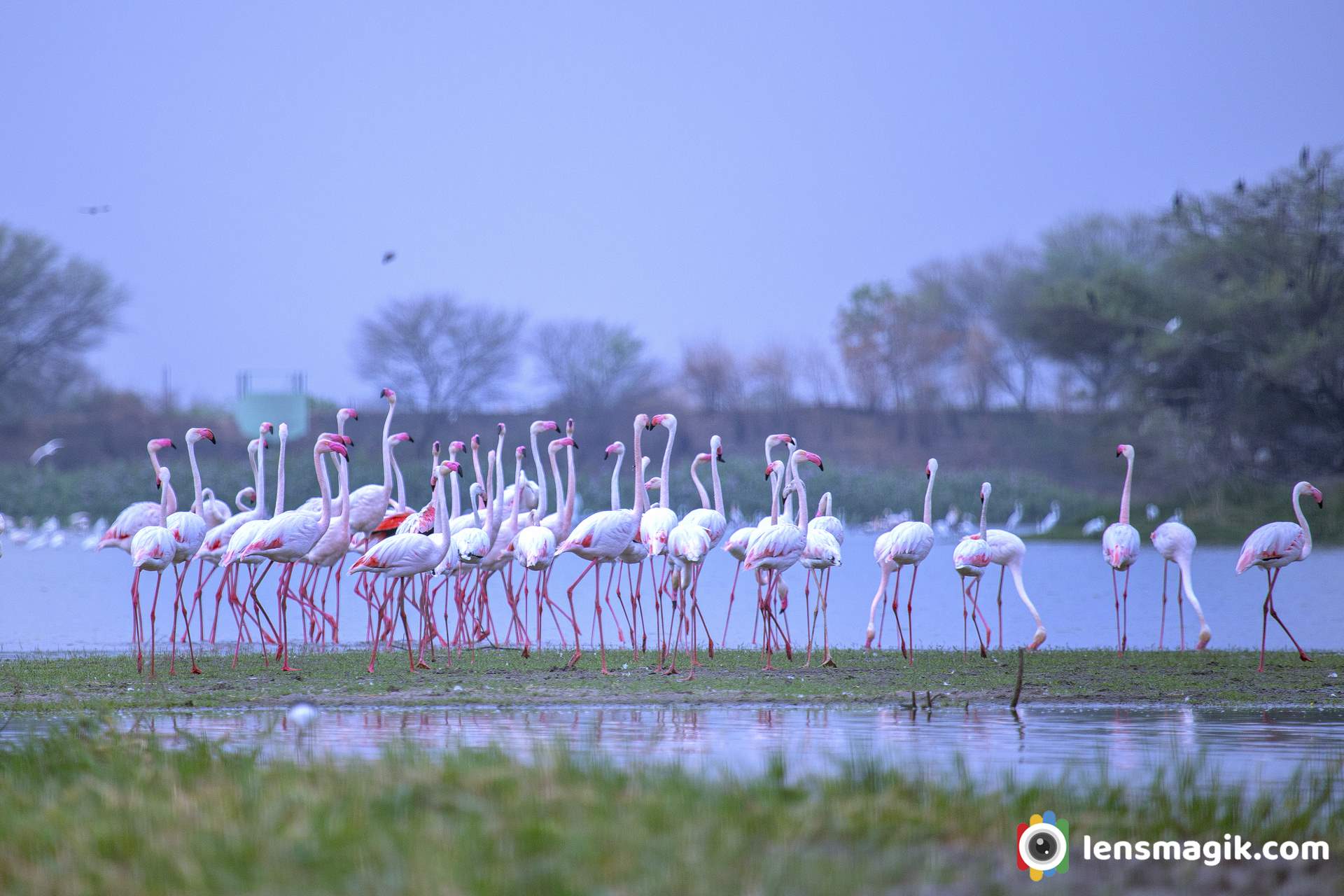
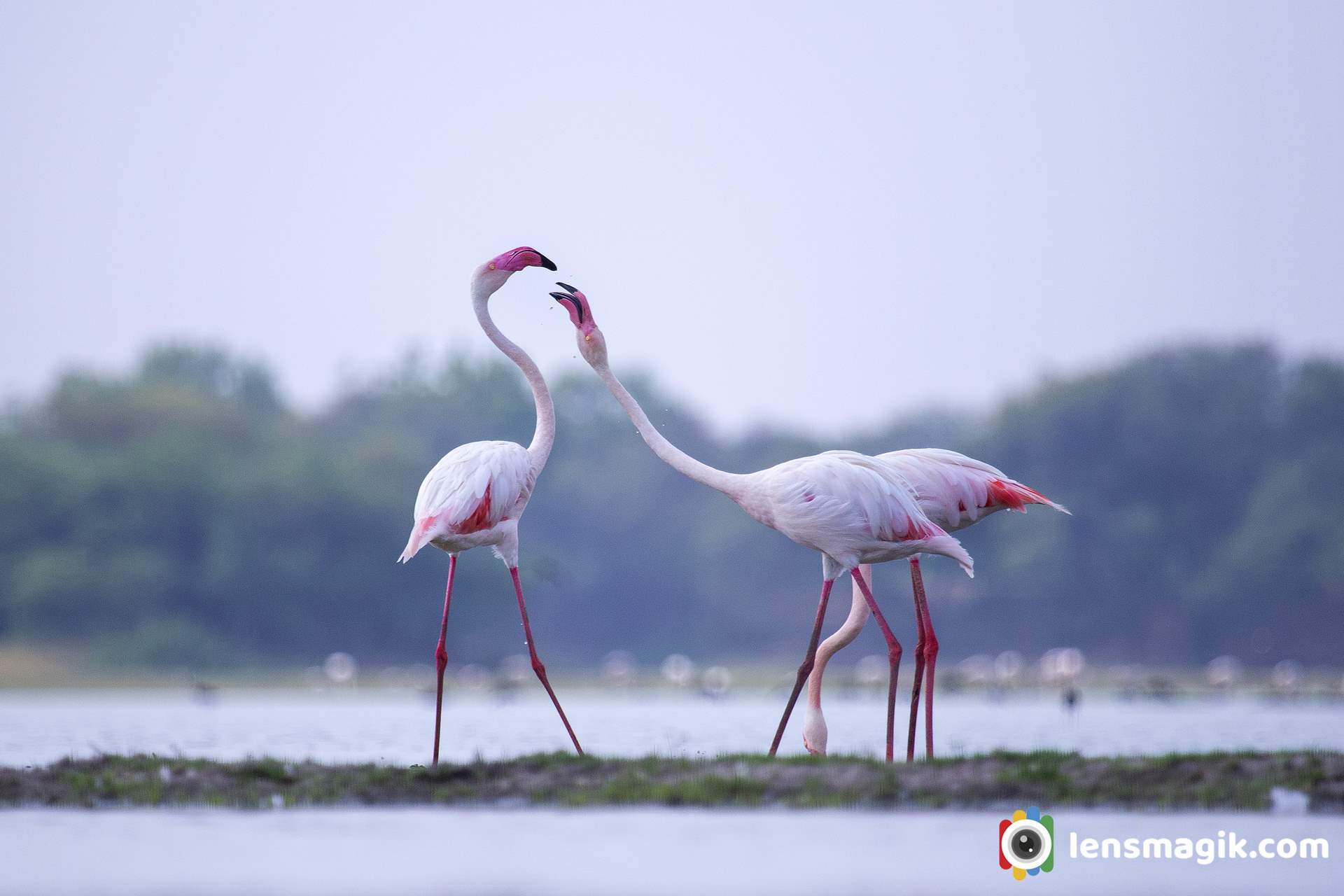
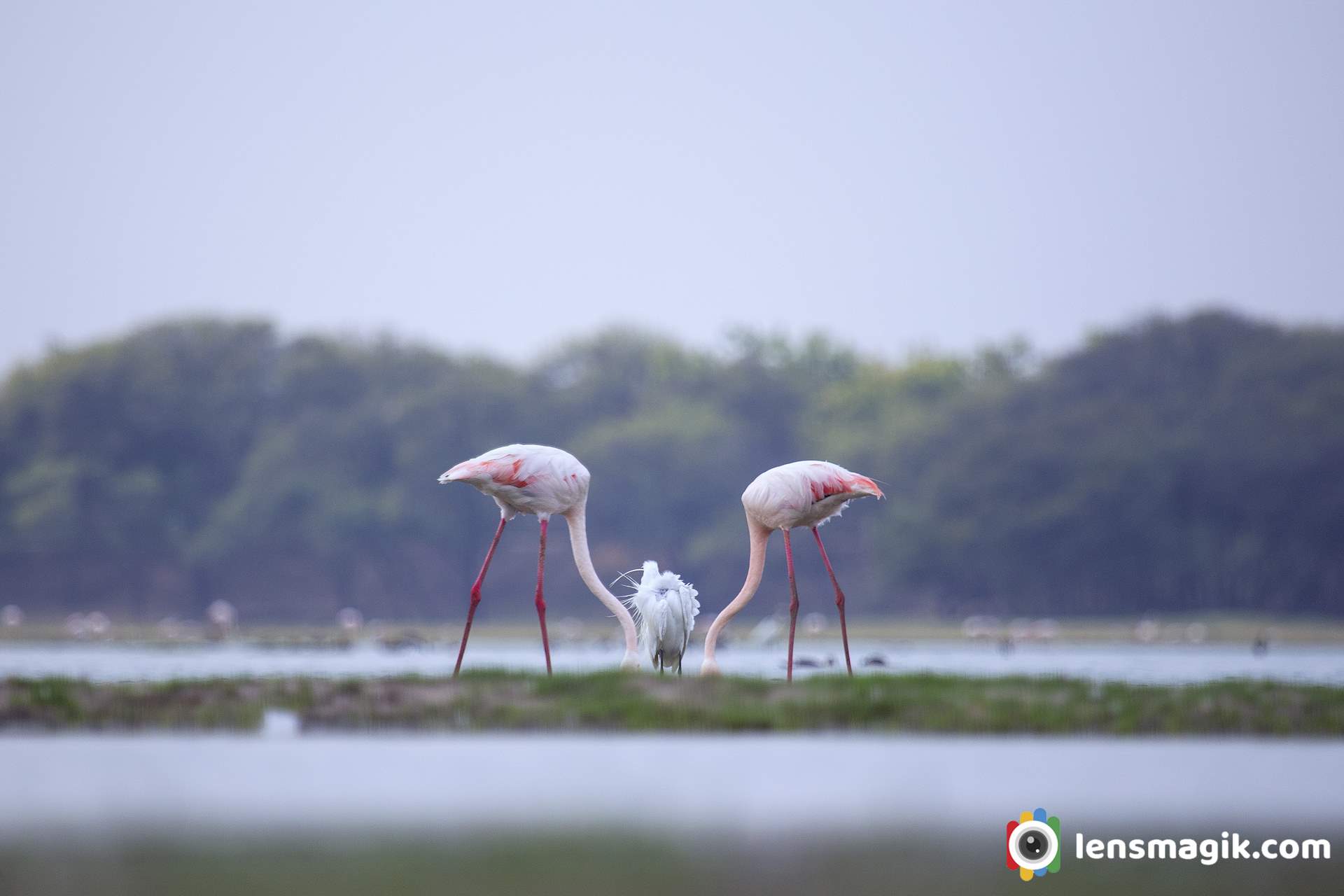
Two flamingos with little egret in between of them with down head all. The images of flamingo bird making a good frame. Because of its color flamingo birds images are very attractive and also their grouping make a perfect frame of flamingo bird picture.
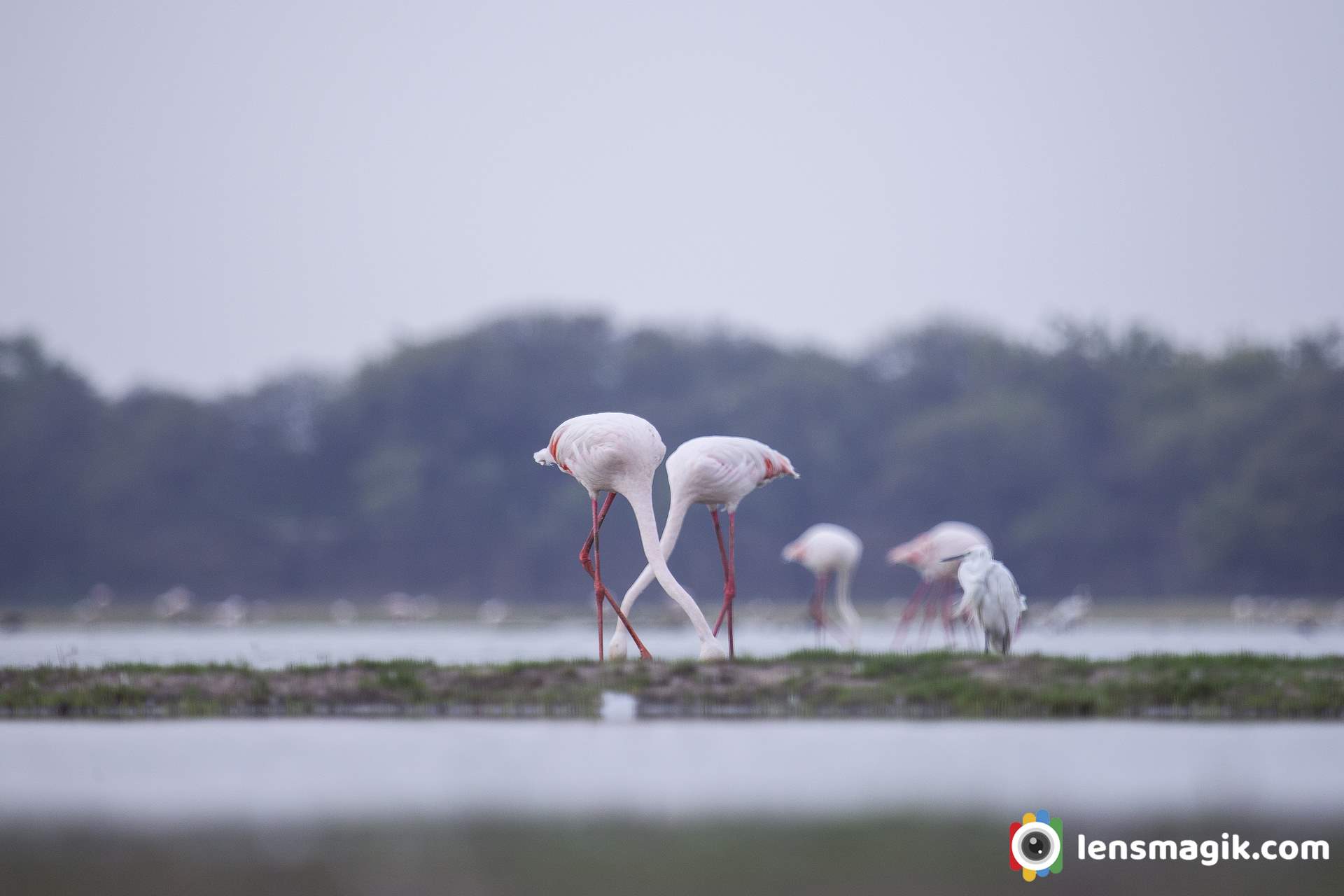
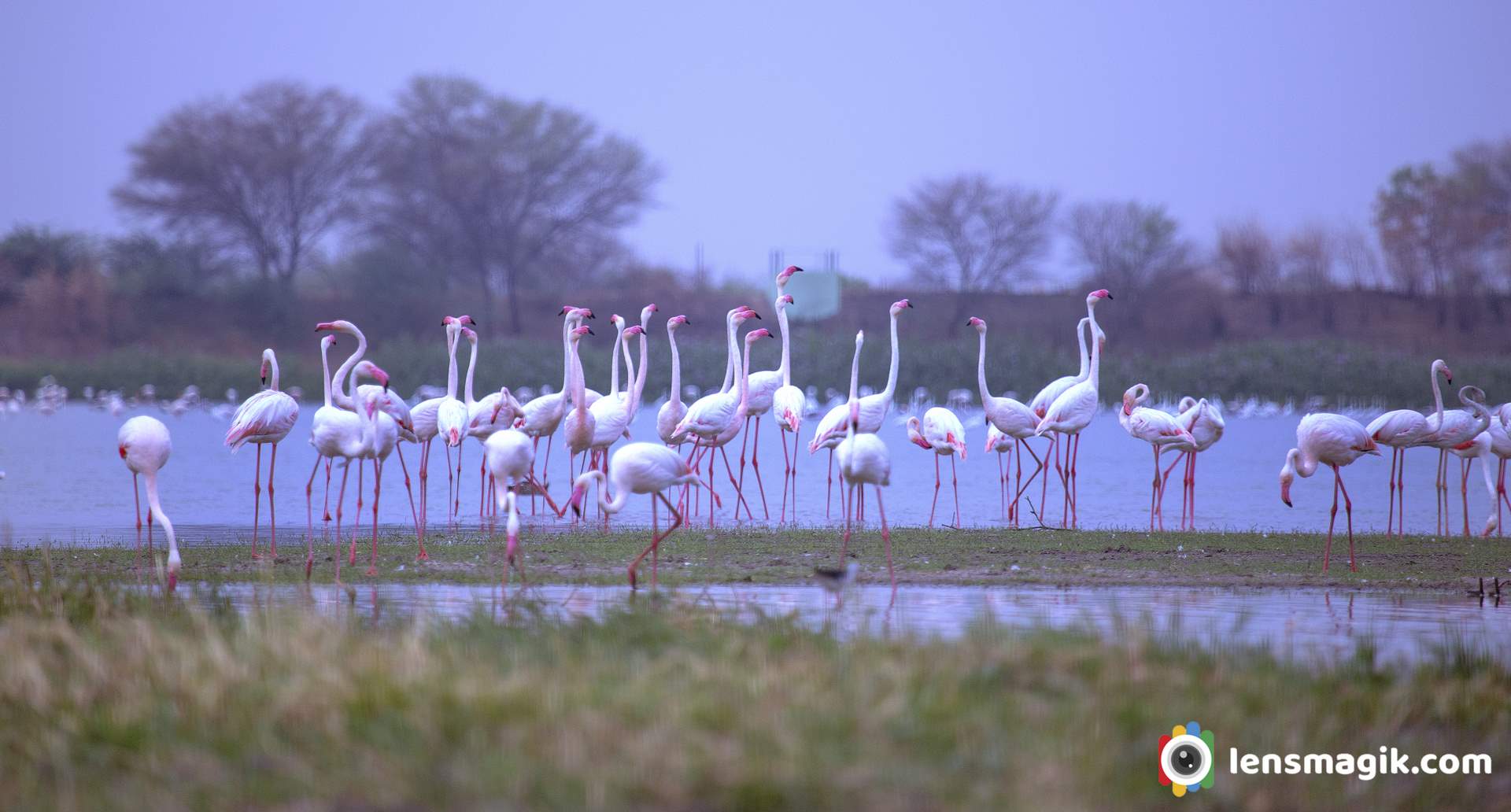
A morning pared time for flamingo birds. A beautiful Greater flamingo birds are in a raw make image nice and show their unity.
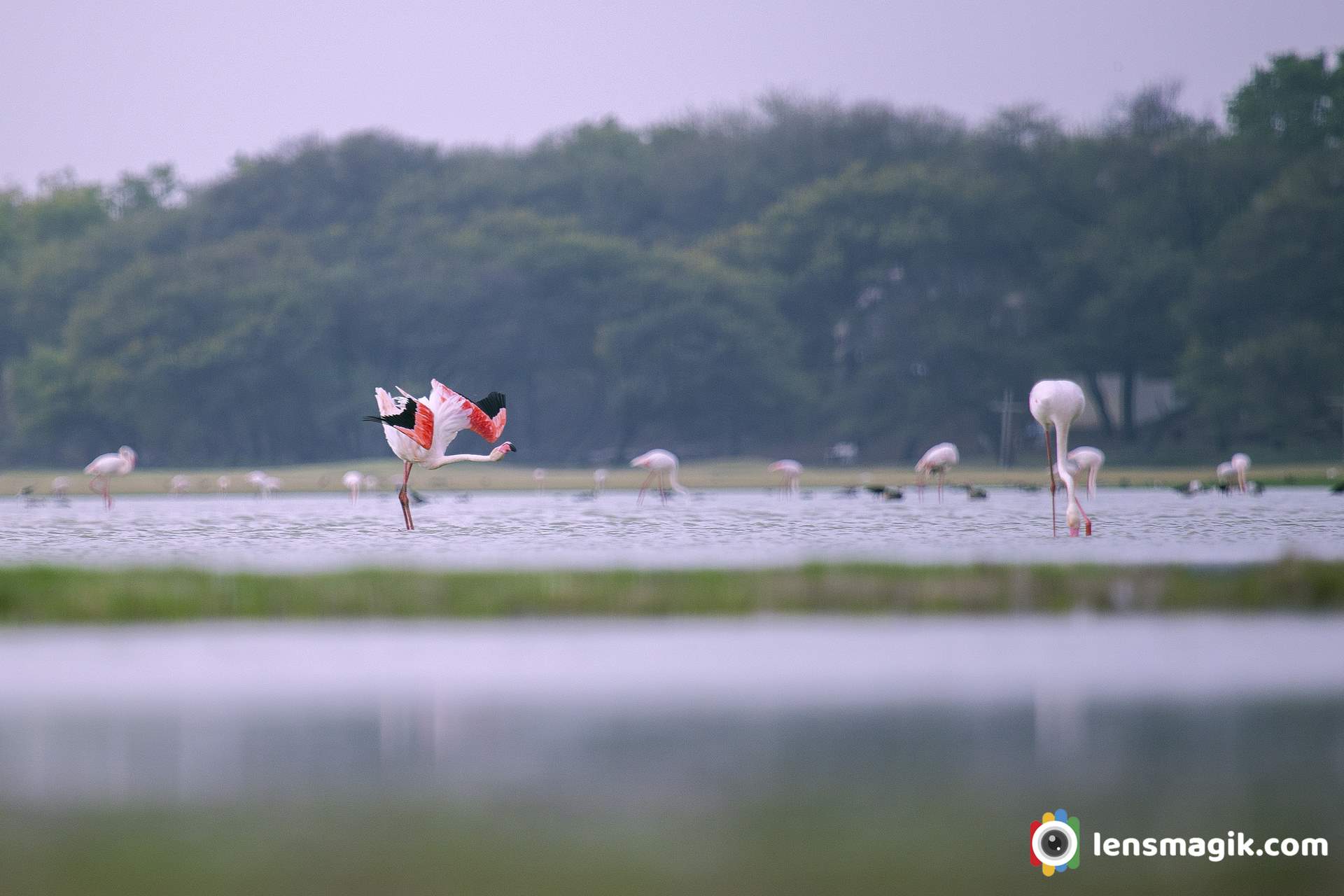
Perfact wingspan of Flamingo bird looks great. Pink Wings make image more attractive.
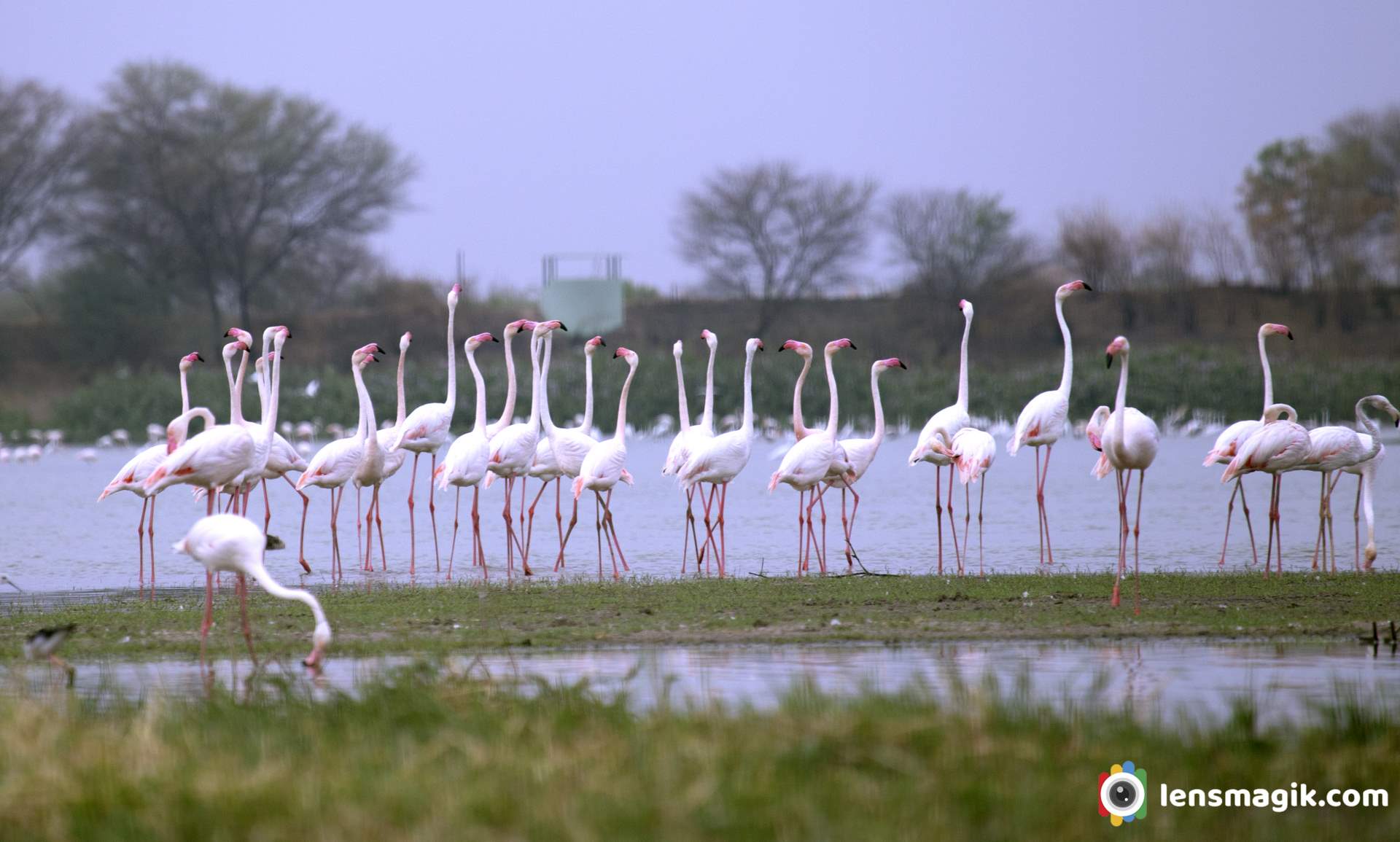
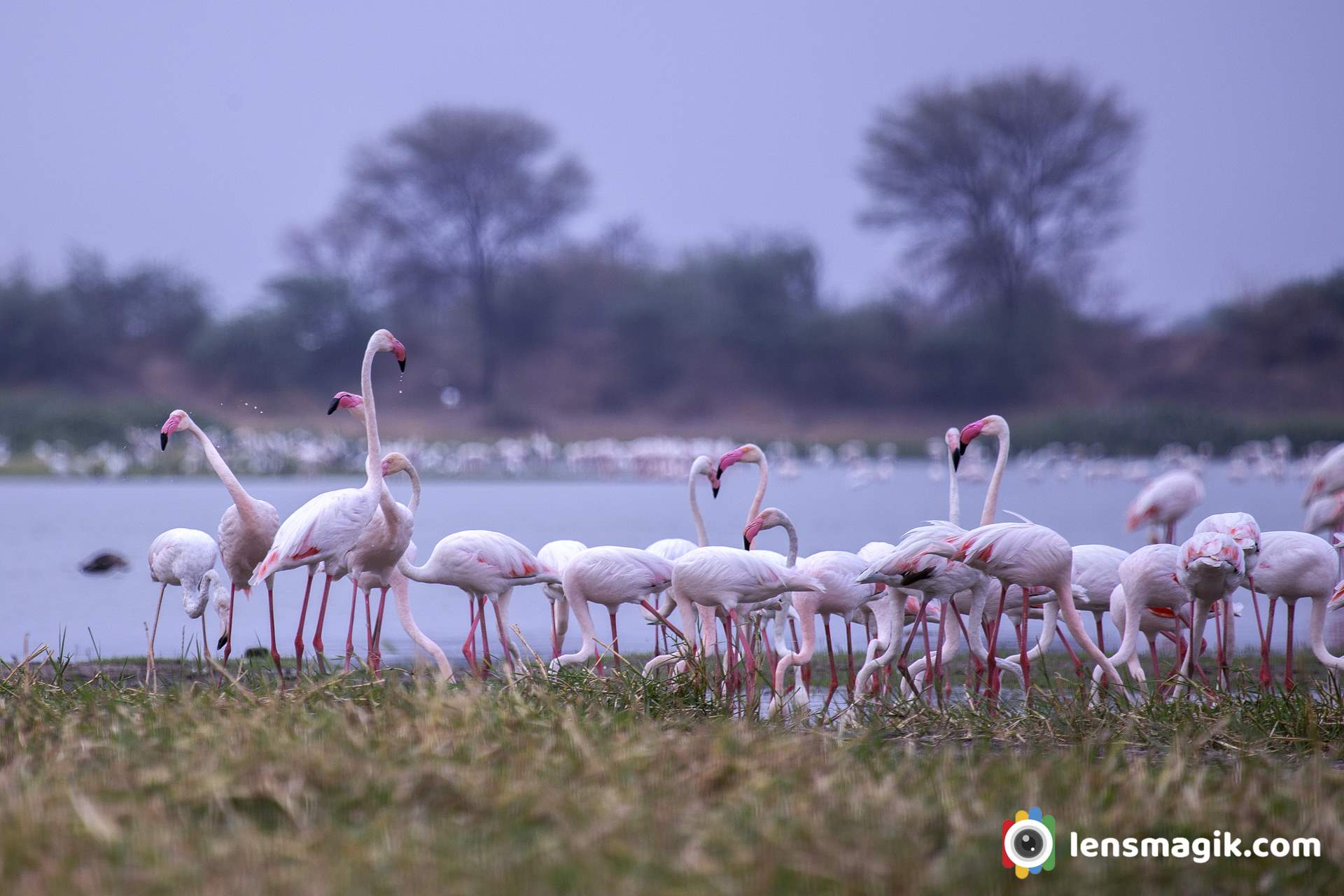
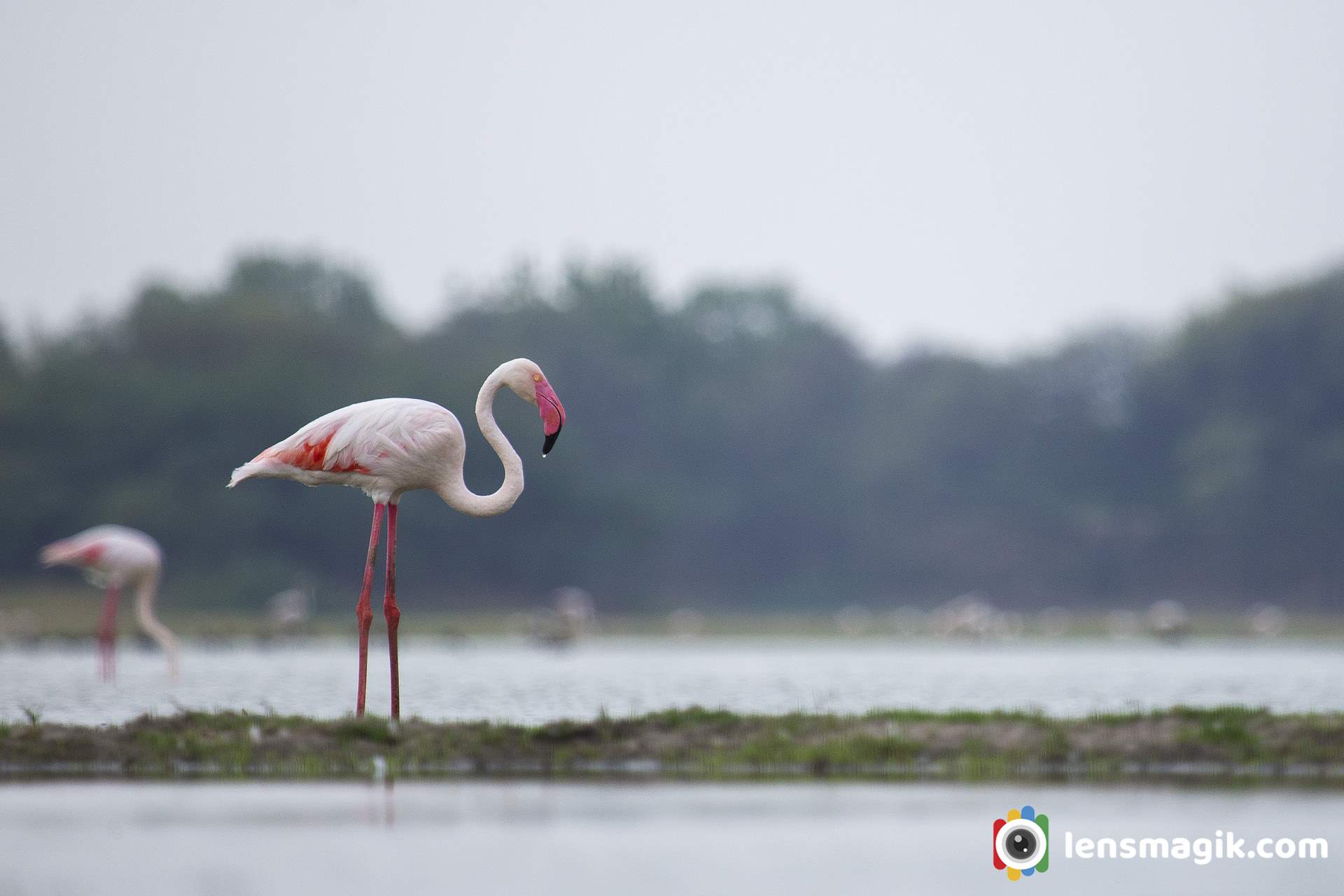
Solo Greater flamingo bird
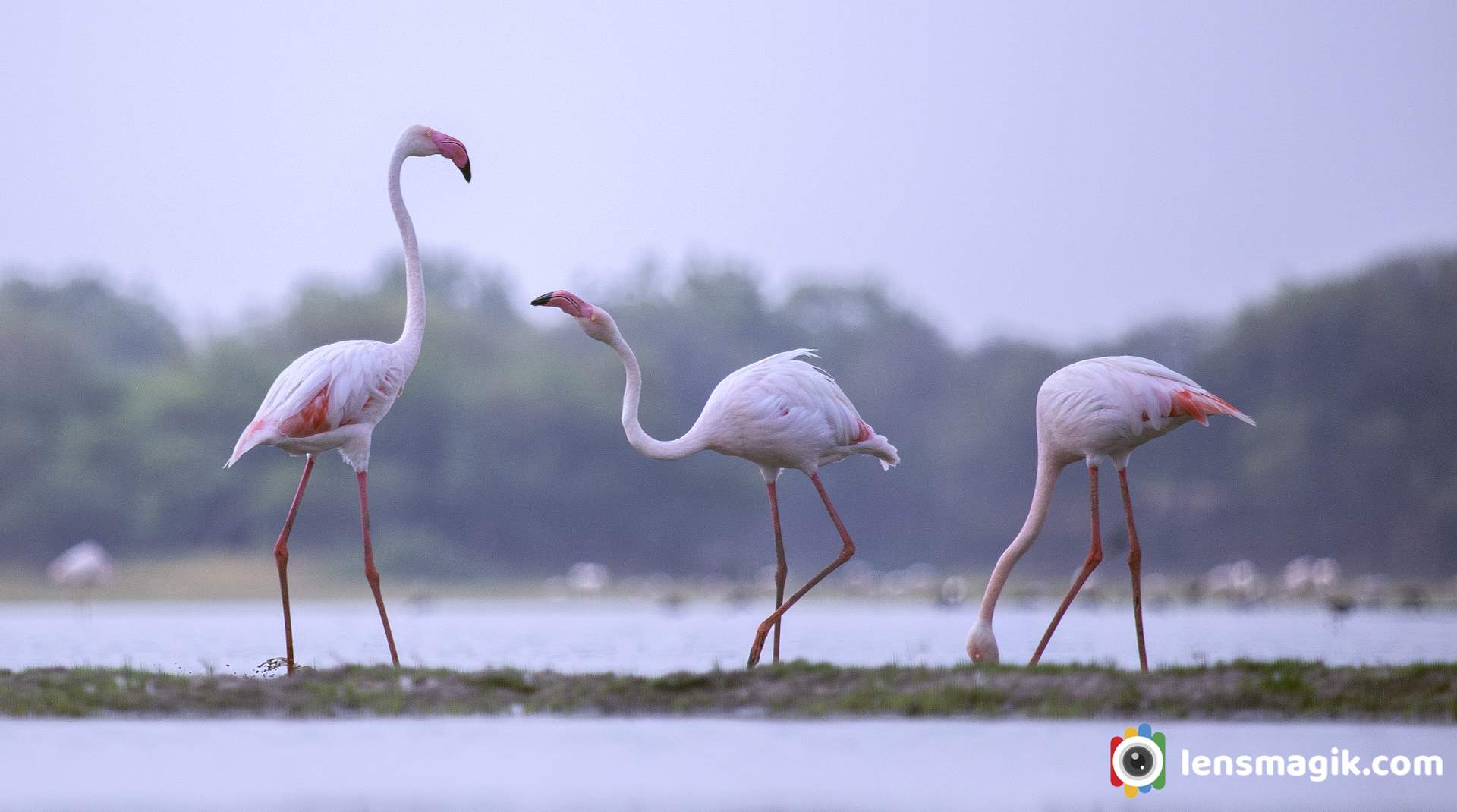
Some masti time for two flamingo birds .
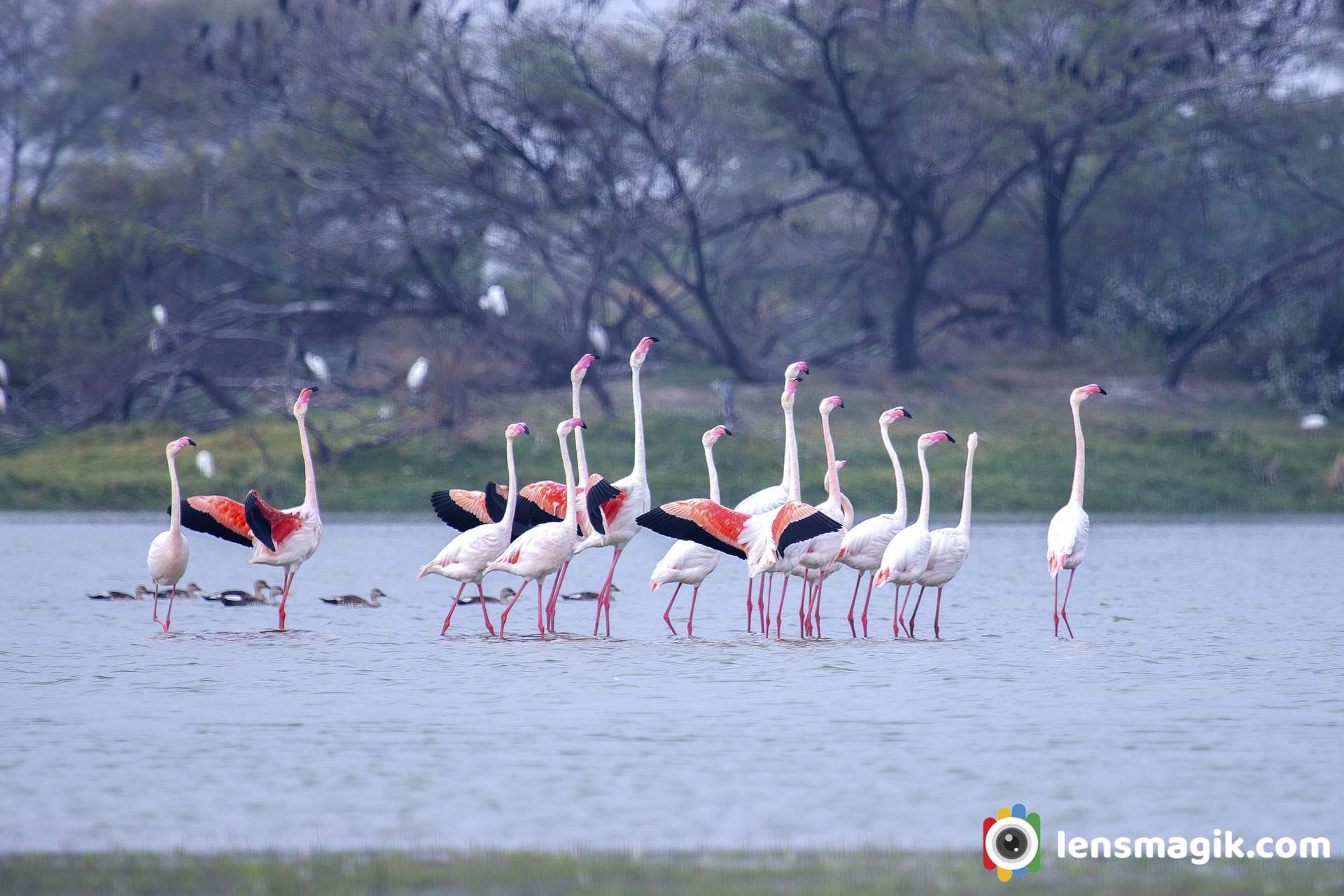
Above image shows the discipline of Flamingo Bird and looks like a morning pared they are doing .
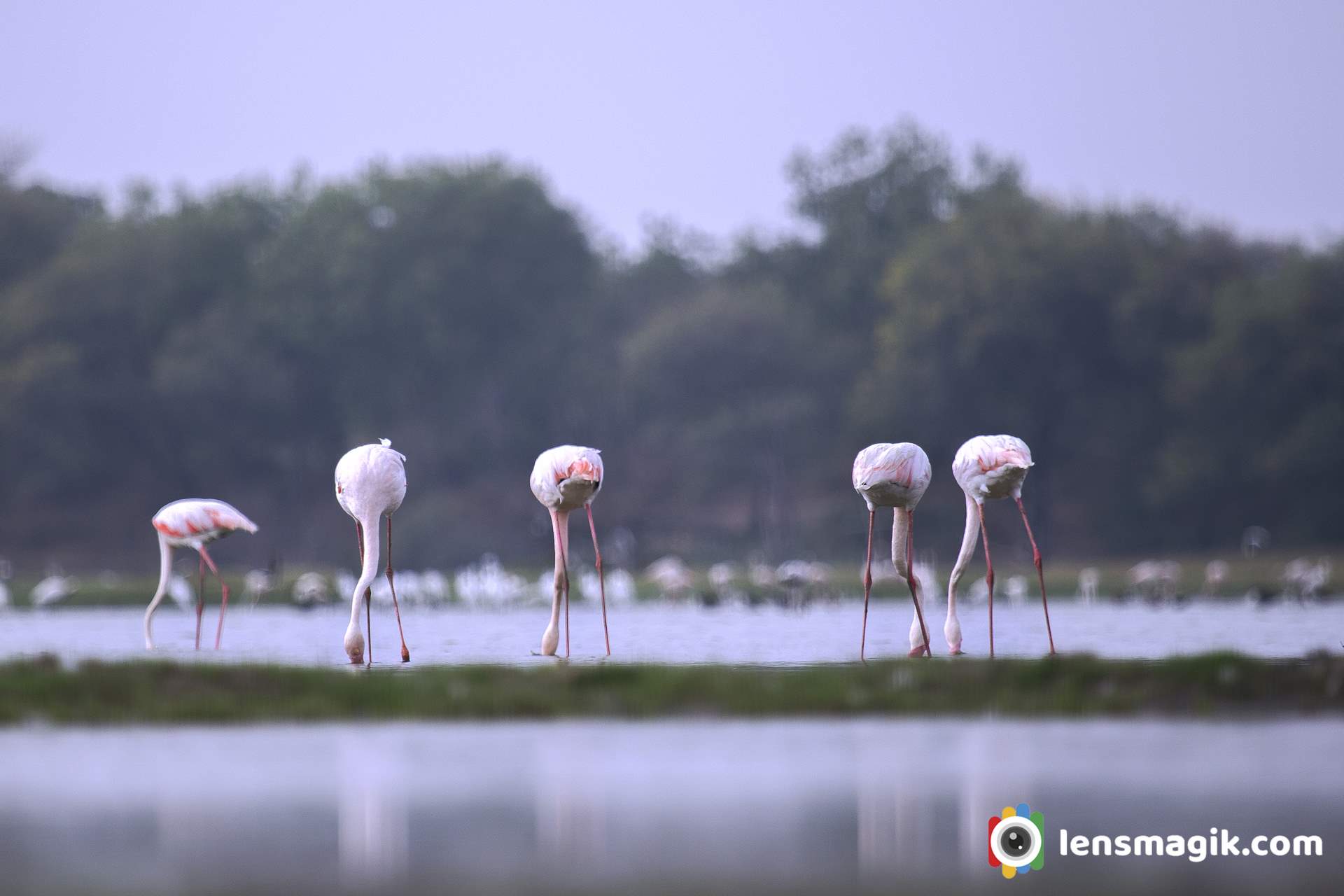
https://youtu.be/9dVBrR9NSOo
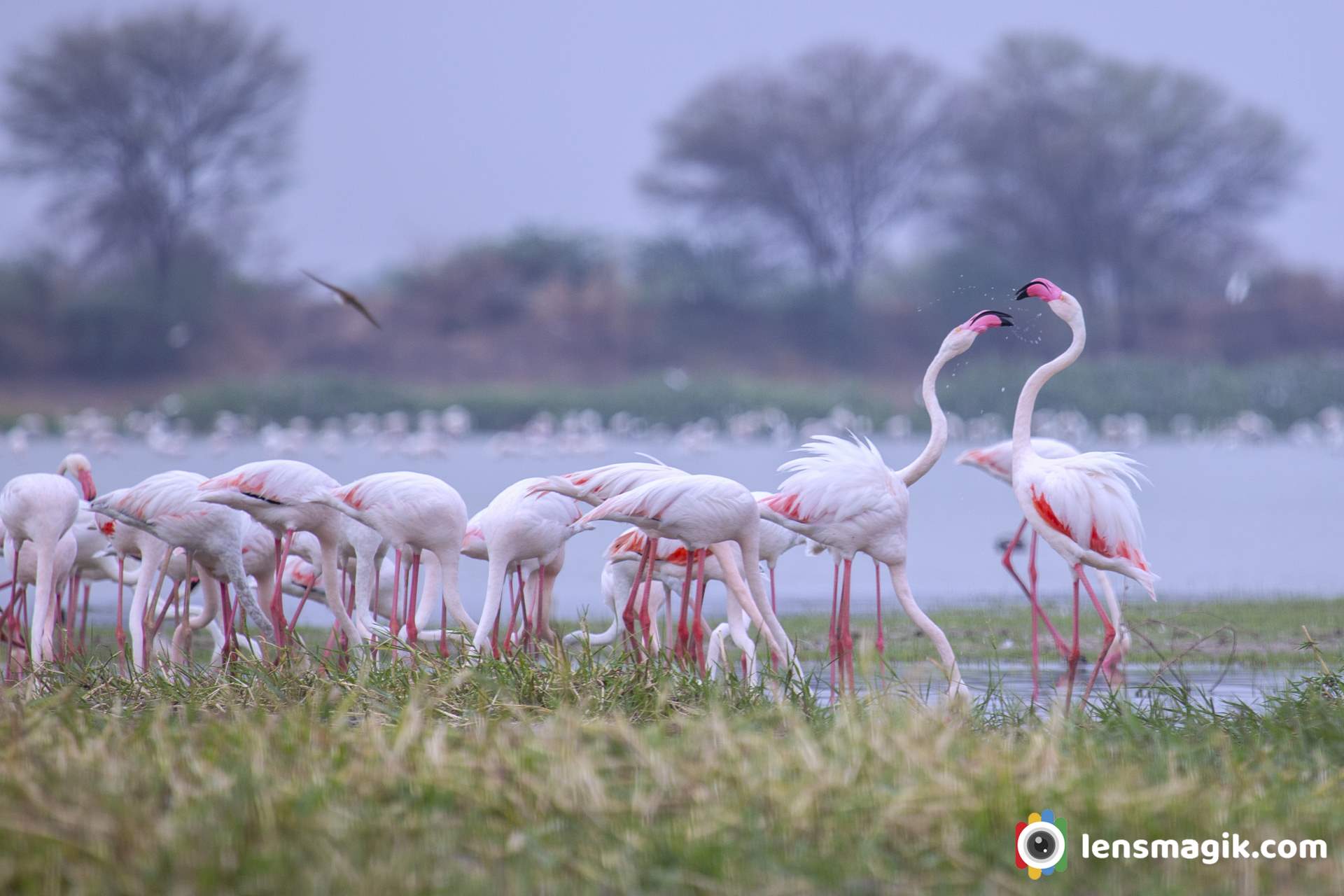
A group of Flamingo Birds at Thol Lake make your frame awesome.
Location : Thol Lake, Gujarat
Thol lake is just 25 km approx. from Ahmedabad. You can visit one day for Thol lake is enough. Also you can find another migratory birds like pelicans , bar headed goose, river tern and many more resident spices.
Ahmedabad to Thol lake distance about 25km
Thol bird sanctuary is located in Kadi Taluka in Mehsana District near sanand Gujarat. It is an artificial lake located near village Thol. In 1912 thol lake was built and it was declared as a Sanctuary in 1988. The main use of lake is use of water for irrigation. The Thol Bird Sanctuary or a Thol lake wildlife Sanctuary India is a habitat of more than 150 spices of birds. Also it is famous for migratory birds Flamingos and Sarus Crane which breeds here.
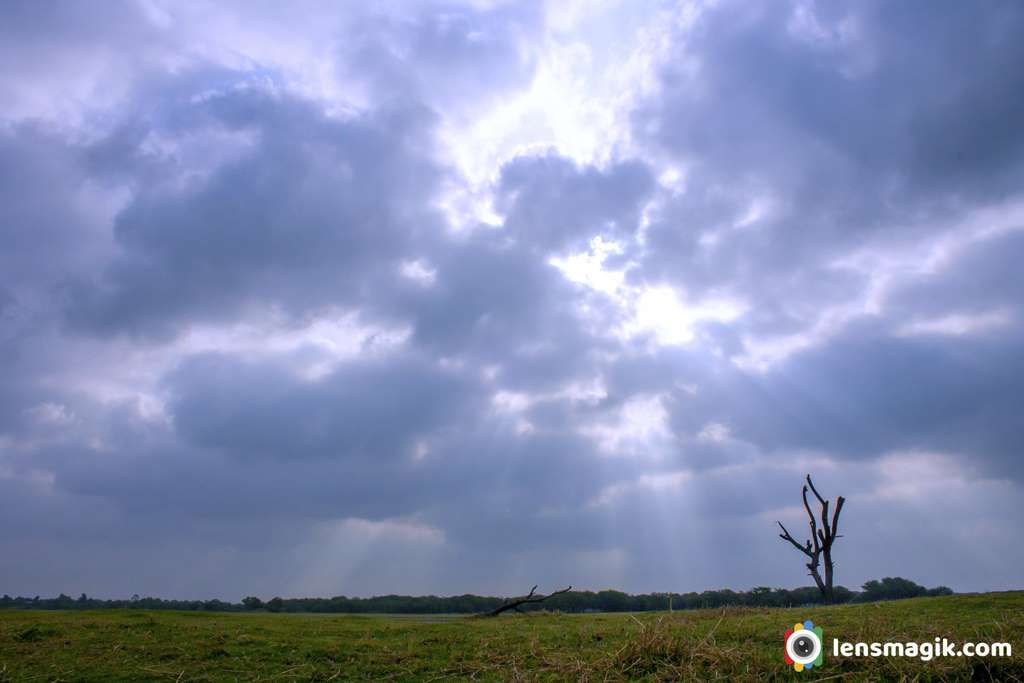
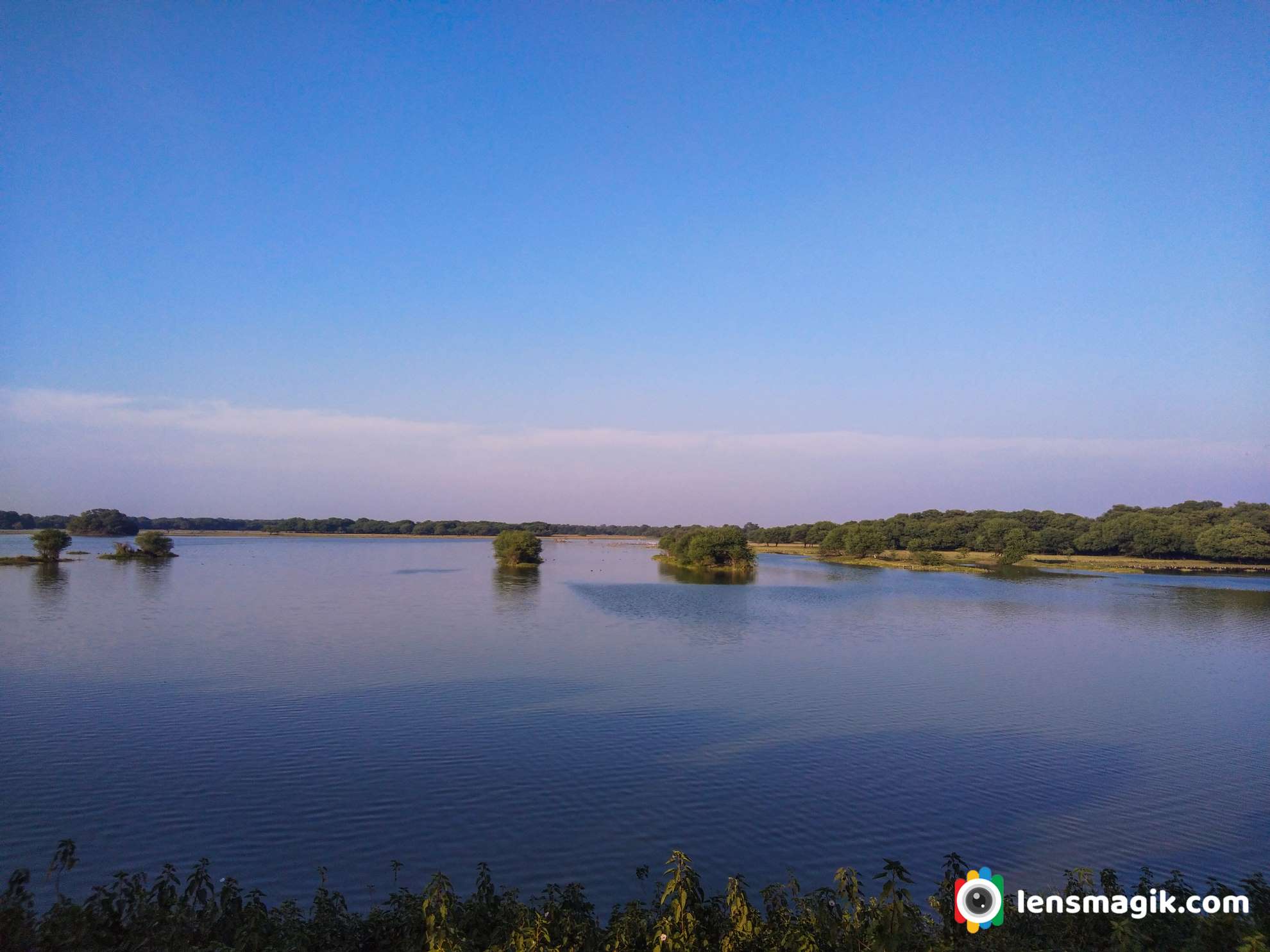
About Thol Lake / Thol Bird Sanctuary
Thol lake is located near Thol village and its area around 38000 acres. Lake faces all season winter , summer and monsoon. During winter temperature goes to 8 degree and in summer temperature goes to 43 degree. Thol lake is under control of Forest and Irrigation department of Gujarat. Thol lake water storage capacity is around 84 million cubic meters. Thol wildlife sanctuary is declared as Eco Sensitive Zone .
Flora and Fauna Thol Sanctuary :
Thol lake has many vegetation plants like Zizyphus, Acacia nilotica, Ficus, Capparis, Azadirachta indica etc. There are also some mix flora of Marshy and Aquatic plants reported in Thol Lake.
Thol lake is protected area and it is very good habitat for water birds. In thol bird sanctuary there are more than 150 spices of birds found . Among these more than 60 % of birds are water birds. Flamingo bird is most prominent bird of Thol Lake. Also Sarus Crane nest in large number here.
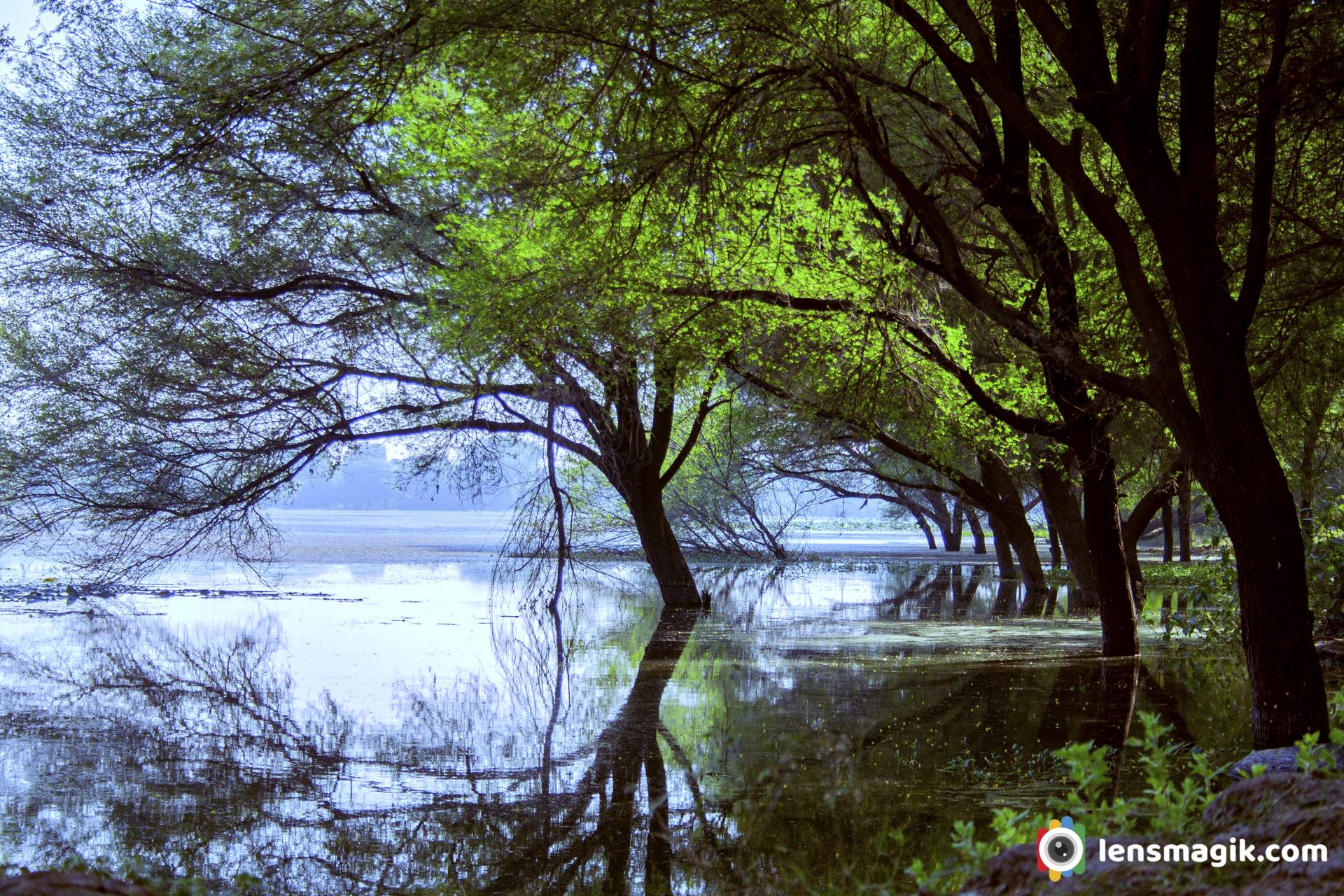
Famous Migratory Birds of Thol Lake
• Flamingos
• Sarus Crane
• Great White Pelican
• Mallards
• Bar Headed Geese , Grey Headed Geese
• Waterfowl
There are also some spices reported here like Dalmatian Pelican, Indian Skimmer, Greater Spotted Eagle, Indian Vulture and white rumped Vulture etc. In Mammals Bluebull, Blackbuck and Golden jackal reported here.
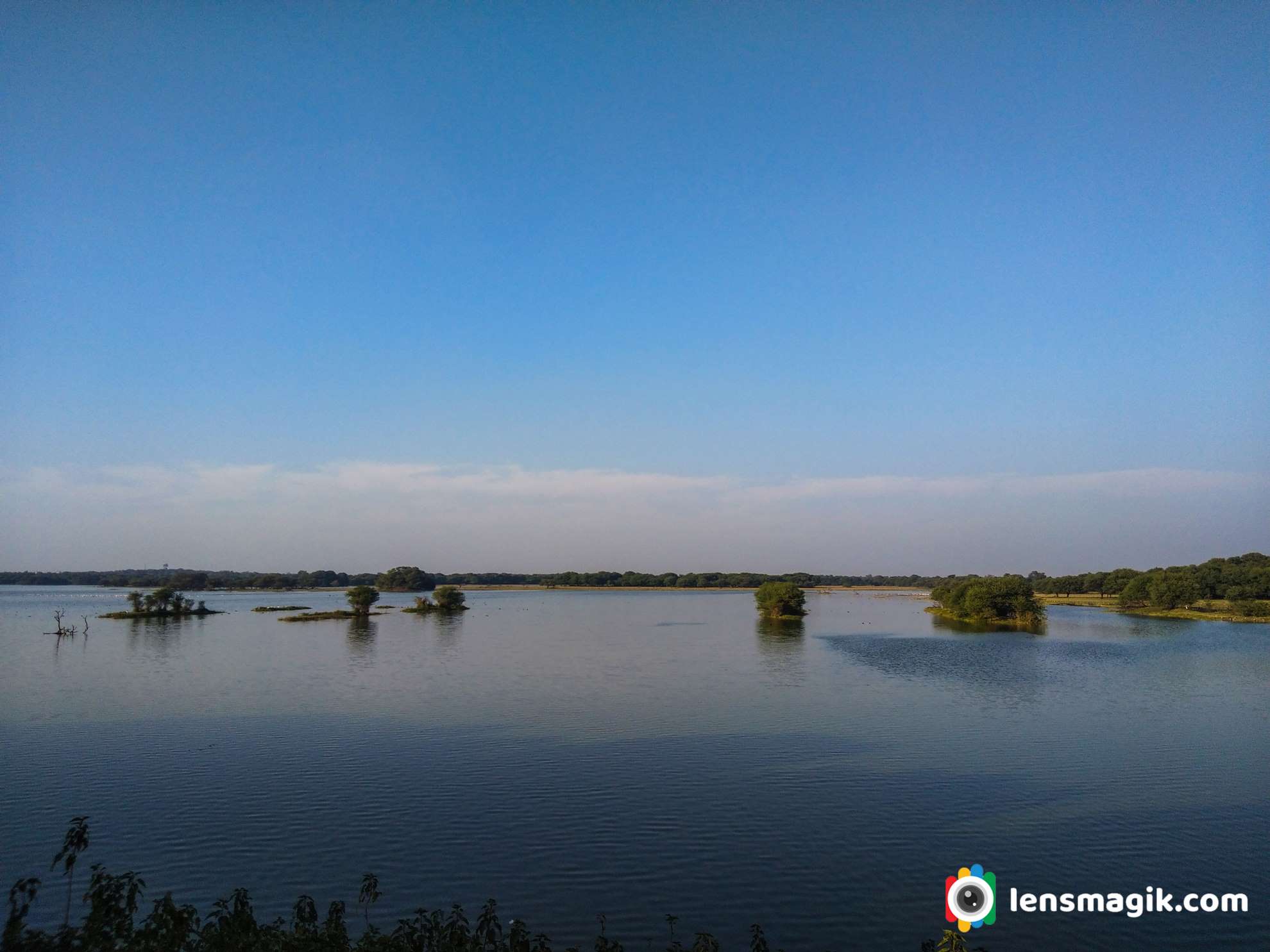
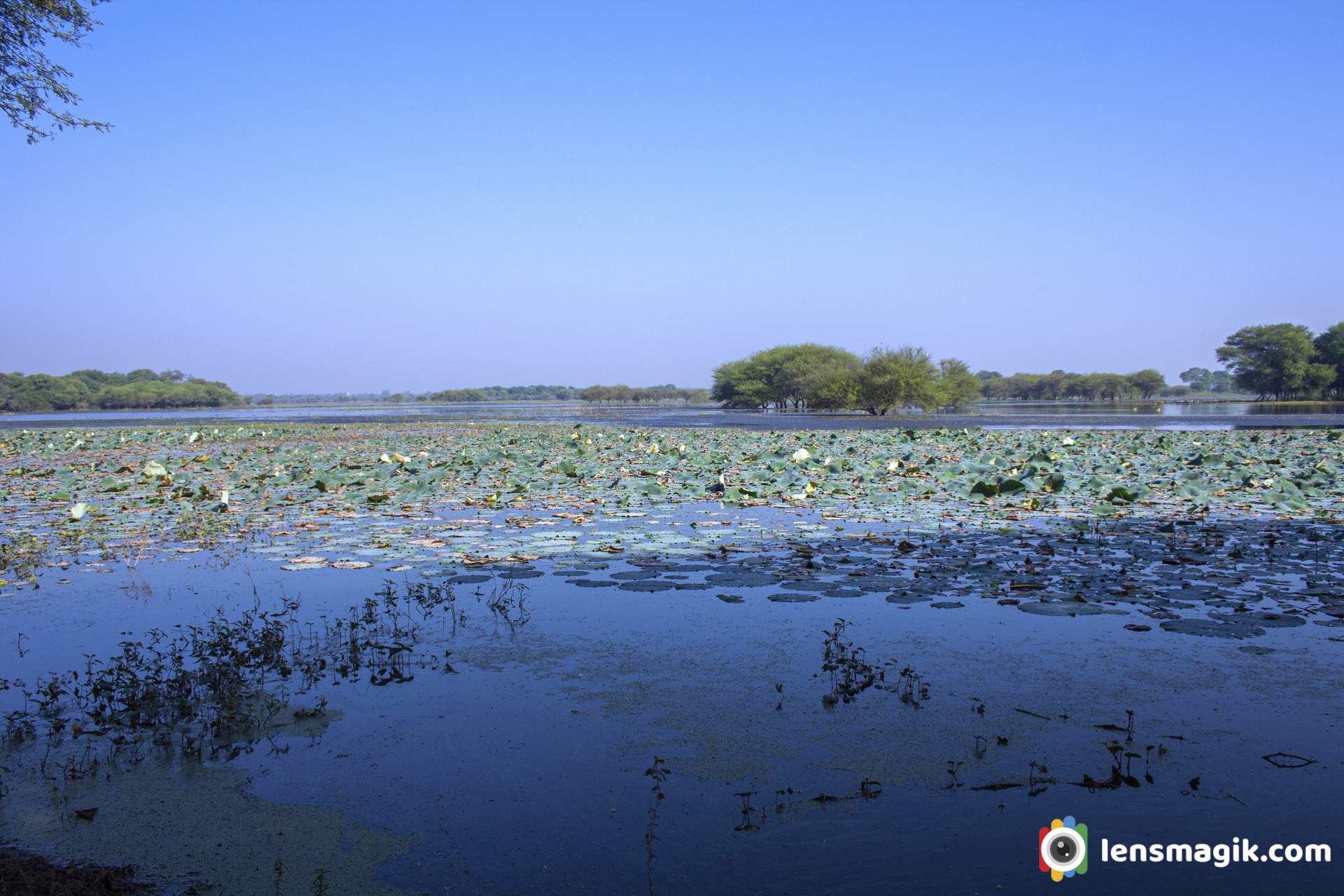
Thol Lake Timing and Fees :
Thol lake open everyday at 6 AM in morning and close at 5.30 PM in evening. Entry fees for Thol Lake or Thol sanctuary is 50 INR for per person. Also Camera fees extra at 200 INR and if you go via car then car fees also 500 INR. Foreigner fees are 10 $ per person.
Best Time to Visit Thol Sanctuary / Thol Lake :
Best time early morning for Thol Lake. In winter if you go before sunrise you can see Twilight sky amazing with lake shore and birds sound .During all season Thol lake has its own beauty. Every season you can visit at Thol Lake. But mostly during winter from November to March season is best for Thol Sanctuary visit. Because during winter lots of Migratory birds came here and stay for long time so for birding winter season is best at Thol Lake. Also during summer some of birds stays here like flamingos and pelicans, geese etc. So you can also see them in summer too. Also during summer water level of lake is low so may be the birds you can get in deep or sometimes closer. During monsoon most people don’t visit but if you like macro photography then you must visit Thol lake in monsoon. You can get some excellent macro subjects like waterdrops , Spiders, Insects etc.
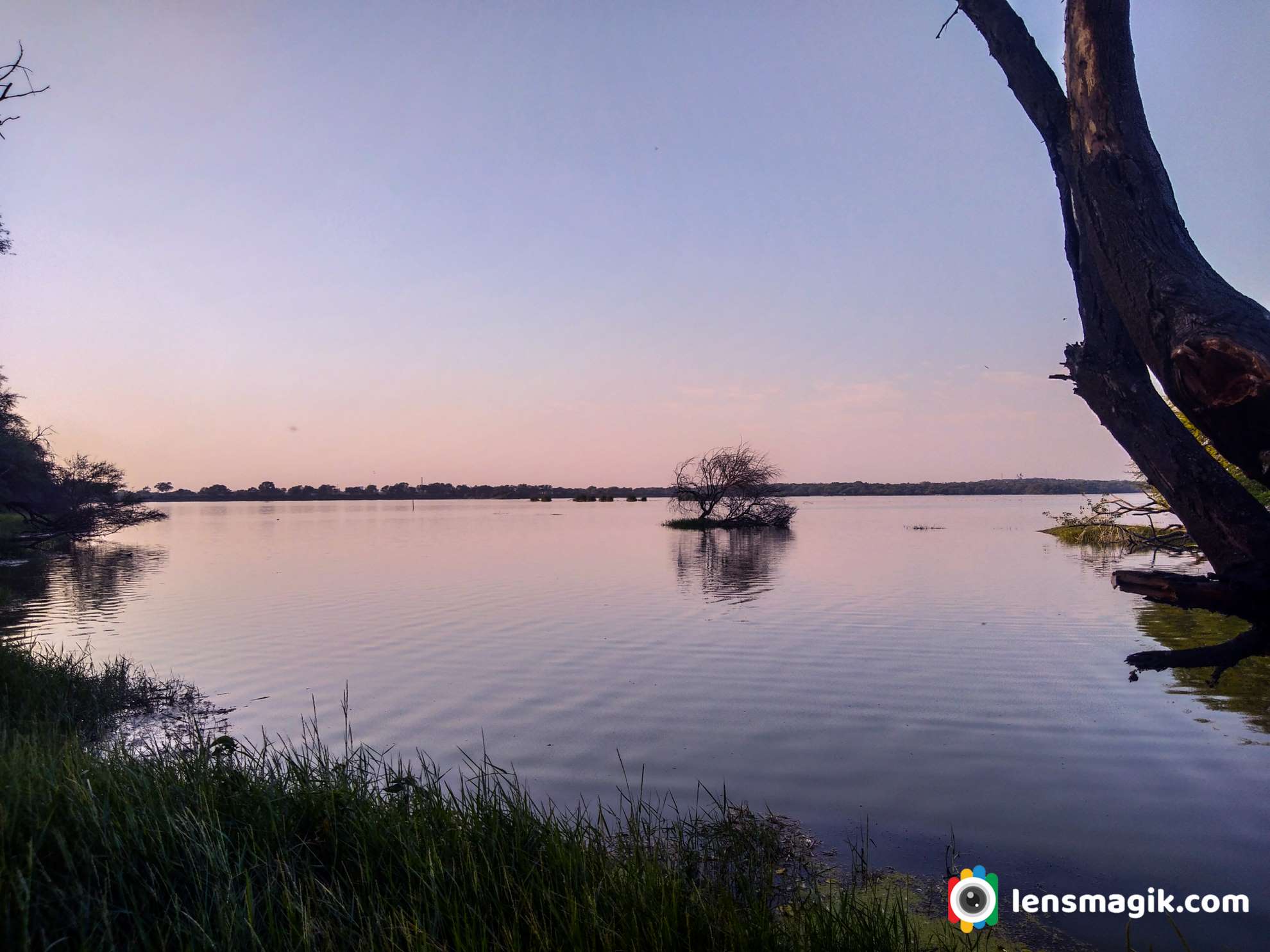
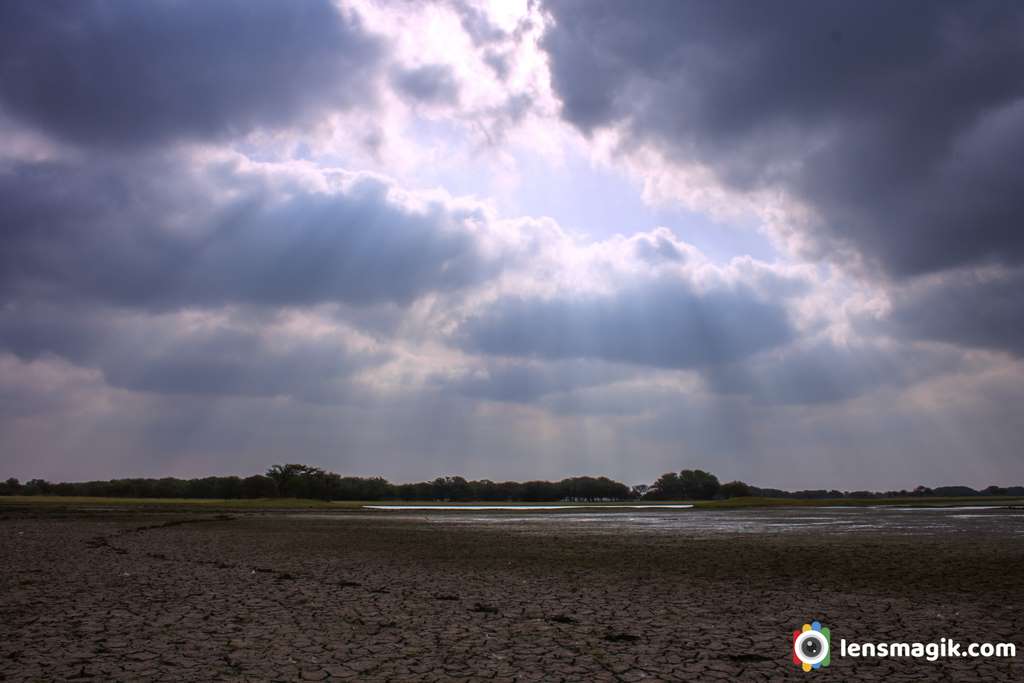
What to do and What not to do in Thol Lake / Keep in mind while visiting sanctuary in India :
• Keep silence in sanctuary
• Maintain discipline
• Keep sanctuary clean
• Do not throw plastic waste anywhere in sanctuary
• Protect wildlife
• Observe birds, mammals etc and protect them and identify them
• Follow rules of wildlife protection act -1972
• Don’t disturb birds and animals
• Don’t enter in sanctuary with liquor and inflammable objects
• Don’t make loud noice.
• Enter in sanctuary with permit only and keep receipt till you leave sanctuary
• Don’t feed birds and animals
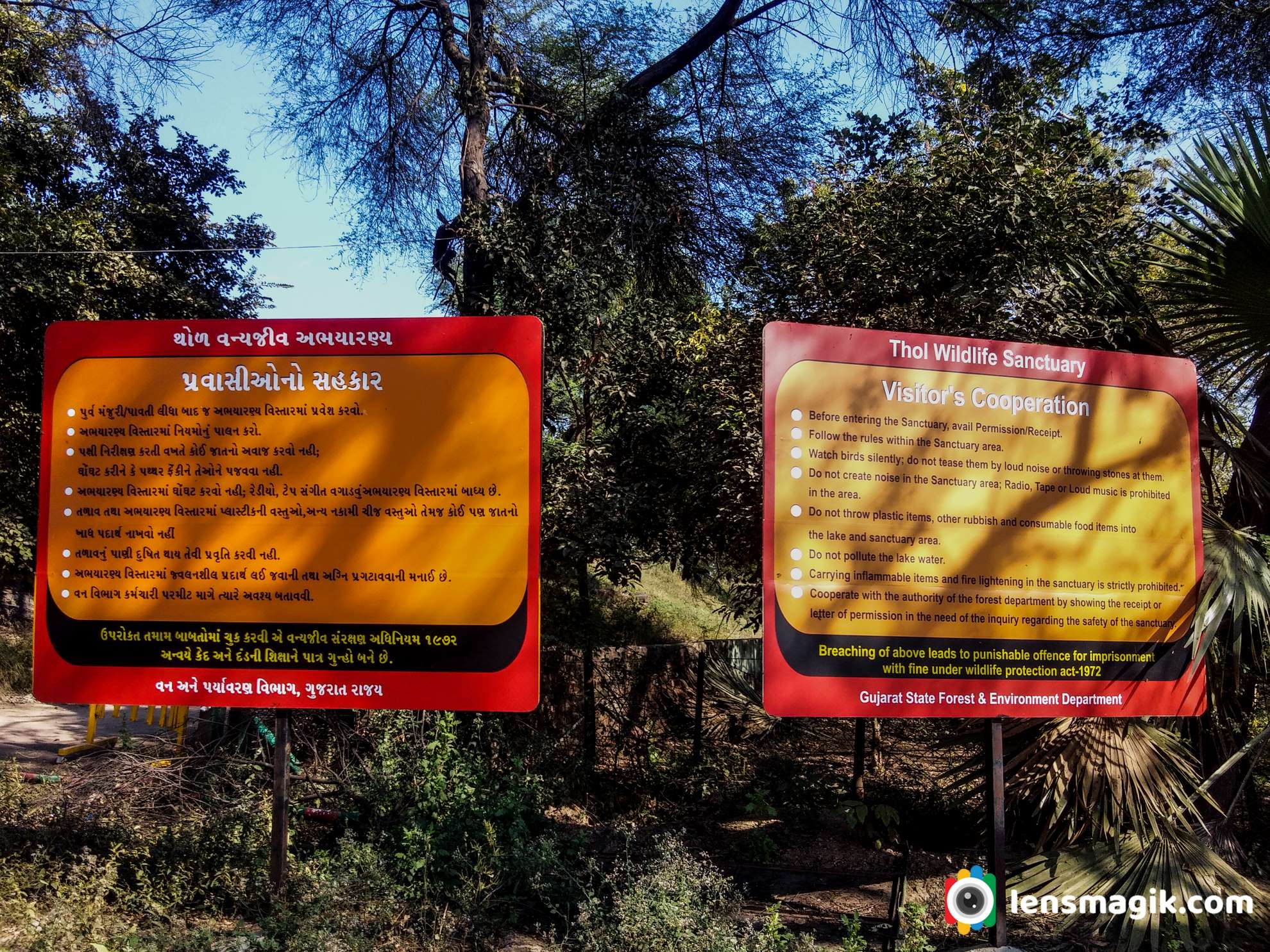
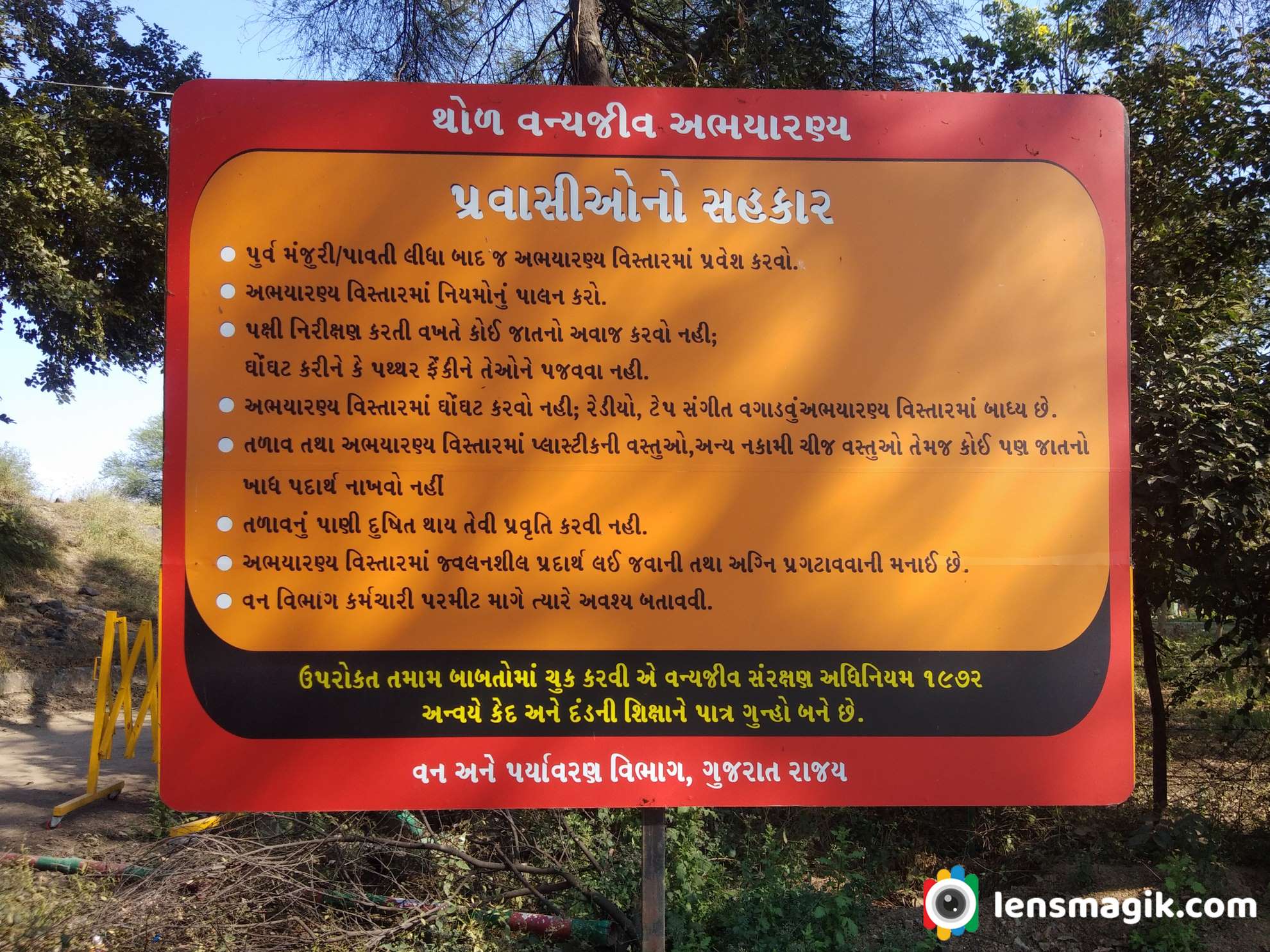
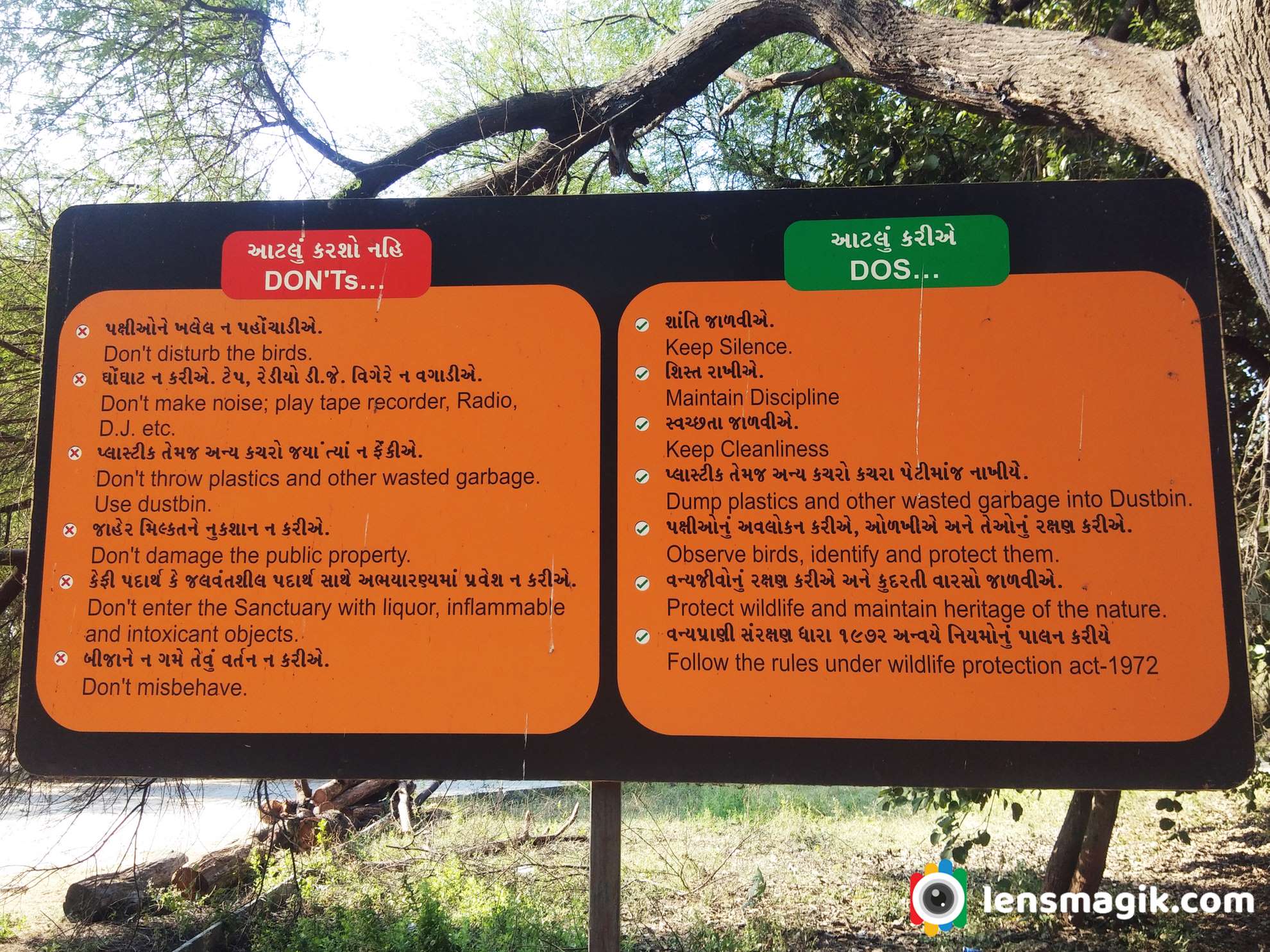
Where to Stay near Thol Lake :
Well near to Thol Lake there are not good places to stay at night but you can go near to destinations like Kadi, Kalol or Gandhinagar , Ahmedabad where you can get good places to stay at night. Nearest I suggest Kalol around 15-18 km or you can go Ahmedabad around 25 km.
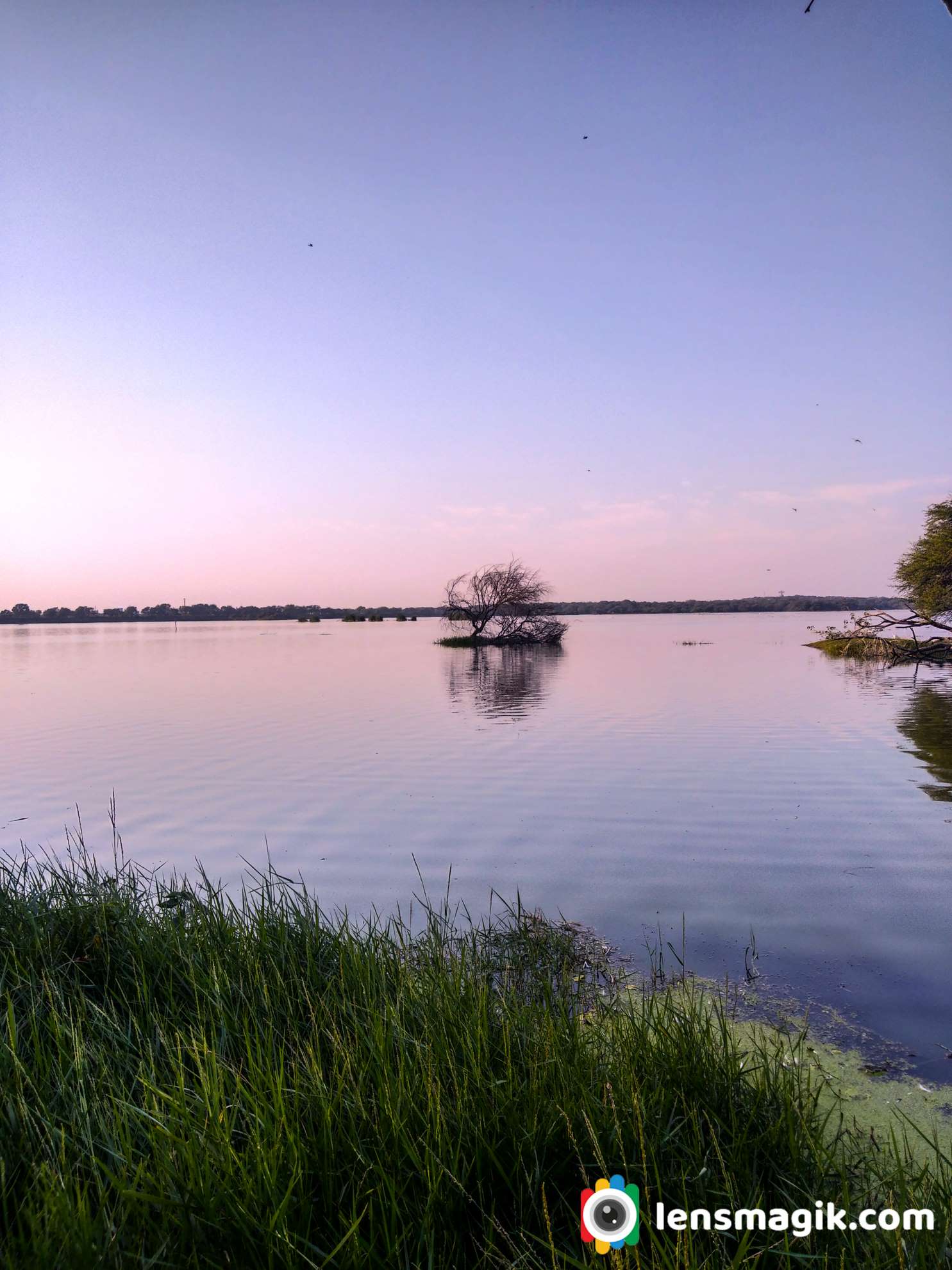

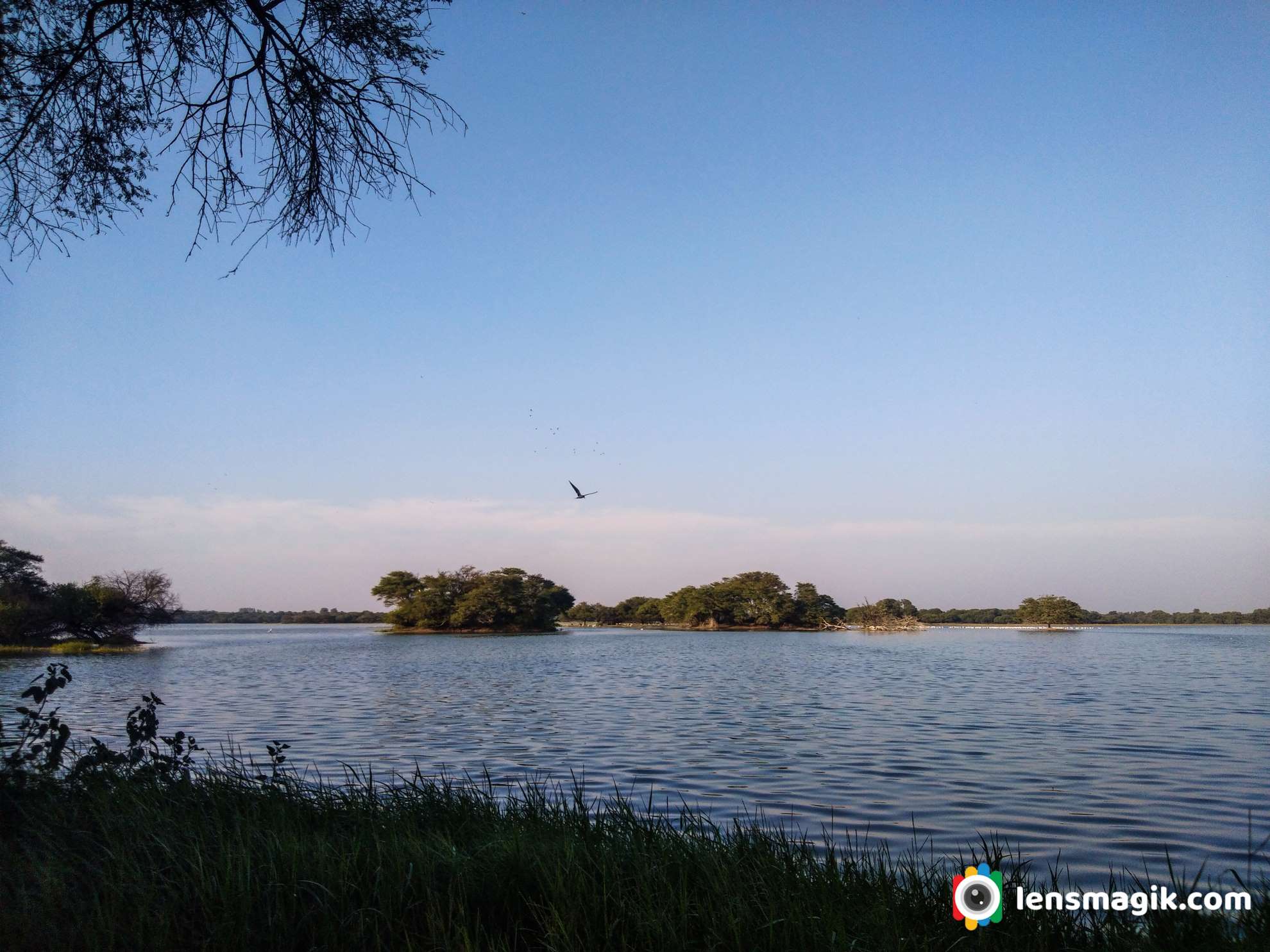


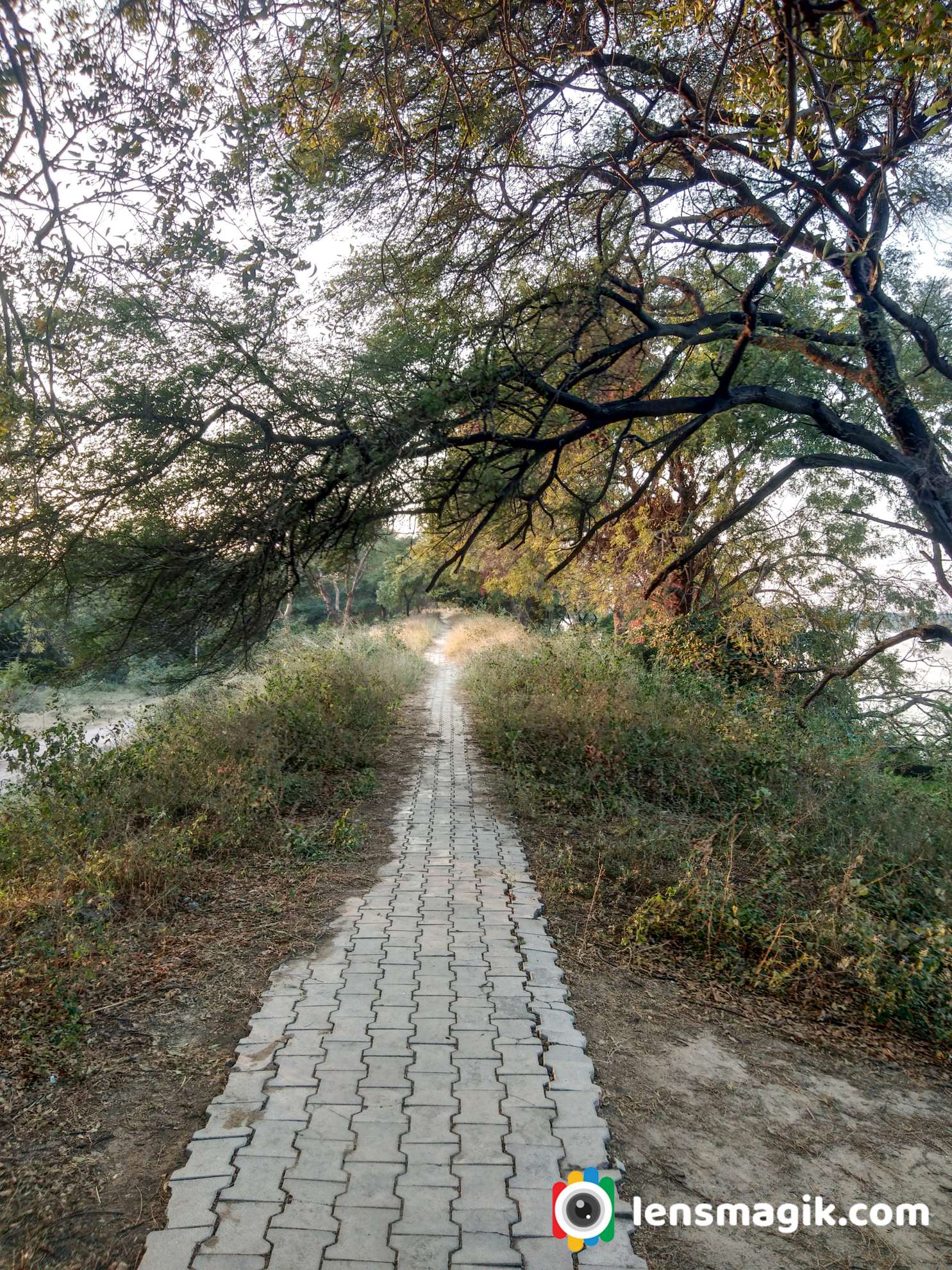
Places to Visit near Thol Lake :
If you are staying at Ahmedabad then go for Ahmedabad Darshan , Pol area of Ahmedabad and Adalaj Ni Vav ( Heritage places ) etc. Also go for fast food test at night at Manek Chauk and SindhuBhavan road there are lots of option for food lovers like Urban Chauk, Freezbee etc.
If you stay at Gandhinagar then visit Mahatma Mandir at Gandhinagar, Sarita udyan , Akshardham Temple etc.
I would suggest Modhera Sun Temple if you had some more time which is around 100km from Ahmedabad. For bird lovers and bird photographer I would suggest visit Little ran of Kutch (LRK) during Winter season, Pariej Lake, Indroda park Gandhinagar, Jessore Sanctuary Banaskantha etc.
How to Reach Thol Sanctuary :
Nearest airport is Ahmedabad and from Ahmedabad thol lake distance is around 30-40 km
Also for Railway station is Ahmedabad because you can get all frequency and destinations from Ahmedabad railway station.
Mt Kanchenjunga or Mt Kangchenjunga both spellings right and whatever you say located in west Bengal India. When i was on my Singalila National park trek i visit it. It was really gesture to see Mt Kanchenjunga from own eyes. A beautiful Mountain surrounded by snow and little bit clouds looks like you are in Heaven. The view i capture makes me very happy to see first time snow mountain in my life. When i was at my last location of my trek at Sandakphu we go for birding and v had a clear mountain view of Kanchenjunga. Kanchenjunga is also spelled Kangchenjunga. Height of Mt. Kanchenjunga/Kangchenjunga is 8586 m . The view of Mt Kanchenjunga from India is amazing as you can see in photos. This Mountain range in wide angle as shown above image looks like Sleeping Budda so this mountain range also known as Sleeping Buddha Mountain Range too.
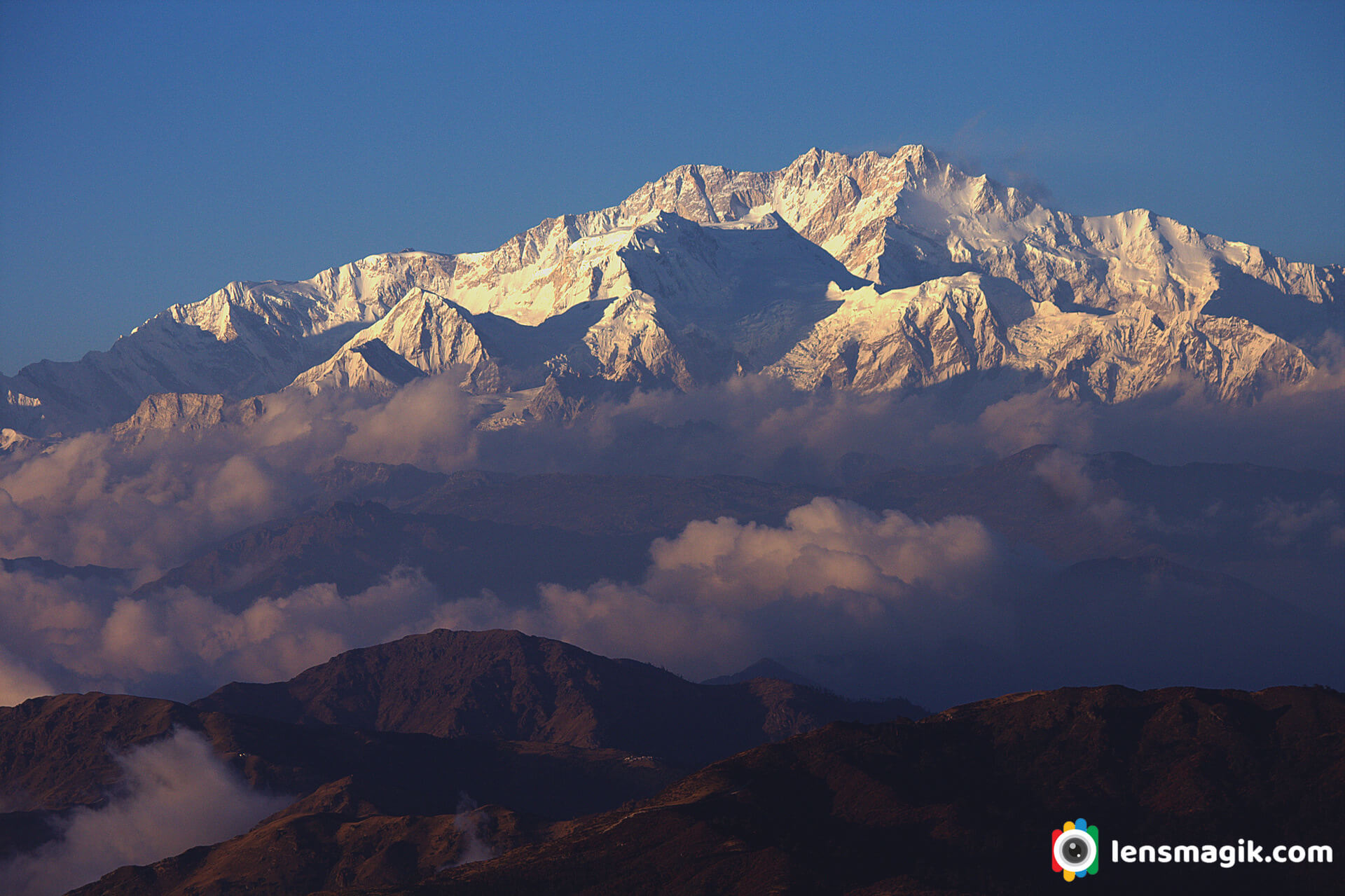
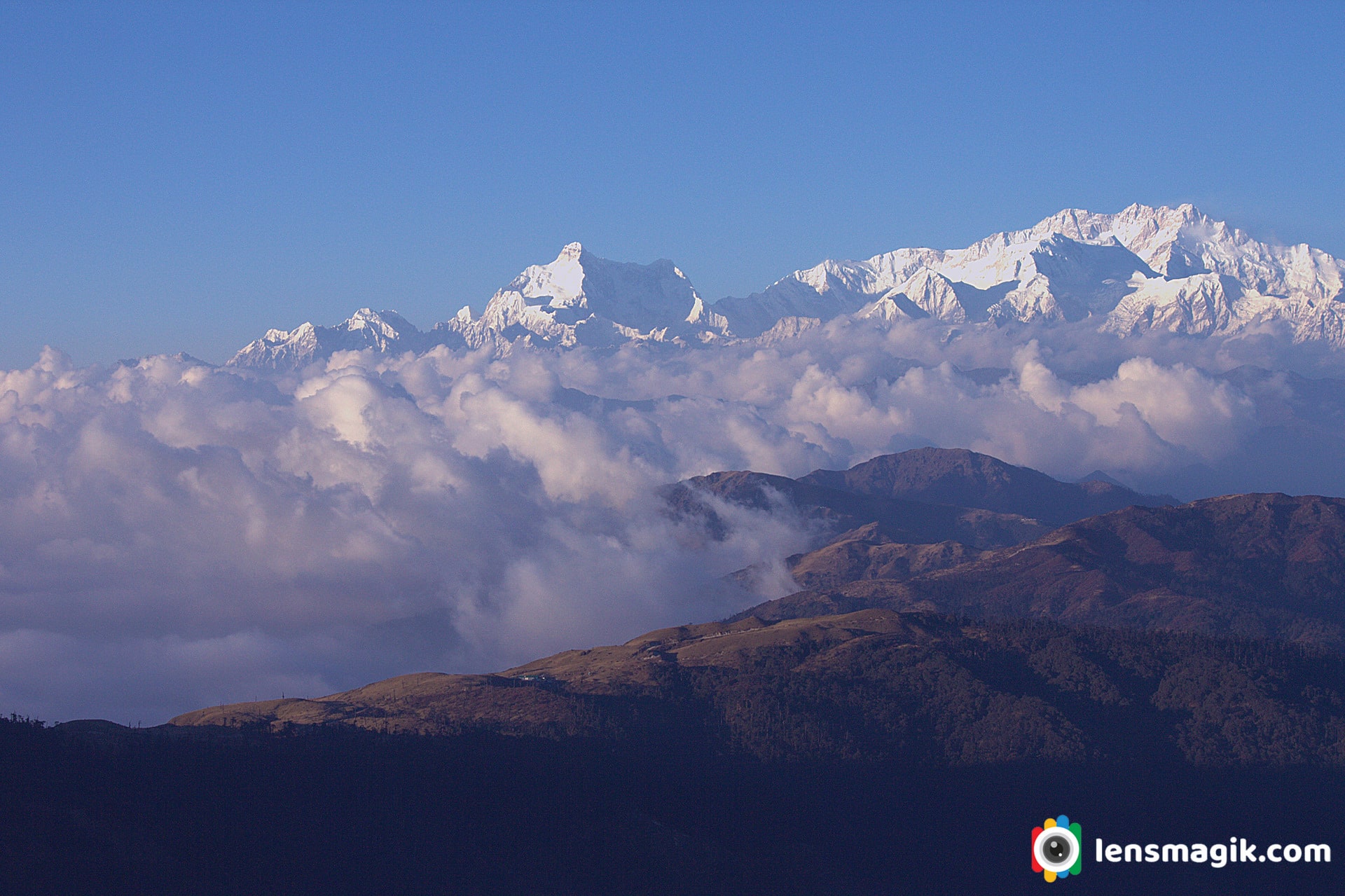
The name Kanchenjunga is derived from sanskrit kanchana ganga . Kanchana means gold and ganga is the river which flows in the region. The river shines like gold and hence the name Kanchana Ganga was given to this mountain.
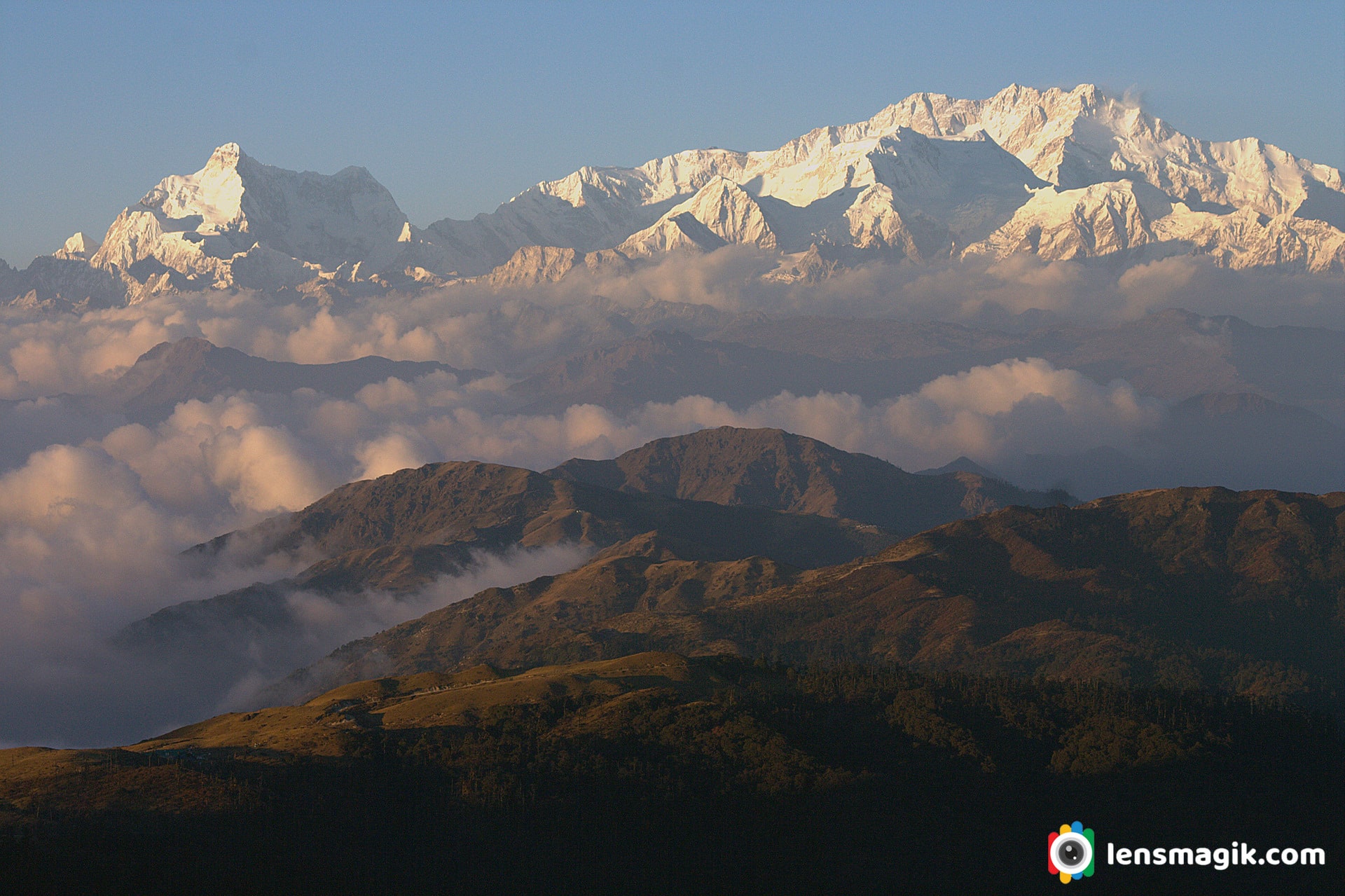
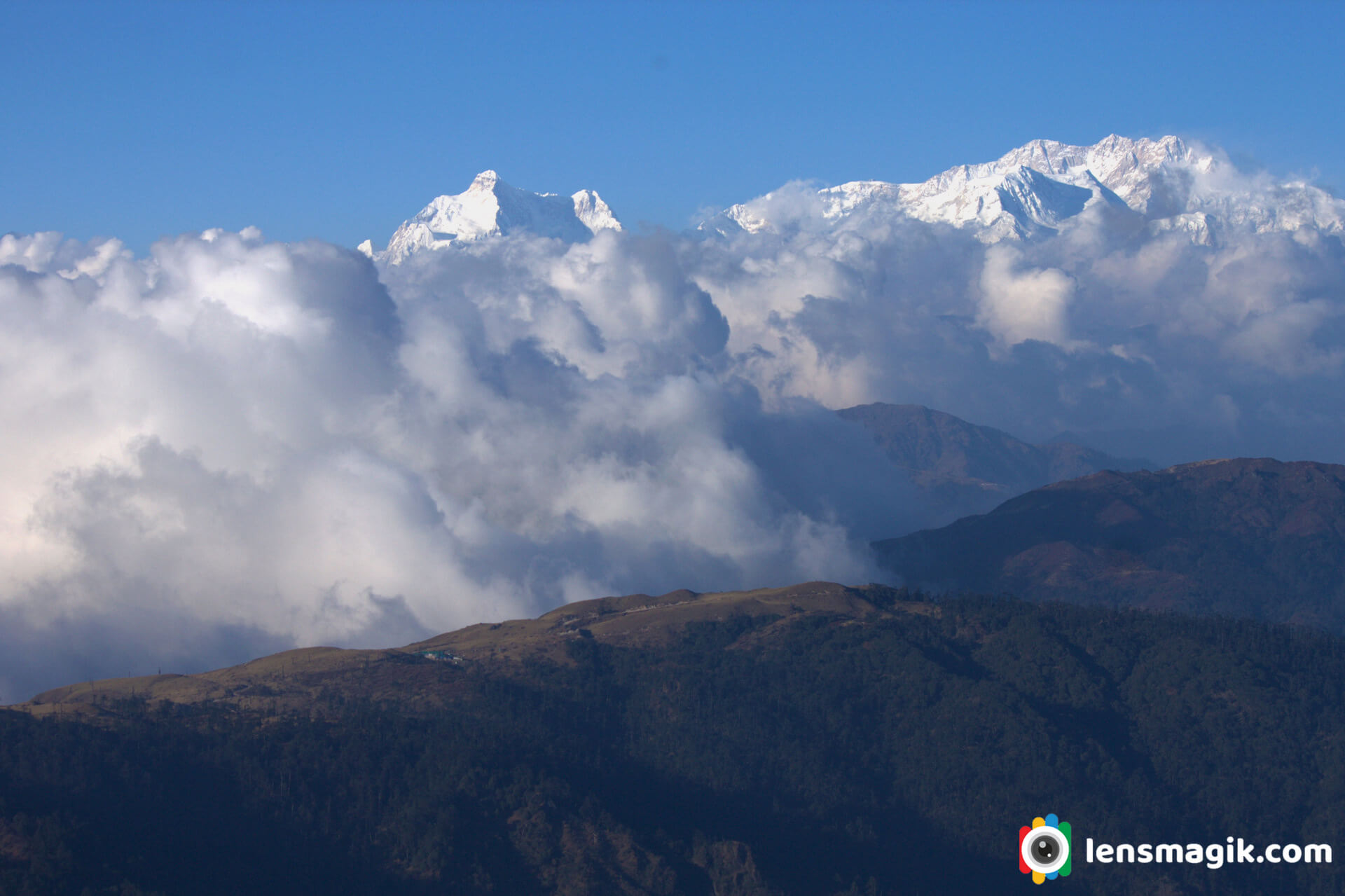
Things to know About Mt. Kanchenjunga/ Mt. Kangchenjunga :
- Kanchenjunga Mountain is about 28,169 ft height and located along the Nepal-India border in the Himalayas.
- It is the third highest mountain in the world.
- It contains 5 peaks and four of them above 27,700 ft of heights.
- Kanchenjunga is also name of surrounding section of Himalayas and means THE FIVE TREASURES OF SNOWS .
- Joe Brown and George Band was the first climber of Kanchenjunga mountain on 25 may 1955.
- Kanchenjunga mountain boundry shared by Nepal, India, China and Bhutan.
- Total 5 peaks of Kanchenjunga are Kanchenjunga Main ( 28169 ft ), Kanchenjunga West ( 27904 ft ), Kanchenjunga Central ( 27828 ft ), Kanchenjunga South ( 27867 ft ), Kangbachen ( 25928 ft ).
- Kanchenjunga Main is the highest elevation of Brahmaputra River.
- There are four climbing route for Kanchenjunga among them 3 are from Nepal and one from Sikkim India.
- It is also known as Sleeping Buddha Mountain range.
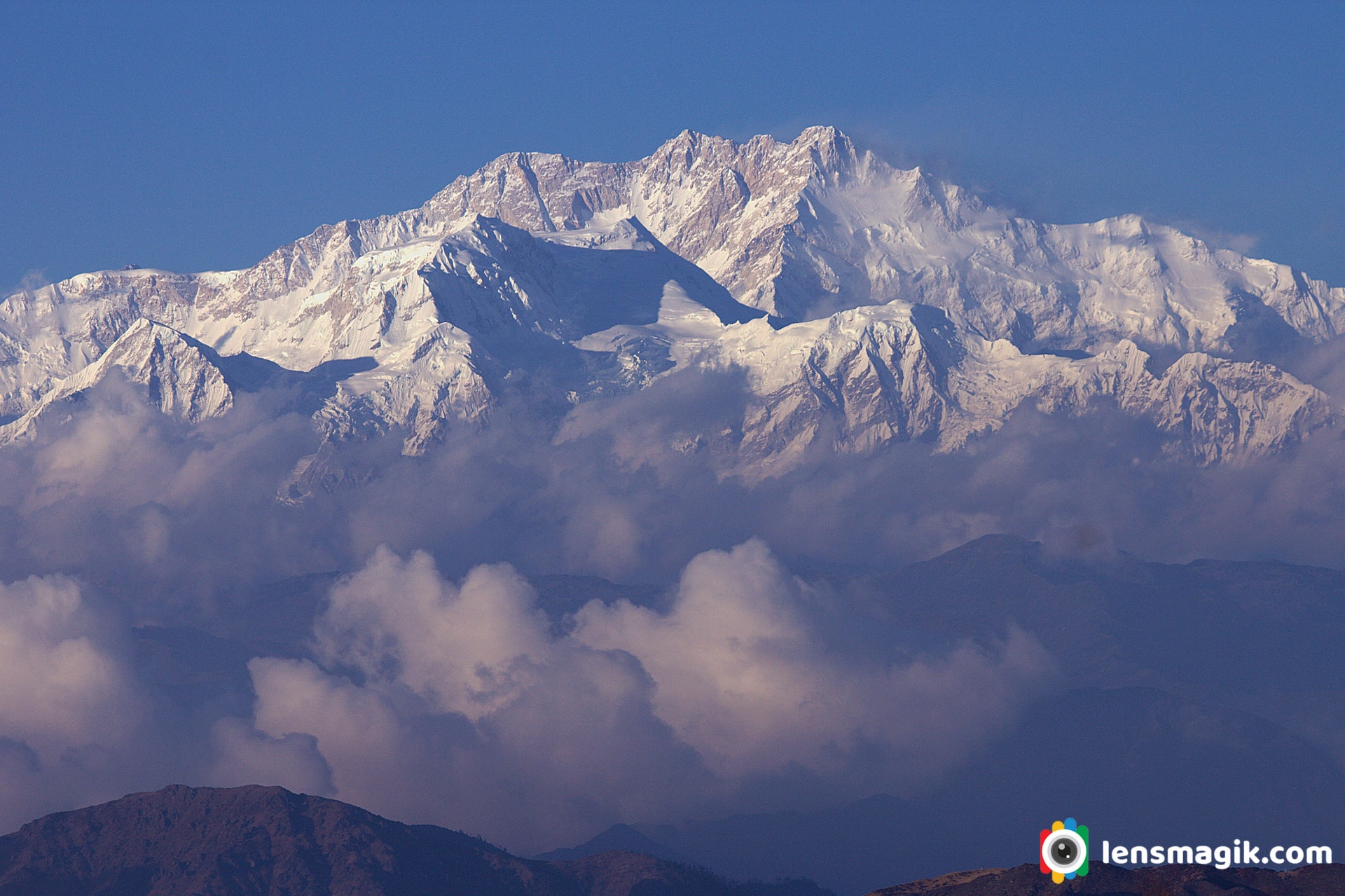
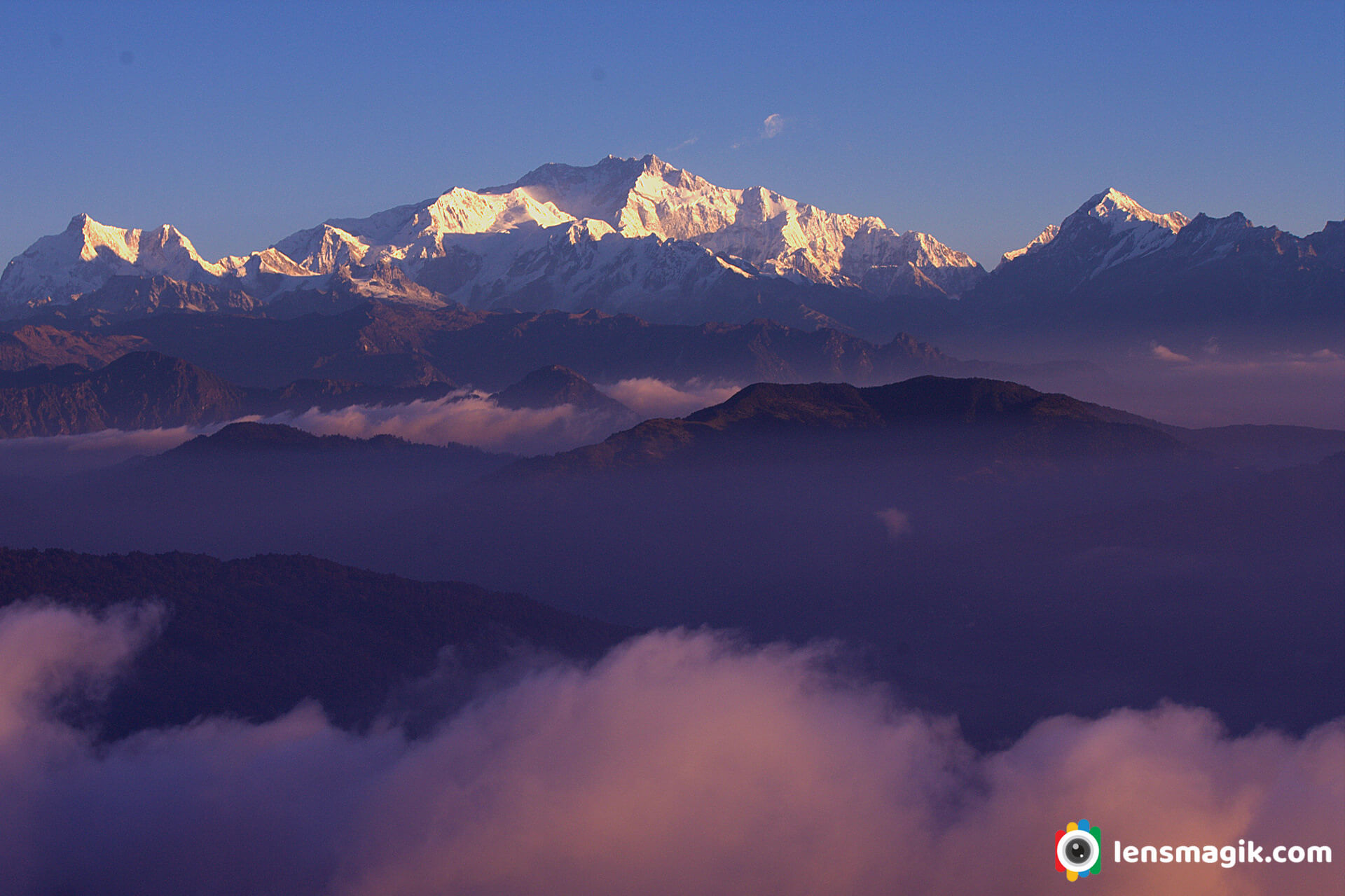
When i was on a tour to Singalila National Park we have a terrific view of Kanchenjunga mountains and also other Himalayan mountains. The best view of Kanchenjunga i saw from Sandakphu located at India-Nepal border. I also saw Mt. Everest from here. Everest is on a long distance but if weather is clear you can see it very clearly.
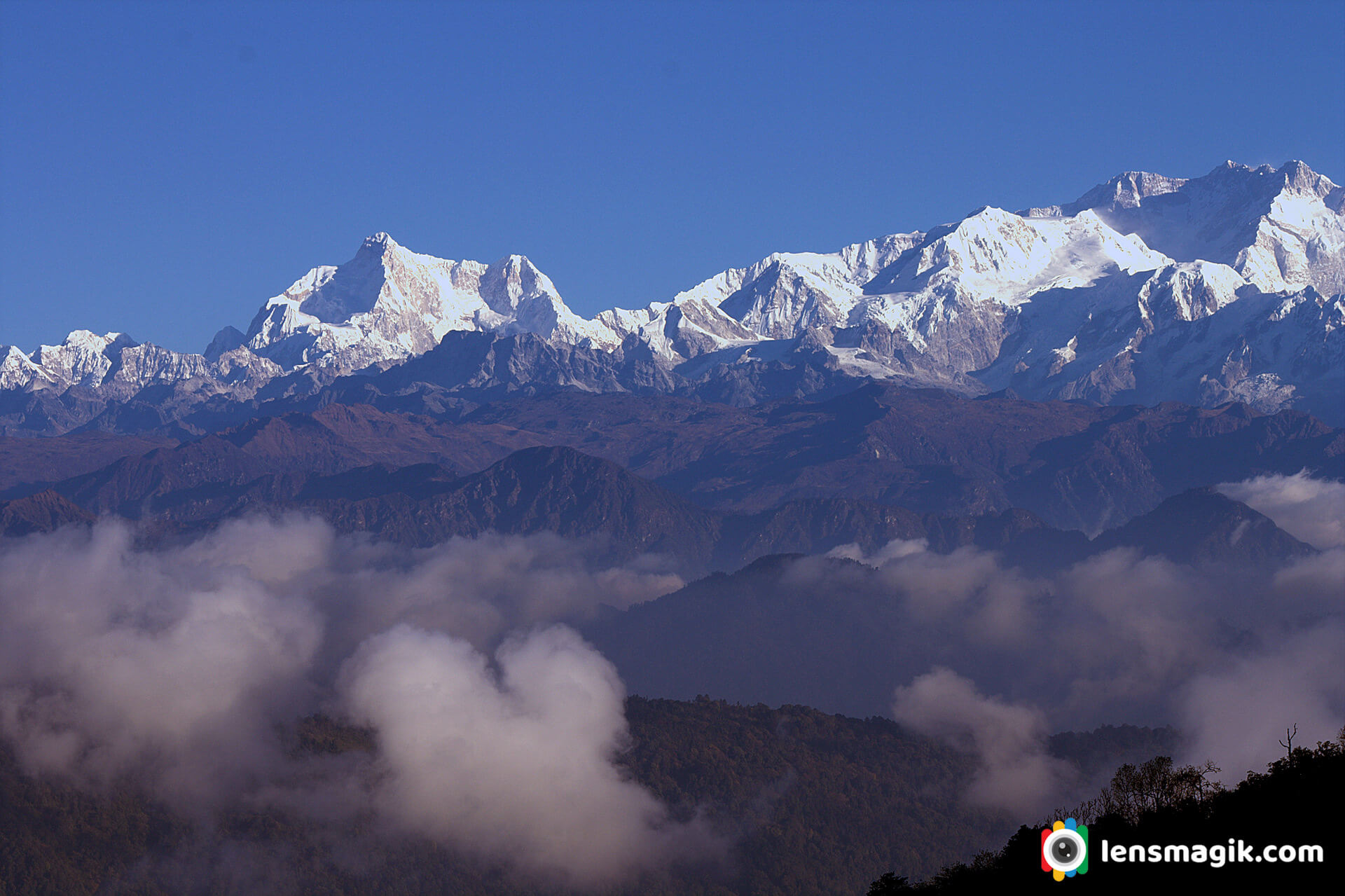
In above picture the mountain shows in left side ( Triangle 3 peaks ) of Mt Kanchenjunga is Kumbhakarna Mountain.
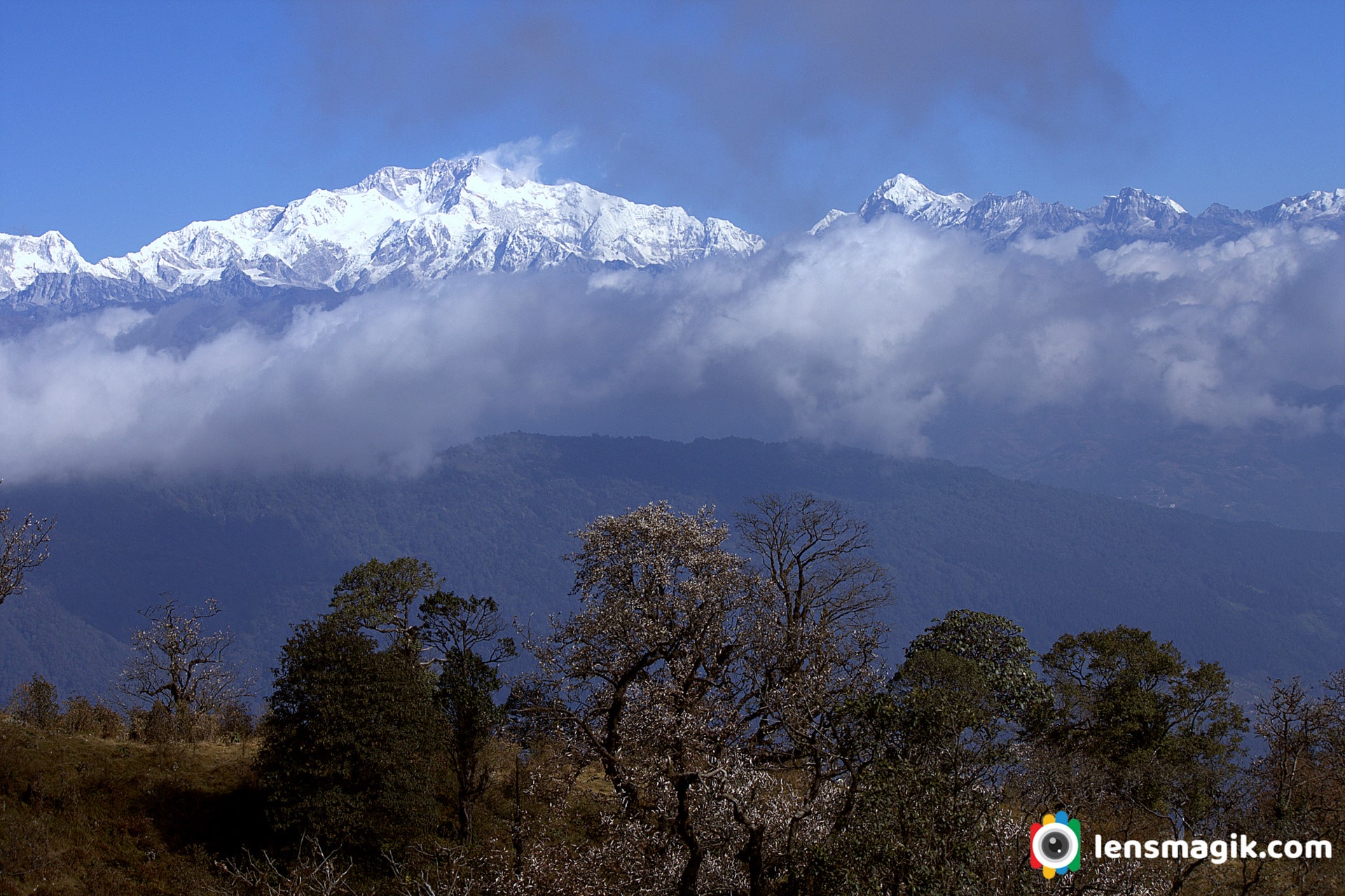
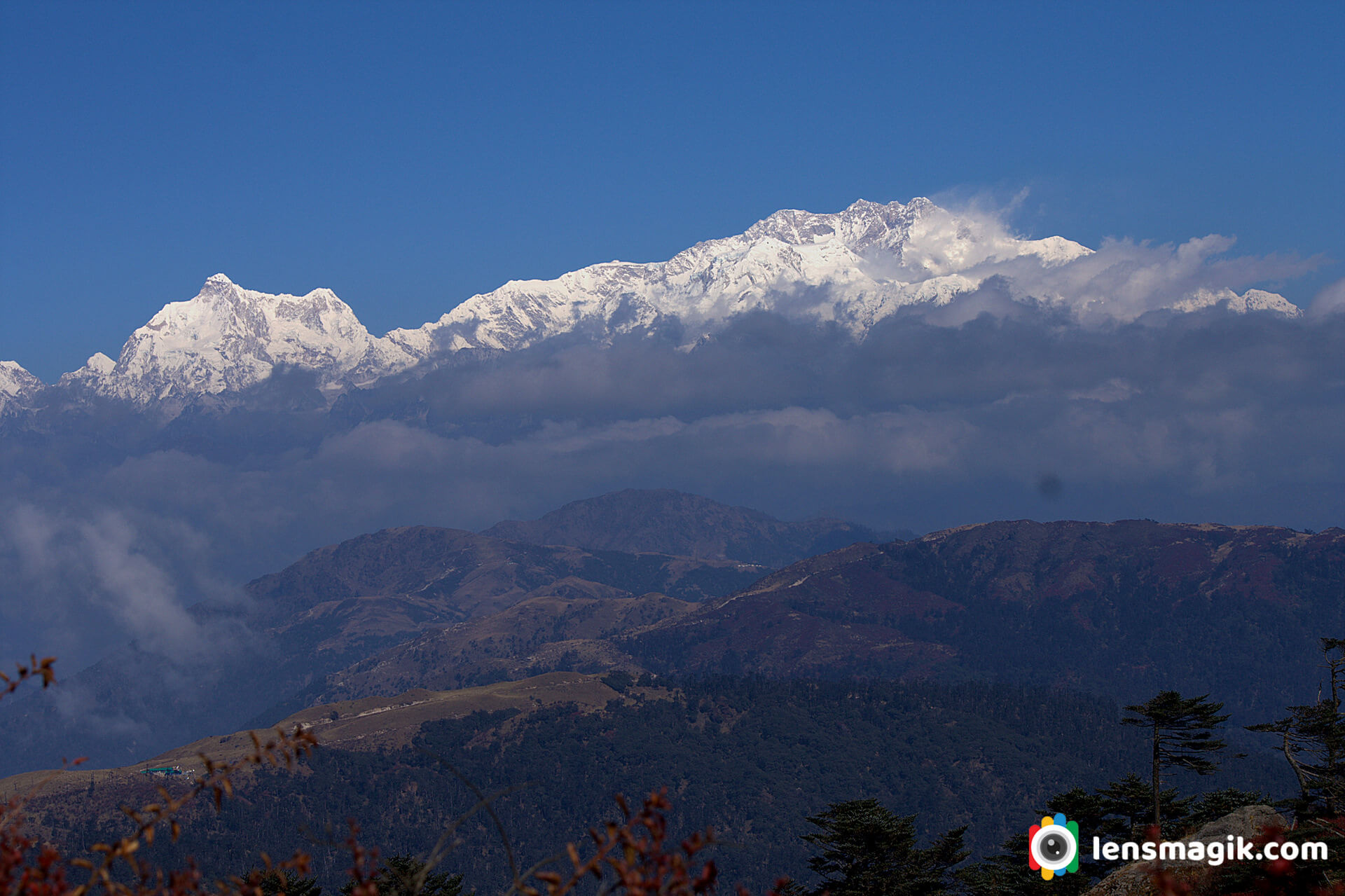
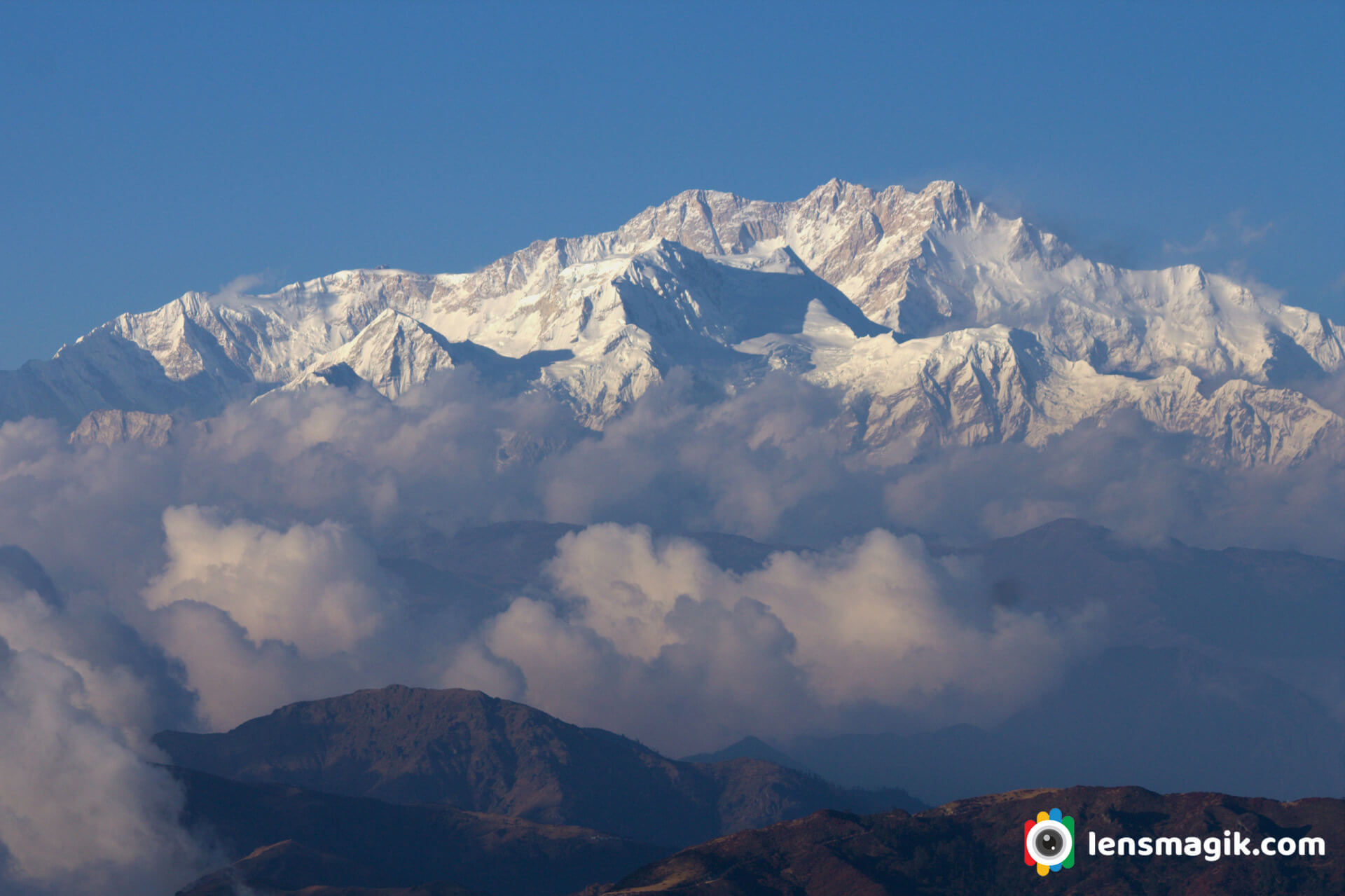

Sandakphu trek is one of the beautiful trek among India and also of Himalayas. During summer lots of trekkers go for these trek and also Phalut trek. At Sandakphu you can stay a night and just see at night the sky is full of stars. I was never seen such stars in my life. A milky way you can see and it was amazing experience of star gazing at Sandakphu. Also after dark a sunrise is beautiful as enough. At 4 or 4:30 am sunrise time and we were ready to see first light of sun rays on Himalayan mountains. The color of rays are red orange color looks beautiful on snow mountain of Kanchenjunga. Thats the beauty of Himalayas.
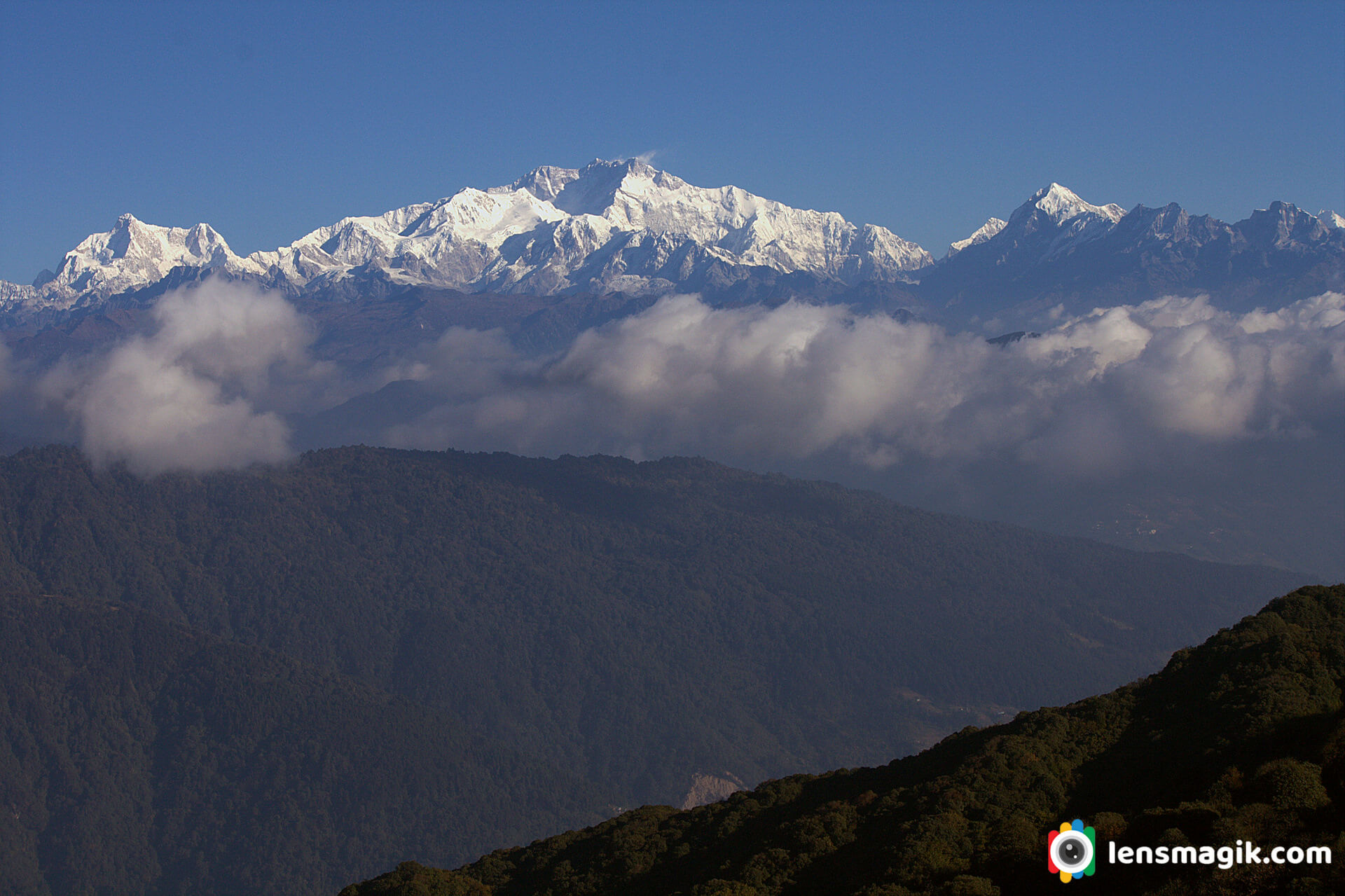
For climbing Mt. Kanchenjunga you can go from Nepal only because Indian Government has been closed Northeastern Sikkim route of Kanchenjunga since 2000. To See Mt. Kanchenjunga from India Sandakphu is the best place. You can go to Sandakphu via Trek or via Range Rover car hire at manebhanjan village. Nearest airport is Bagdogra or you can go to Kolkata and go for overnight train from Kolkata.
Gear used : Canon 1000 D body, Canon 18-55 mm lens, Canon 55-250 mm lens.